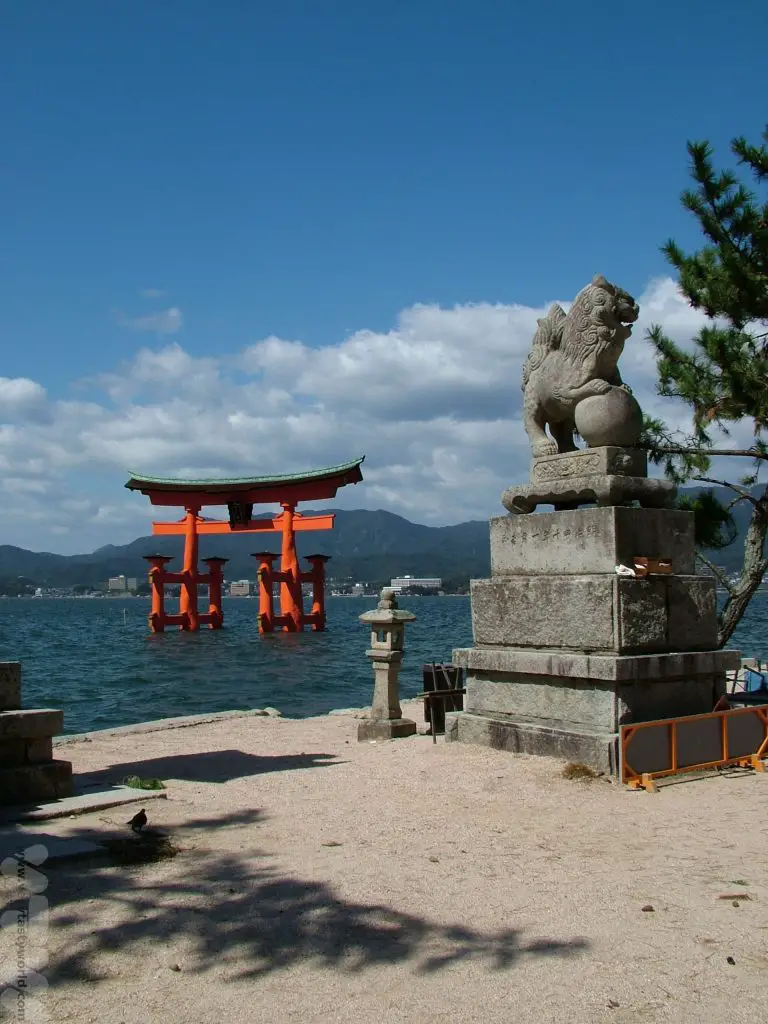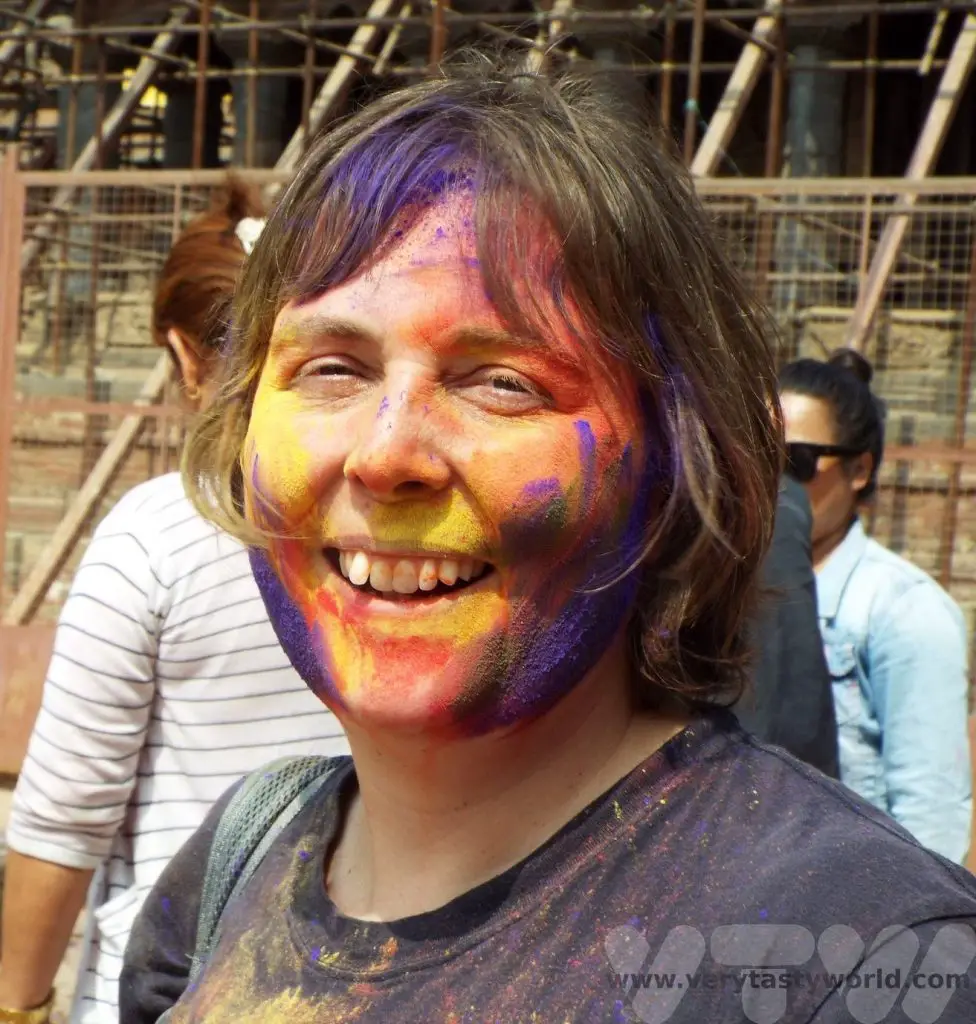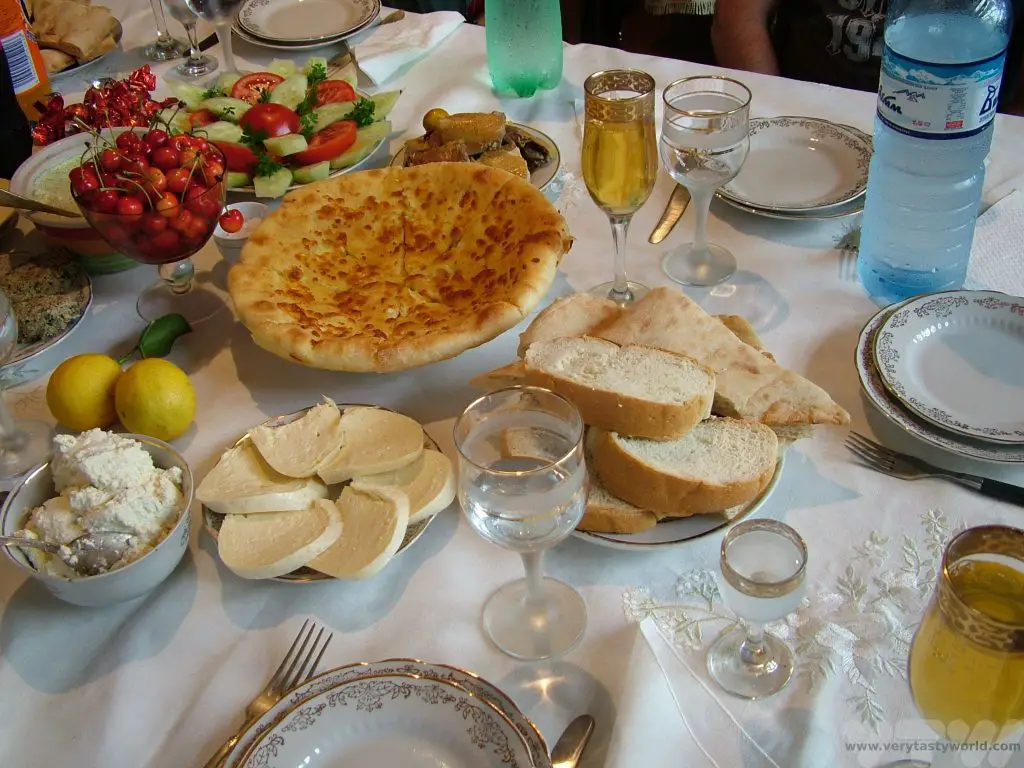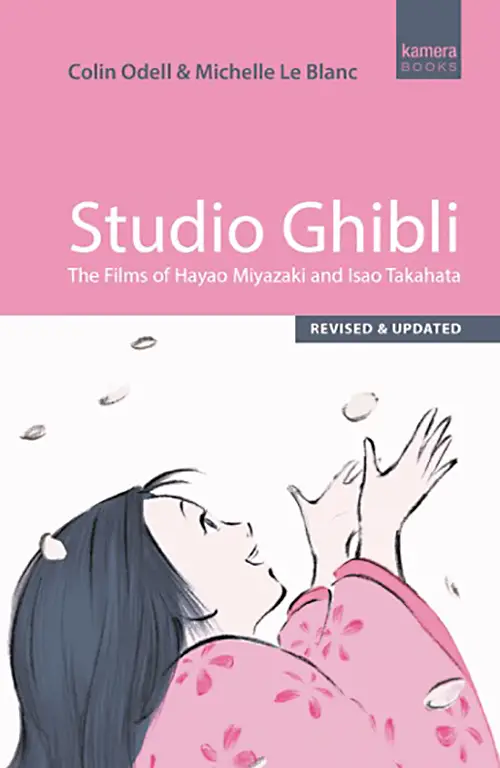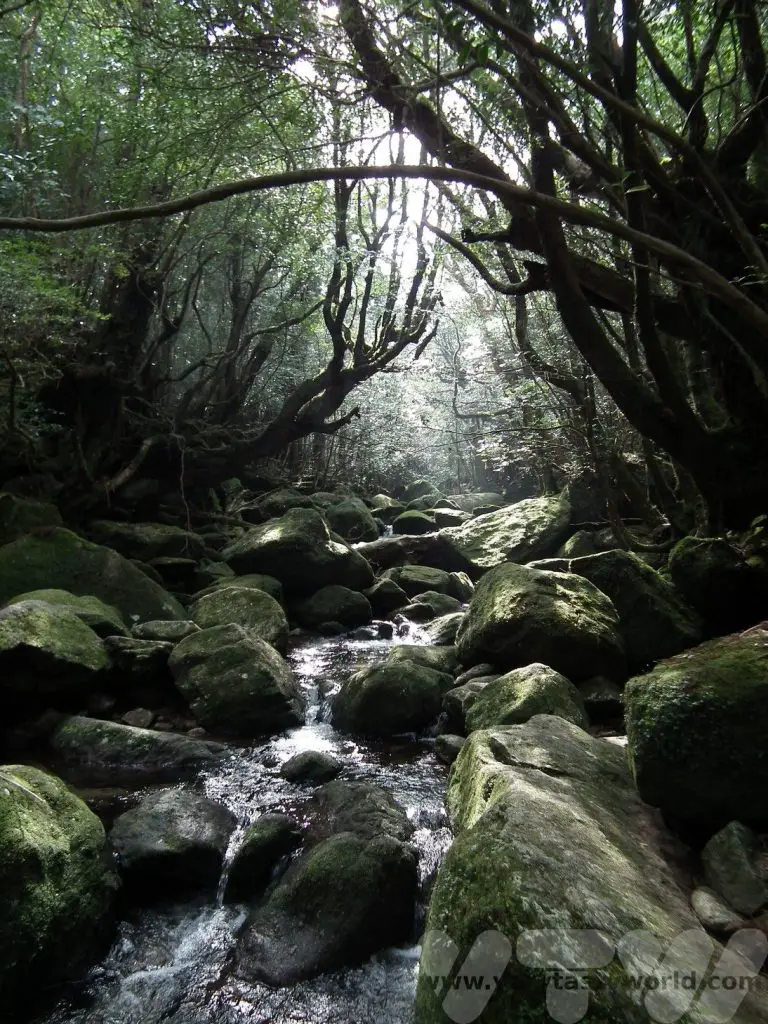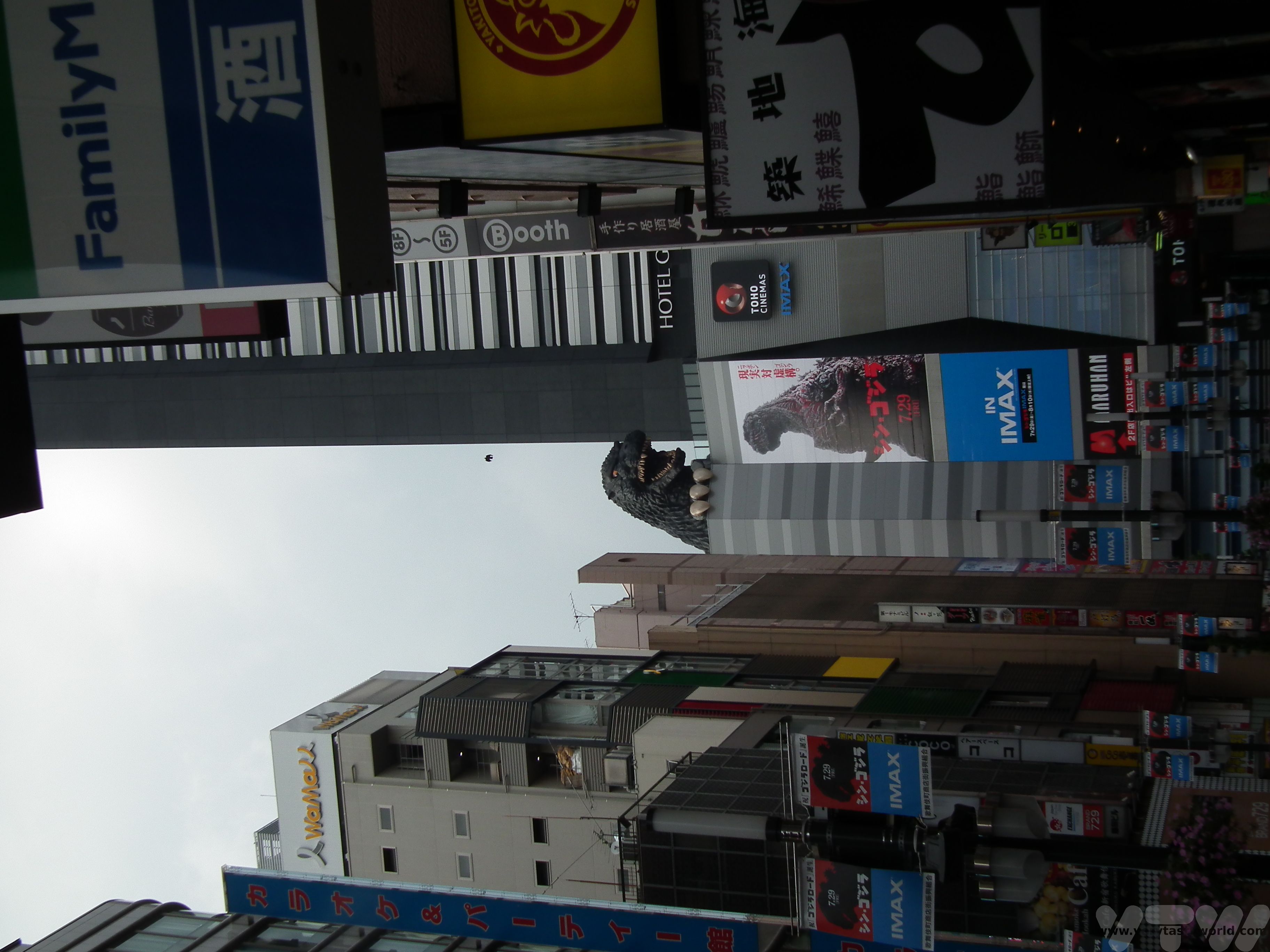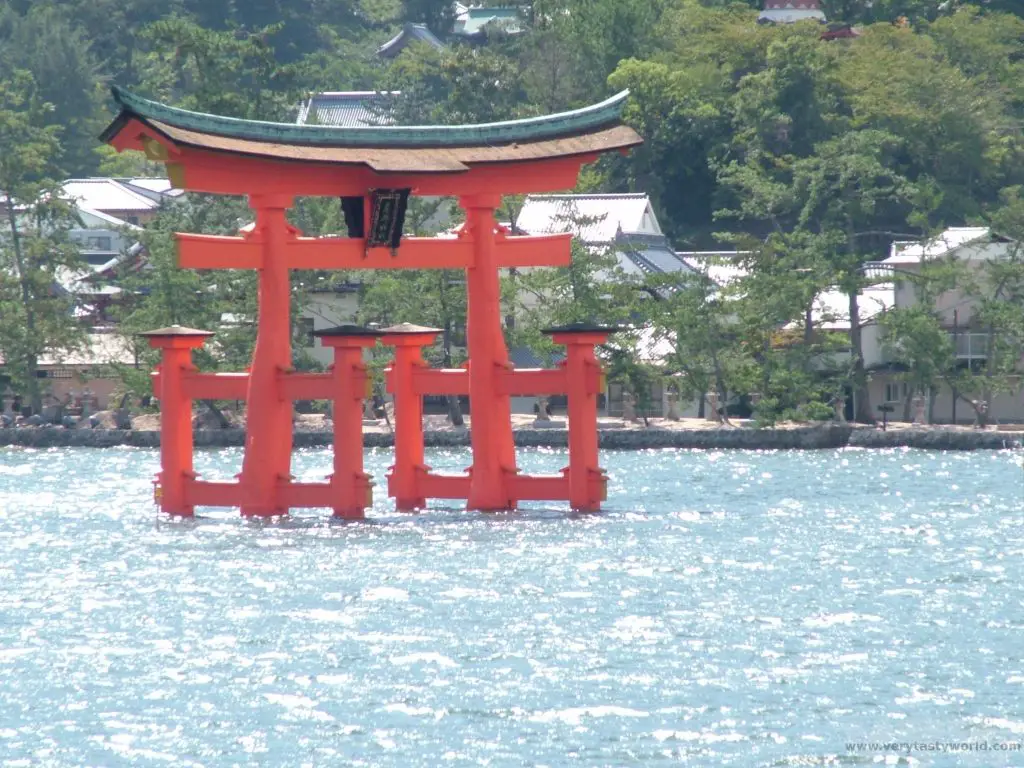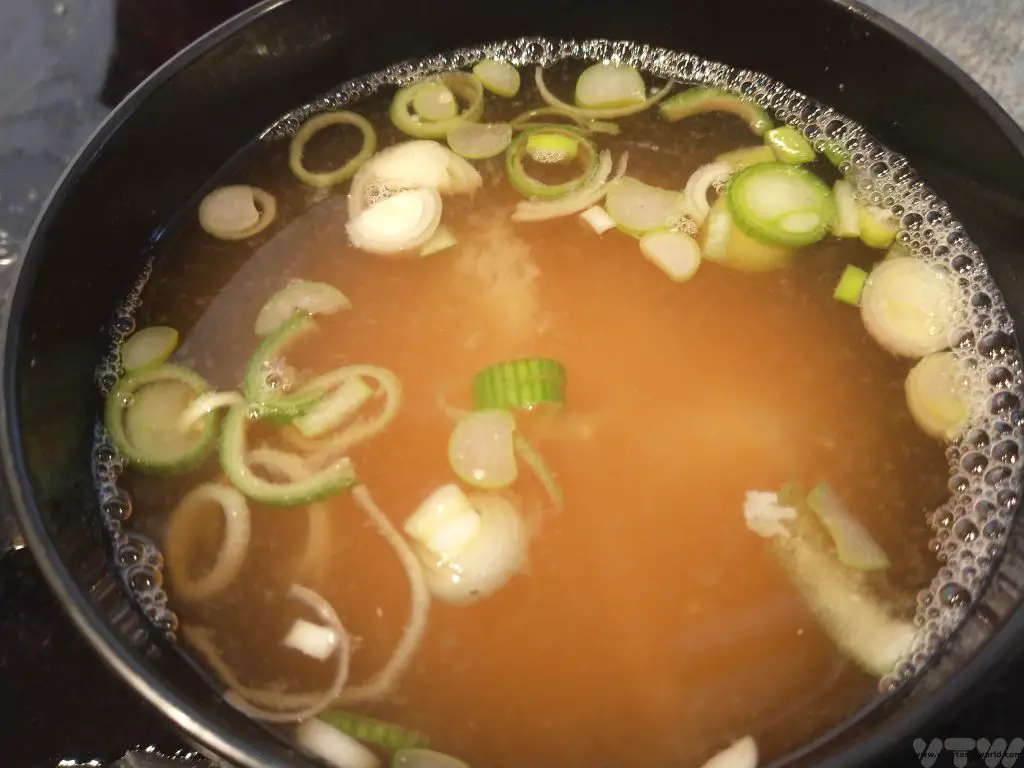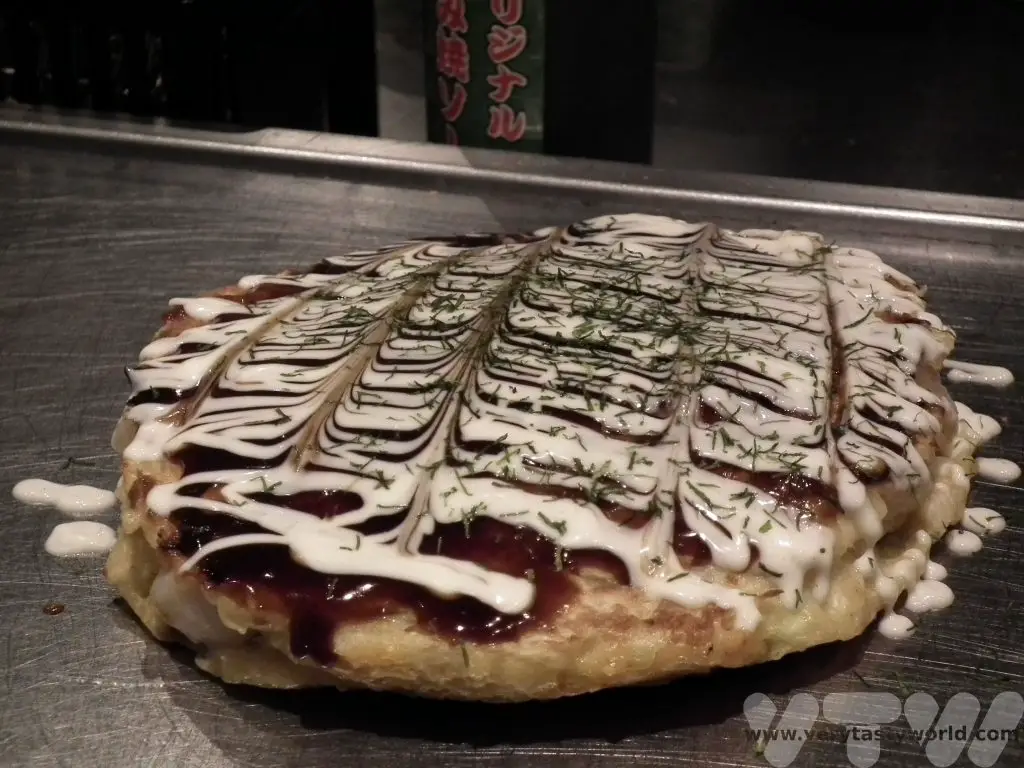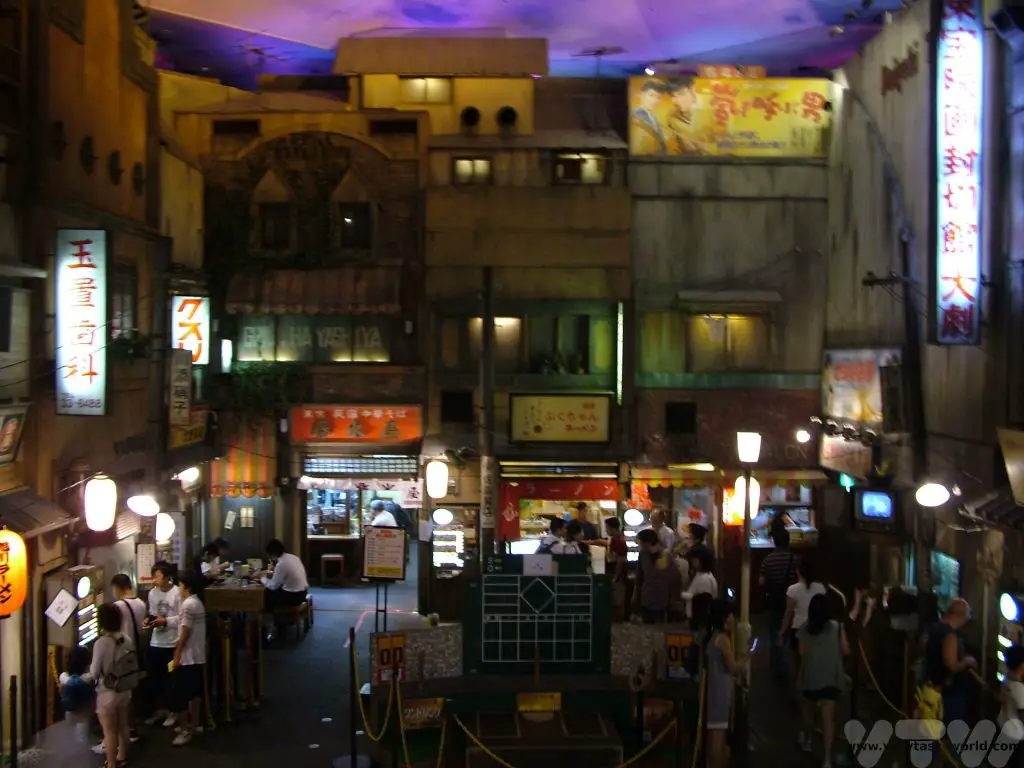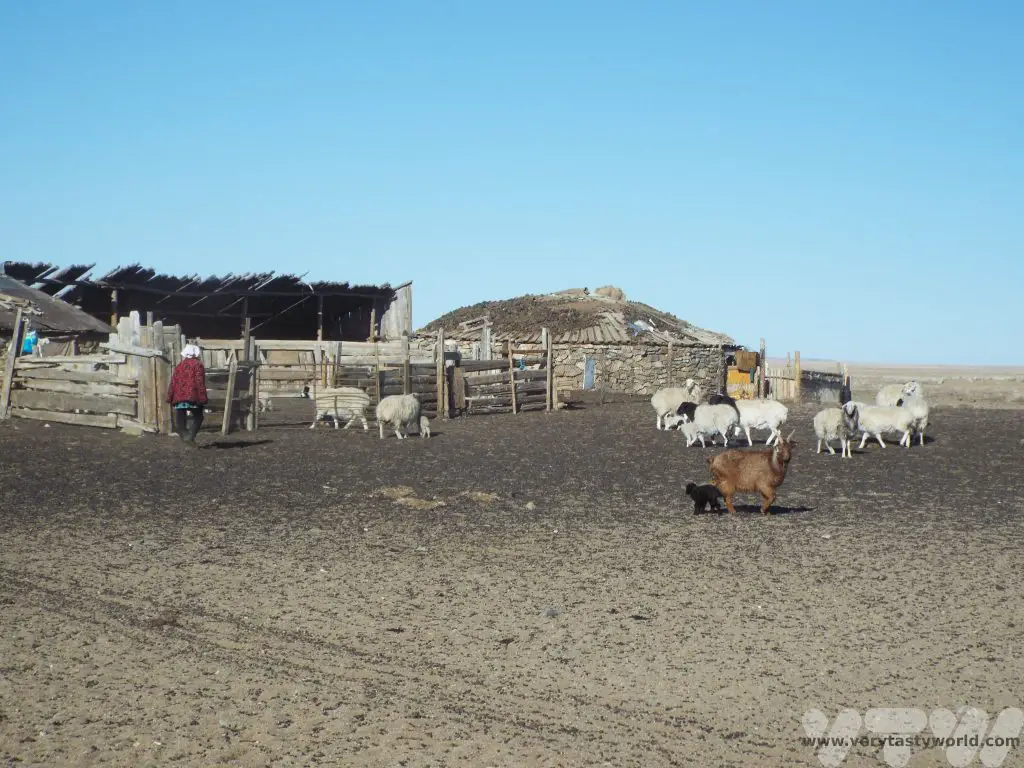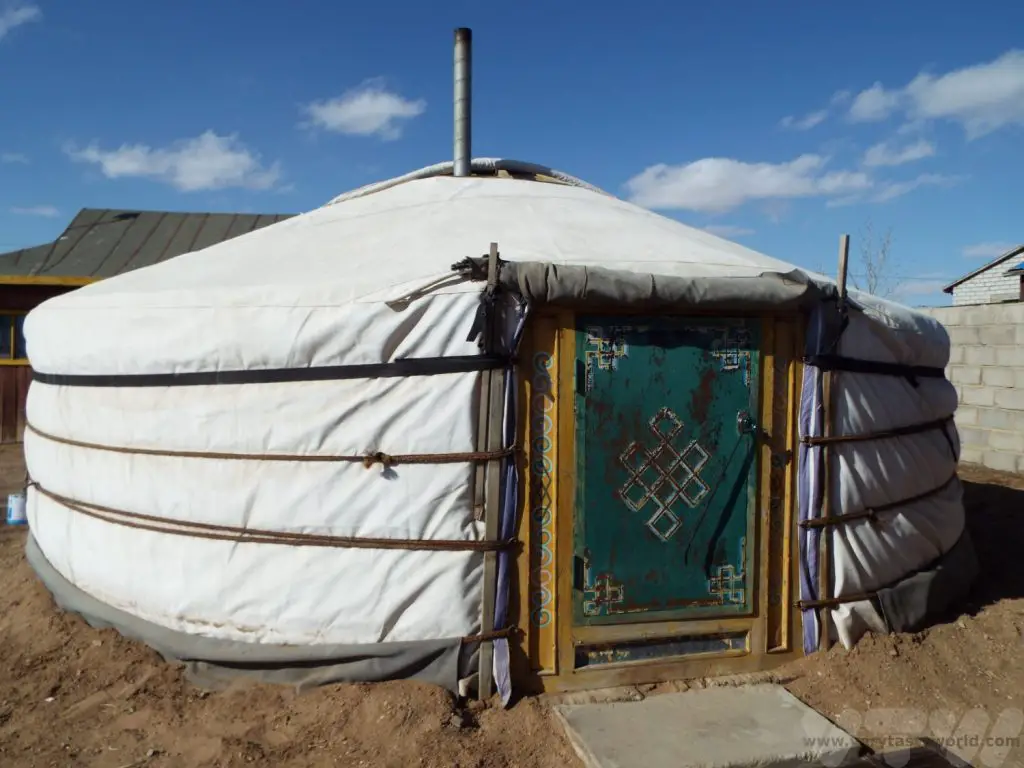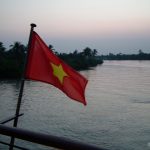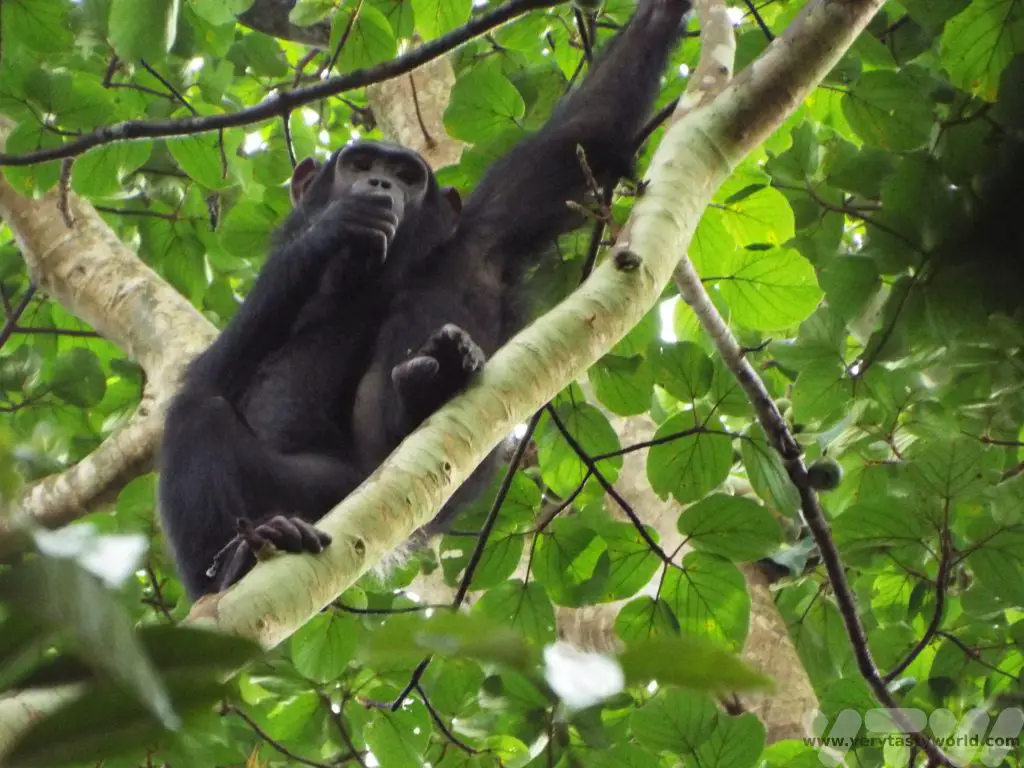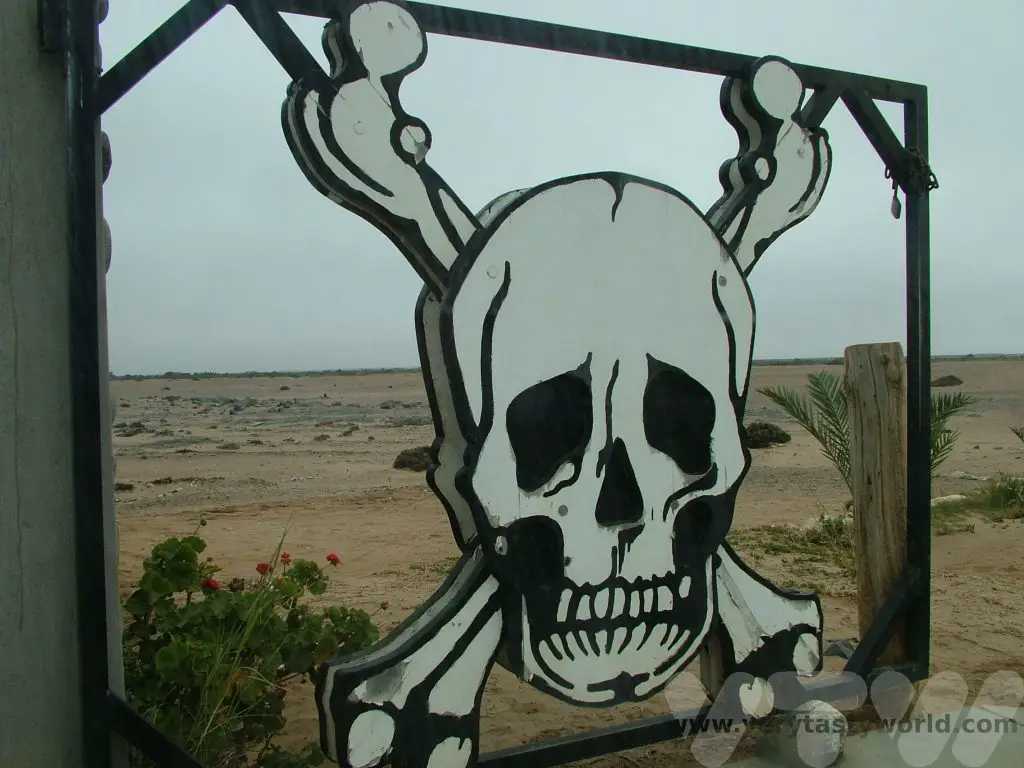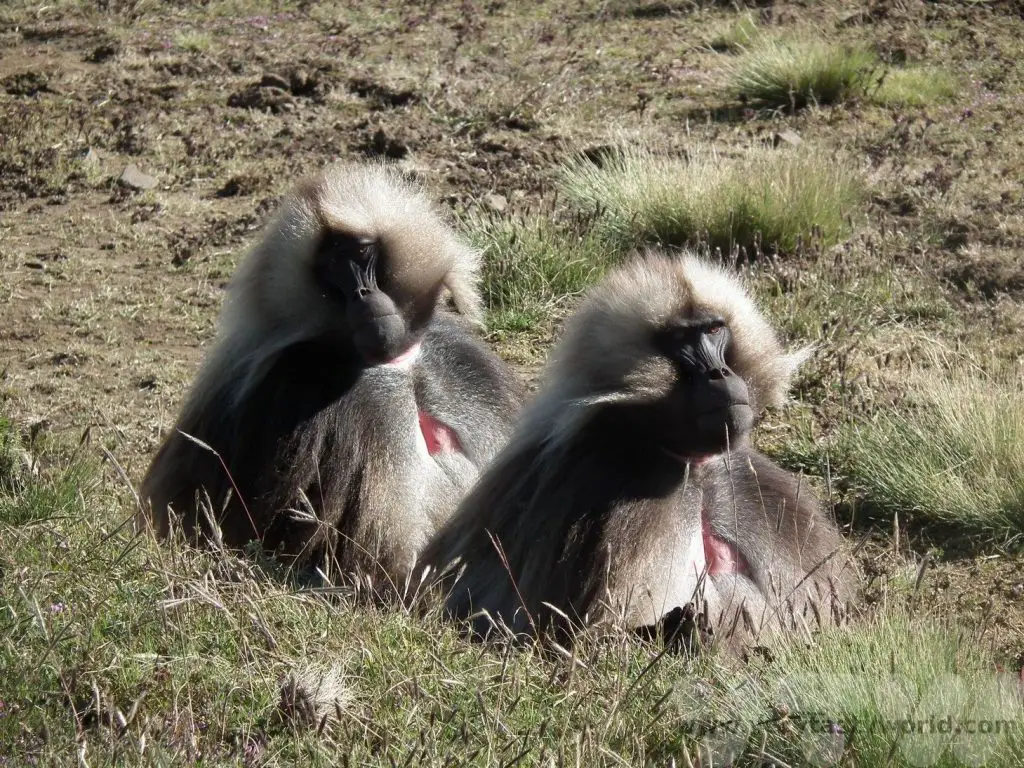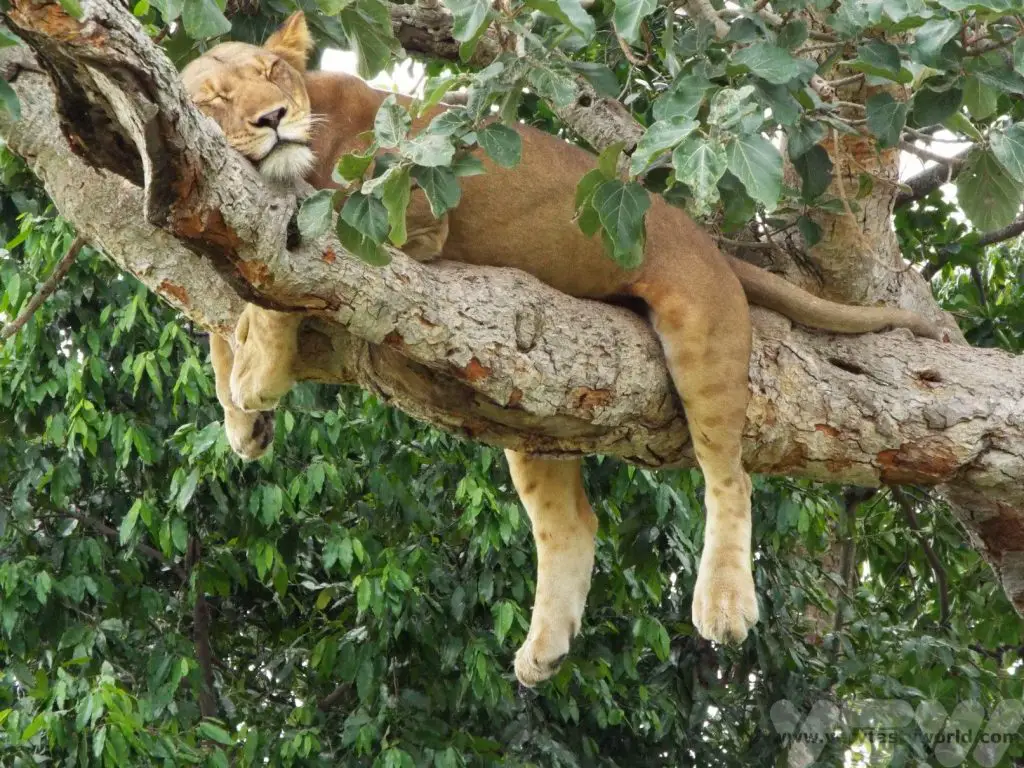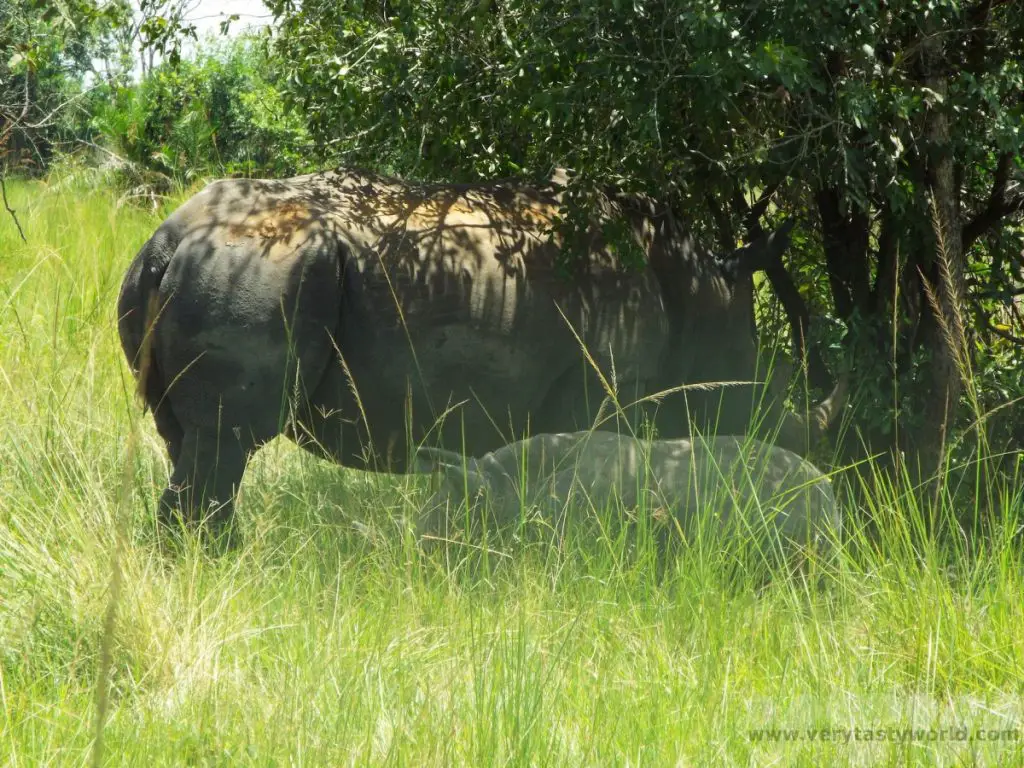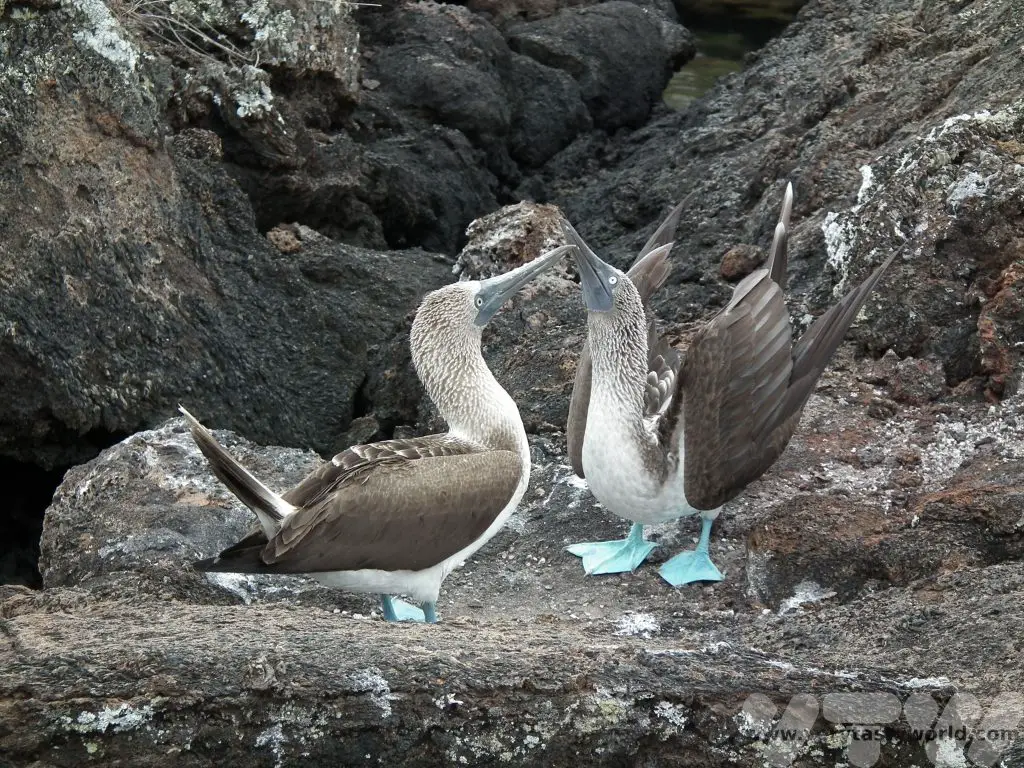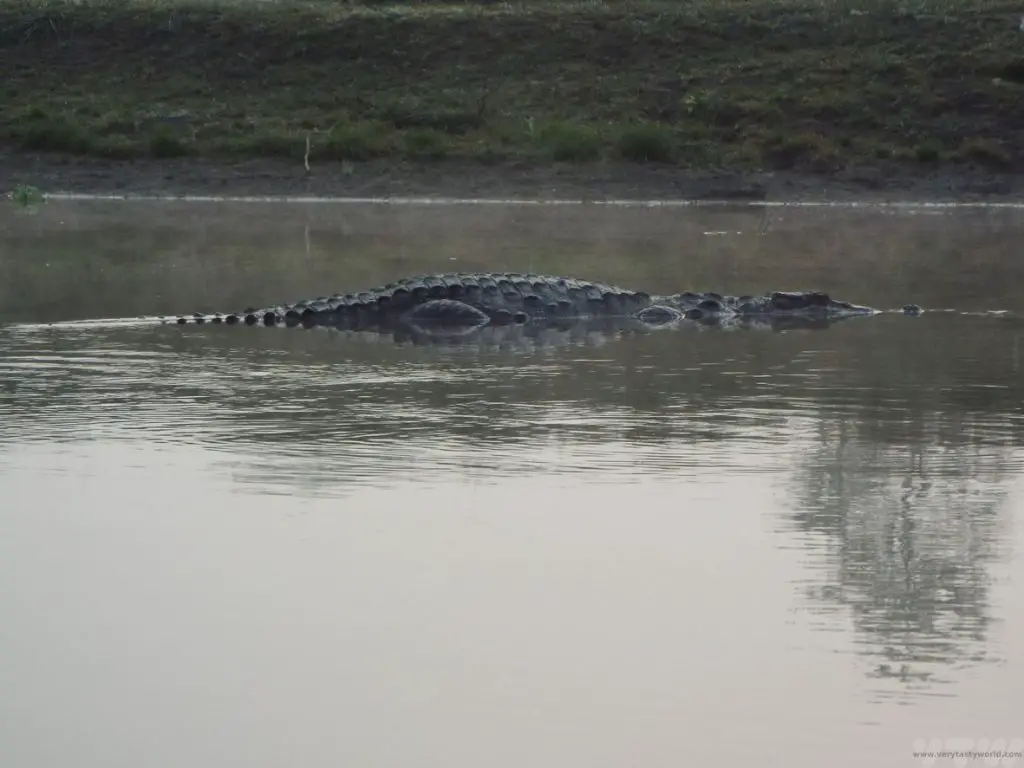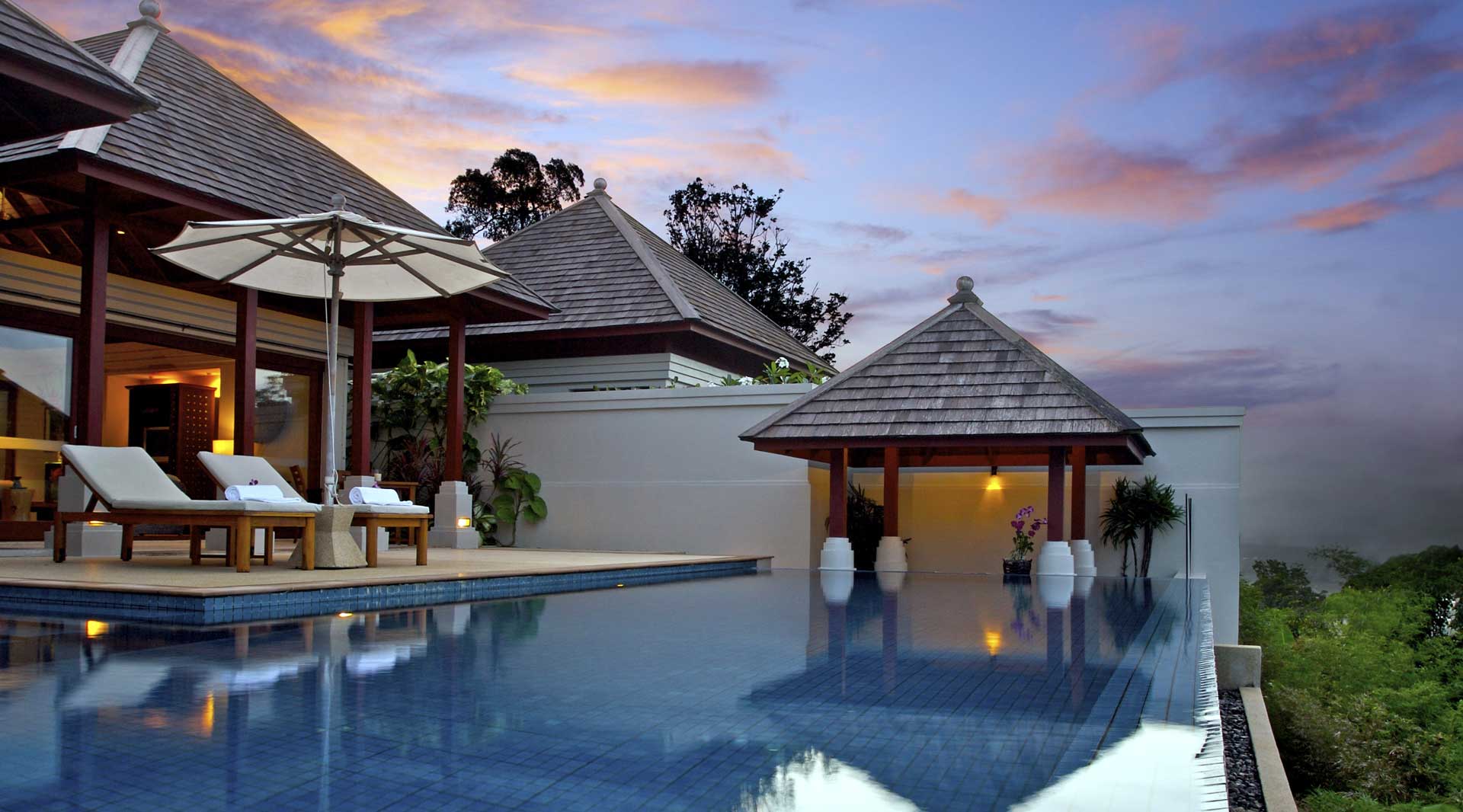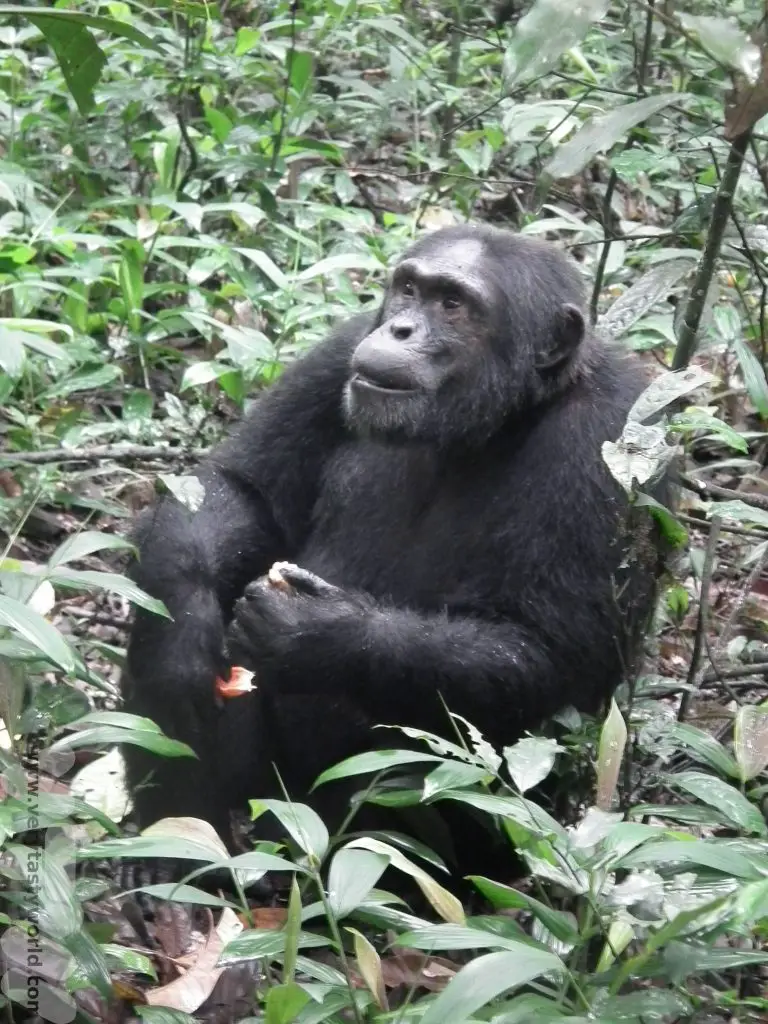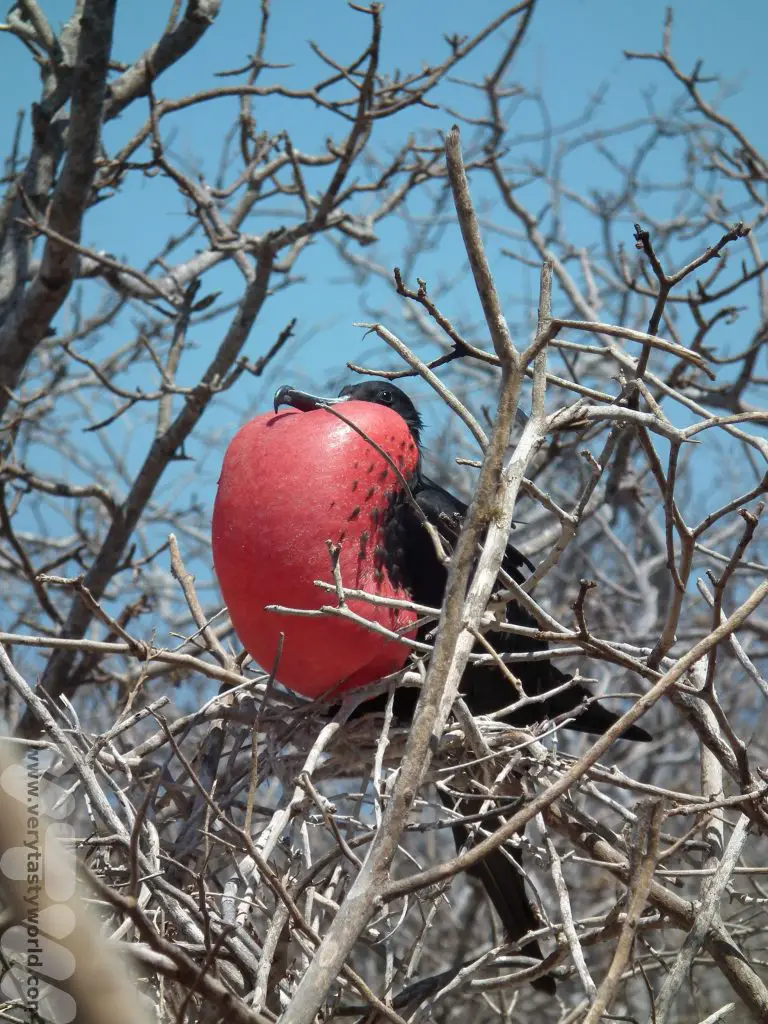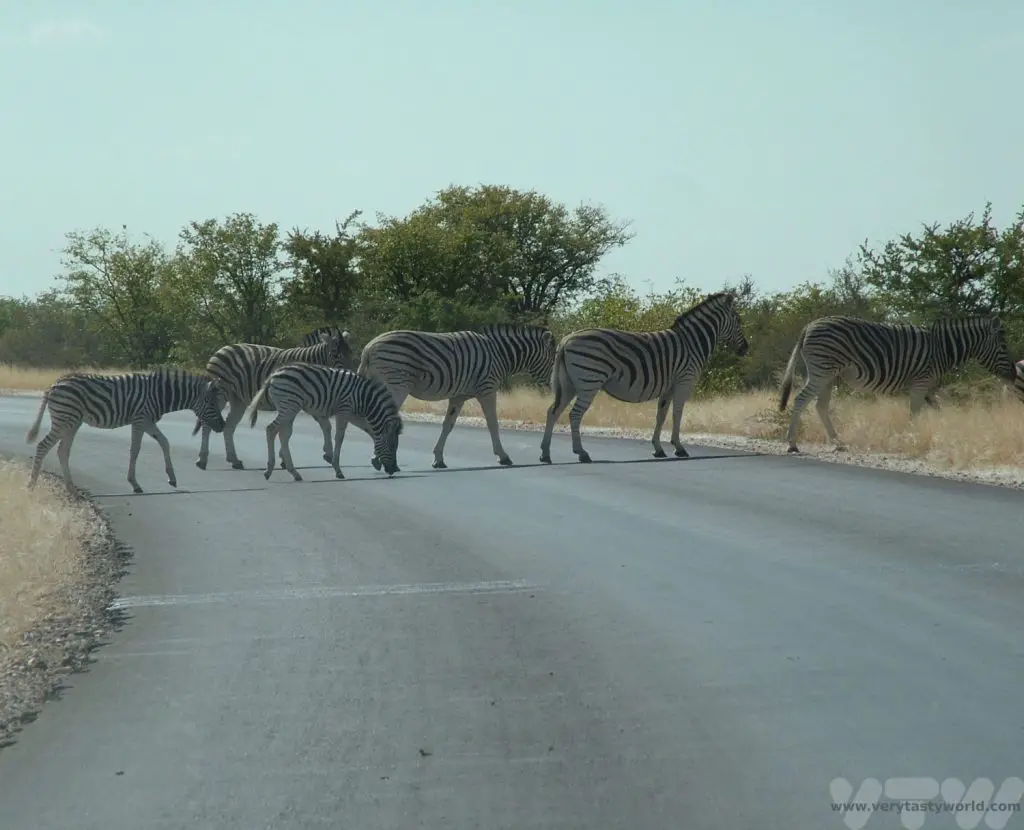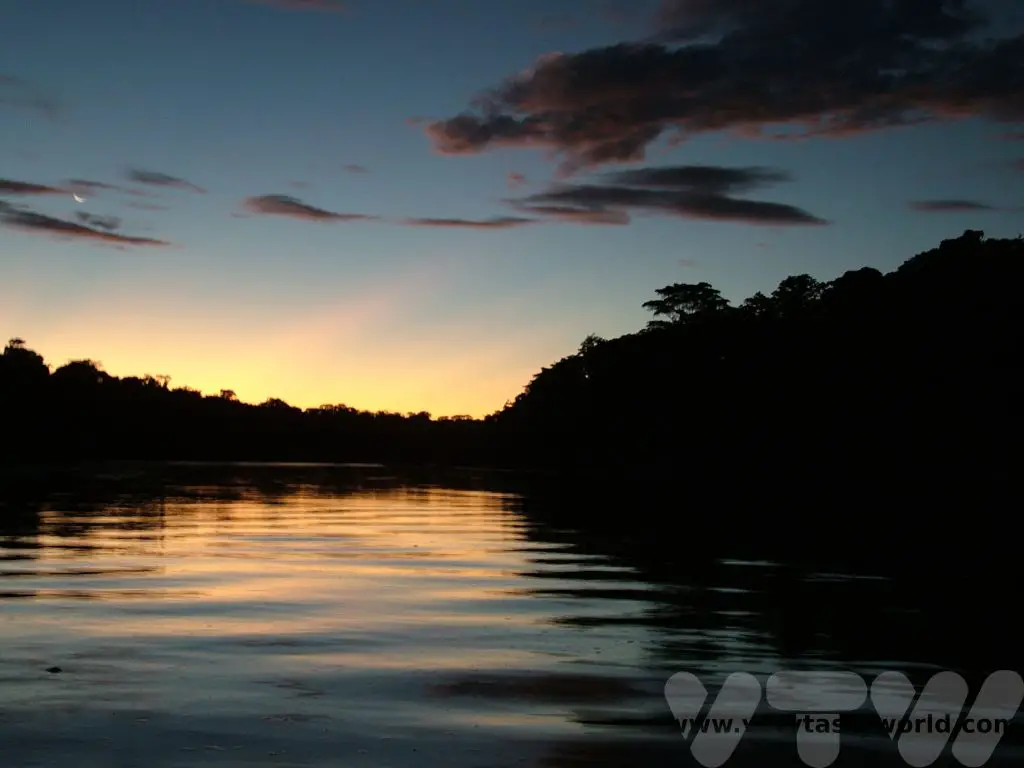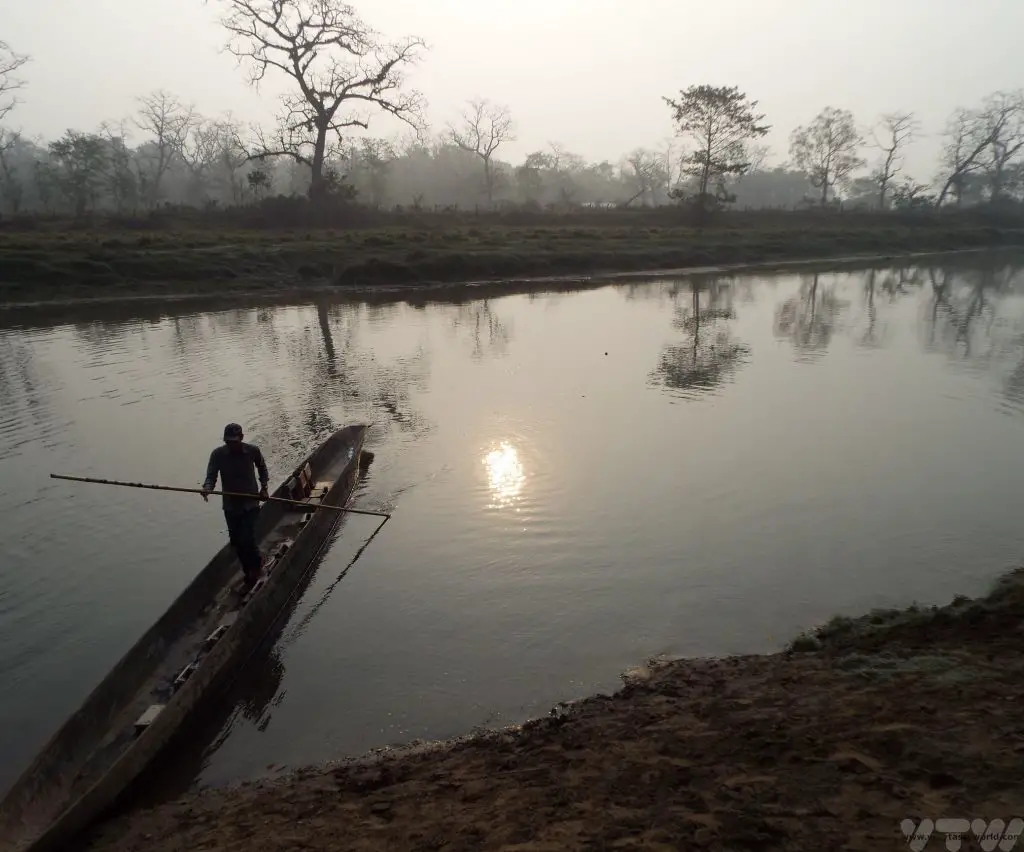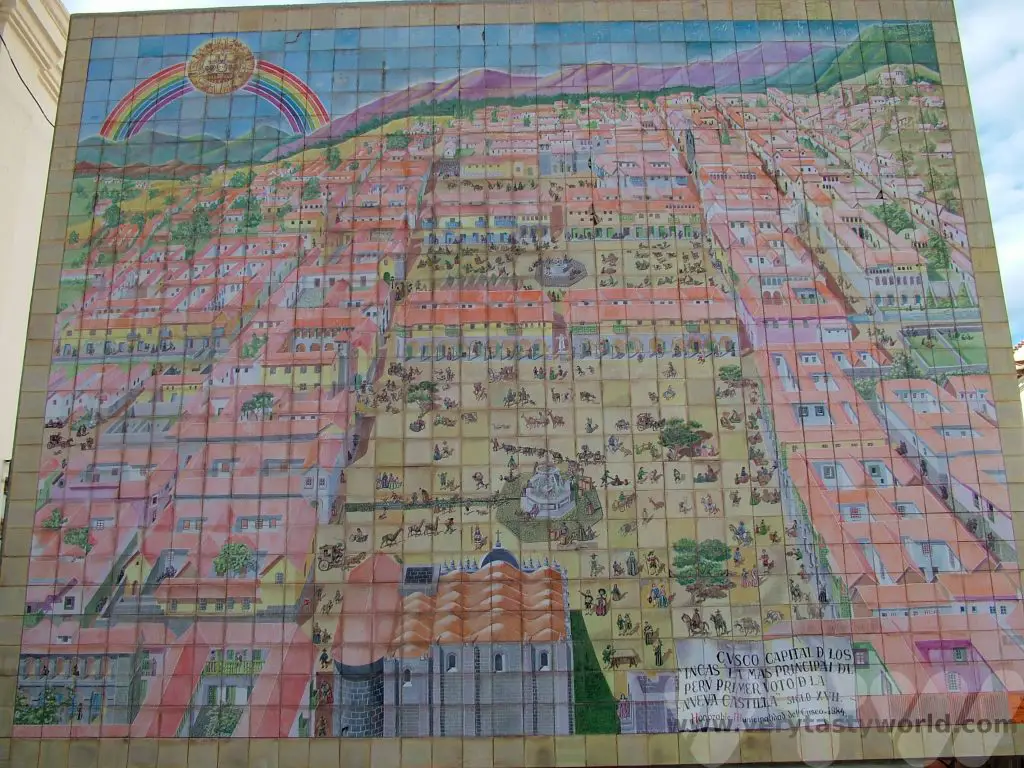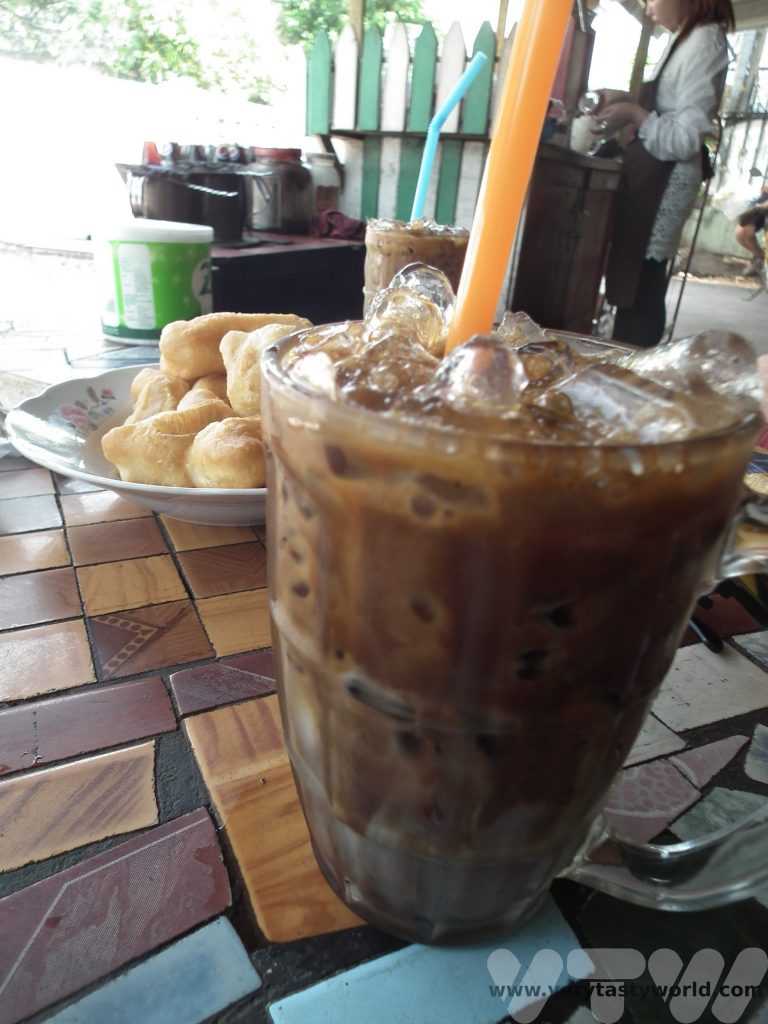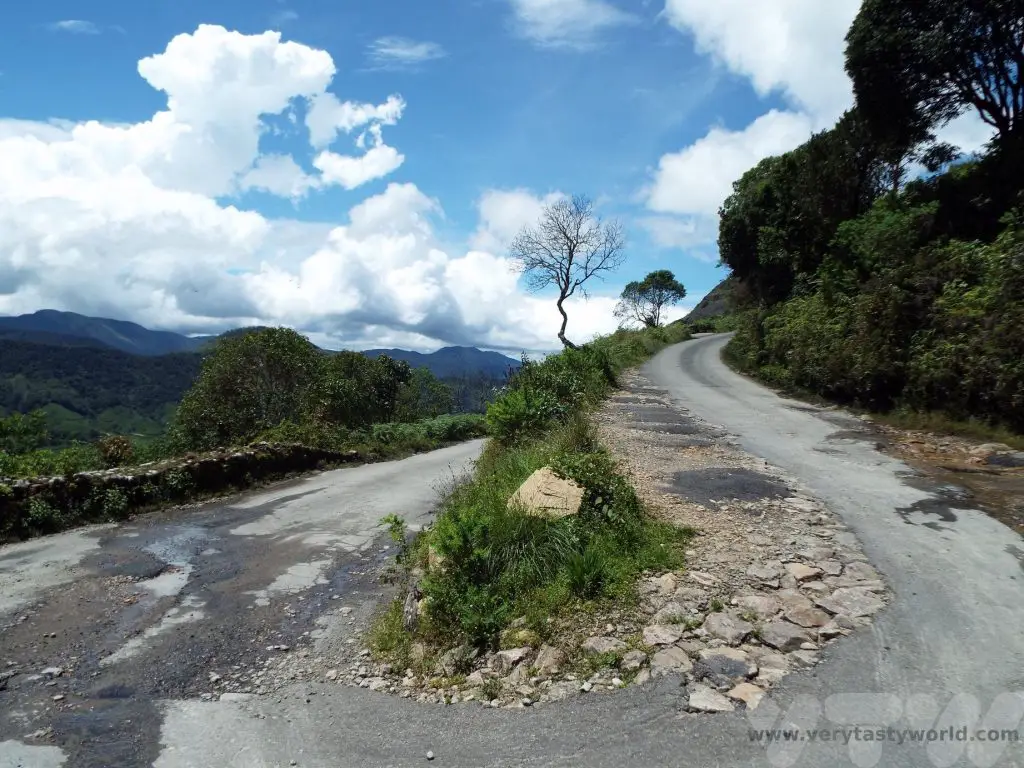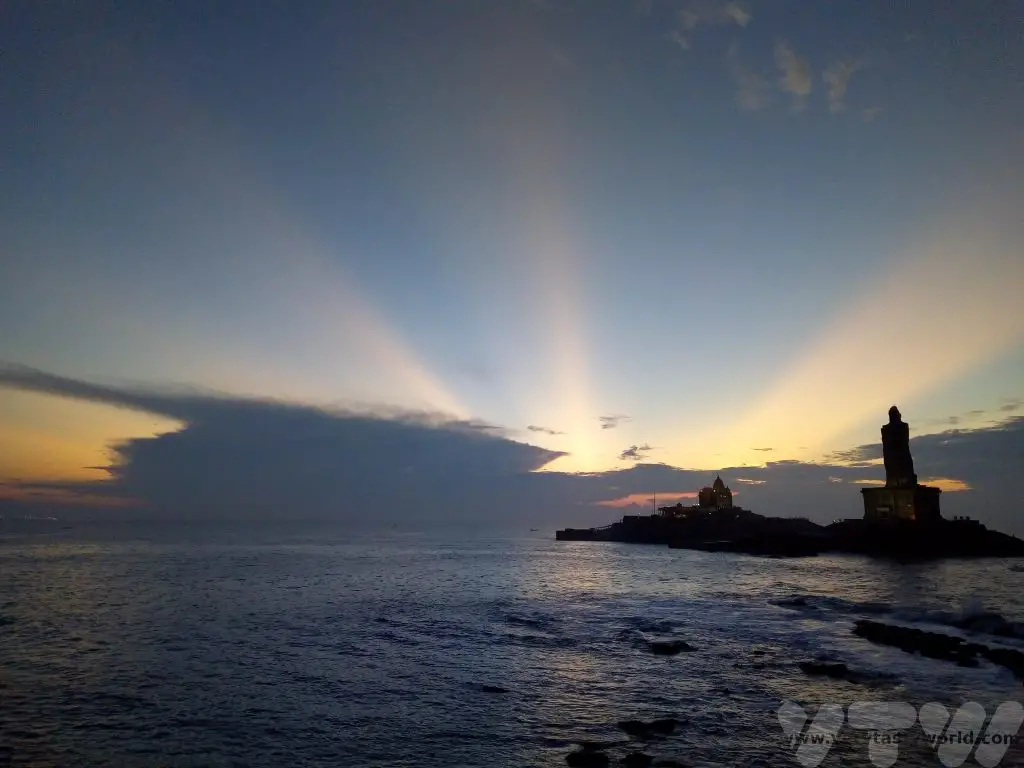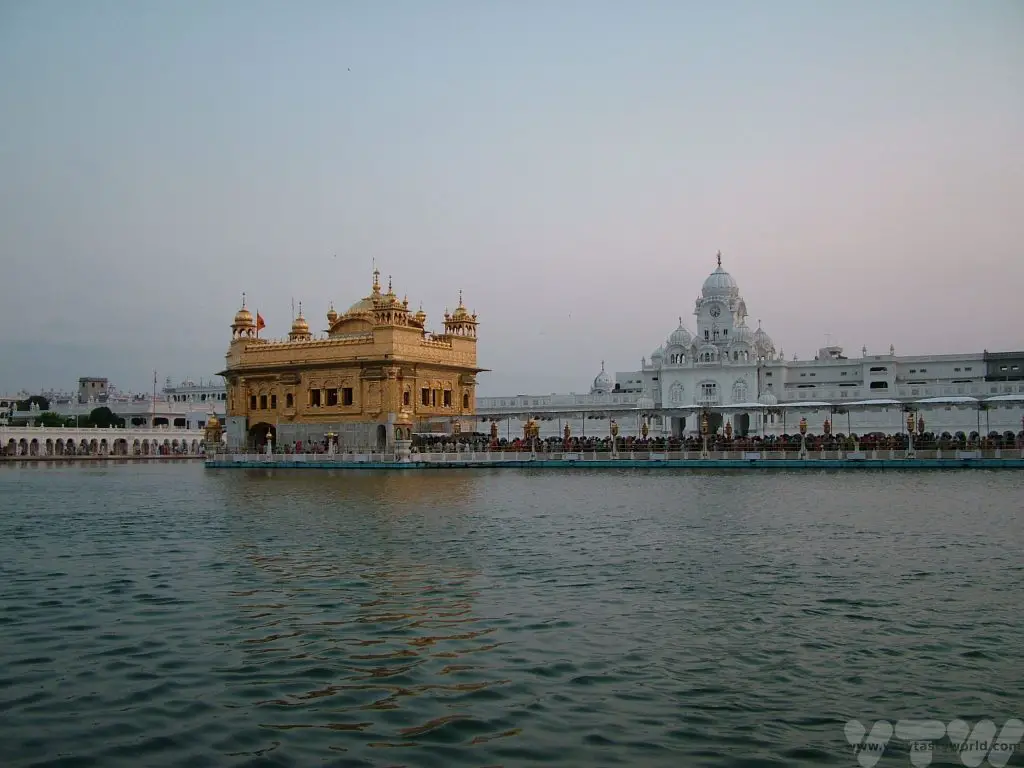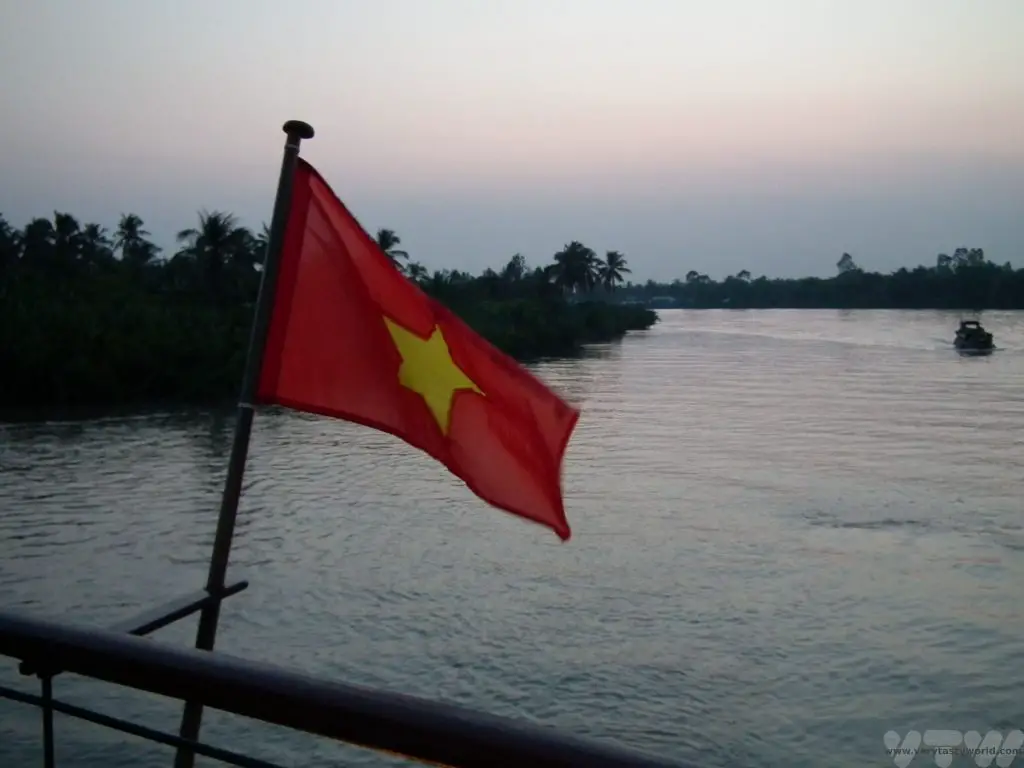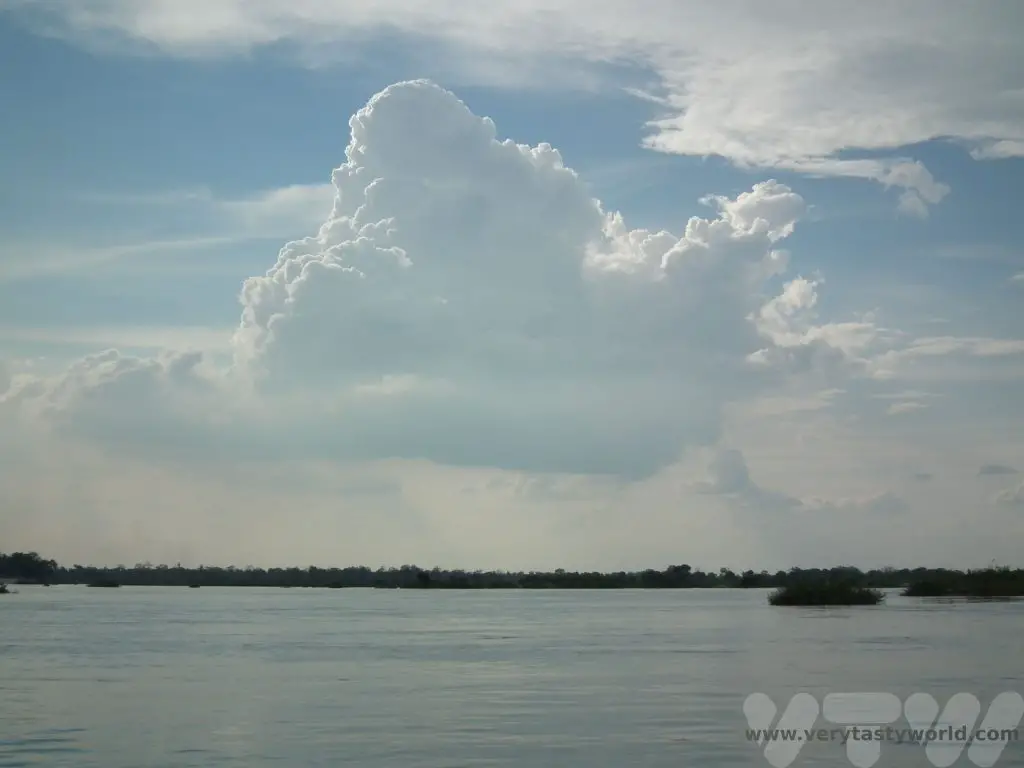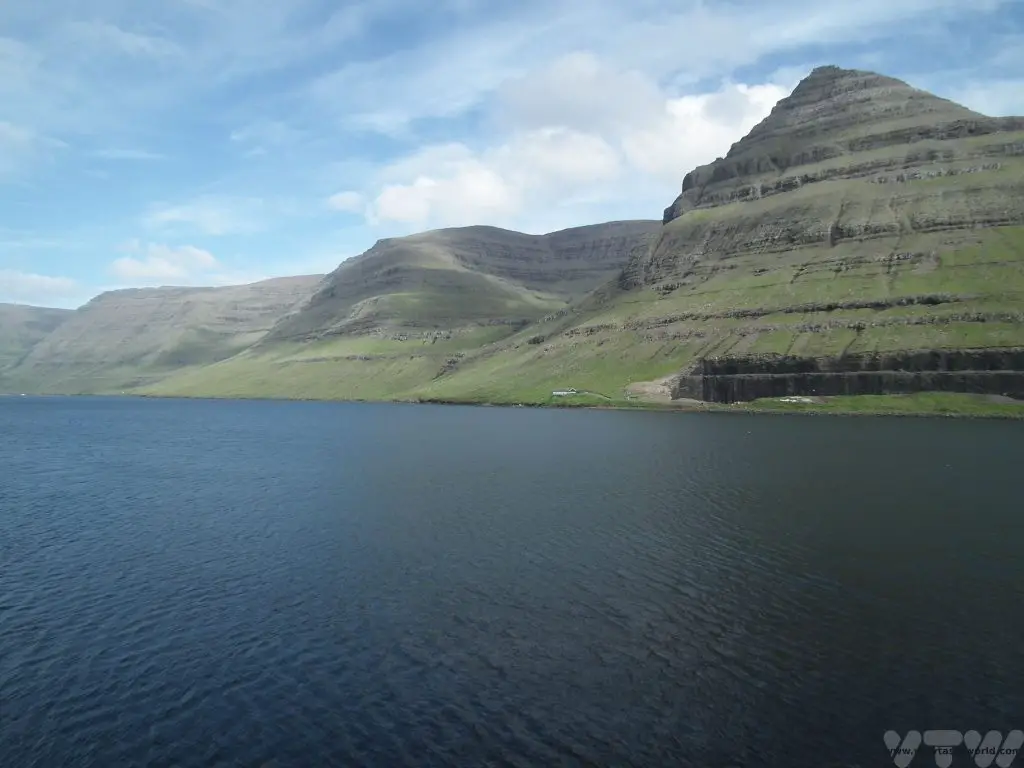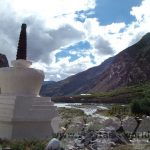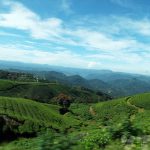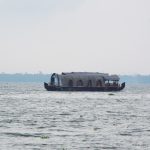Home » Travel Tips & Etiquette (Page 2)
Category Archives: Travel Tips & Etiquette
Japanese New Year Food and Traditions – New Year in Tokyo
Visiting in Tokyo in December is a great way of understanding Japanese New Year food and traditions, one of the country’s most important celebrations.
While Christmas Day is a normal working day in Japan (albeit one where it has become a custom to eat Kentucky Fried Chicken of all things – there’s a really interesting programme on the BBC World Service about this tradition), many businesses tend to close down for the new year period, usually from around the 28th December to the 4th January. Certainly most will be closed on the 1st to the 3rd January but some businesses may close for longer in order that proprietors and employees can spend time with their families. This means that if you are sightseeing, some ryokan may not be receiving guests and some museums and attractions will be closed.
We were in Japan around new year 2019-2020, our last trip before the world changed so dramatically.
See the Lights in Shibuya
Shibuya is a vibrant, bustling district in Tokyo which has loads of shops and restaurants. Its most famous features are found close to the station.
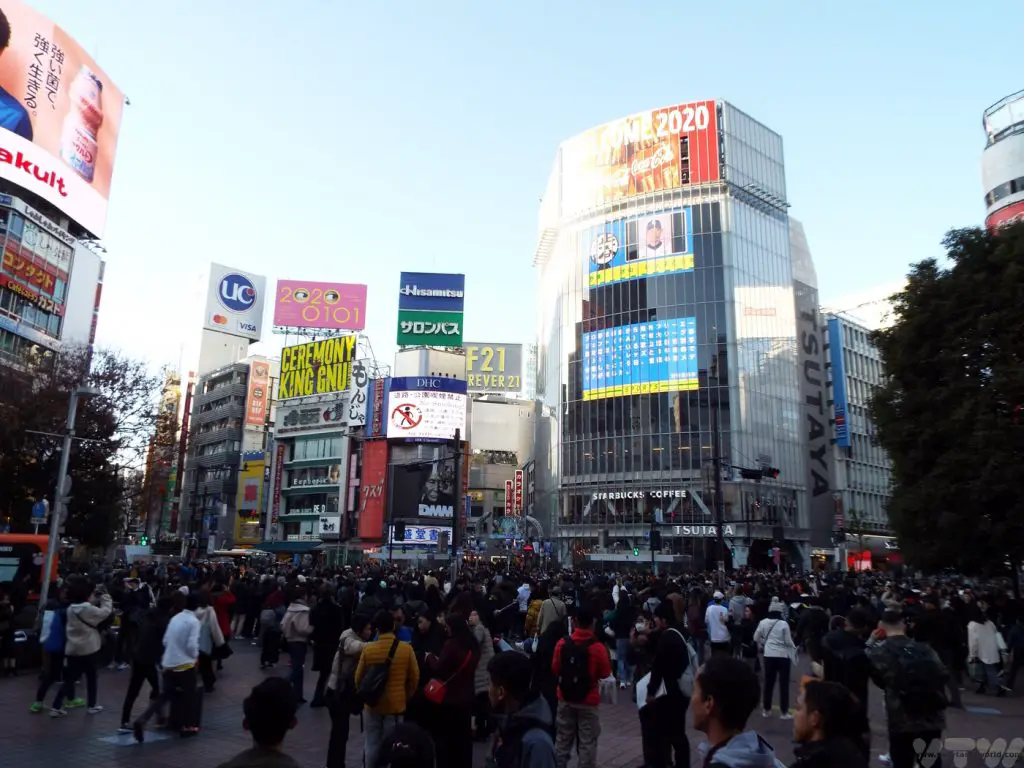
Its road crossing is possibly one of the best known in the world as it has featured in numerous films and adverts.
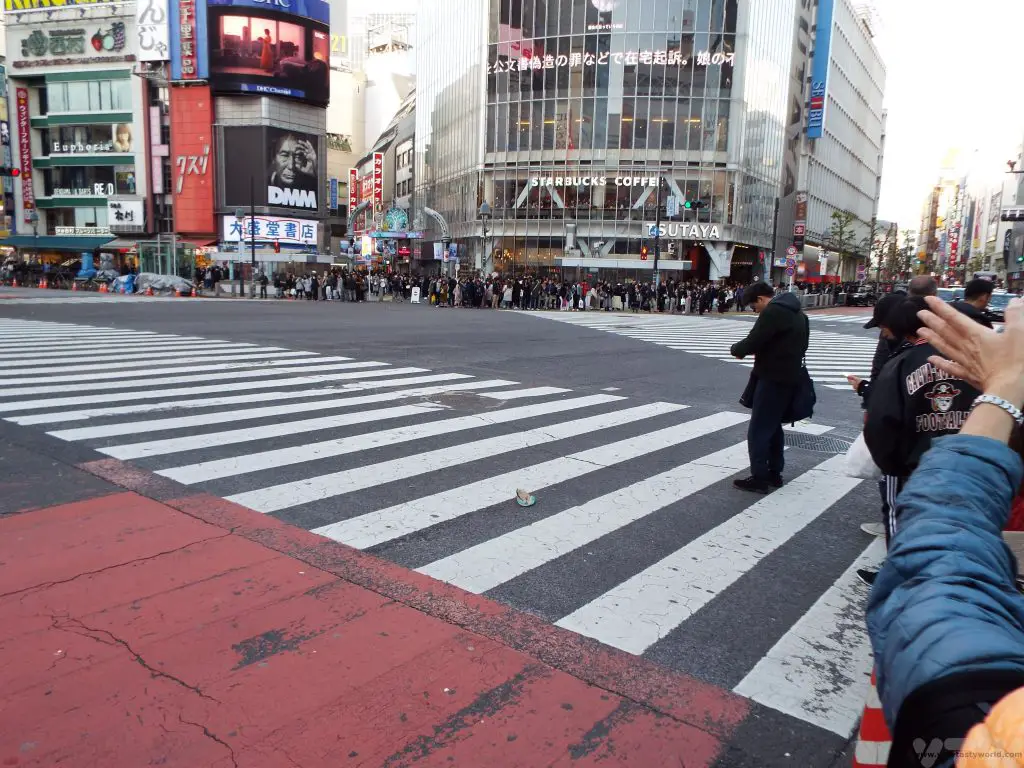
Apparently its nickname is ‘scramble’ because at its busiest time over 2,500 people can cross the road in the two minutes that the pedestrian lights allow.
As new year approaches, the crossing was the place to join the celebrations for those wanting a party. We visited in the afternoon as preparations were underway and also got to see some of the lights in the surrounding area.
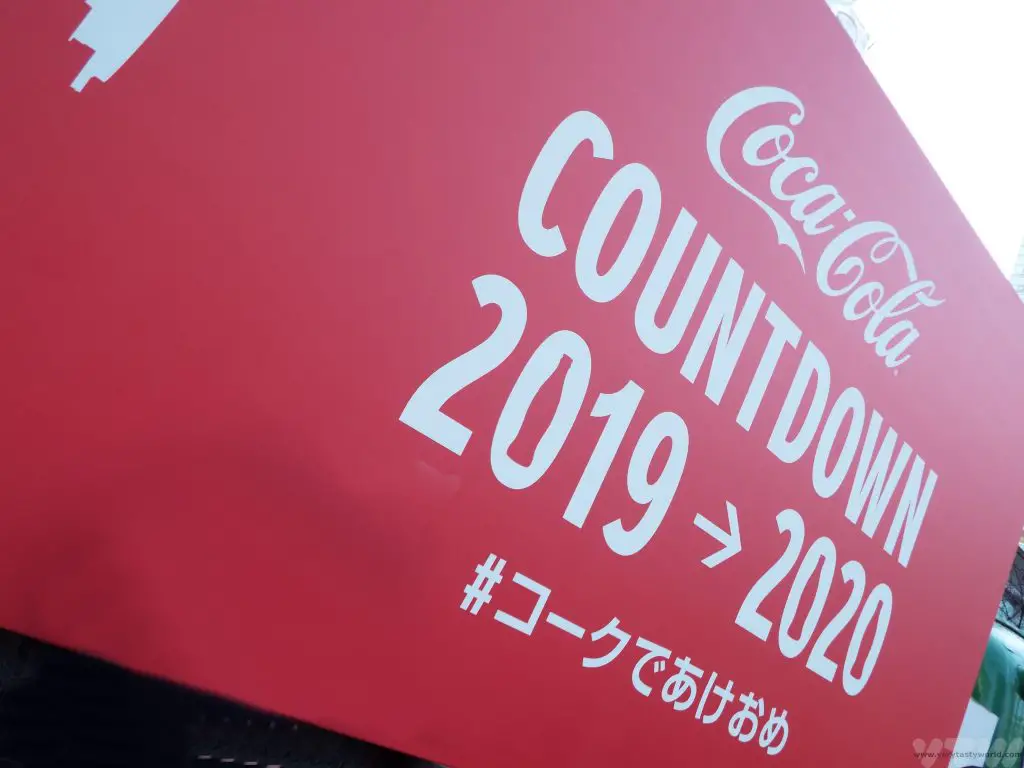
The statue of Hachiko is a famous Shibuya landmark. Hachiko was an Akito dog owned by a professor in the 1920s. The professor used to go to work and each day his dog would wait for him to return at the station in the evening. The professor died in 1925 but Hachiko would still wait for him every evening for a decade until his own death. It’s a very moving story of canine loyalty and a statue was erected to the dog outside the station in 1934. Of course, he is dressed for the occasion at this time of year.
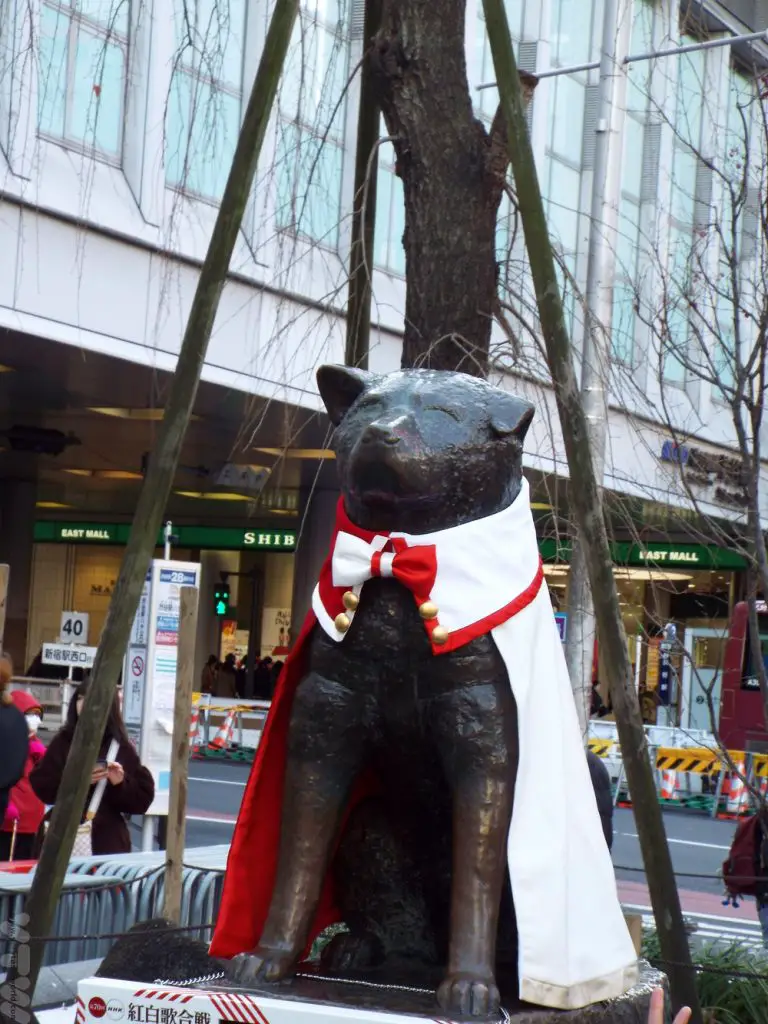
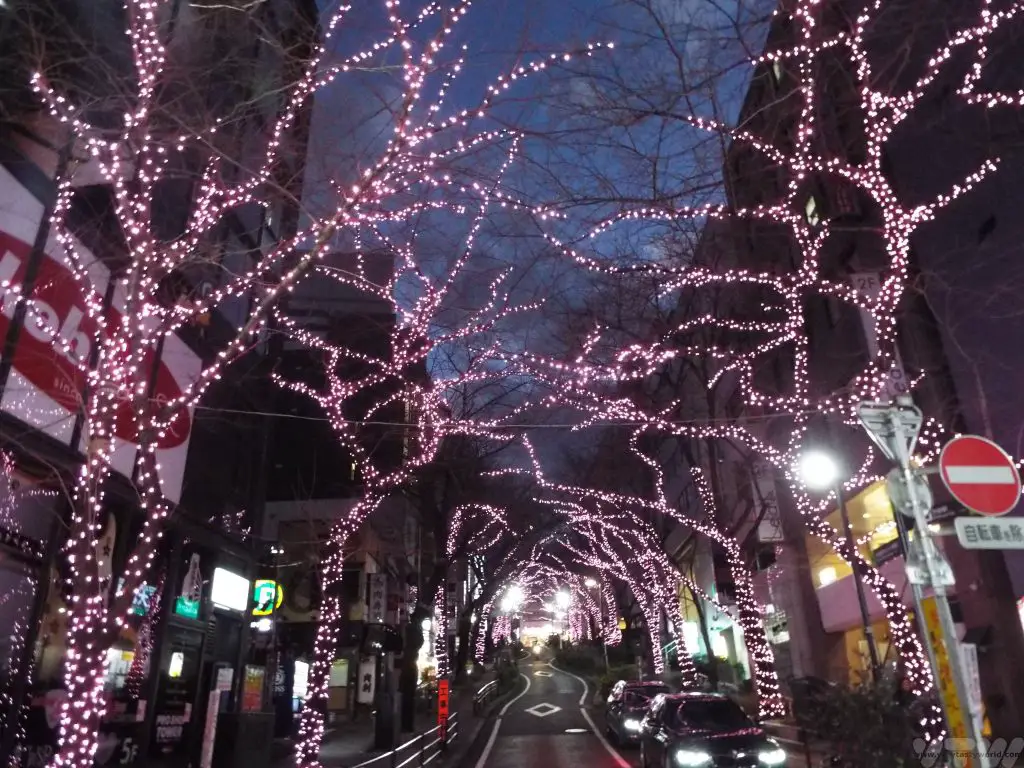
Japanese New Year Food –Noodles in Shinjuku
One of the traditional things to do on New Year’s Eve is to eat Toshikoshi Soba – year-end noodles. The principle is that long noodles equate to a long life, so they represent longevity and good luck. This is a popular tradition and soba shops are likely to be busy on New Year’s Eve. We had a wonderful meal with a dear friend at lunchtime at the food hall in Takashimaya Times Square, the vast department store just south of Shinjuku station, which has a variety of wonderful restaurants located on the top two floors. We chose the soba restaurant there. We had to queue for around 40 minutes which wasn’t a problem – it had such a nice atmosphere.
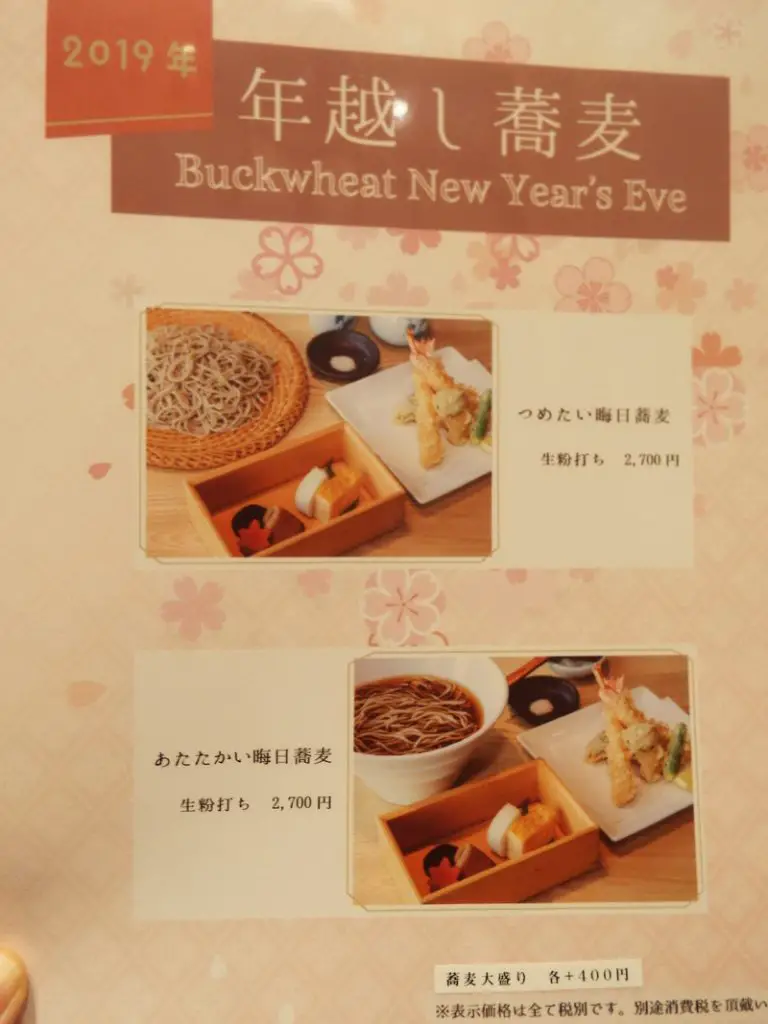
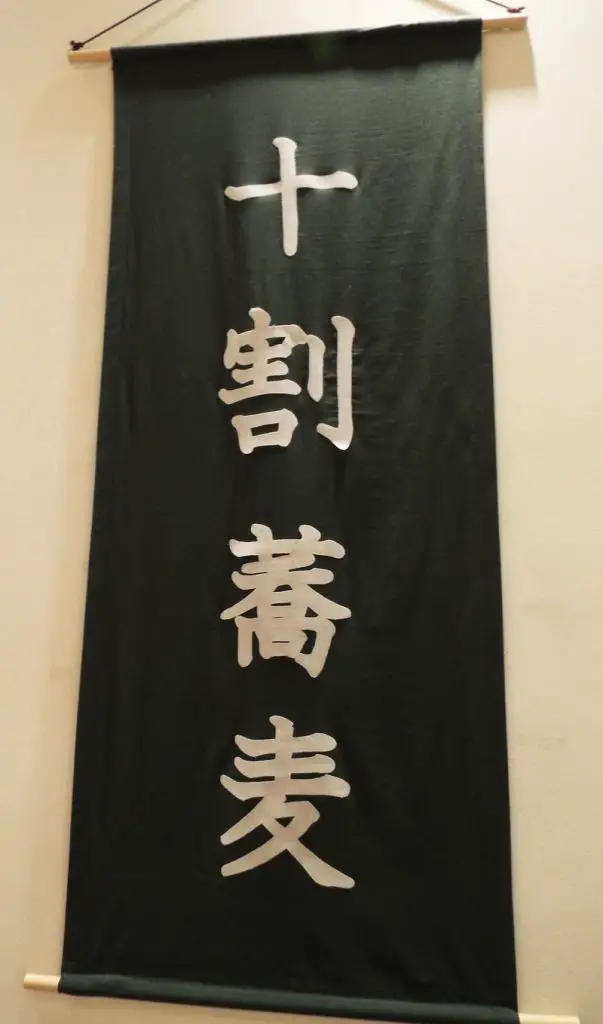
Once seated you are not rushed to finish your meal, even though there will be people waiting outside. If you want to dine on noodles in the evening your wait may be much longer – we saw very long queues in Shinjuku later that night.
We ordered the set menu which came with tempura and other treats. It wasn’t cheap but it wasn’t bank-breakingly expensive and the entire meal was simply divine.
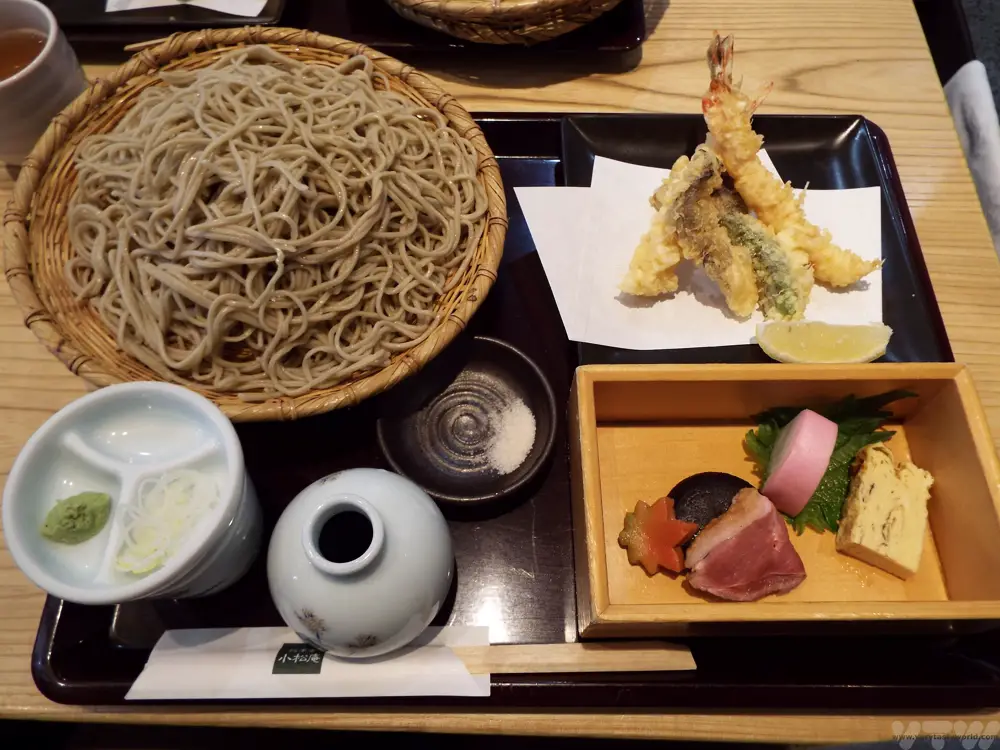
The noodles are presented on a traditional platter and appear to arrive in the most enormous mound but, on closer inspection, actually have been cleverly placed on a conical tray.
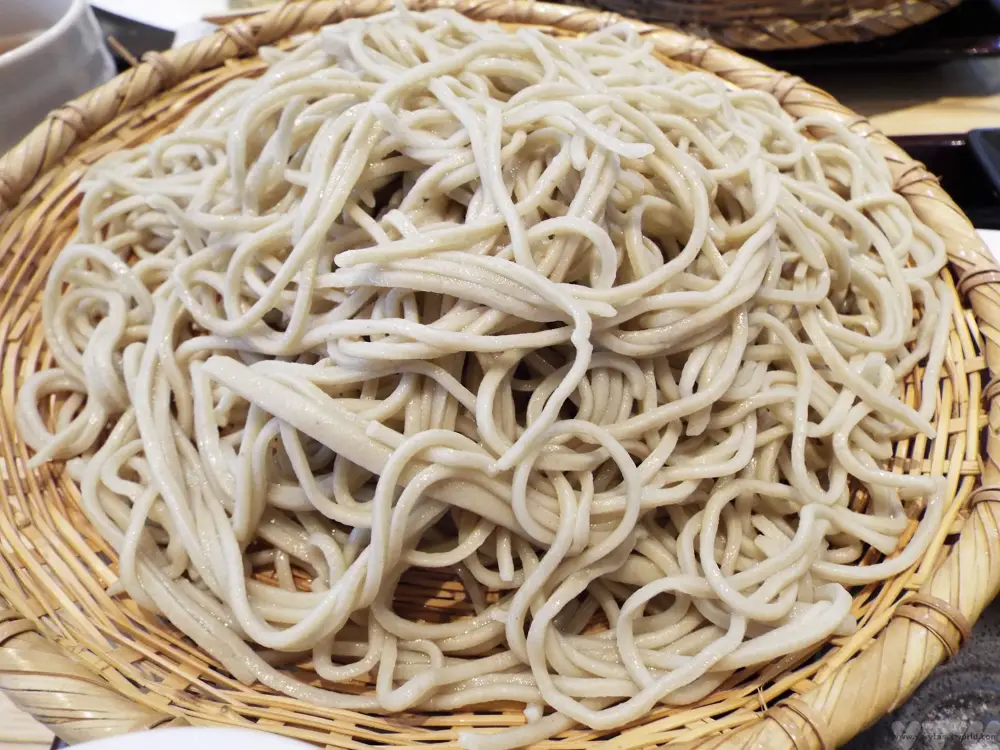
Soba are buckwheat noodles that can be served hot or cold – on a winter’s day, hot was definitely the best way to enjoy them.
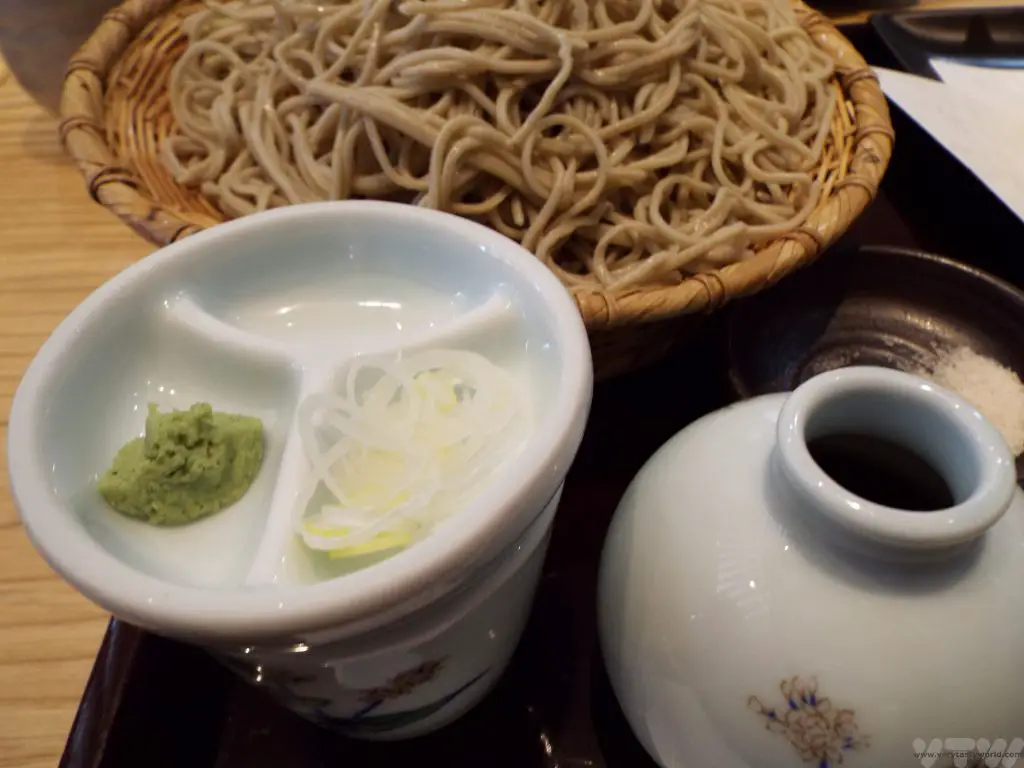
You are provided with a broth which you can season to your liking and then you dip the noodles in the broth. It is polite to slurp in Japan! (Which, when you’ve been brought up not to slurp your soup, is surprisingly difficult!)
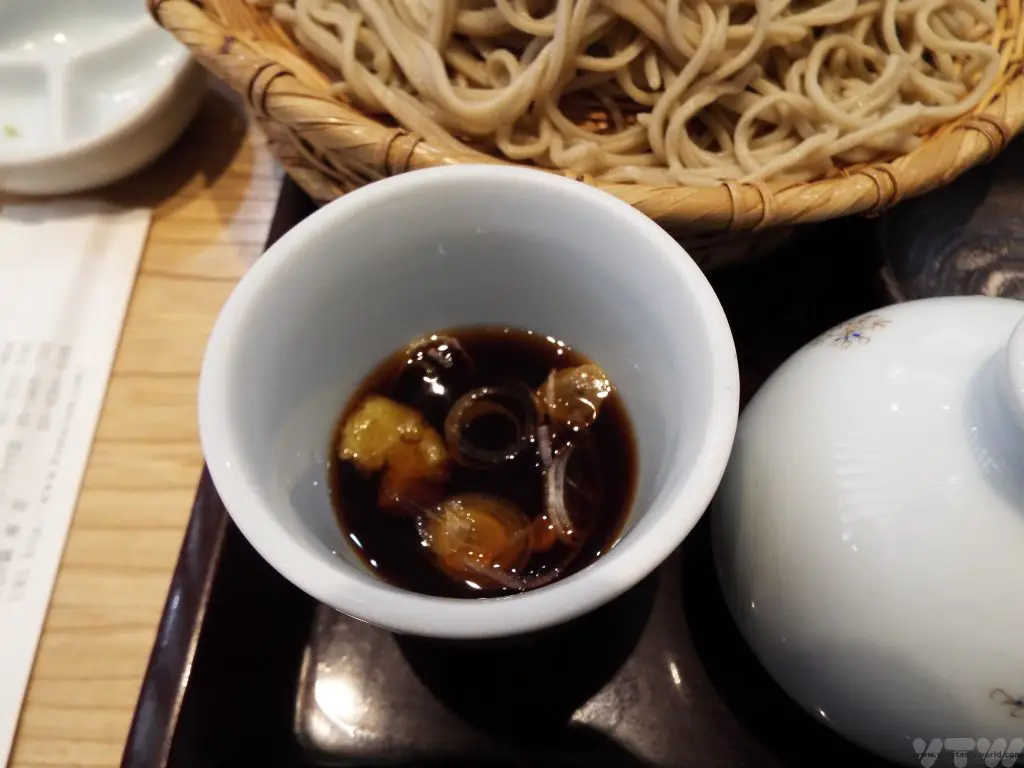
As we were finishing the restaurant staff came around with a small teapot filled with a hot, white opaque broth. This was sobayu, the water that that the noodles had been boiled in. We mixed it with our leftover sauce, added any further condiments and drank it – it’s a very satisfying way to finish off the meal.
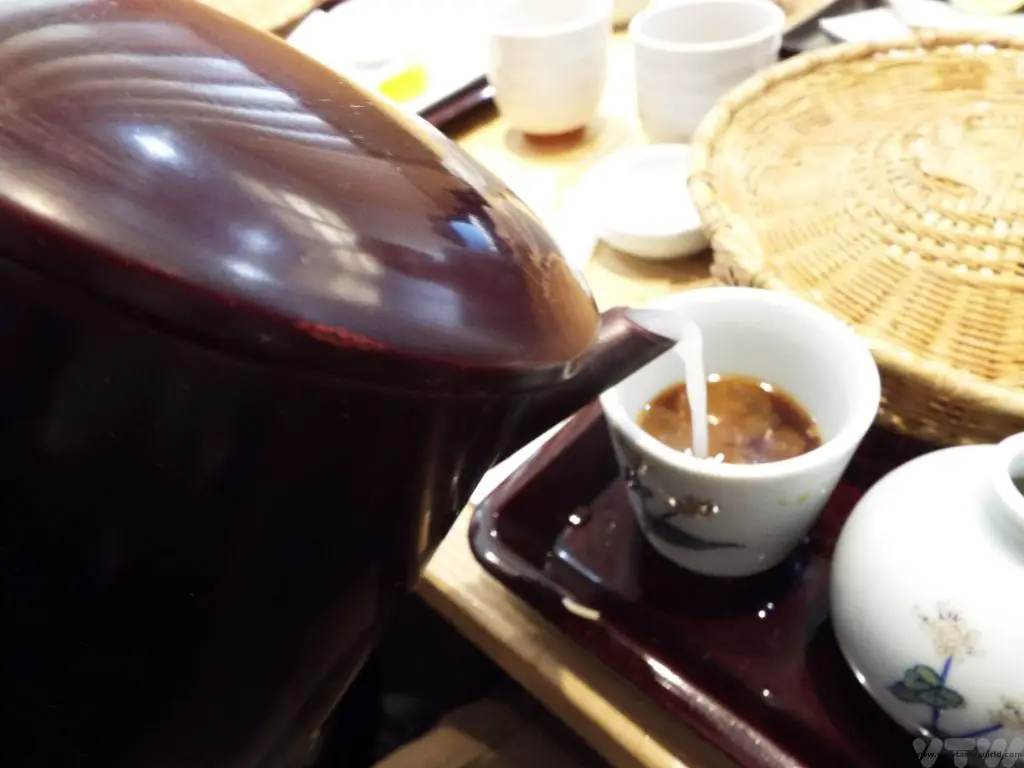
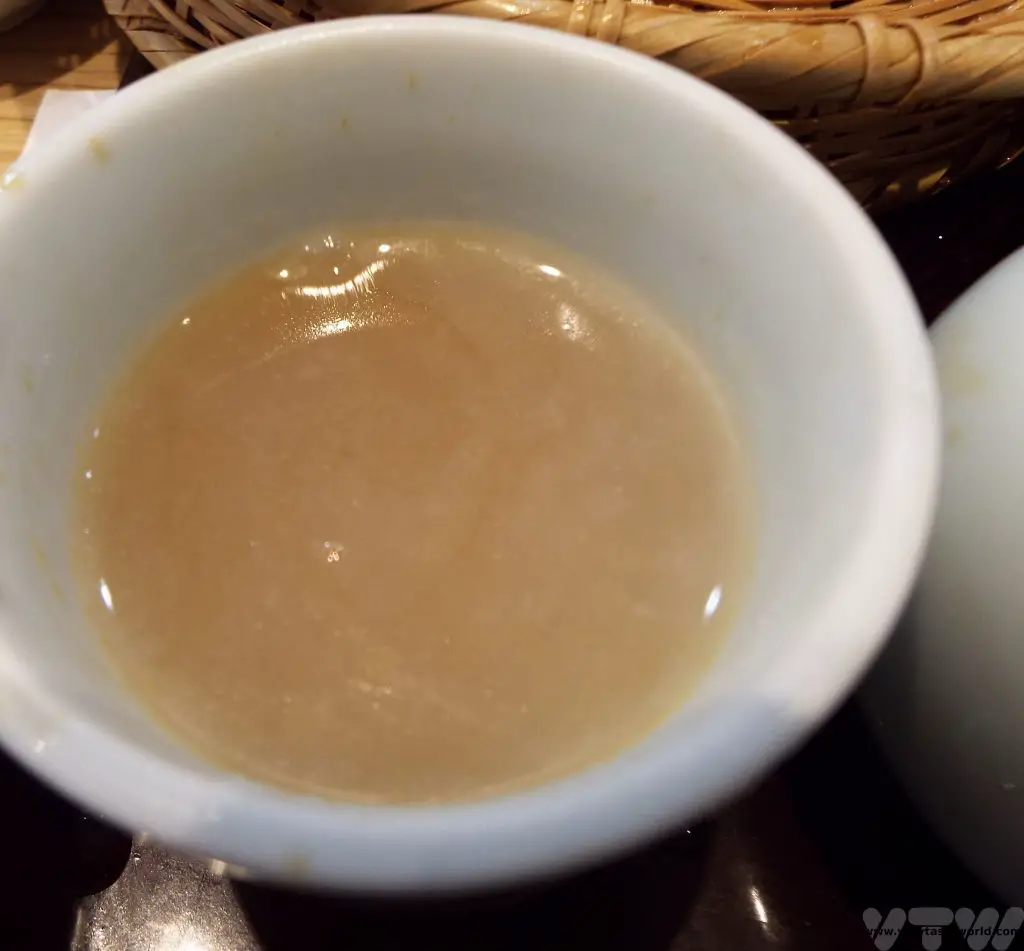
Back To The Hotel to Watch TV
New year is a family time and one particular Japanese new year tradition is that people stay home to see the new year in together. Kōhaku Uta Gassen is the NHK (the national broadcaster) TV channel’s new year show which has been running since the 1950s. It is a national custom to watch Kōhaku on New Year’s Eve. The format of the show is that popular singers, musicians and bands are invited to join and each are assigned to one of two teams – red and white. They each perform throughout the evening and the audience and judges decide which team was the best. Quite often western performers will take part as well. At the end of the show, just before midnight, everyone sings Hotaru no Hikari, a song similar to Auld Lang Syne. We spent some time in the early evening at our business hotel to catch some of the songs before heading out to see in the new year.
Seeing in the New Year
There are several choices depending on how you are feeling. Shibuya was the place to go for a party atmosphere. The famous road crossing was usually filled with people waiting to see the new year in and the atmosphere guaranteed to be lively. However, in recent years, the event in Shibuya has been cancelled (even post-Covid), so check the local news if you are planning on going out. Other locations include Tokyo Tower, which has a countdown to the New Year, and Tokyo Disney and Disney Sea has traditionally had fireworks displays on New Year’s Eve. There will also be celebratory parties and countdown events in hotels and izakaya across the city.
We chose to visit the Meiji Jingū. It’s one of Japan’s most important shrines, a Shinto shrine, just a couple of stops from Shinjuku, where we were staying. Meiji Jingū is a lovely place to visit at any time. It is set in a large, forested park which is very pleasant to wander through and is a completely serene contrast to the hustle and bustle of neon urban Tokyo. There are several JR stops that you can use to reach the shrine. We disembarked at Harajuku, the district where the cool kids hang out, and followed the crowds heading towards the shrine. We arrived at around 11:30 pm and were by no means the first people there. It’s a pleasant stroll from the beautiful wooden Torii at the entrance.
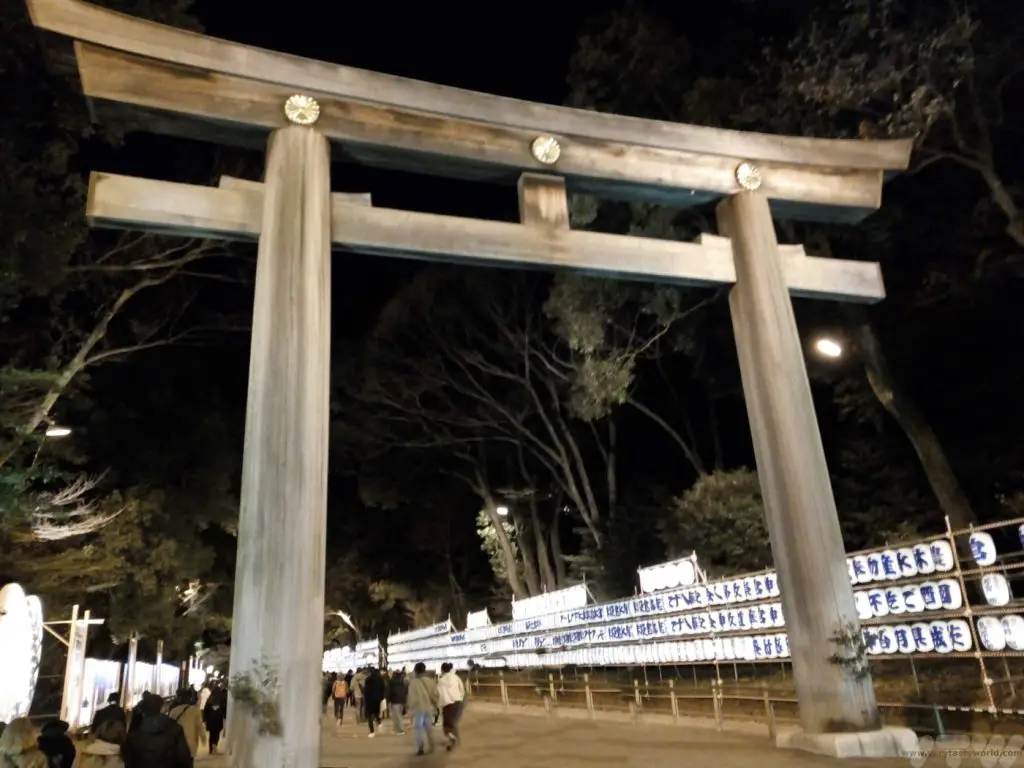
You need to bear in mind that it’s a one-way system as you walk through. You will see traditional lanterns and rows of sake barrels along the way.
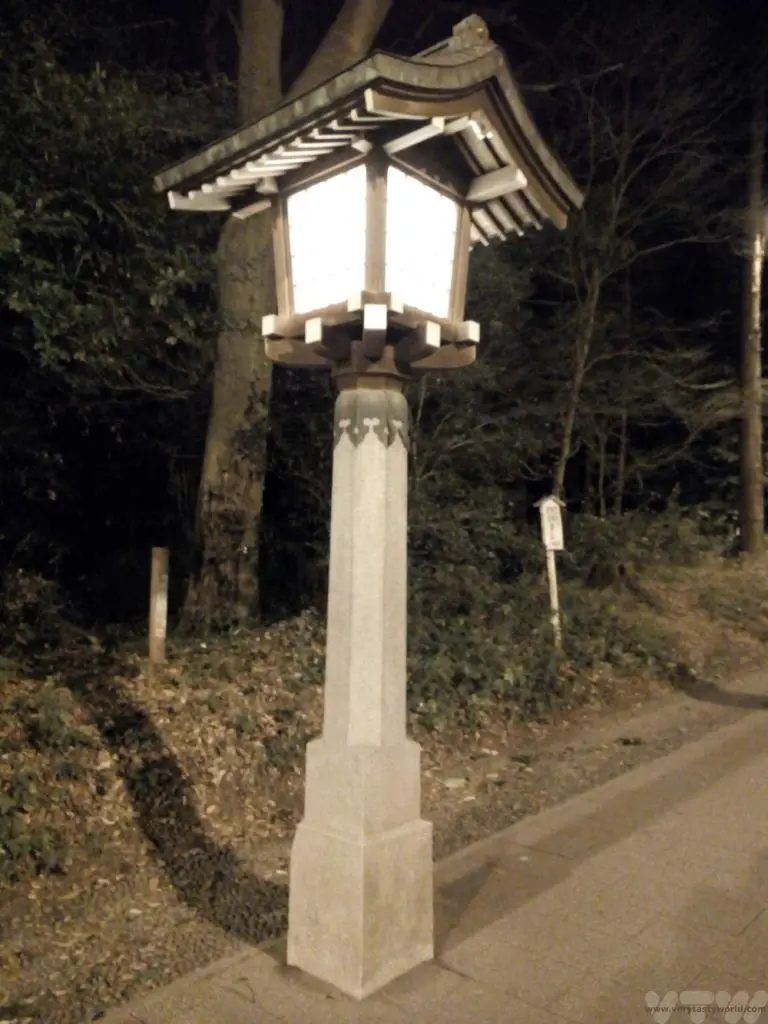
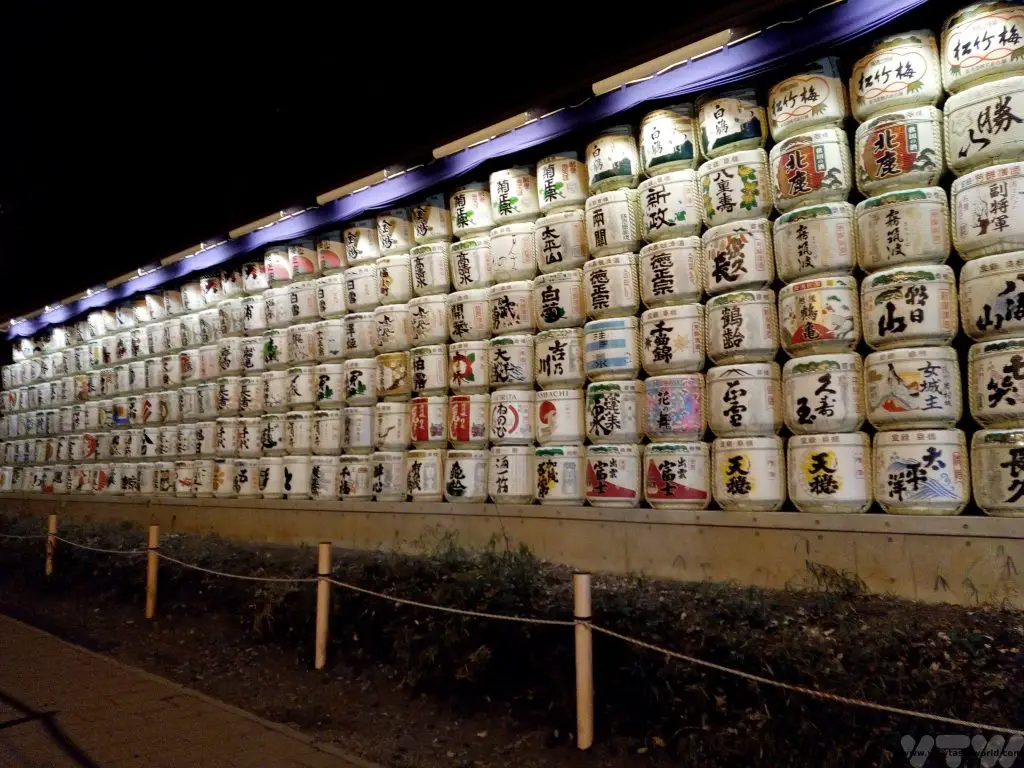
Then we stopped at the barrier which had TV screens showing pictures of the crowd as it assembled and the shrine itself. We weren’t too far from the front but were still some way from the shrine. Even though the area was very crowded, everything was typically well-organised and there was a quiet buzz of excitement.
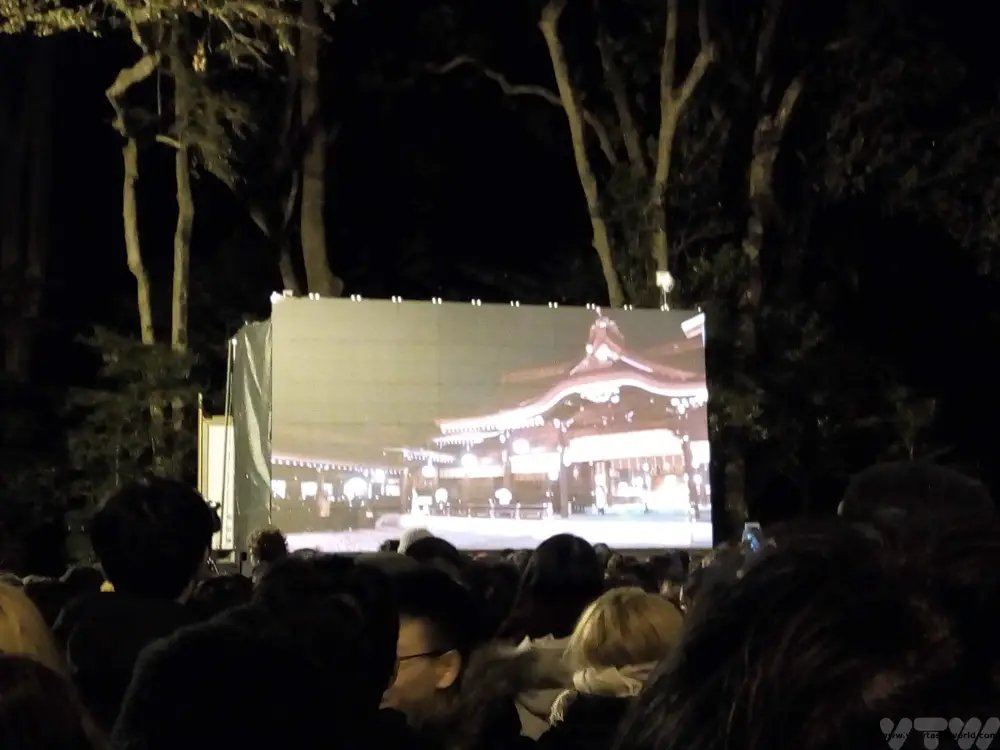
As the new year dawned 108 bells rang out. This is actually a Buddhist (Japan’s other main religion) custom, the number represents 108 temptations and the bell ringing is to reject 108 worldly desires. The bell is actually rung 107 times on the last day of the old year and just once after midnight. The bell rings aren’t uniform in length – some of the bells are rung in quicker succession than others.
We were reasonably close to the front at the Meiji shrine but it still took us around 45 minutes to reach the Naien, the inner area, which contains the shrine buildings. Marshalls were present wielding signs in both Japanese and English and beckoned visitors either to approach, or to ‘wait a short while, please’ before coming forward. This means that smaller groups of visitors were able to visit the shrine and offer prayers without it becoming over-crowded. It was an excellent system, especially as everyone co-operated beautifully.
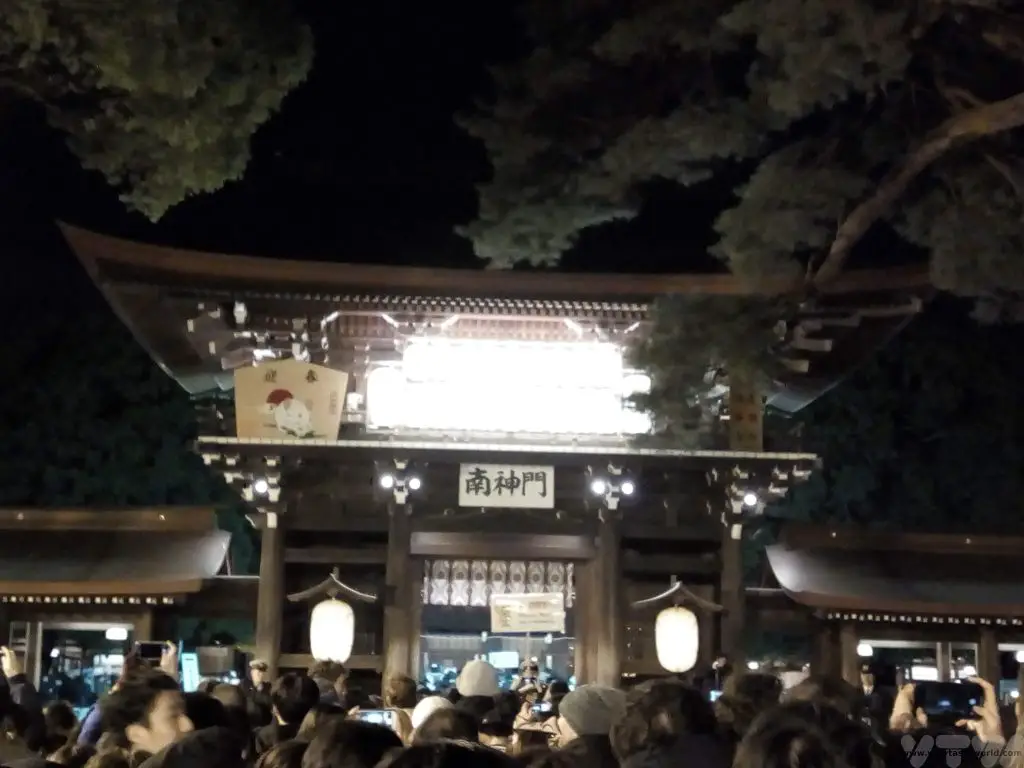
When it was our turn, it wasn’t really possible to undertake the full Hatsumōde but we threw our coins, bowed, clapped and made our wishes and prayers for the new year. The Meiji shrine is the most famous shrine to visit and apparently attracts over three million visitors in the first three days of each year. A lot of people don’t quite make it to the very front of the queue.
Outside the main temple area there are stalls with refreshments and it’s possible to hang out and enjoy the atmosphere. We then walked back to Yoyogi station, where we knew the platforms were likely to be less crowded than Harajuku, and we hopped onto a very full, but joyous, train on the Yamanote line, just one stop back to Shinjuku. As we arrived back at our hotel, a barrel of sake had been opened in the lobby and we were invited to partake of a cup. We greeted the hotel staff, ‘Akemashita, omedetou gozaimasu!’ – meaning: the new year has dawned, congratulations!
Hatsumōde – Visiting a Temple
Another Japanese new year tradition is visiting a temple within the first three days of the year. Although we had been amongst the first to undertake Hatsumōde at the Meiji shrine the night before, we met up with our friend in Kichijoji. (Also, because we were out at the shrine to see in the new year, we hadn’t found out whether the red or the white team had won Kōhaku, so she was able to update us with this important information.)
Hatsumōde is considered to be a very important part of welcoming the new year and there will be queues at temples. We met quite early and had to queue for around 30 minutes. It was all very organised and the atmosphere lively.
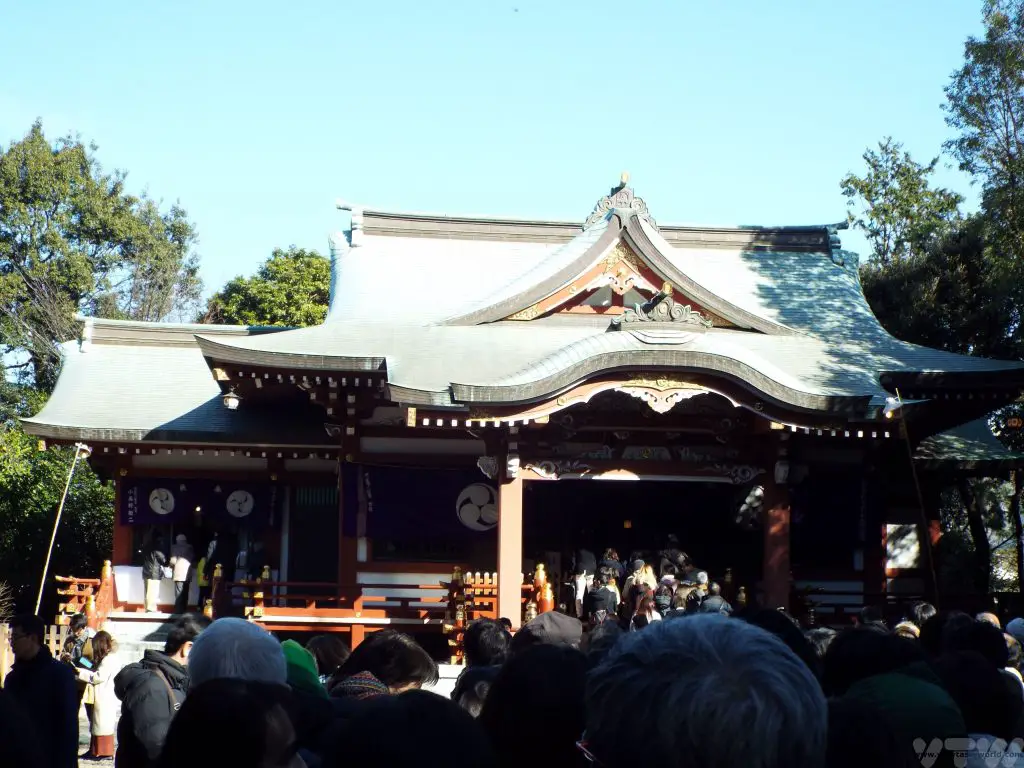
There is a certain ritual that one undertakes when visiting a Shinto shrine. It is absolutely fine for anyone from any religion, or none, to visit a shrine and make an offering. First of all, it is important to purify oneself before entering the shrine. This is called ‘temizu’.
Approach the chozuya, which is a small pavilion which contains a purification font filled with water. There are multiple ladles laid next to the basin. Holding the ladle in your right hand, pour water over your left. Change hands and repeat. Change hands and then pour a little water into your left hand and take it into your mouth. You aren’t supposed to swallow the water but to spit it delicately into the drain.
Then walk up to the shrine itself and make an offering by throwing a coin. The monetary value isn’t important but 5 yen and 50 yen coins are considered to be lucky. Go-en (5 yen) sounds like ‘goen’ which means ‘good luck’ in Japanese.
Then you should bow deeply, from the waist, twice, then clap your hands twice, to show reverence to the kami-sama (the god; kami can also be interpreted as a spirit). Keep your hands together for a silent prayer.
We were delighted to be invited to our friend’s family home to enjoy osechi-ryōri, traditional new year foods.
Japanese New Year Food
New year is a time for feasting and there are some dishes that are particularly associated with celebrations. Osechi-ryōri comprises lots of little dishes beautifully presented. Much of the food is prepared in advance so that the whole family can eat together rather than spending loads of time in the kitchen.
The quintessential Japanese new year food is mochi. These are rice balls made by pounding steamed sticky rice with a big mallet in a large wooden container to achieve a stretchy and slightly sticky consistency. This is then formed into little rice dumplings. They have an unusual texture – very soft and delightfully squidgy. New year mochi is called kagami mochi and comprises two mochi balls one set on top of the other, with a tangerine on top.
Mochi may be flavoured and/or filled with all sorts of ingredients. Matcha green tea, milk flavouring and azuki bean paste are popular fillings. Sometimes the mochi will have a sesame coating.
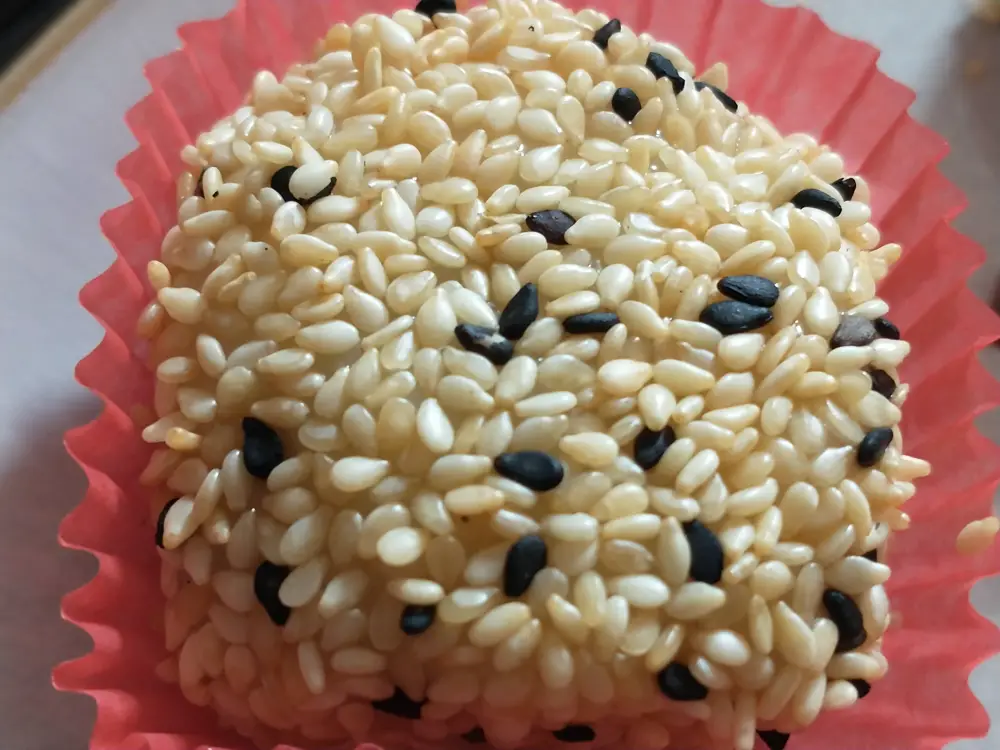
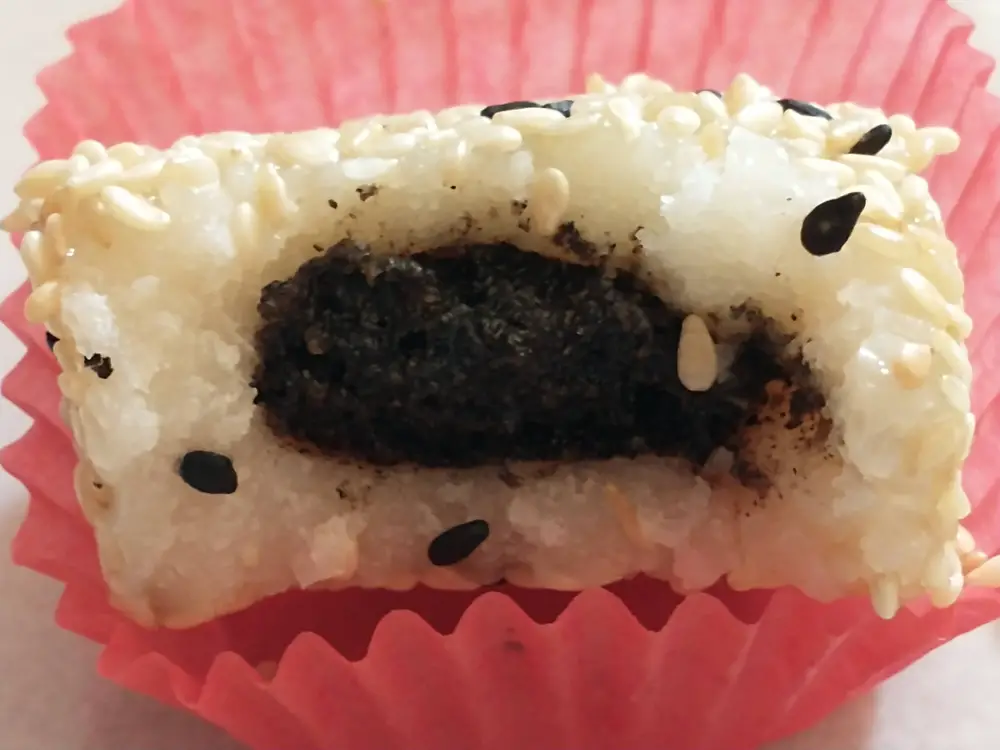
Matcha mochi with azuki bean filling is delicious:
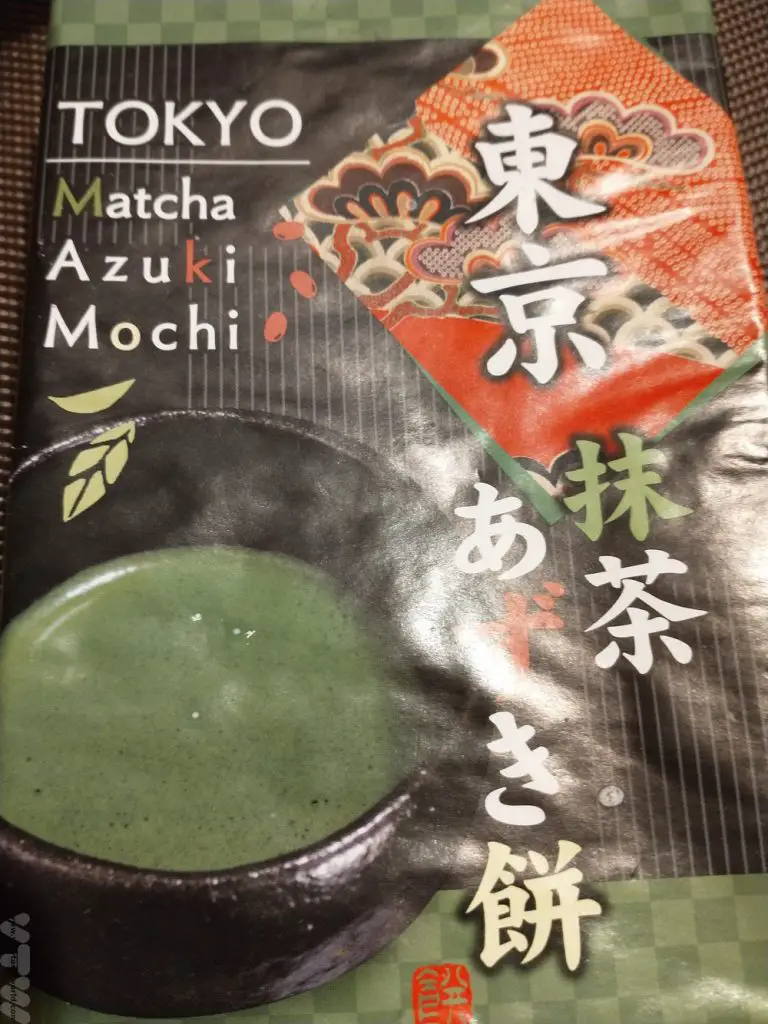
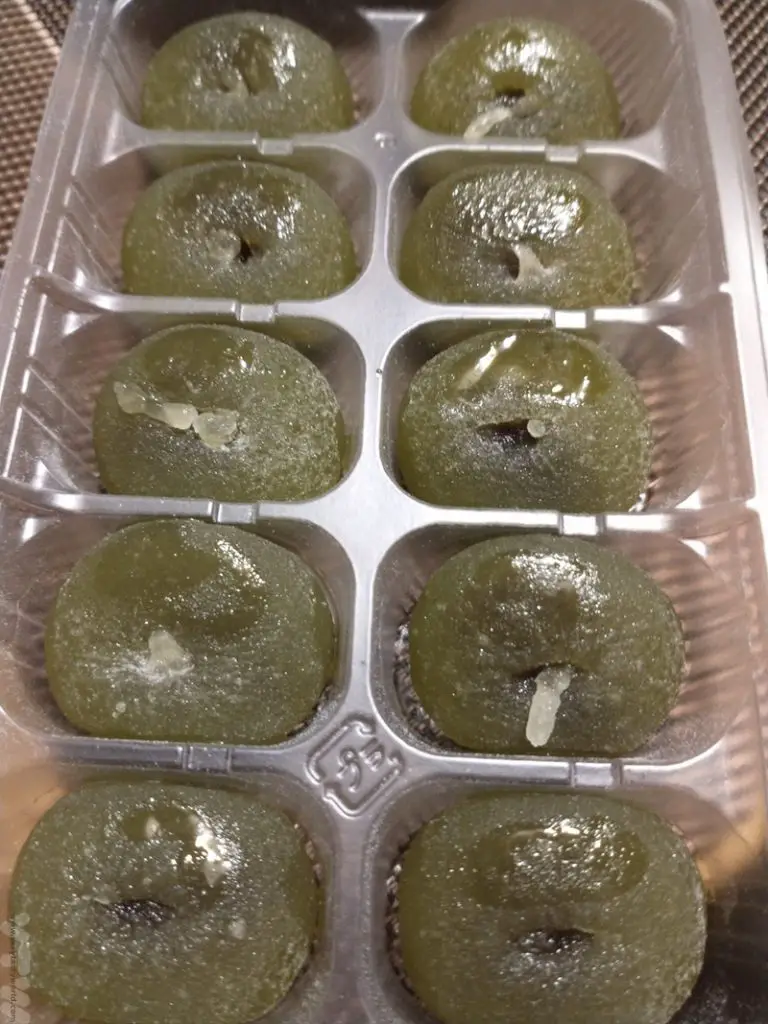

Kazunoko is a popular new year dish. It is marinated seasoned herring roe. The roe is yellow in colour and comprises hundreds of eggs all bound together. The texture is surprisingly crunchy and the flavour slightly salty. It is usually marinated overnight in ingredients such as dashi (Japanese stock), soy sauce and sake. We were lucky to enjoy home-made kazunoko marinated in sake lees and it was delicious. The multiple eggs in the roe are symbolic of a large family. The kuzunoko can be served on its own or with other delicious ingredients, in this case, with prawns and a scallop on top of cucumber.
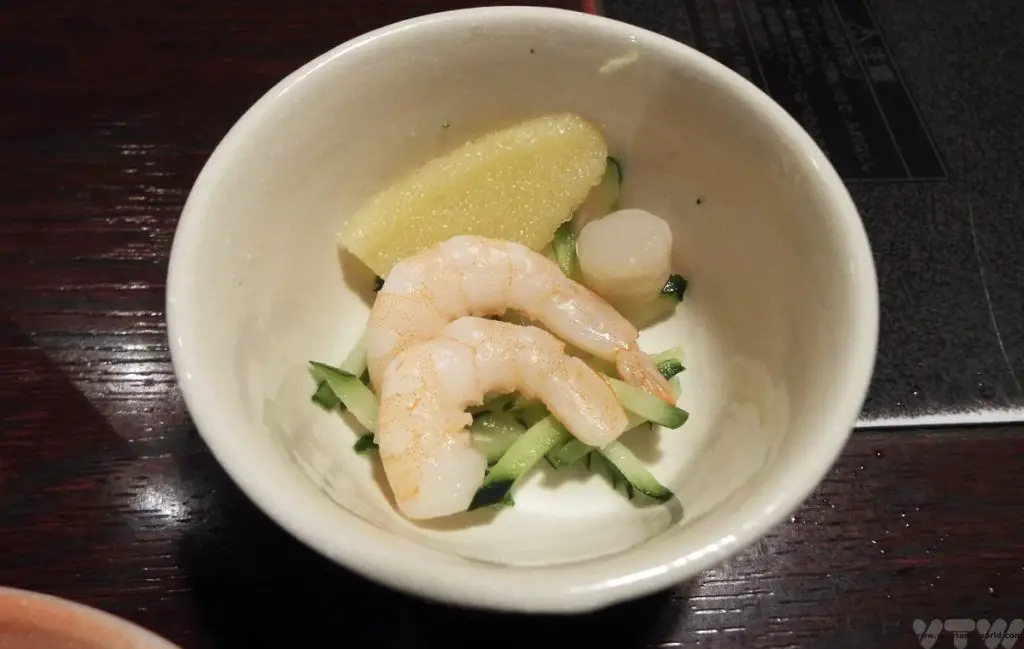
Kobumaki is a piece of kelp seaweed. It will have been simmered for a while to soften and is one of the Japanese new year food traditions is to present it in the shape of a bow. An alternative serving is a roll of kombu tied with a strip of dried daikon (a white radish); this is called hoshi daikon. Further variations include wrapping the kombu around a piece of meat or fish. The word ‘kombu’ also means ‘joy’ in celebration of a joyous day.
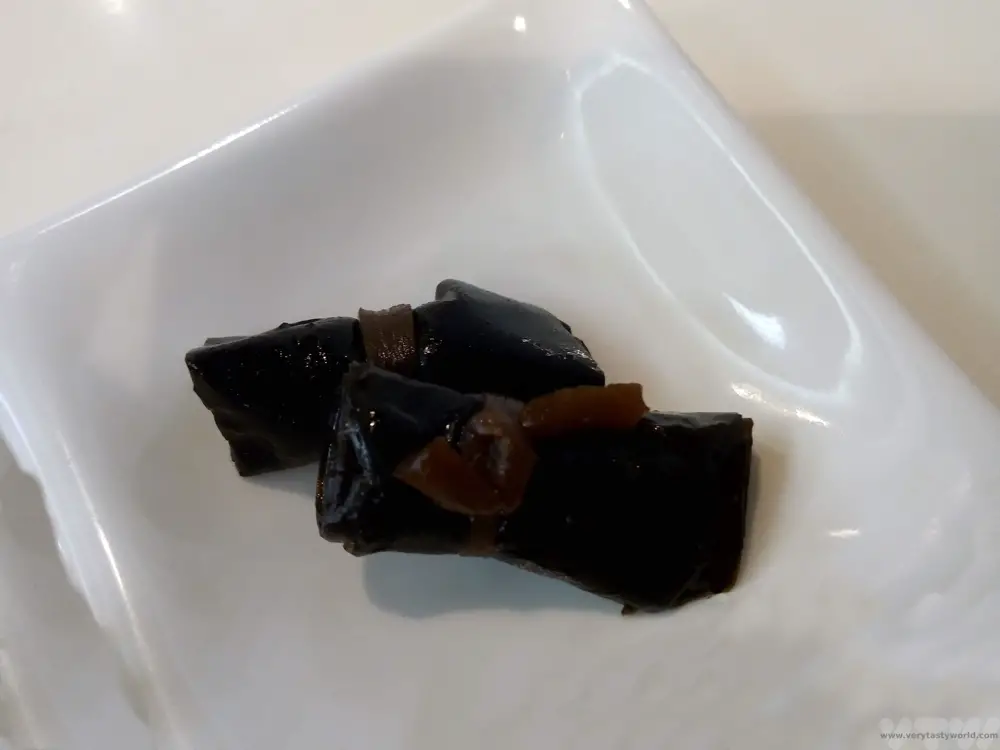
Sushi is not usually part of osechi-ryōri but it is a celebratory food and is often eaten on special occasions. It would be unusual for Japanese families to make their own sushi – they would leave it to the experts and buy some in.
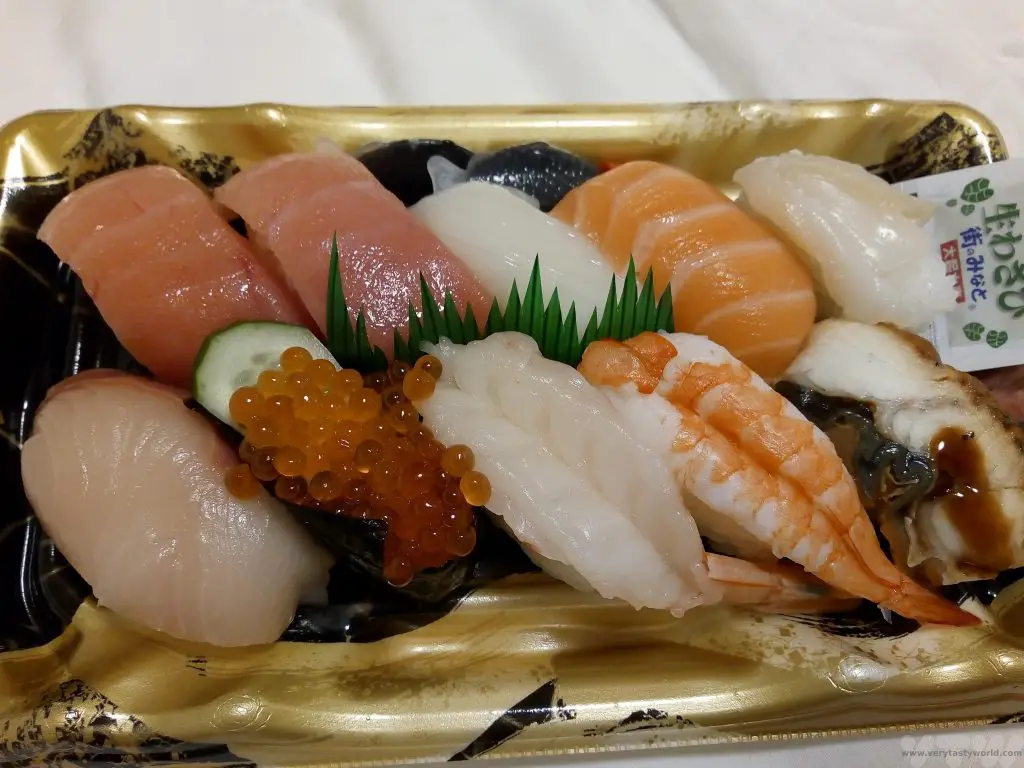
Retail Therapy
Another Japanese new year tradition is Fukubukuro. When the shops reopen many will offer lucky bags – sealed bags or boxes – containing random merchandise. The value of the goods inside are greater than the price you would normally pay and sometimes you may – by sheer luck – end up with some very cool products. We met up with a dear friend in Nakano Broadway the following day and found a Lucky Box stall. At just 300 Yen we didn’t have high expectations but it was fun seeing what was in the box.
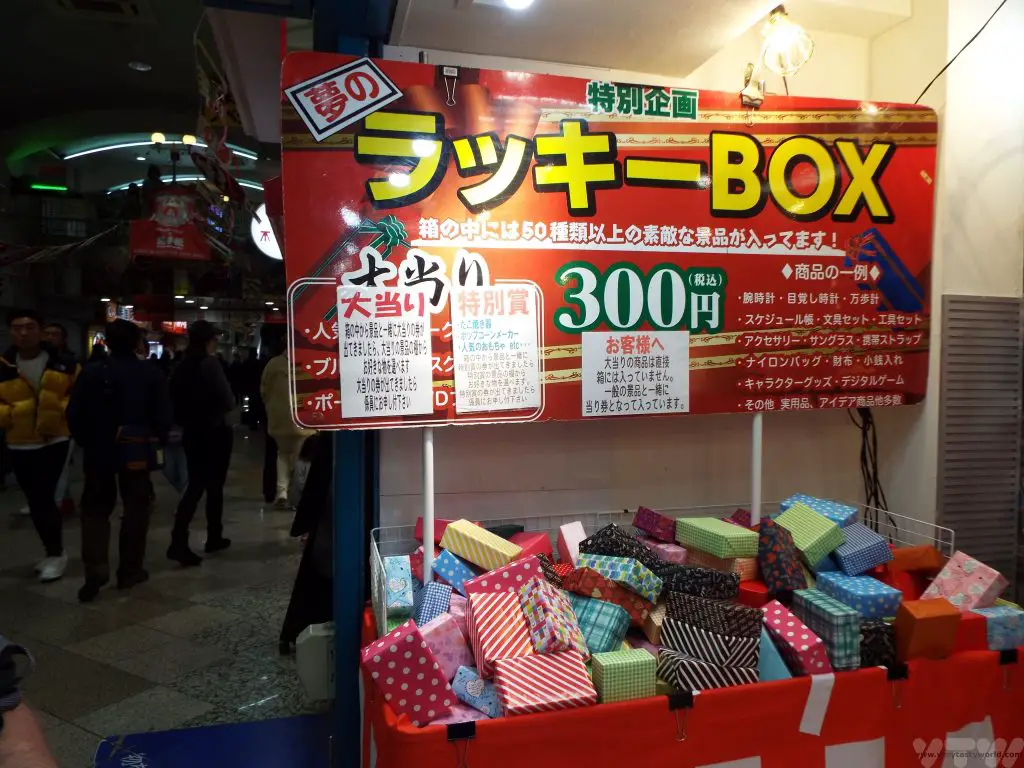
Related Posts You May Enjoy

- Recipe: Simmered Shiitake Mushrooms

- How to Use Public Transport in Japan
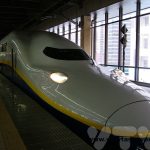
- RECIPE Oyakodon Donburi

- Planning a Trip to Japan
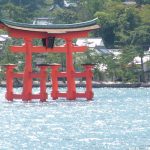
- The Makanai: Cooking for the Maiko House
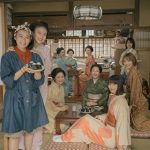
- Setsubun Food – Bean Throwing Day

- The Gassho Farmhouses of Rural Japan
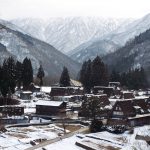
- Recipe: Japanese Simmered Pork Belly – Buta no Kakuni

- RECIPE: How to Make Umeboshi

Visa-Free Travel to Russia
It had long been an ambition to travel to Russia but the convoluted and lengthy visa process did put us off. It can take several weeks to apply and the authorities will need a vast quantity of information not only about you but also a fair bit of family history as well. The embassy is also likely to retain your passport for the time that the application is going through its processing. So we were delighted to discover that you can actually travel to Russia visa-free. You can’t stay for long – just three days – and the trip can best be described as full-on but, for us, it was a brilliant opportunity to see the highlights of this amazing country.
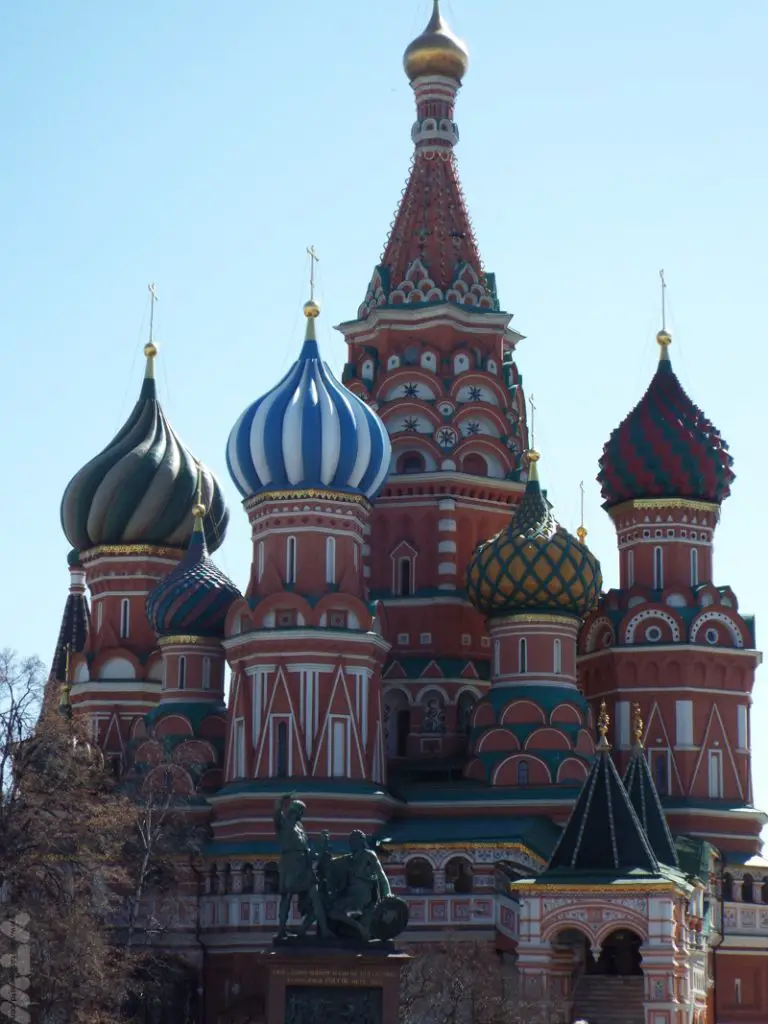
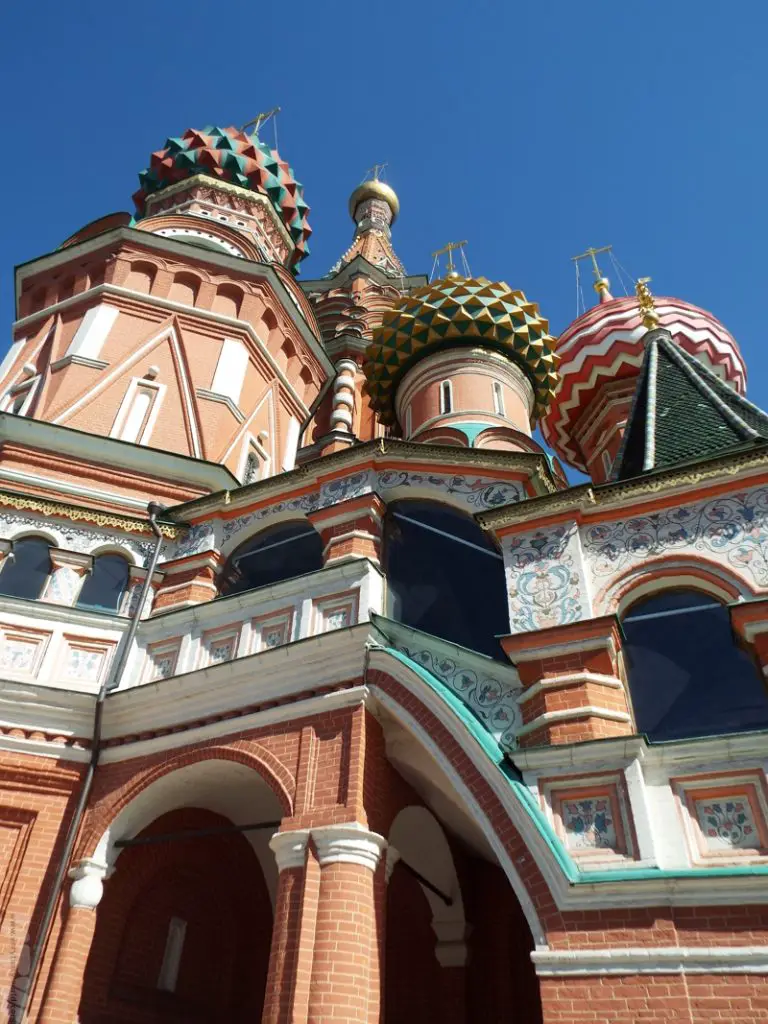
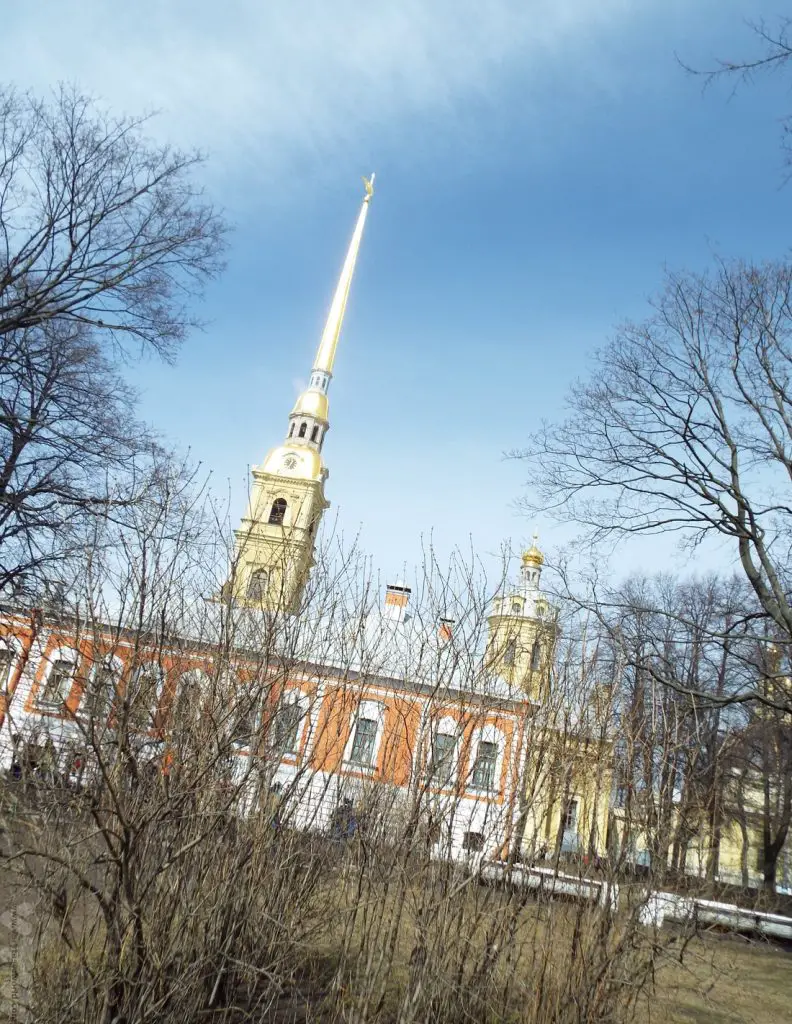
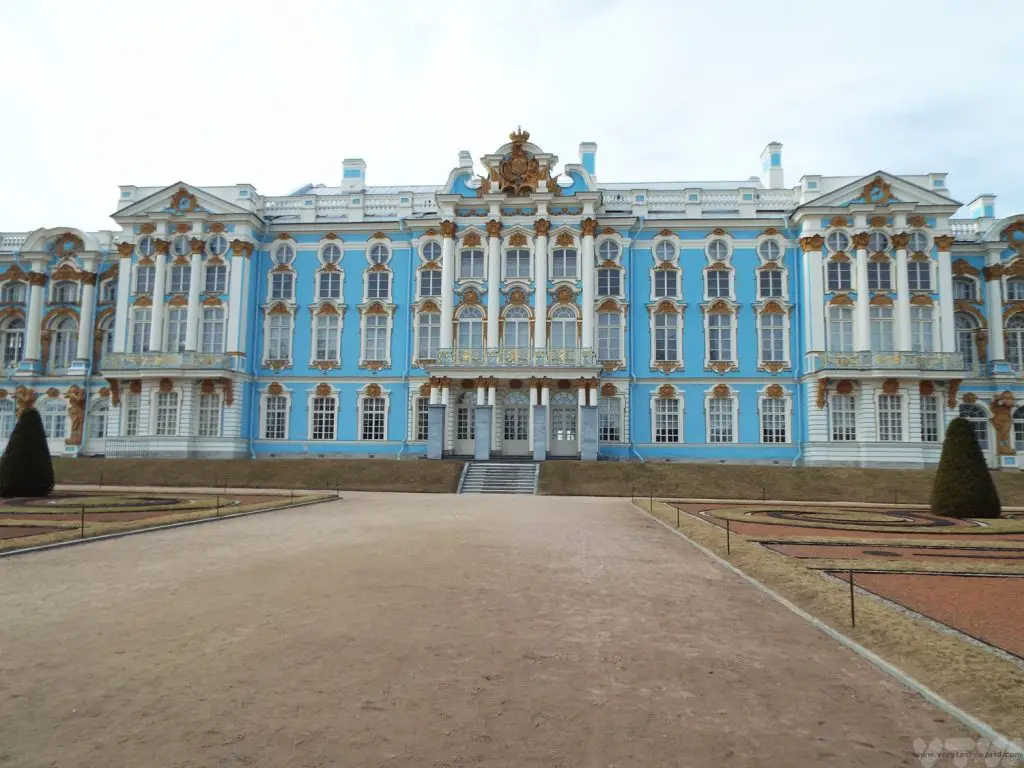
Rushin’ Around Russia
So, deep breath, this is the itinerary:
Fly to Helsinki – catch a tram to the port – board a ferry – sail overnight to St Petersburg – arrive St Petersburg – tour St Petersburg in morning – lunch – travel out to Summer Palace and tour Summer Palace and surround – drive back to St Petersburg – free time to explore and eat dinner – pick up to train station – overnight train to Moscow – arrive early morning Moscow – transport to hotel for breakfast – pick up for Moscow tour – tour Red Square and Moscow metro – lunch – tour Kremlin, back to hotel in afternoon for a quick shower – pick up in evening for train station – overnight train back to St Petersburg – breakfast in St Petersburg – explore St Petersburg until Hermitage opens – tour Hermitage and marvel at the art, realising you could actually spend days in there – pick up for ferry port – catch ferry – sail overnight to Helsinki – arrive Helsinki – tram to airport – fly home – collapse.
Visa-Free Travel Rules
The Russian Federation foreign visa-free conditions state that:
- You must arrive at the port of St Petersburg aboard a St Peter Line ferry.
- You must leave Russia from St Petersburg aboard a St Peter Line ferry.
- You must leave Russia within 72 hours. The clock starts ticking as soon as you cross border control.
- You must be a part of an organised travel group and follow the tour itinerary
- You must have a valid passport and be able to enter Finland after leaving Russia.
You have to travel with an approved agency. This meant that we would be joining a group tour, which is our least favourite way to travel, but it was something that we were prepared to do. As things turned out, however, Anglo-Russian relations weren’t particularly good at the time of travelling and a number of other guests decided to cancel. Amazingly, we got a private tour! And while politicians often have very public spats in the media, ordinary people are usually lovely and everyone we encountered on our trip to Russia was very friendly and helpful.
The trip was brilliantly designed. One thing to note is that your bed will be moving for four nights running – ferry, train, train, ferry. As someone who is prone to travel sickness, particularly seasickness, this was initially a concern but the Baltic sea was very calm and the boat was very large so there were no issues at all. There are several classes of ferry and train transport available from basic to luxurious – the cost varies accordingly.
Breaking the trip down…
Day One – Start at the Finnish: From Helsinki to St Petersburg
On arrival at Helsinki we caught a tram to the port and boarded the St. Peterline ferry Princess Anastasia. There was plenty to do on board and there was a reasonable choice of restaurants to dine in.
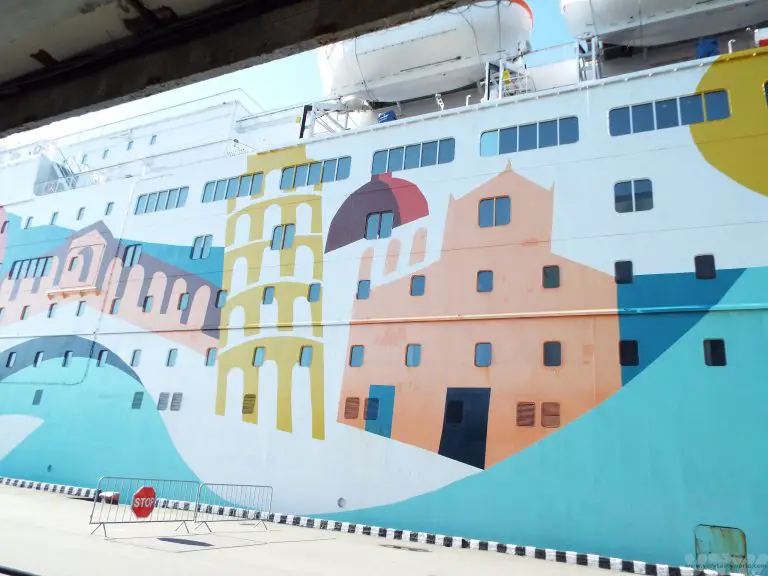
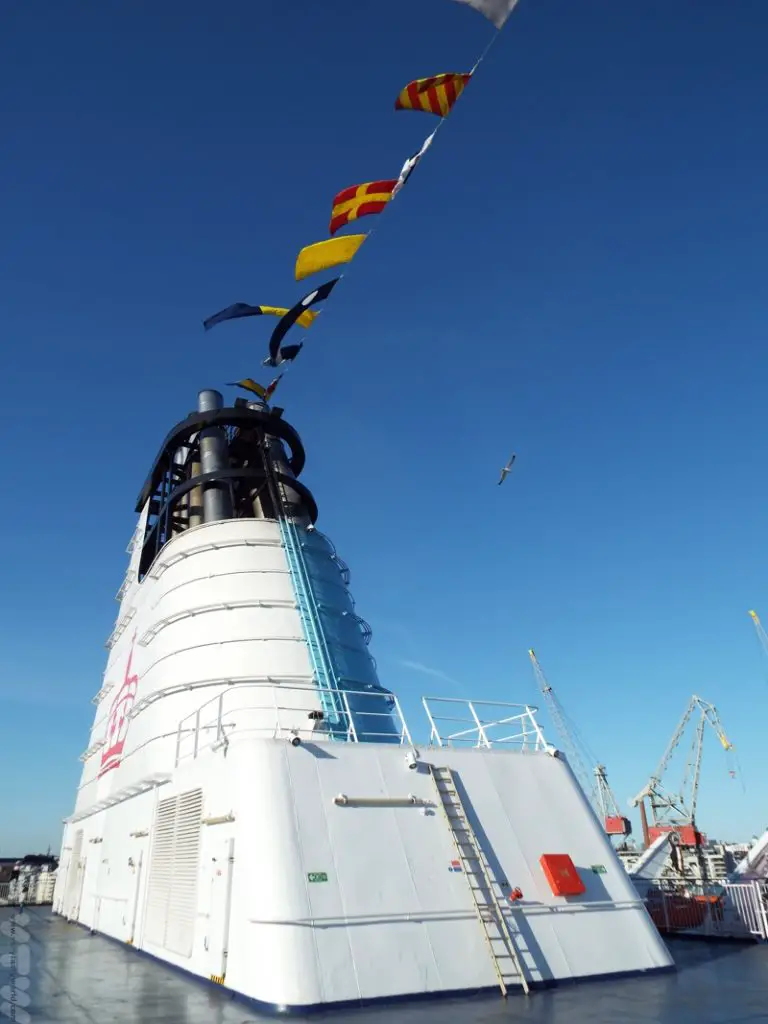
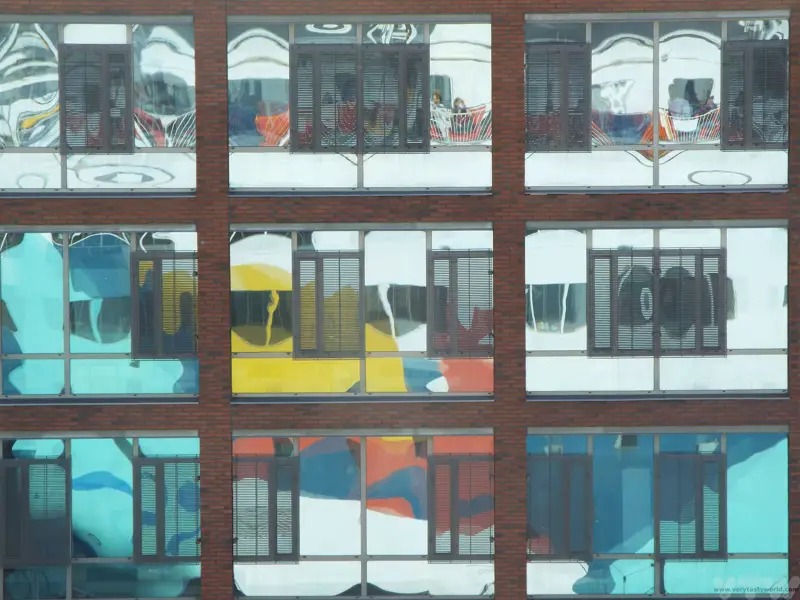
We decided to get a cheap cabin without a window view, mainly because it was an overnight journey so we were planning to be sleeping and didn’t really need a port-hole to look out of while it was dark. It comprised twin beds and a shower room – basic but perfectly functional. As we wandered to the dining room for a buffet breakfast the following morning we could see the ice floating along the river as we headed into port.
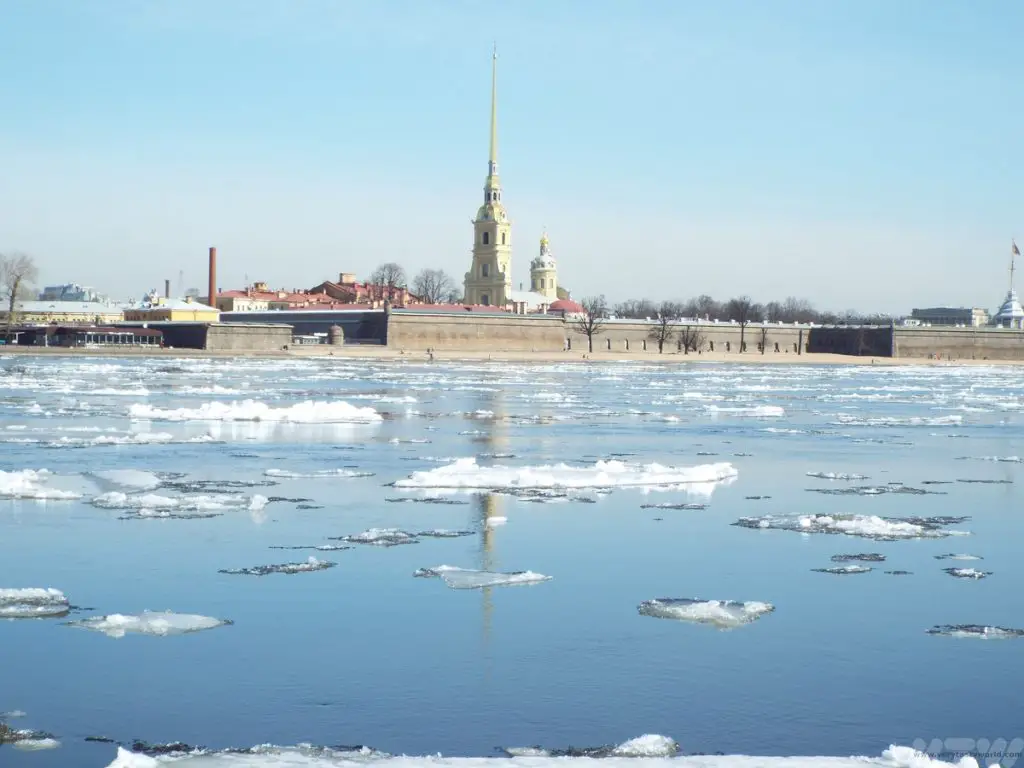
Day Two – A Day in St Petersburg
Instructions were issued for debarkation over the ship’s tannoy. We had been given visa-free arrival and departure cards, which we kept with our passports. We joined the queue for non-Russian visitors and eventually got through immigration.
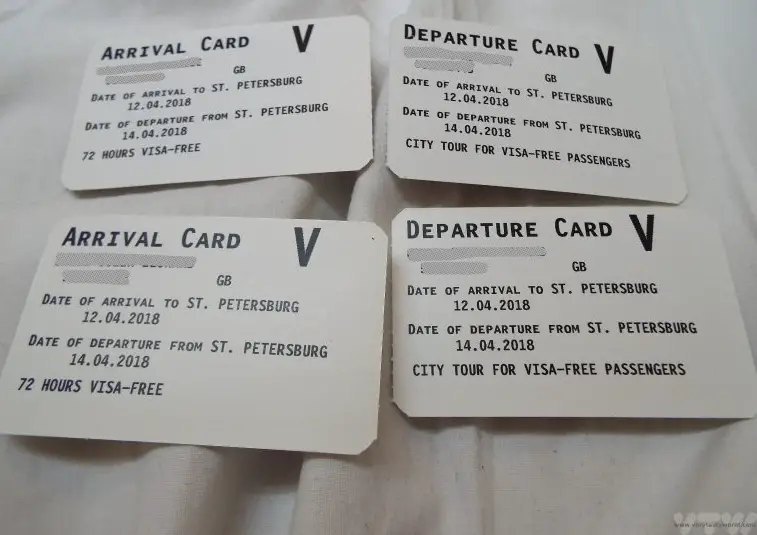
We travelled in mid-April, ostensibly spring, but the weather was still pretty cold – it had risen from around -30⁰C during winter to around 0⁰C. However, St Petersburg’s river Neva was still frozen and not navigable. This meant that unfortunately we couldn’t undertake a planned boat trip, so the itinerary was shuffled around a bit. It was a disappointment not to be able to do this but it meant that we had more time at the Hermitage on day three.
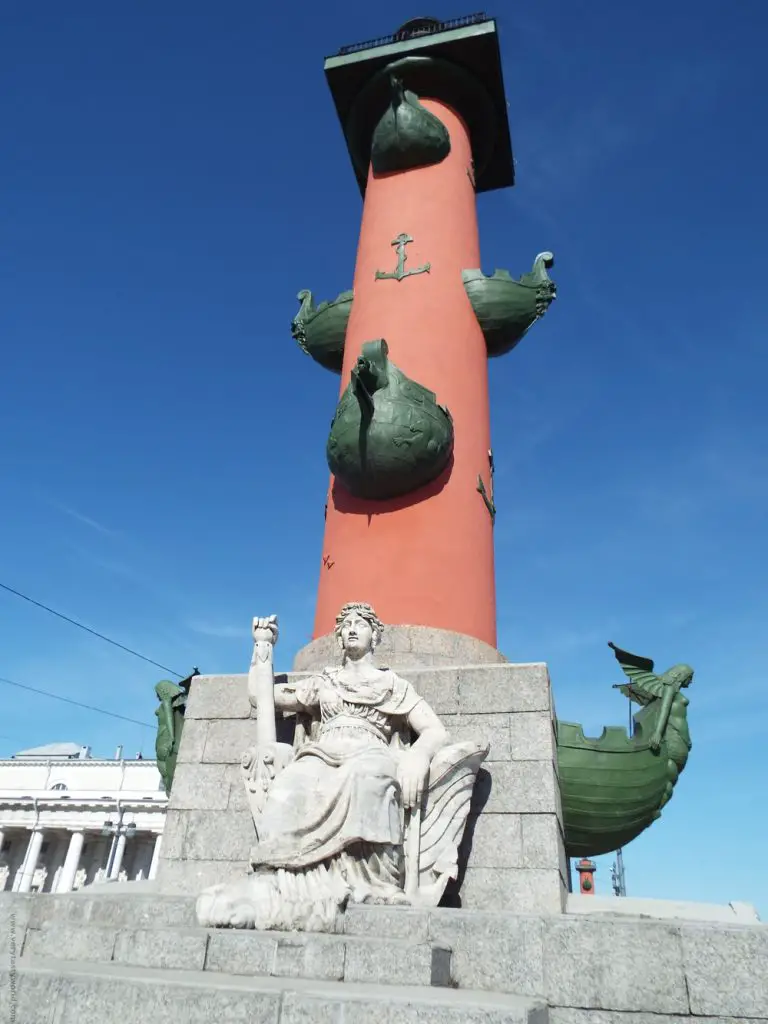
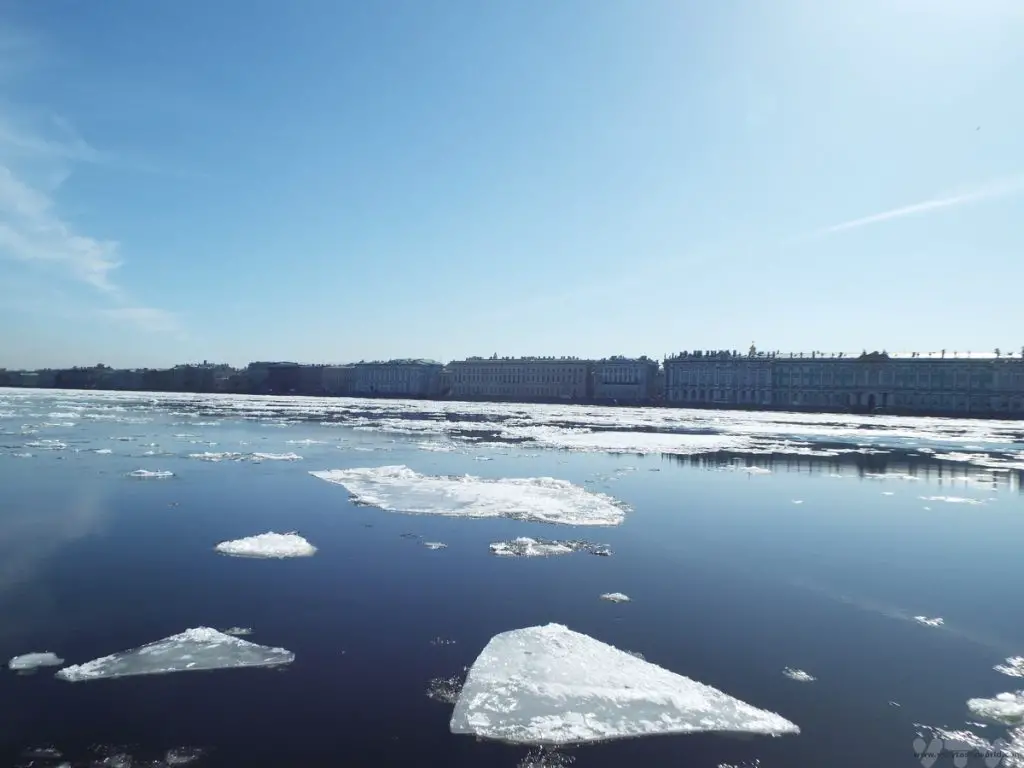
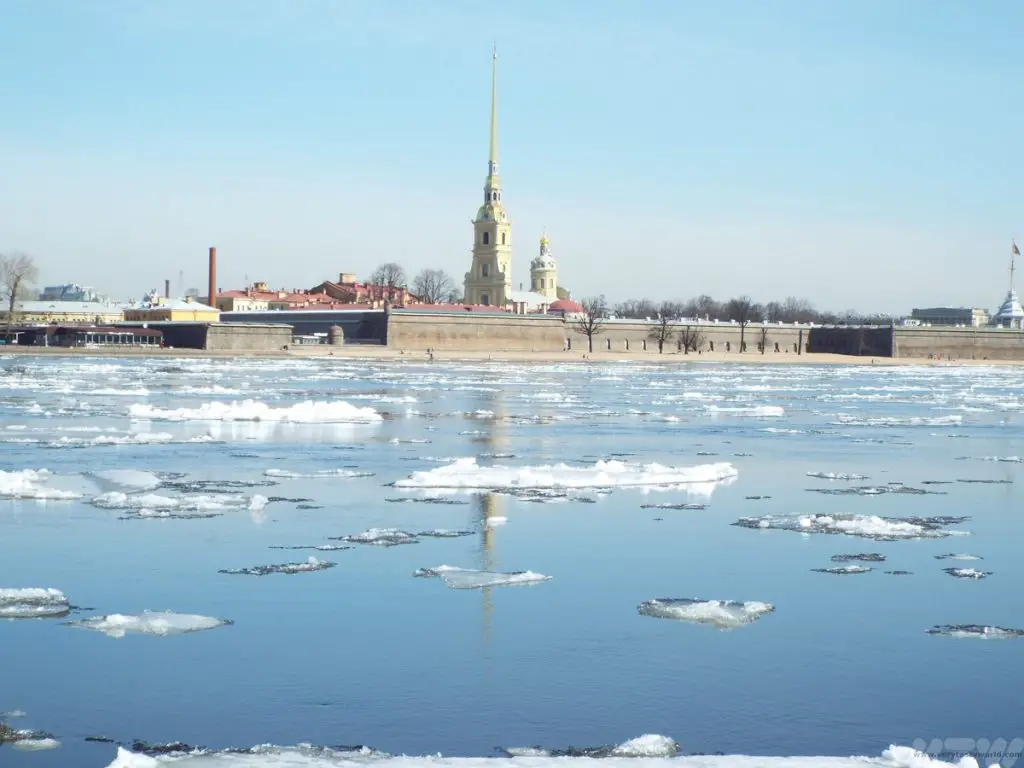
First on the itinerary was a St Petersburg City tour and a visit to the Peter and Paul Fortress. This is effectively the birthplace of the city, its citadel. It is located on Zayachy Island (Hare Island), across the Neva River. You will see lots of hare sculptures around the island. It was founded by Peter the Great in 1703 and built as a star fortress between 1706 and 1740. Curiously, while it was constructed secure Russia’s position on the River Neva, it was never used as a fortress and its cannons didn’t fire a single shot for over 200 years… until the 1917 Revolution.

The Cathedral of Saints Peter and Paul is a remarkable construction and the oldest church in St. Petersburg. It is home to the graves of nearly all of Russia’s rulers since Peter the Great. Of particular interest are those of the Romanov dynasty, the last of the Tsars.
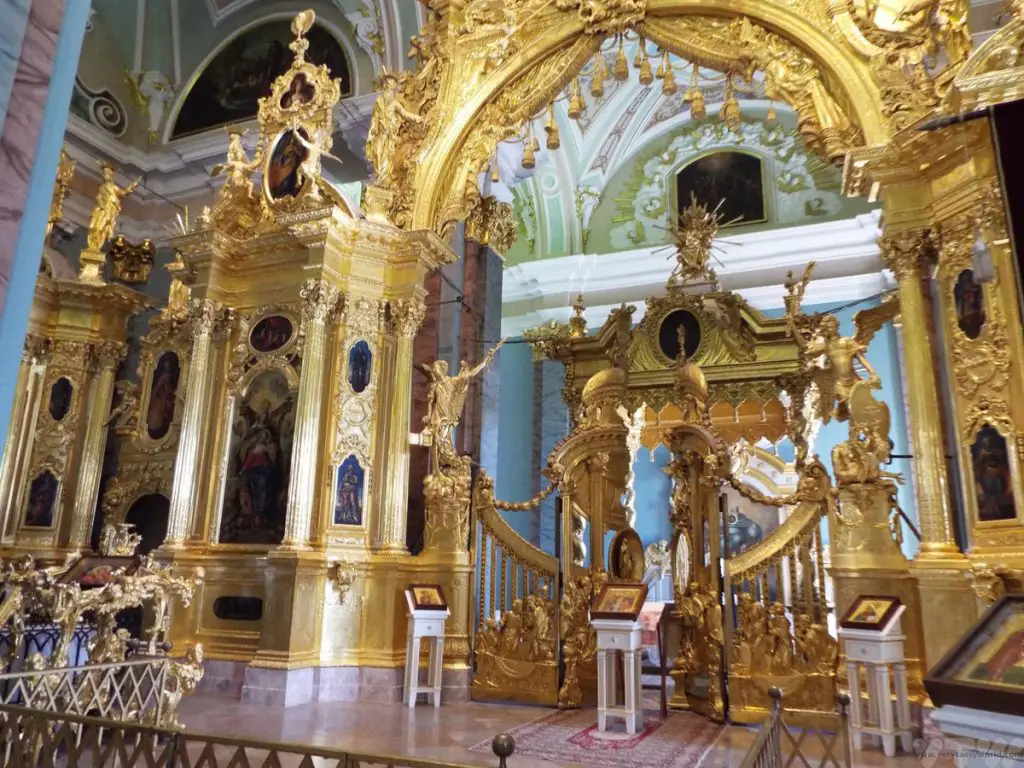
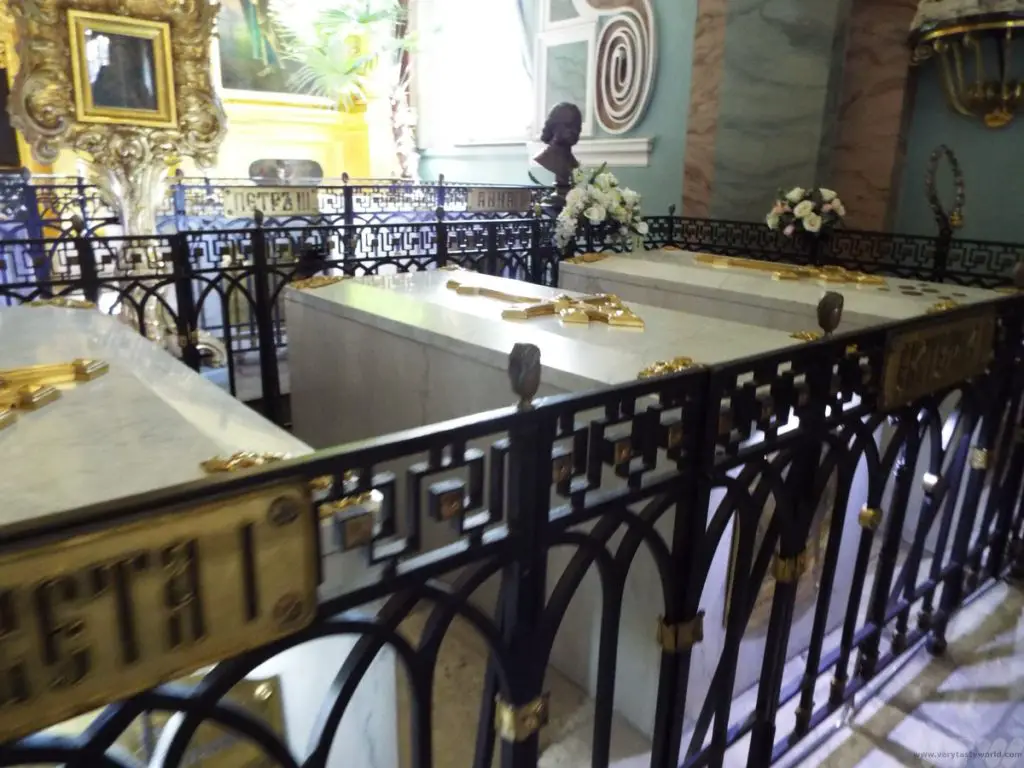
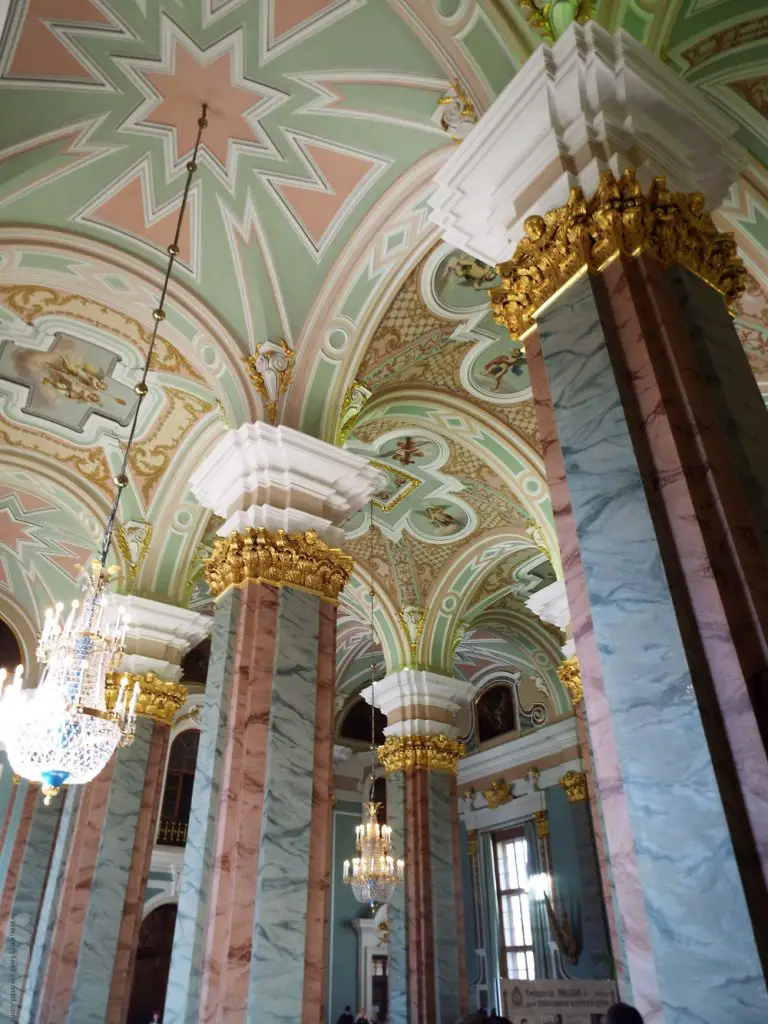
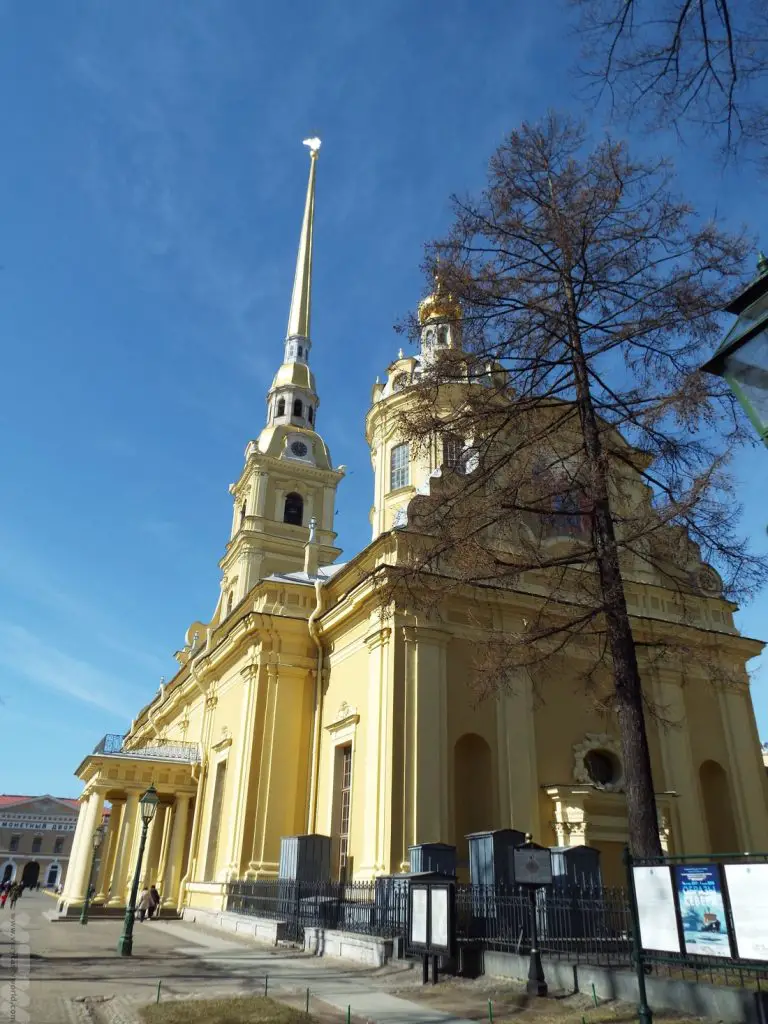
The fortress was also a prison and it is possible to visit the cells and learn about its grim history. Its more famous inmates included Peter the Great’s son Alexei, Lenin’s brother Aleksandr Ulyanov and renowned writer Fyodor Dostoevsky. Outside the walls of the fortress are the “polar bears” who sunbathe in sub-zero temperatures.
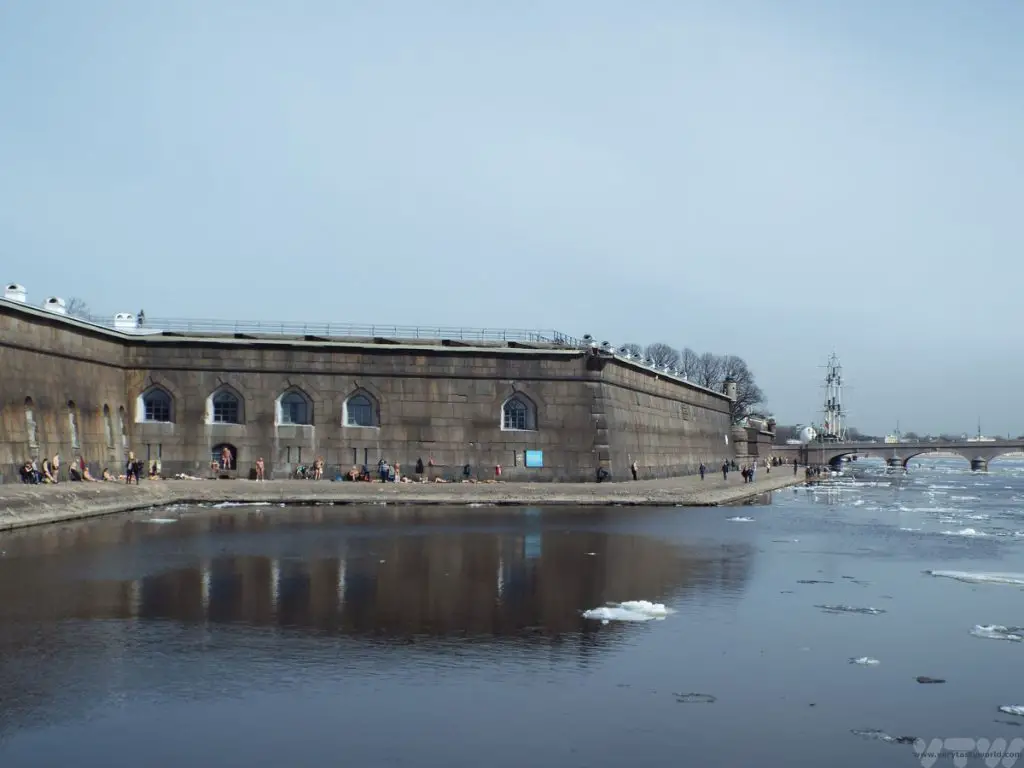
After a brief lunch we headed out of the city to Tsarskoe Selo (Pushkin) located 25km away, to the south. We spent some time exploring the Catherine Palace which was named after Catherine I, the wife of Peter the Great who ruled Russia after her husband’s death, for just two years. The original building, commissioned by Peter in 1717, was a modest construction. It was their daughter, Empress Elizabeth, who decided that Tsarskoe Selo would be her primary summer residence and she commissioned the extravagant and opulent building.
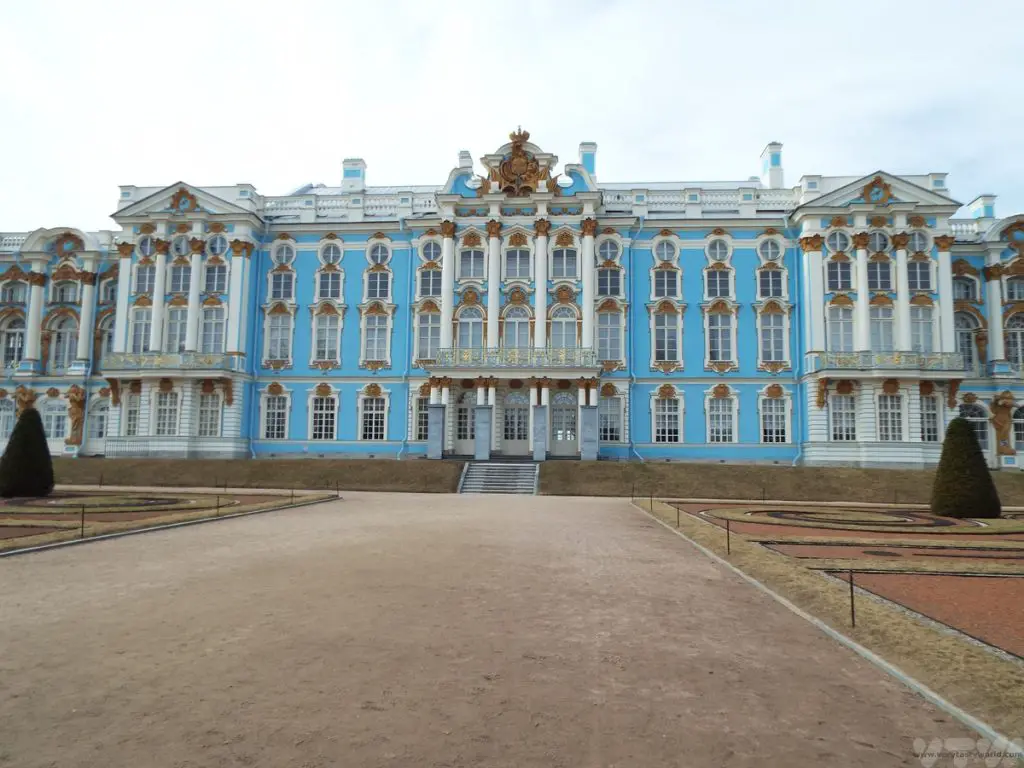
The ballroom and Amber Room (the only place that photos are not allowed is the Amber Room) are astonishing in their magnificence and you can imagine the sheer decadence of life in the palace. We visited out of season and it’s worth noting that this is a very popular tourist attraction and there are often long queues in the summer.
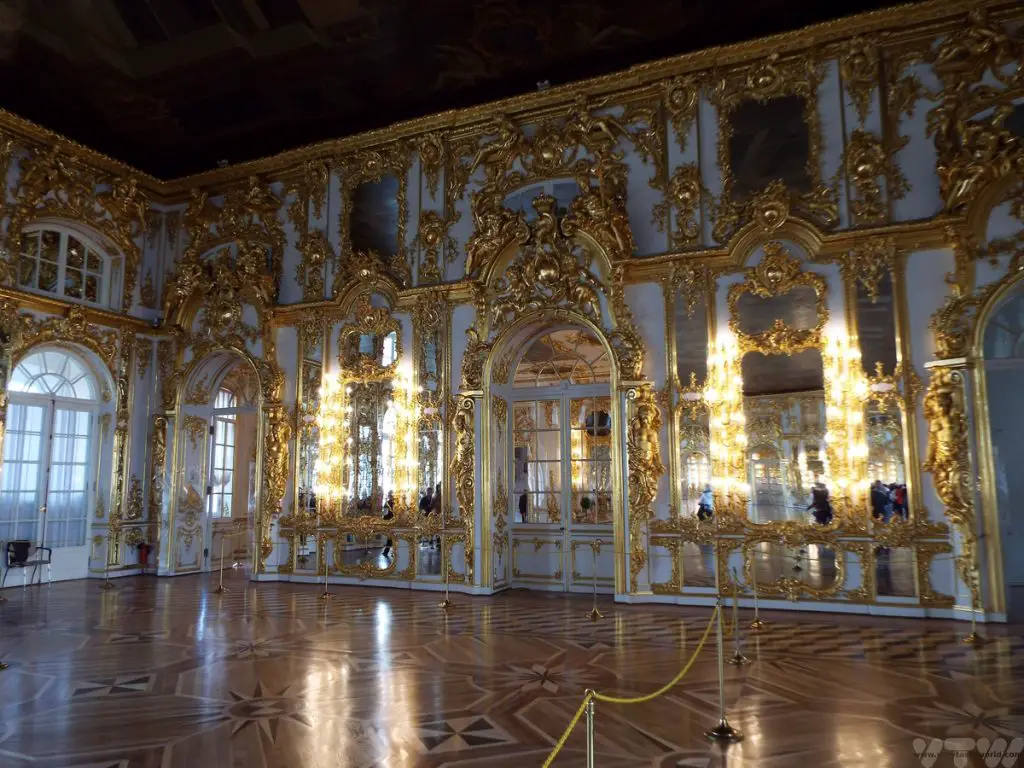
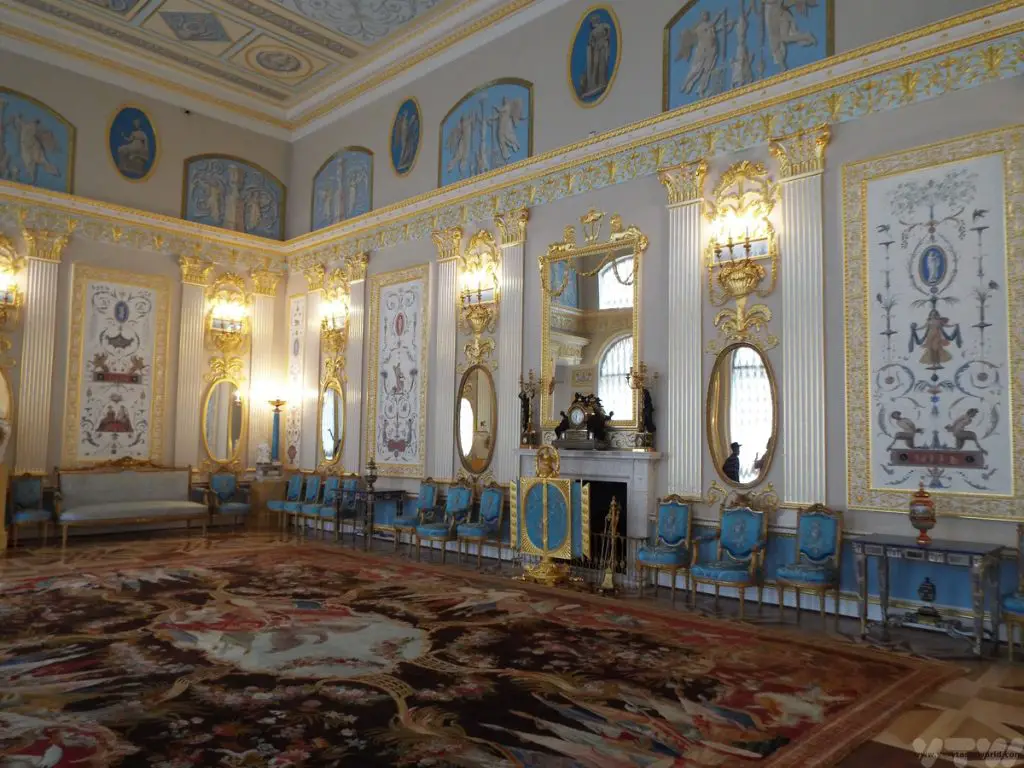
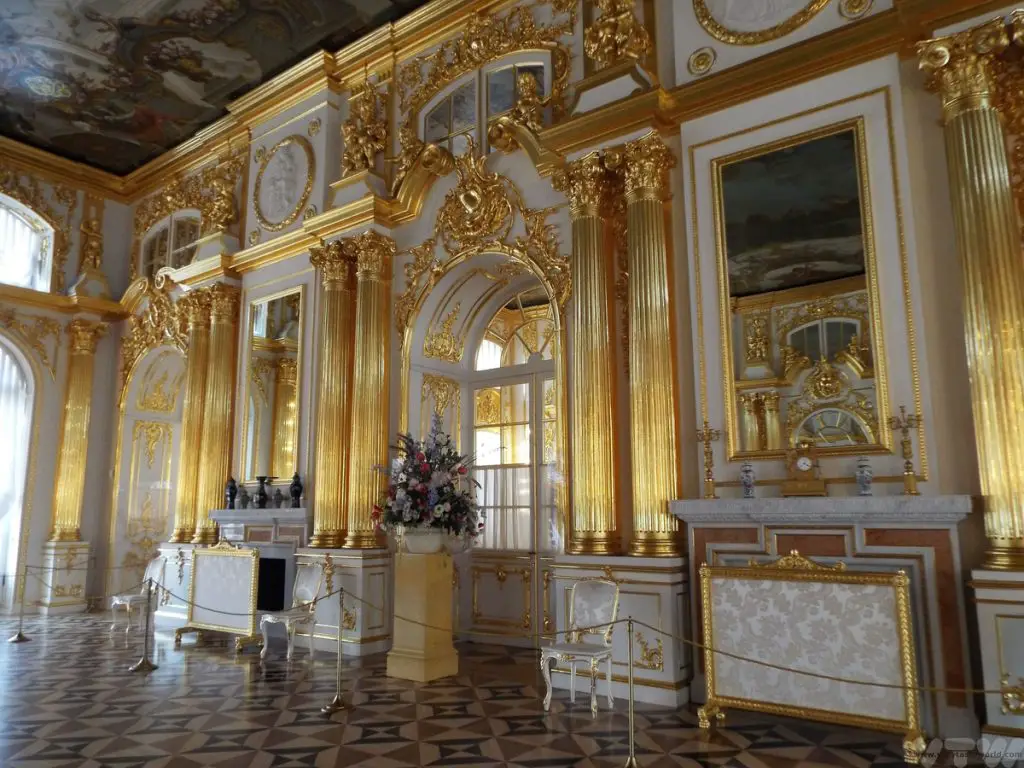
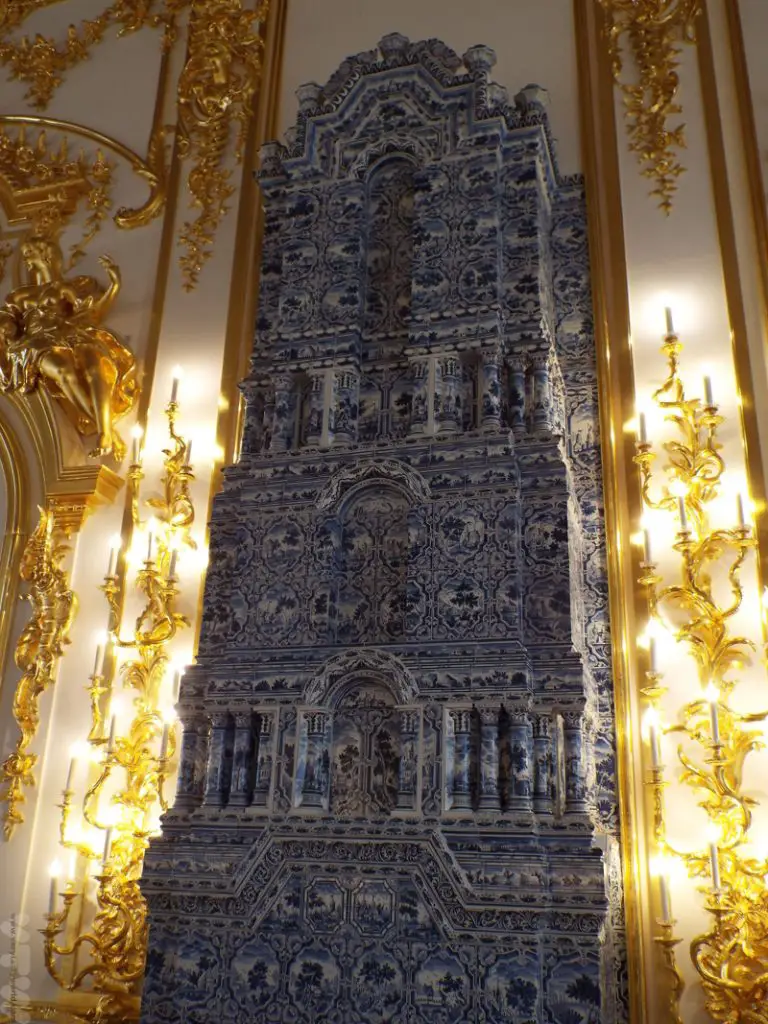
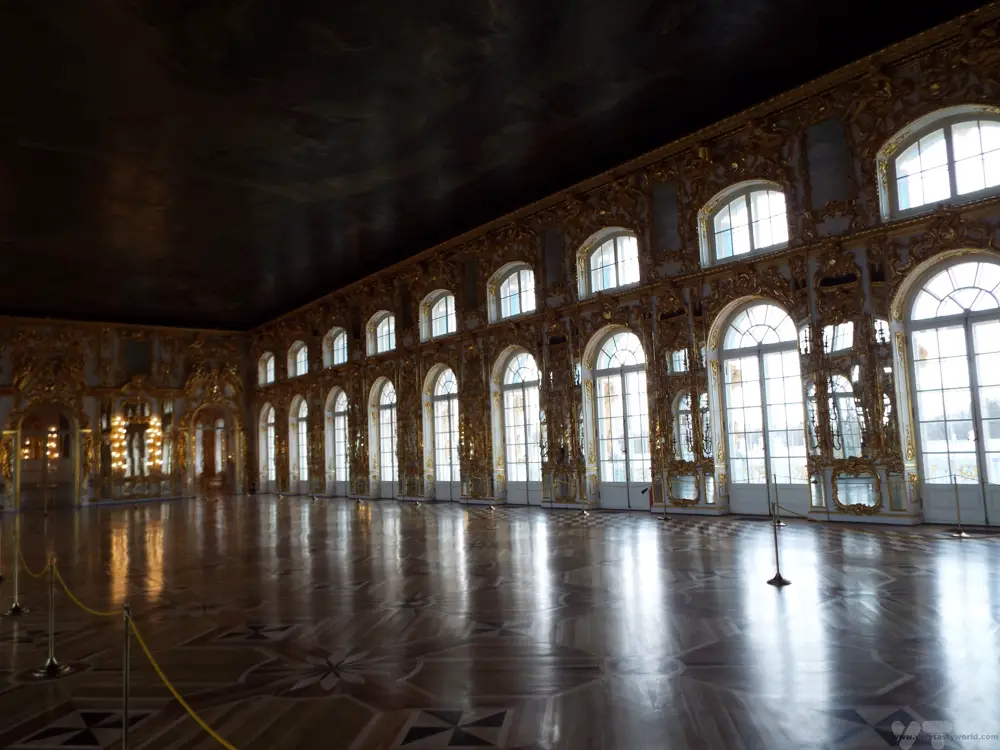
We also visited the exterior of the Alexander Palace which was the residence of Nicholas II, the last Russian Tsar, and his family. Its location outside St Petersburg meant that it was considered to be a safer residence than the Winter Palace in the heart of the city. However, it was the place where the family were initially held under house arrest immediately following the Russian Revolution before they were relocated to Tobolsk and eventually executed.
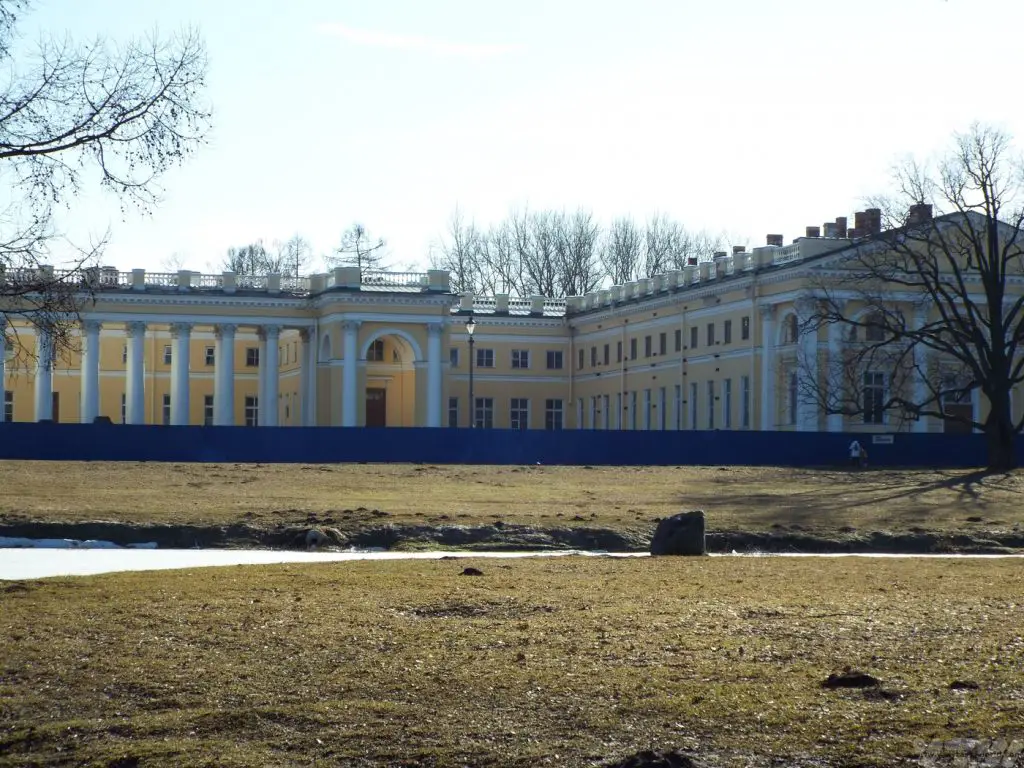
On our return to the City, we had a few hours in the evening to explore on our own and get a meal. Then we were picked up and taken to the railway station. As part of the tour our tickets had been pre-arranged and we were taken to the platform to ensure we caught the right train.
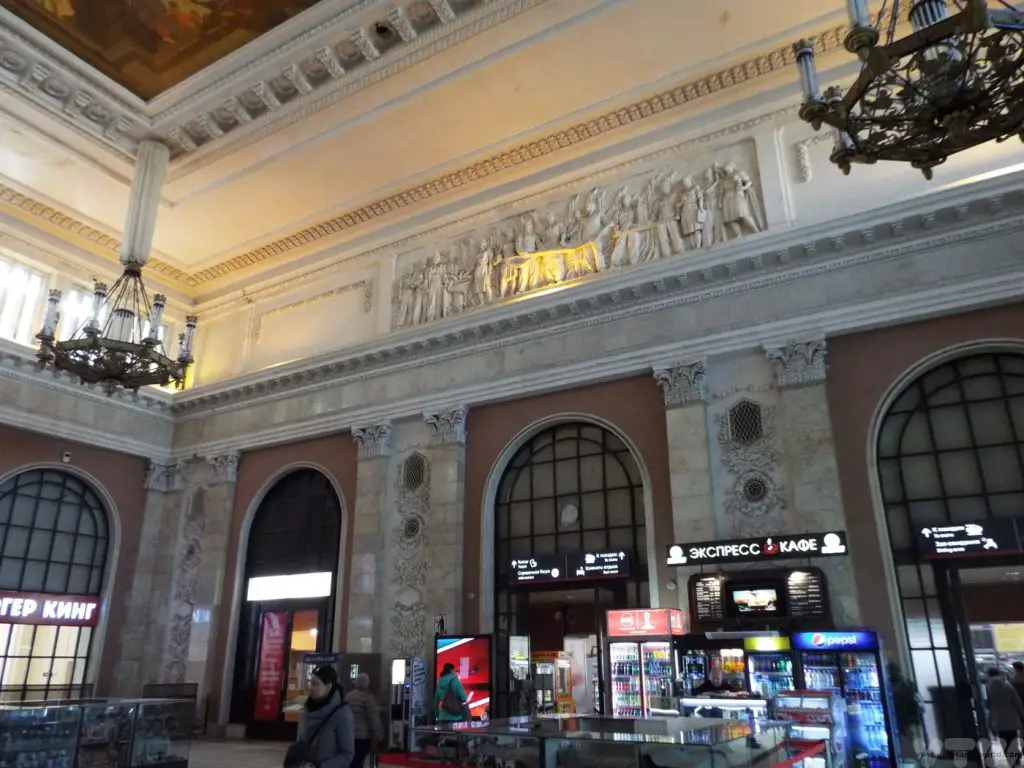
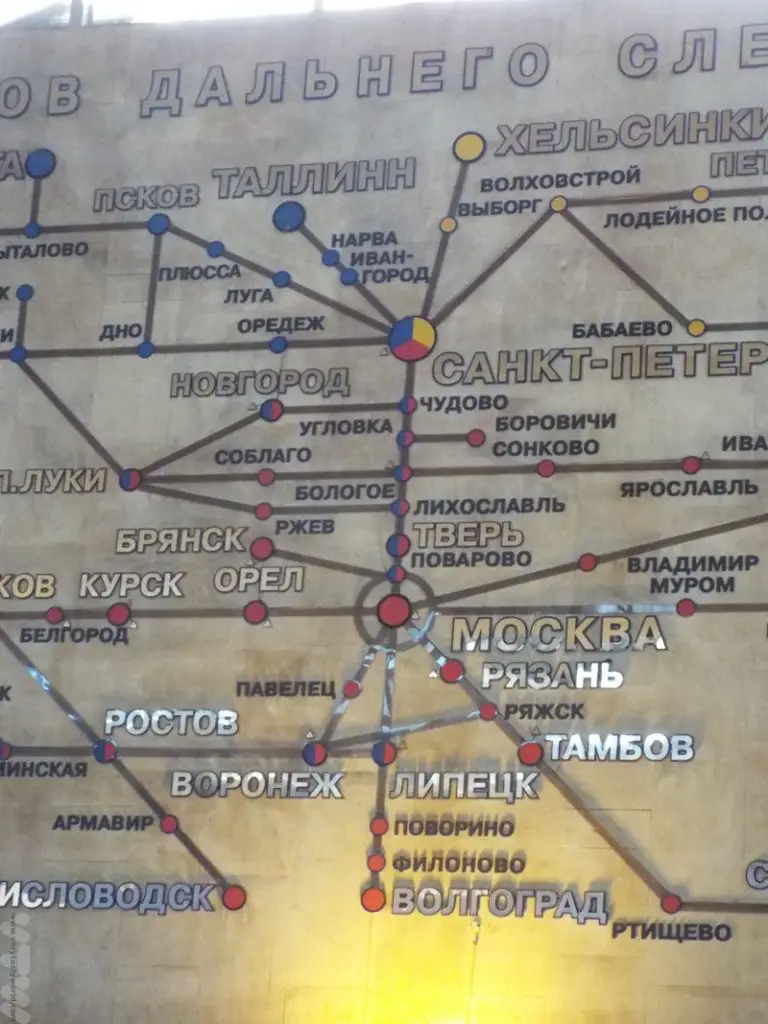
To contrast with our basic ferry cabin, we treated ourselves to a bit of luxury on the train. We caught the 23:40 ‘Grand Express’. It has been described as hotel on wheels. Our cabin’s seating converted to almost a double bed width and also included a table where we could dine and had a private shower room and toilet. A TV was available too. Breakfast was included (pre-ordered as we checked into the train via the carriage’s steward) so that we could dine the following morning as we made our way into Moscow.
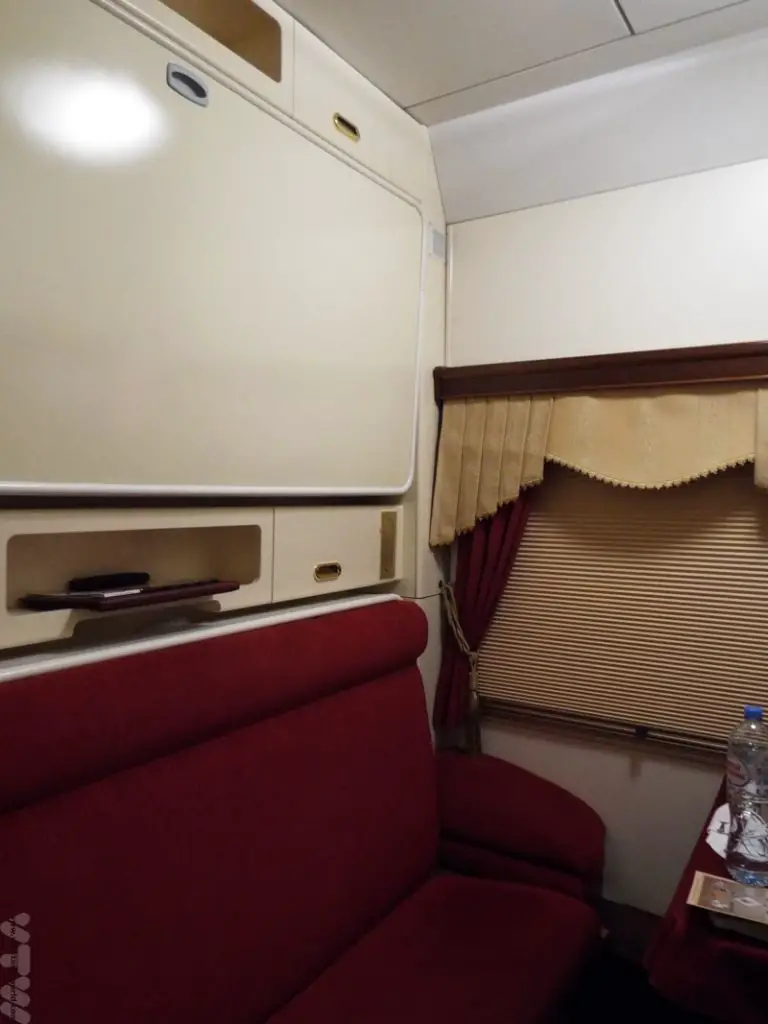
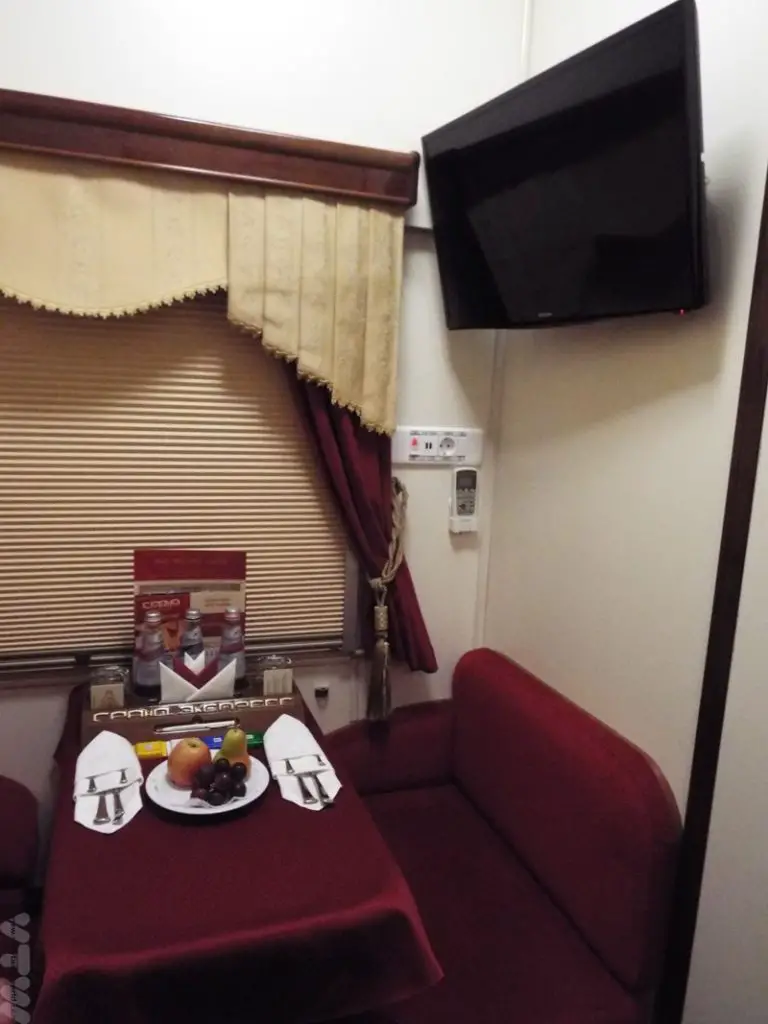
The ‘Grand Express’ train also has standard compartments carriages of 1st (2 berth) and 2nd (4 berth) class which are still very comfortable and somewhat cheaper. Some of the other cabins classes do not include breakfast but this is arranged on arrival in Moscow if needed.
Day Three – A Whistle-Stop Tour of Moscow
Our train pulled into Moscow Leningradskaya station at 08:30 the following morning, bang on time.
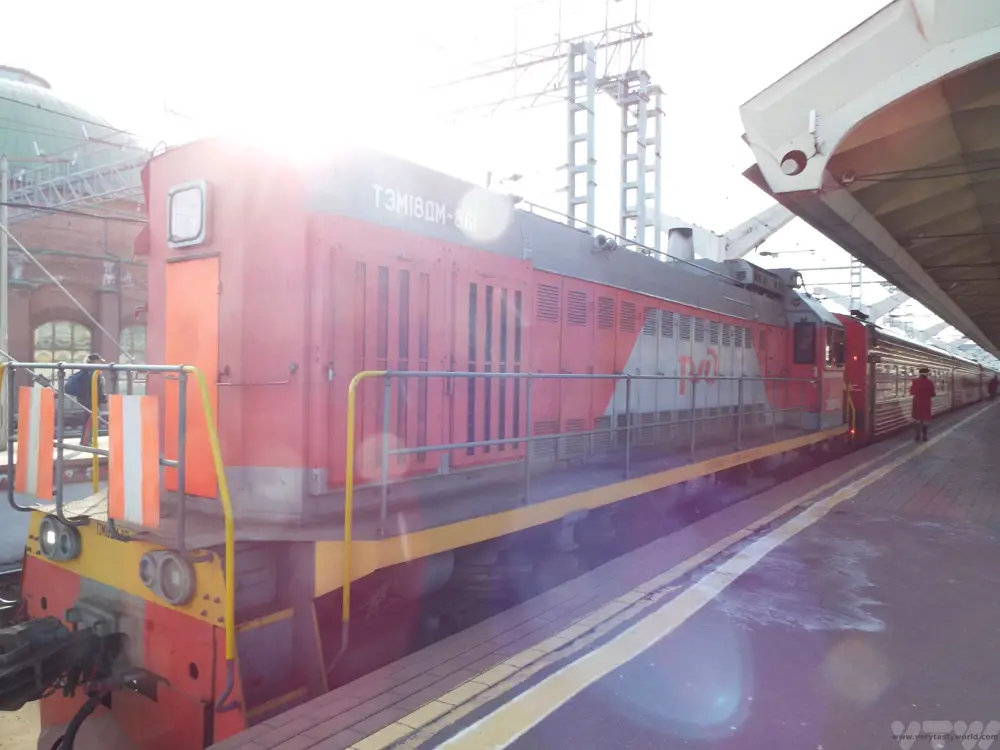
We were greeted and taken to a local hotel, the Katerina City Hotel Moscow, which had been booked for us for the day. This was a great idea. It meant that we could keep our luggage there and could also use the facilities. Breakfast is available if wanted. We were instructed to meet our guide for a city tour at 10am.
Our guide loved Moscow. She emphasised her passion for her city by declaring that, “St Petersburg is the head of Russia but Moscow is its heart.” With only a day in the city, the aim was to visit the major sites, so she bought us Metro tickets and we set off on a walking tour. Many of the stations on Moscow’s underground system are stunningly beautiful and, as we had a Metro pass to travel freely, we explored some of the more interesting stations. It’s not unreasonable to assert that some of these glorious stations are art galleries in themselves.
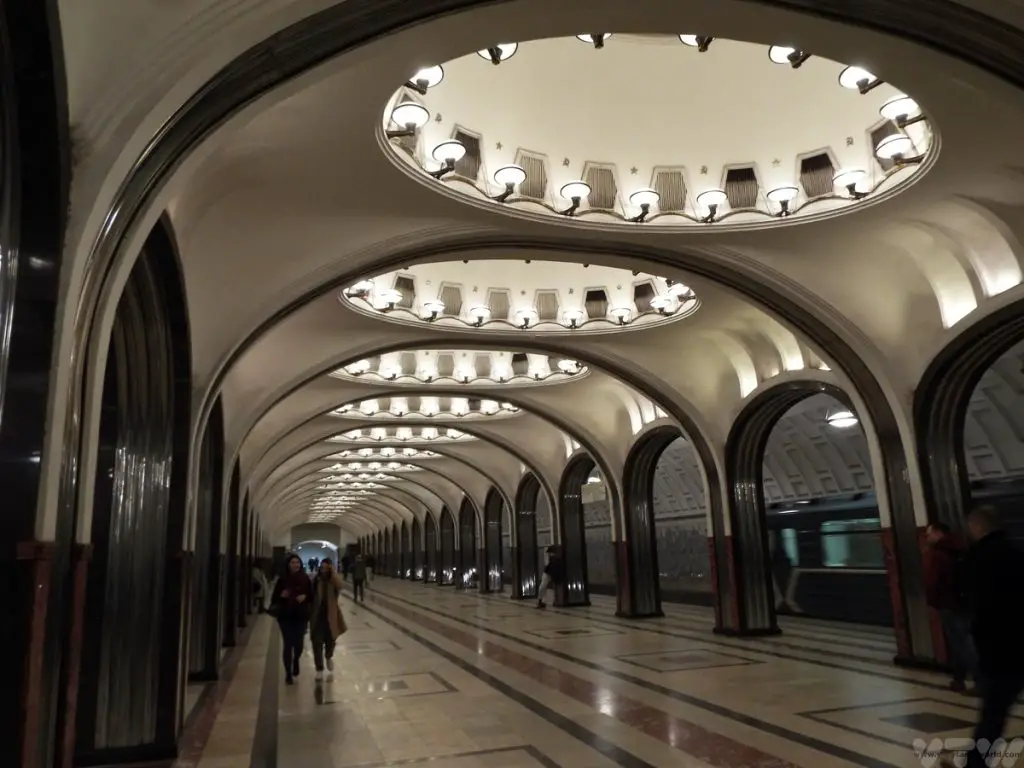
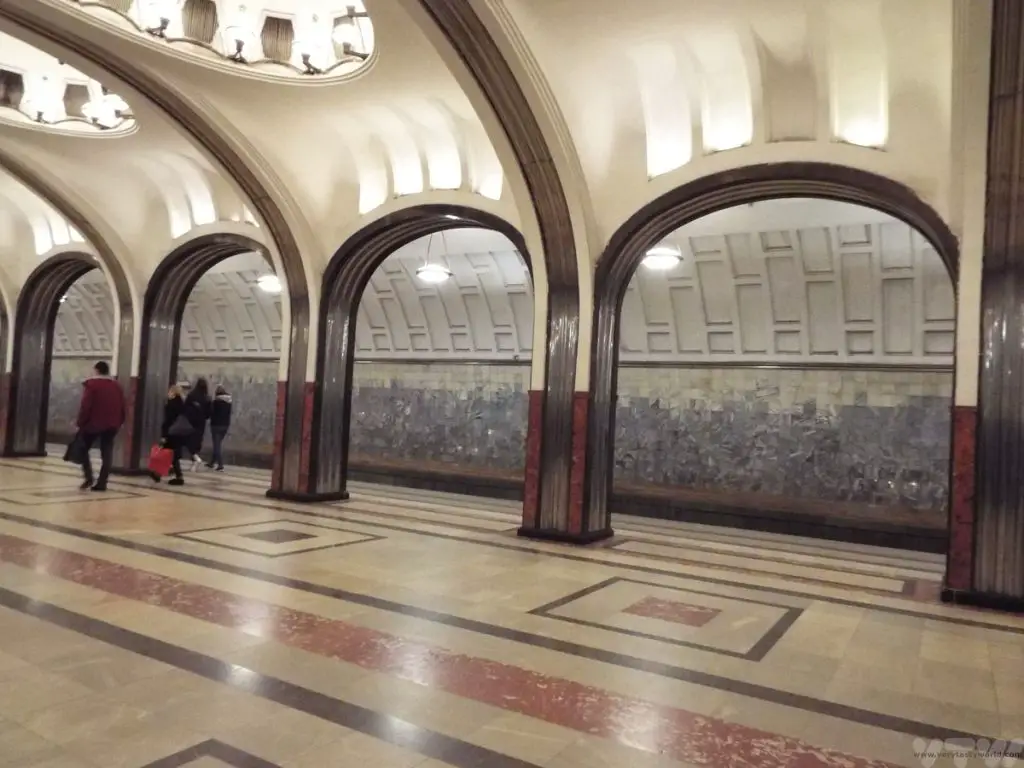
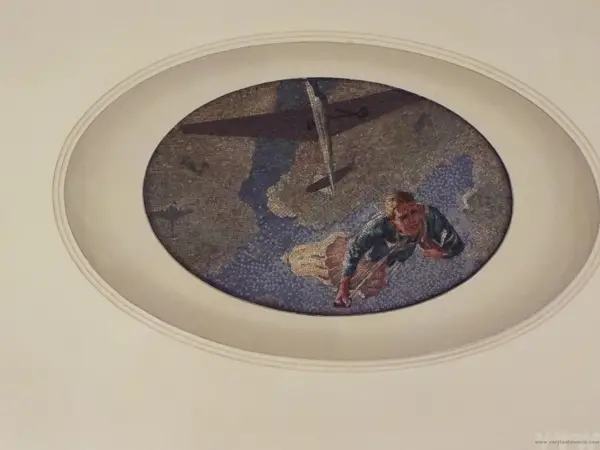
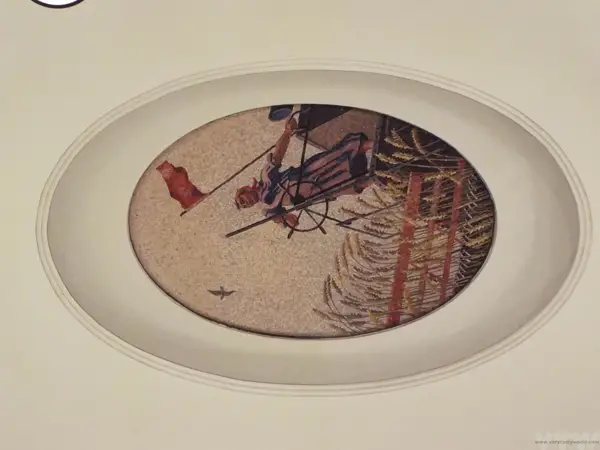
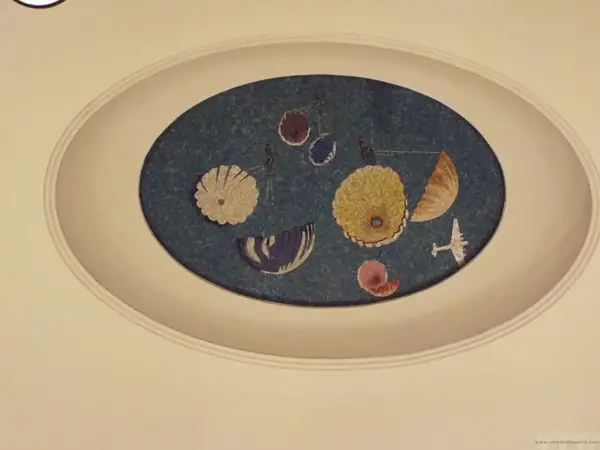
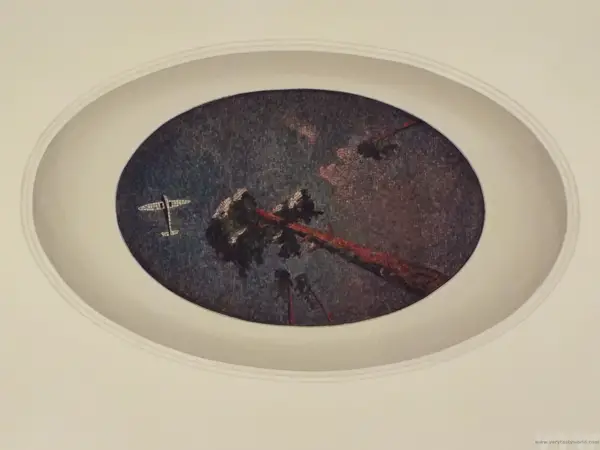
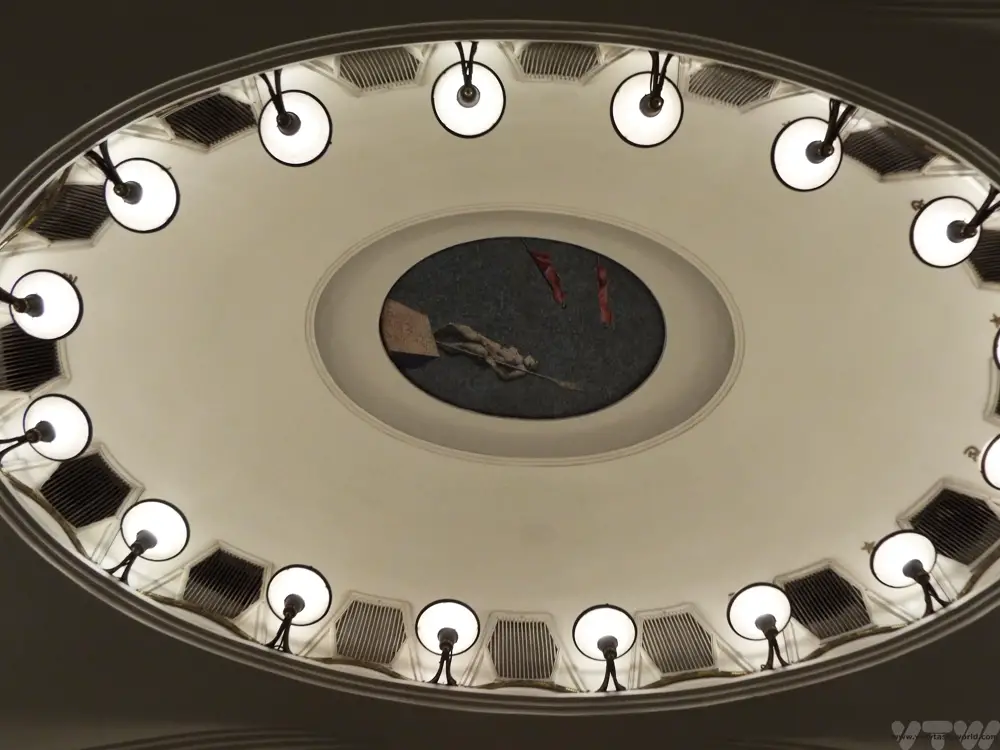
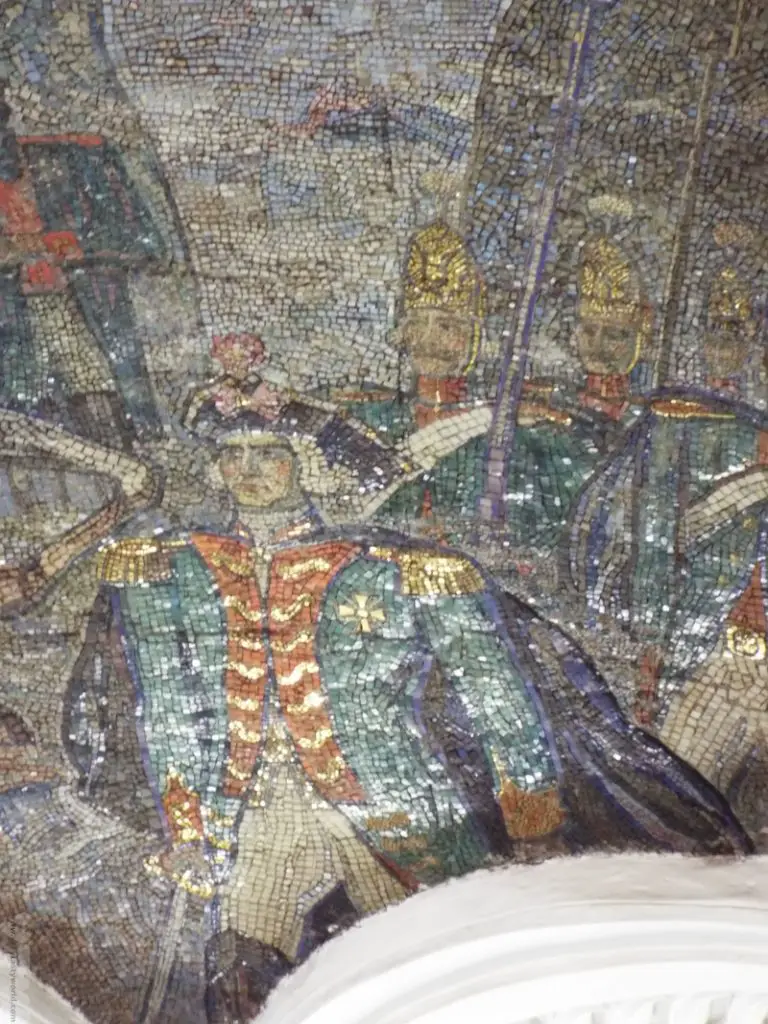
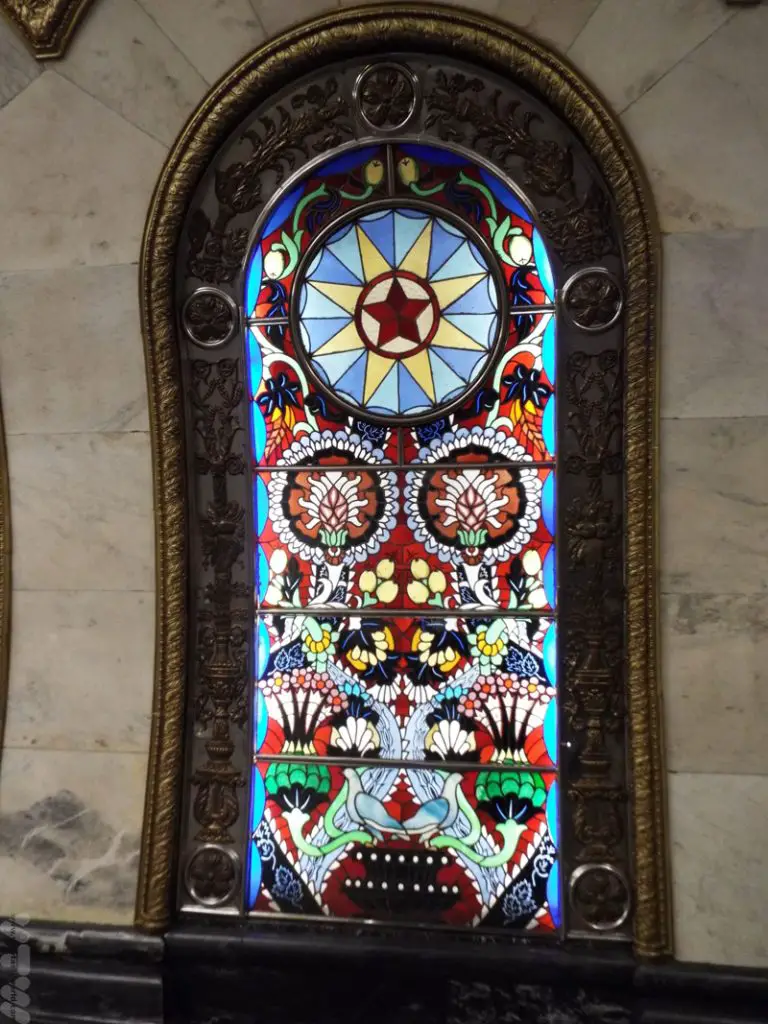
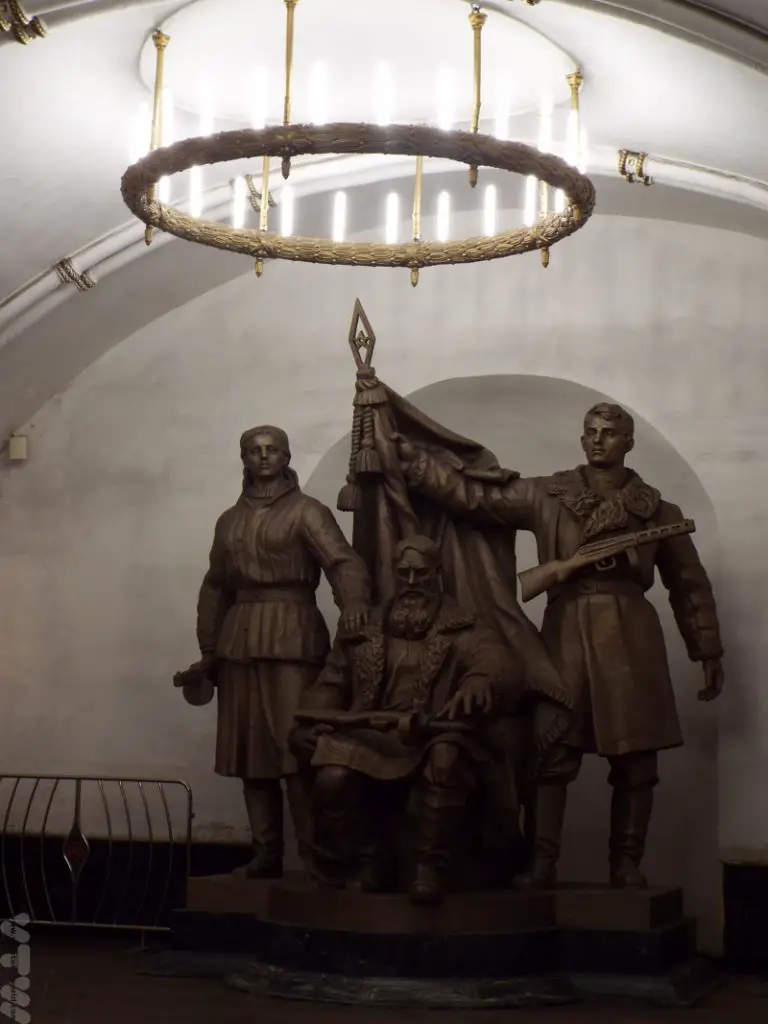
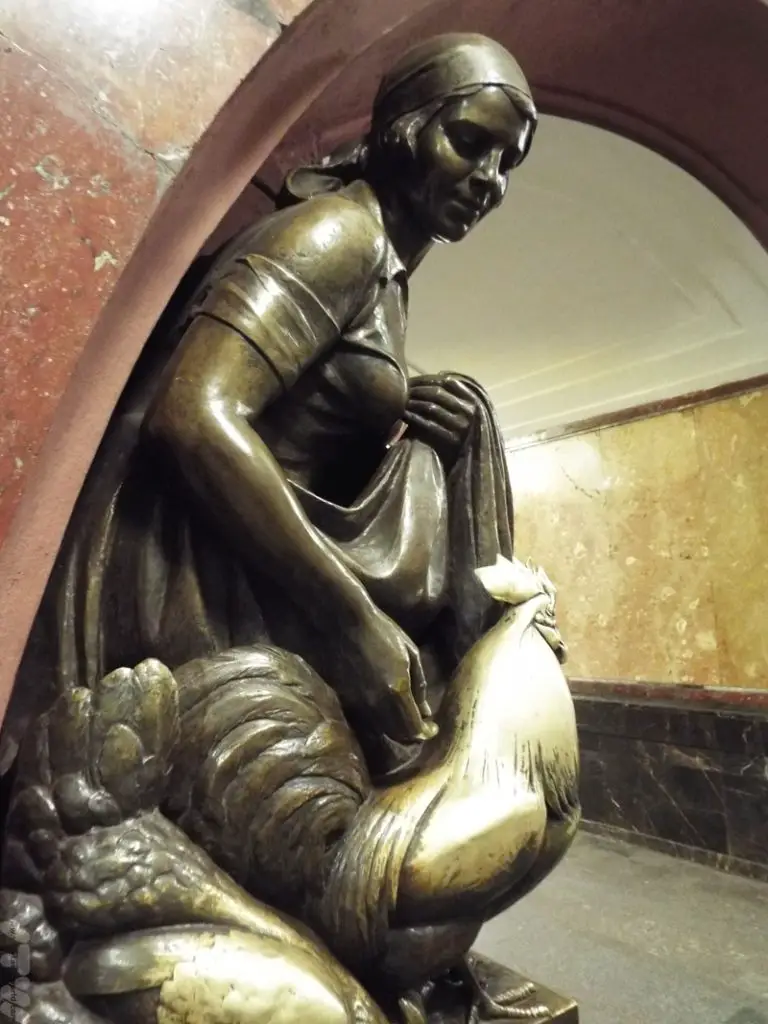
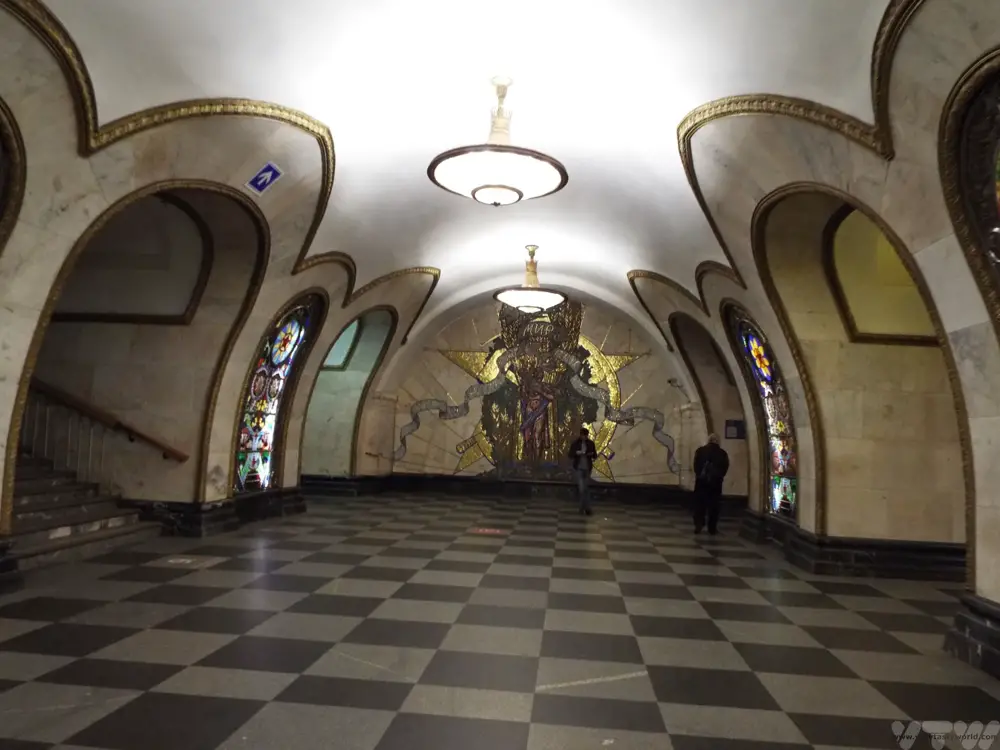
Then we made our way to Red Square. It is one of the world’s most iconic public spaces, bordered by the eastern red walls of the Kremlin, the colourful onion domes of St Basil’s cathedral and the megastore GUM.
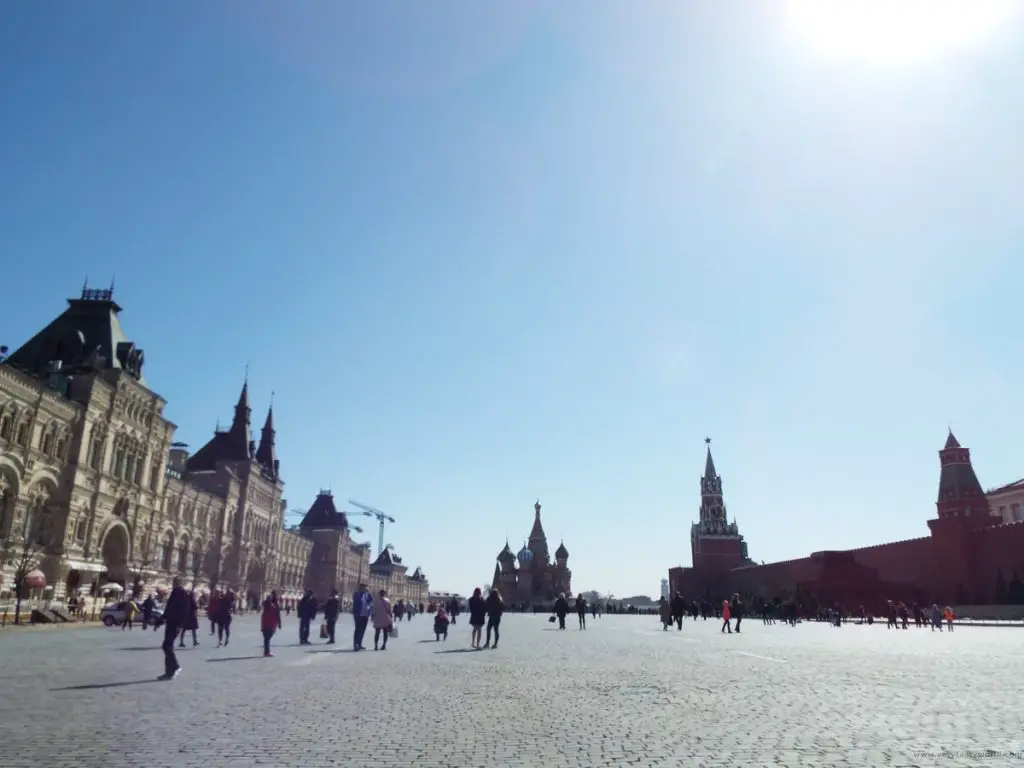
It’s worth noting that Lenin’s tomb is not open on Fridays, so you need to take that into account when planning your trip if you wish to visit and see the preserved body of the founder of the Soviet Union.
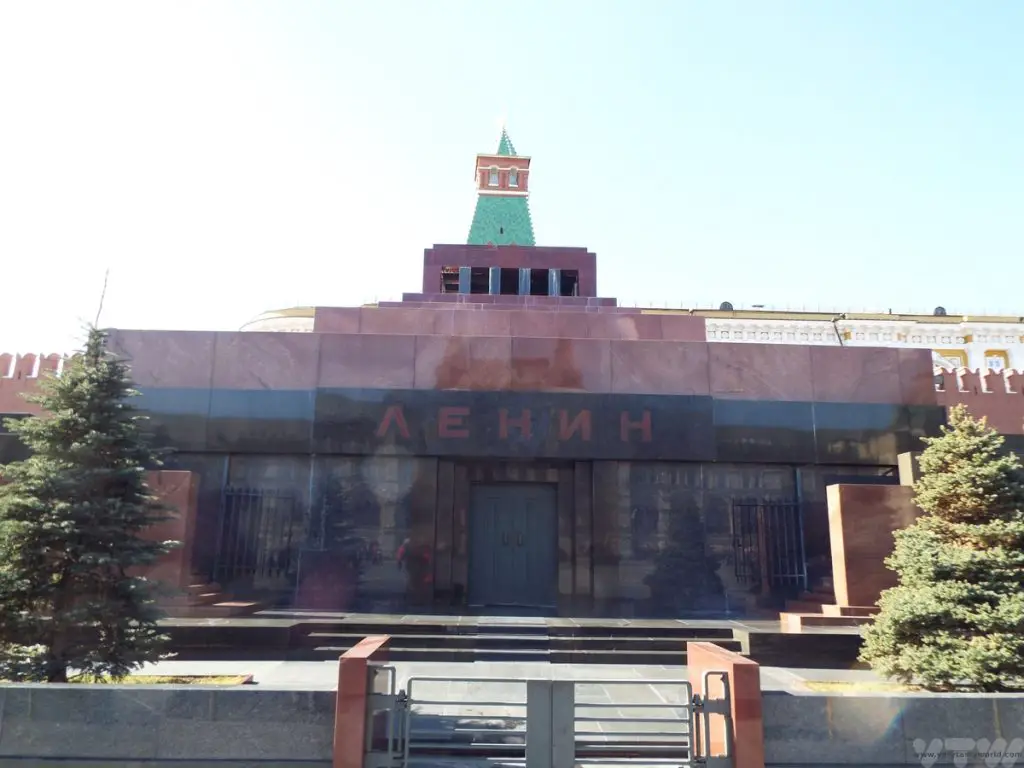
St Basil’s Cathedral, aka the Cathedral of Vasily the Blessed, and officially Cathedral of the Intercession of the Most Holy Theotokos on the Moat, is so very, very beautiful and it was a special place to visit. Ivan the Terrible (who our guide insisted should have been named Ivan the Awesome) commissioned the building and it was constructed between 1555 and 1561.
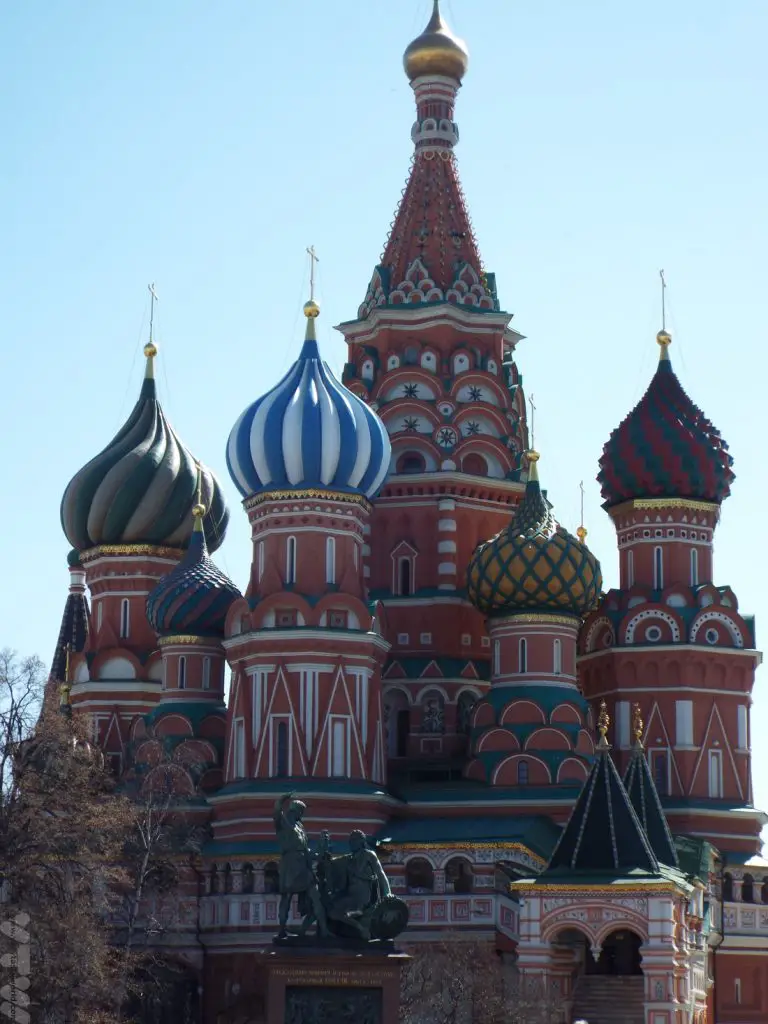
We had imagined it to have a vast interior but in fact it comprises several chapels: eight chapels located around a central chapel. An additional chapel was built some years later over the grave of the Saint Vasily (Basil), a local saint who was highly revered. The Soviet Union had a policy of state atheism so the cathedral was secularised during this time and is now a museum, although Orthodox Christian services with prayers to St. Basil now take place on a weekly basis.
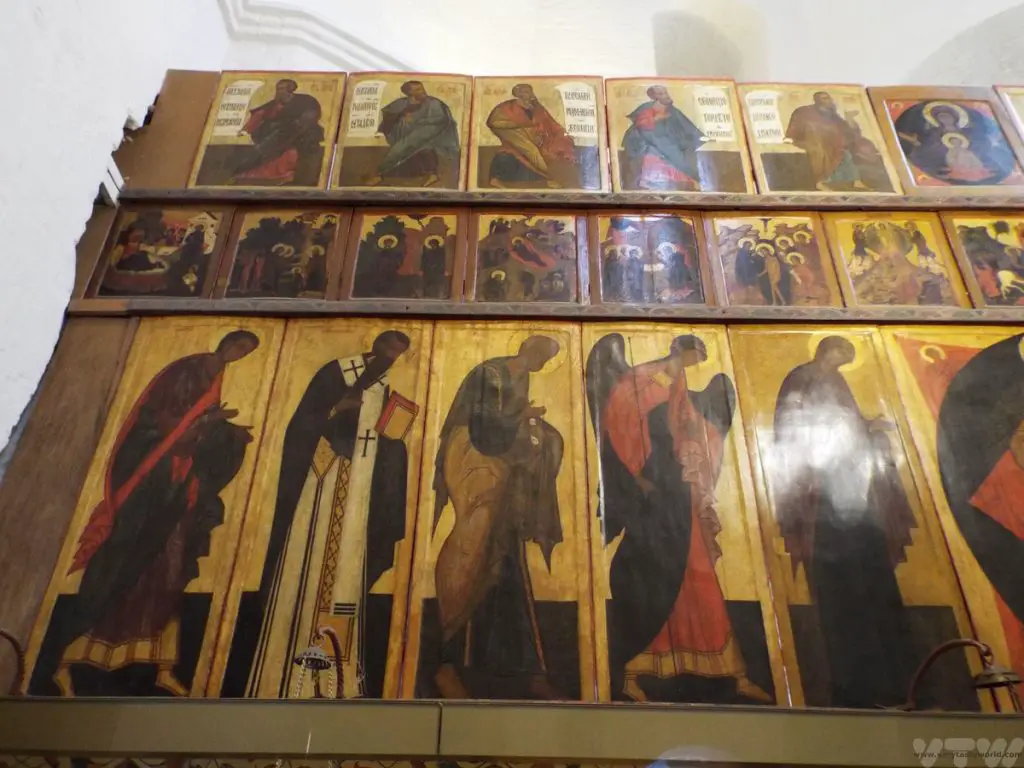
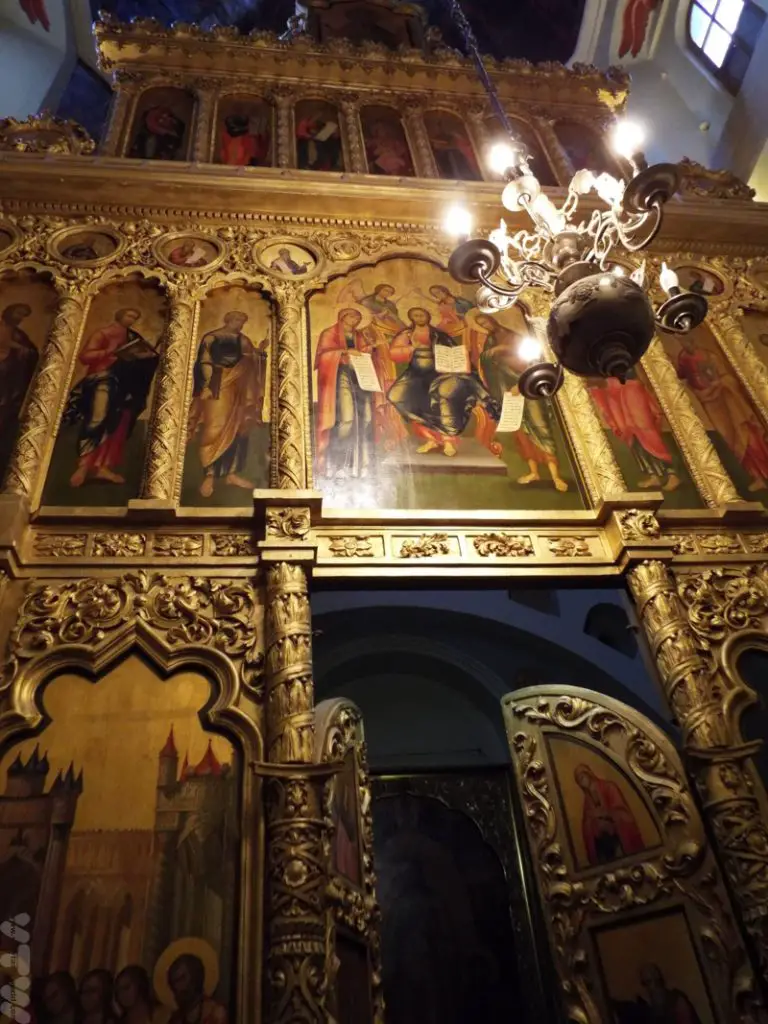
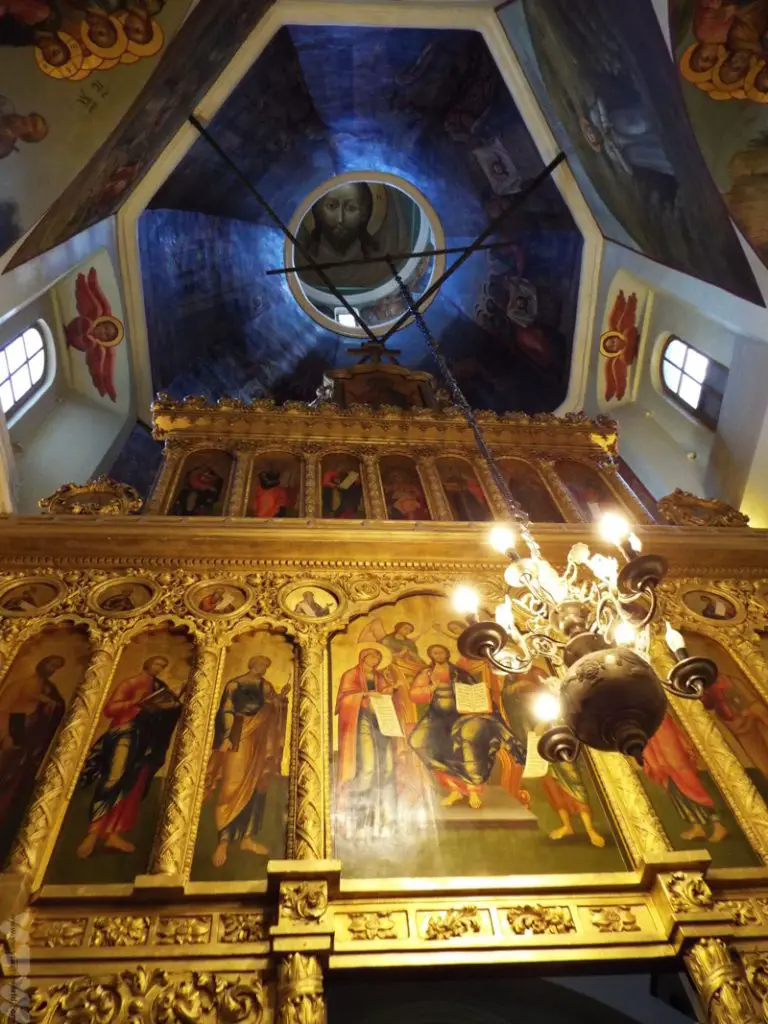
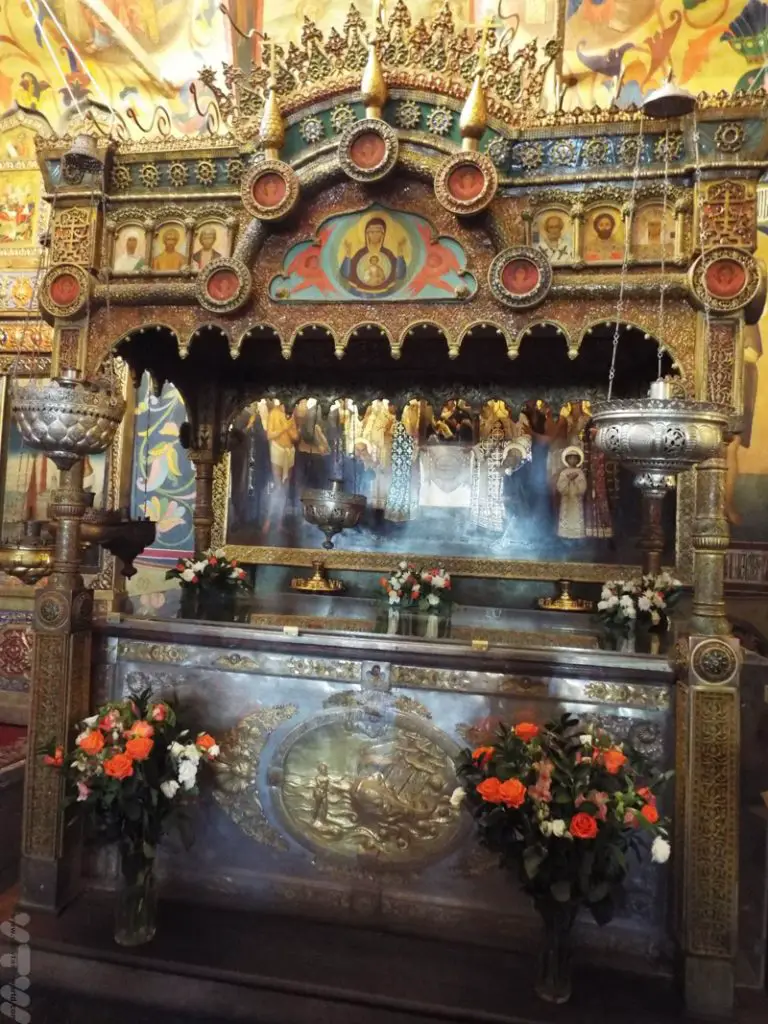
We also visited GUM, an enormous department store, and enjoyed its amazing architecture.
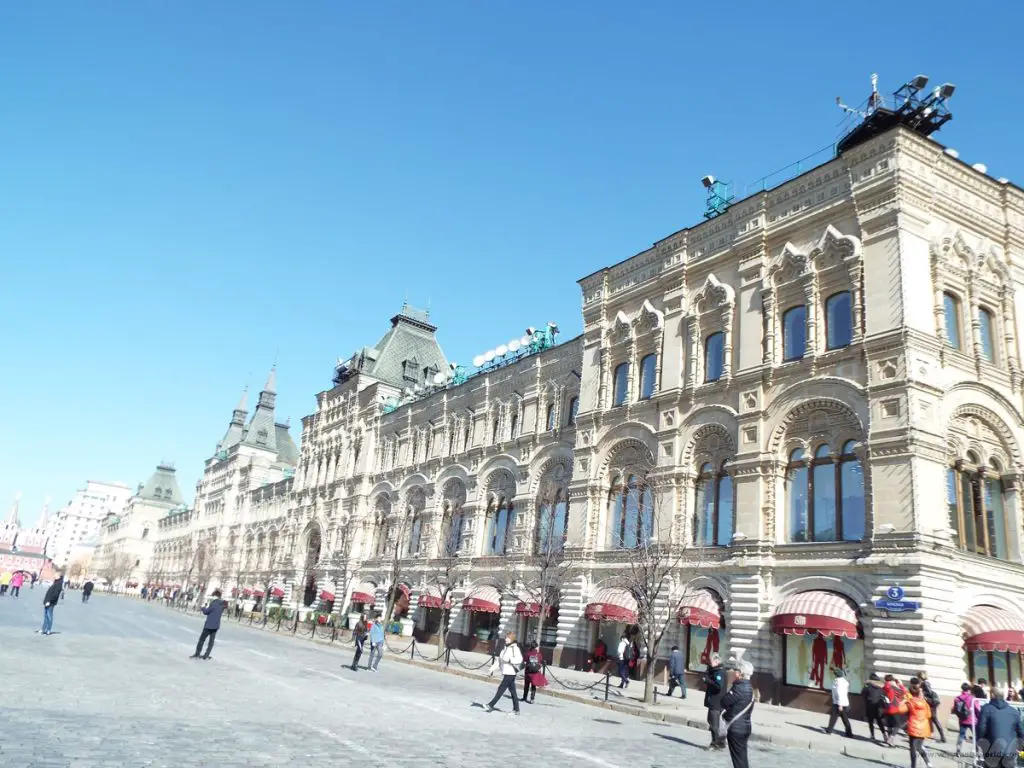
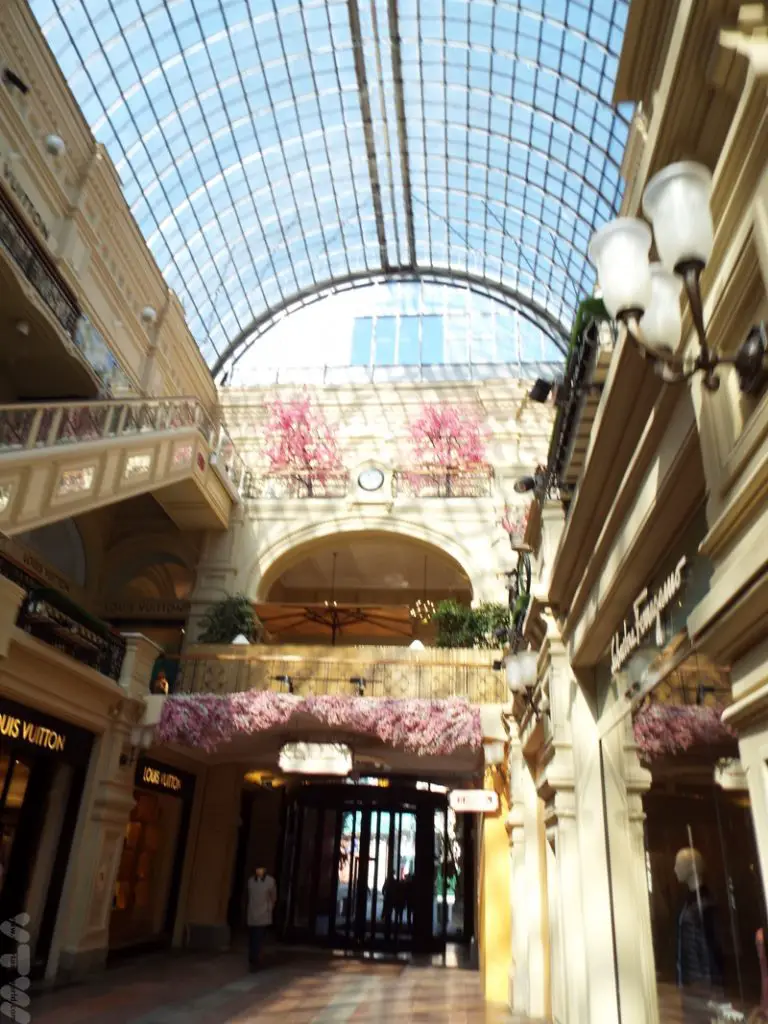
We had lunch at a restaurant a few streets away and enjoyed a warming bowl of borscht soup.
In the afternoon we visited the Kremlin. Security is tight and you will need to be prepared to have your bags checked and walk through a metal detector. If you are likely to set the alarm off (if you have metal limbs, for example), let your guide know – they will talk to the security guards and get you in via an alternative system.
The Kremlin (citadel) is fortified complex with Red Square to the east and the lovely Alexander gardens to the west. Inside its walls are five palaces and four cathedrals amongst other buildings such as the Grand Kremlin Palace that was formerly the Tsar’s Moscow residence, the official residence of the President of the Russian Federation and the State Kremlin Palace.
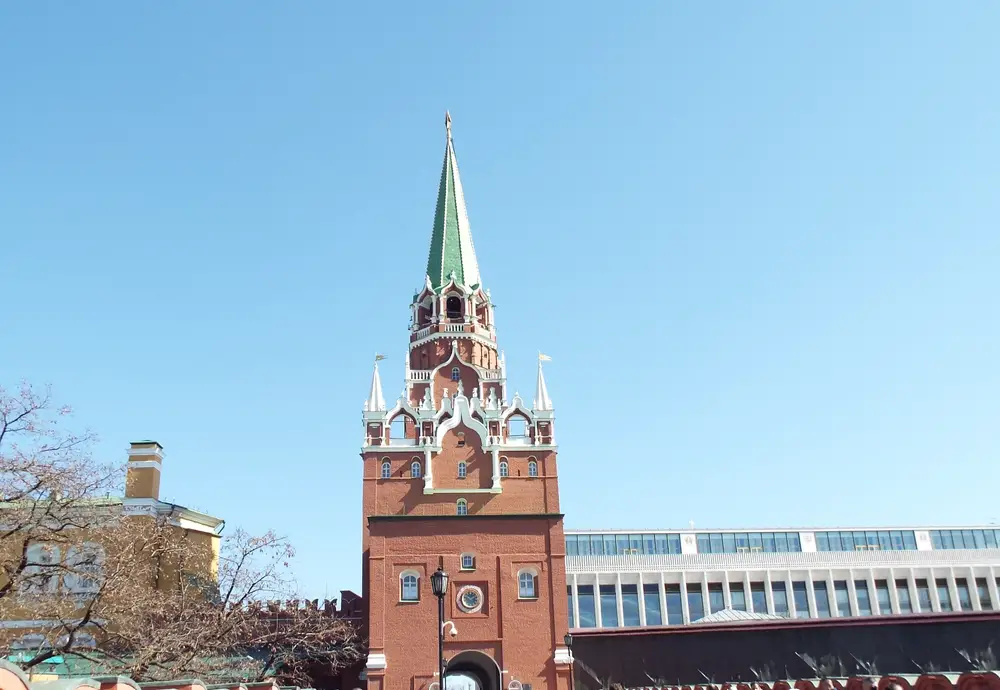
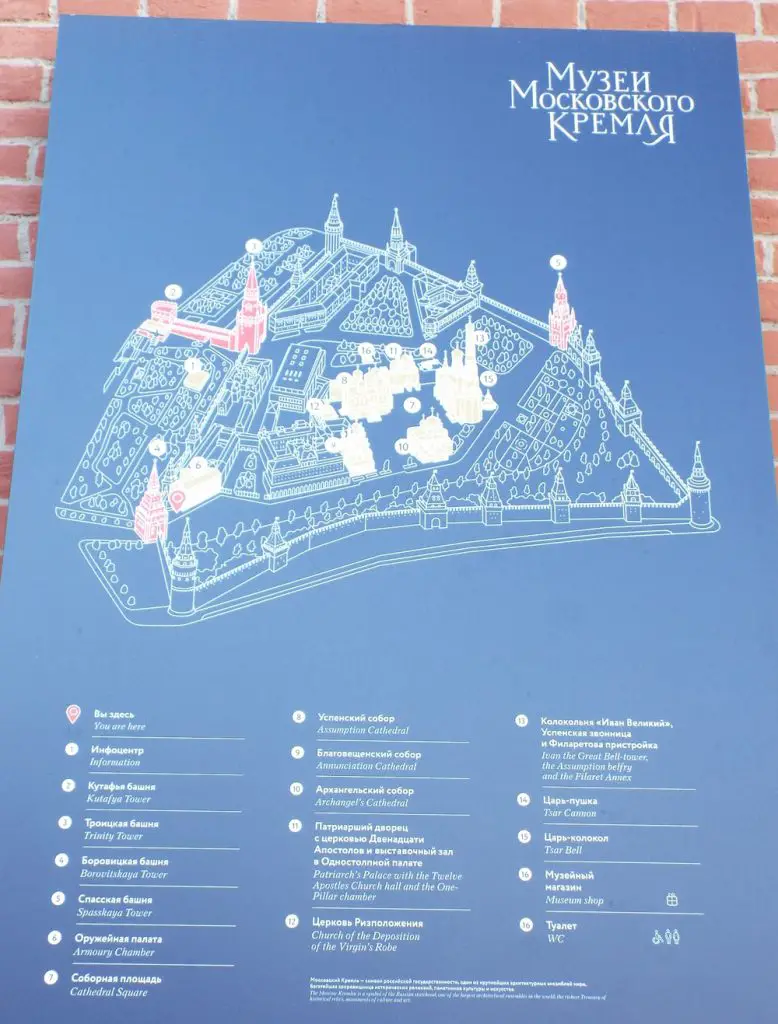
The State Kremlin Palace (also known as the Kremlin Palace of Congresses), was built inside the Kremlin between 1959–1961. It was commissioned by Nikita Khrushchev for the purpose of holding Communist Party meetings.
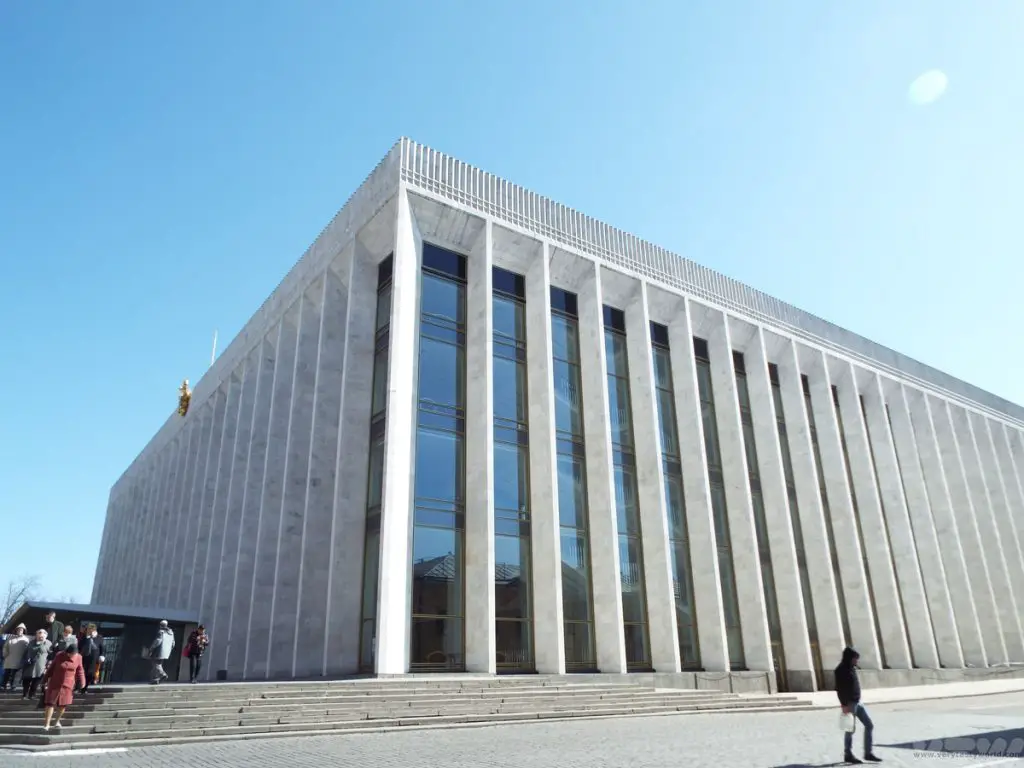
Two of the most popular attractions are a cannon that has never been fired in a war and a bell that has never been rung.
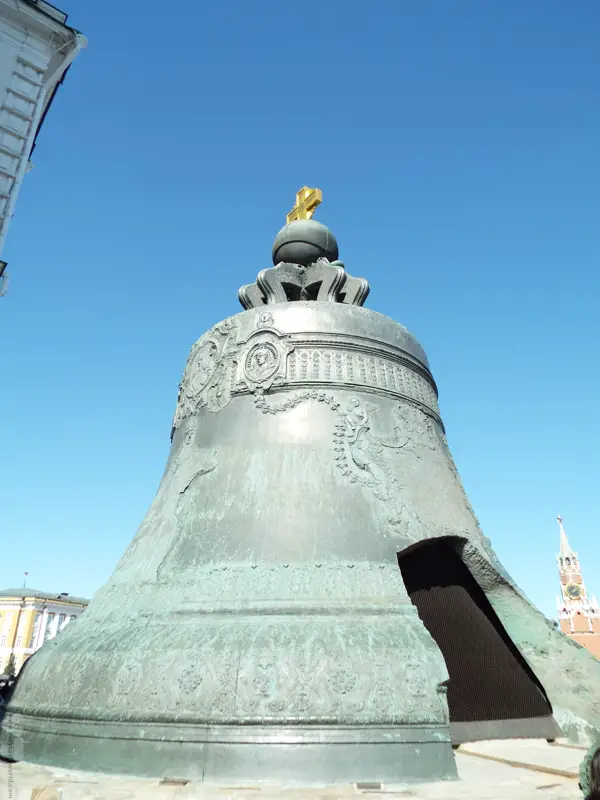
The Tsar Bell, the largest bell in the world, is also made of bronze but developed a large destructive crack and its sound has never been heard.
The Tsar Cannon was cast in 1586 by Andrey Chokhov who was renowned for his work with bronze. It was never used in a war and is largely symbolic. (Although there is apparently some evidence to suggest that it has been fired once.)
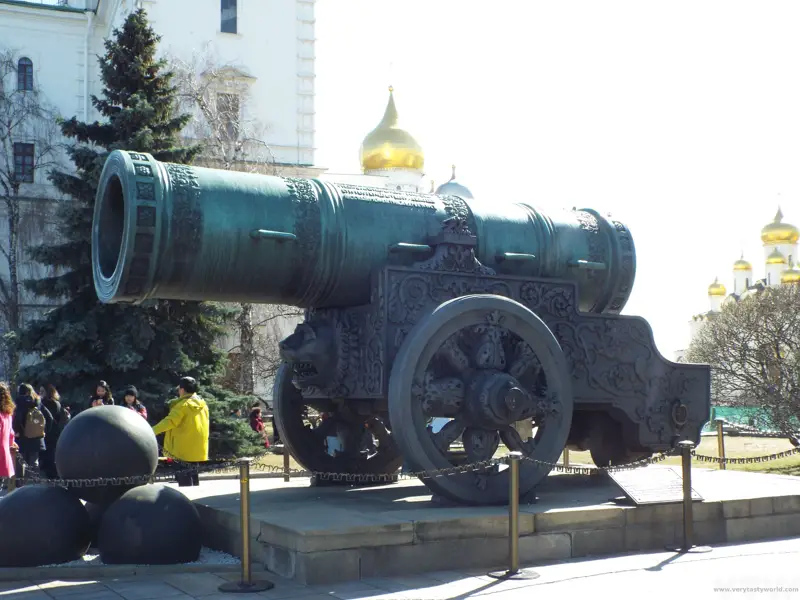
Cathedral Square is the most beautiful area of the Kremlin; it’s surrounded by a number of buildings, including three cathedrals.
The Cathedral of the Dormition was where all the Tsars were crowned and is considered to be Moscow’s primary church. It was designed by Aristotele Fioravanti and completed in 1479.
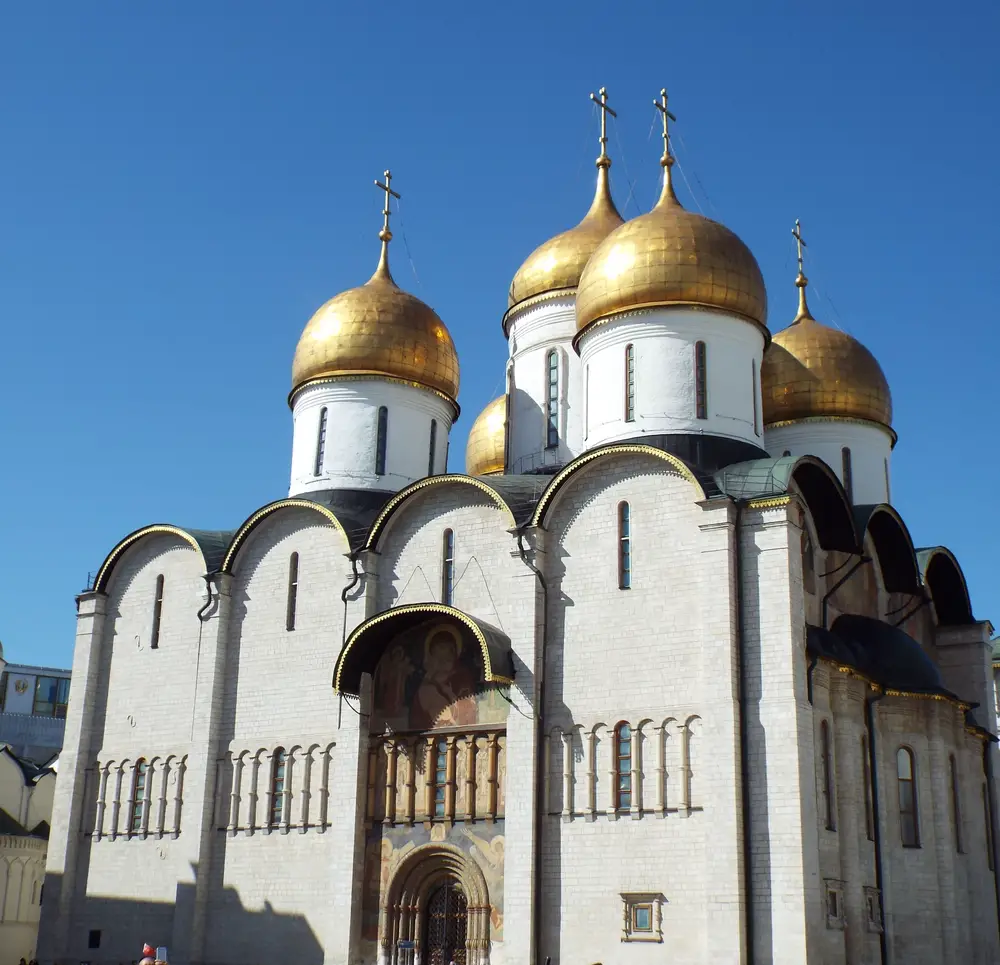
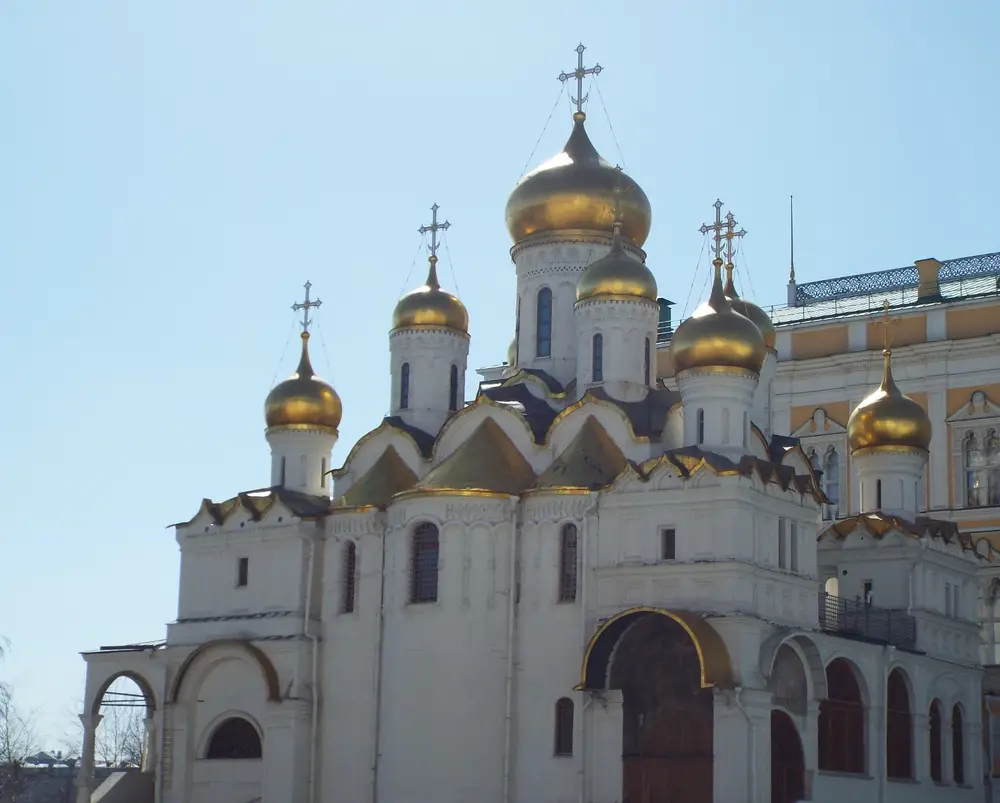
The Cathedral of the Annunciation was completed in 1489 but was reconstructed over the years.
The Cathedral of the Archangel Michael was constructed later, in 1508.This contains the final resting places of most of the Muscovite monarchs from the 14th Century until Peter the Great moved the Russia’s capital to St Petersburg.
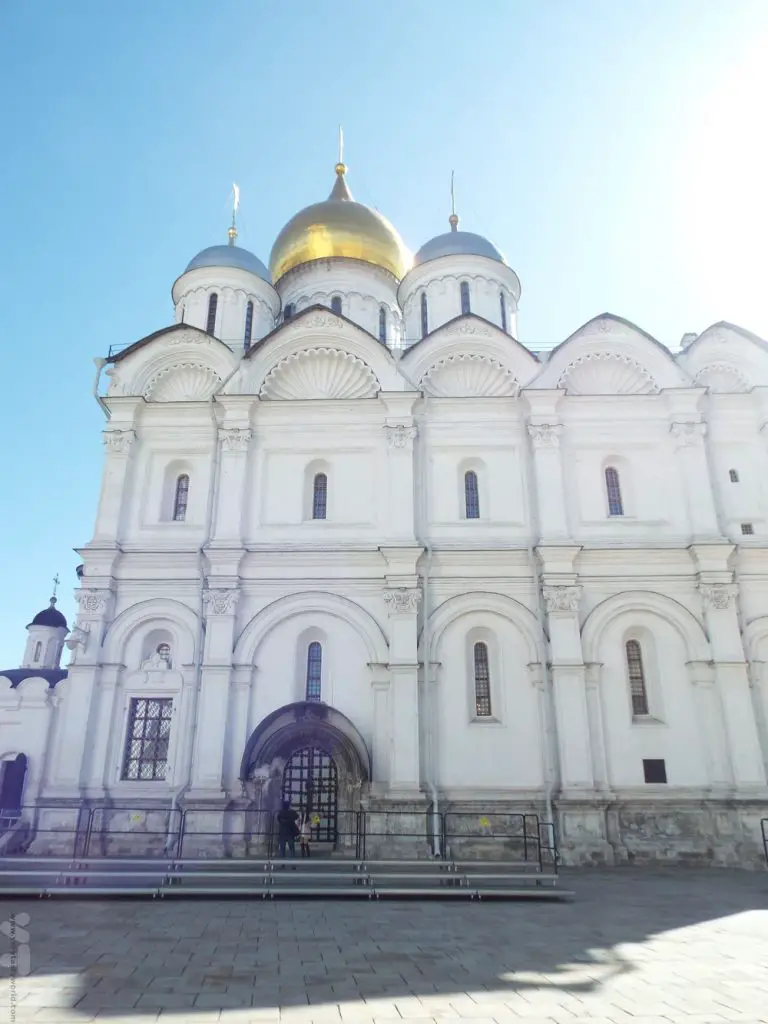
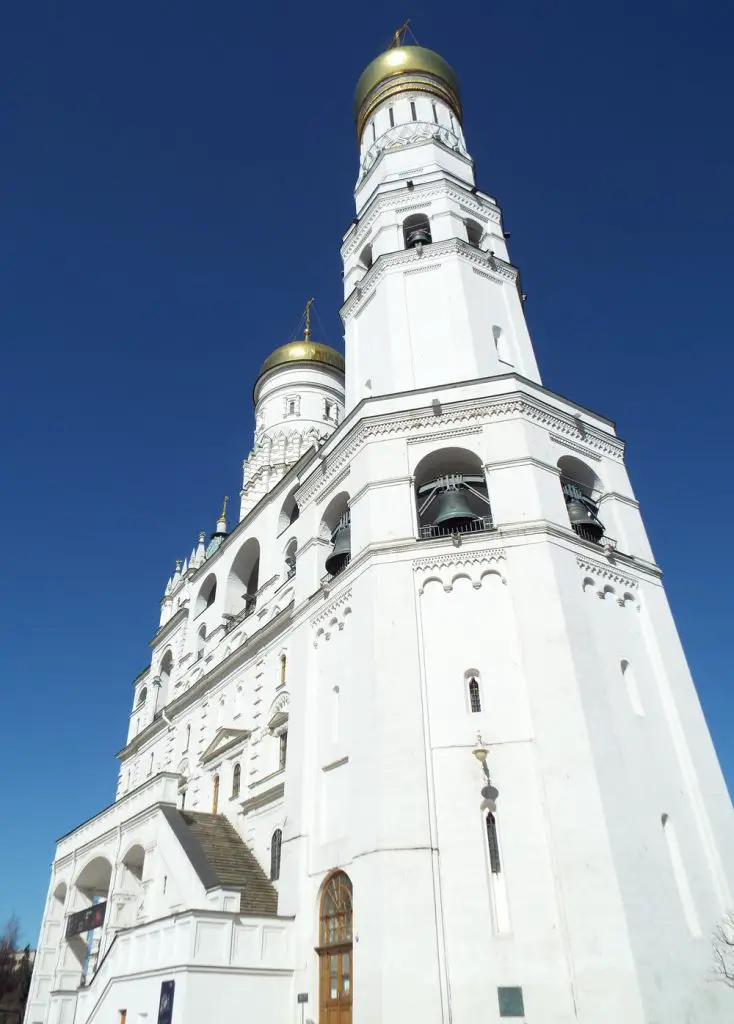
The Ivan the Great Bell Tower, located next to the Tsar Bell, reputedly marks the very heart of Moscow, the precise centre of the city. It is 81 metres high (it was the tallest building in Moscow until the Russian Revolution) and was completed in 1600. It was commissioned by by Grand Duke Ivan Kalita, the Grand Duke of Moscow from 1325.
Around the corner from Cathedral Square are further buildings, including the Arsenal and the Armoury buildings.
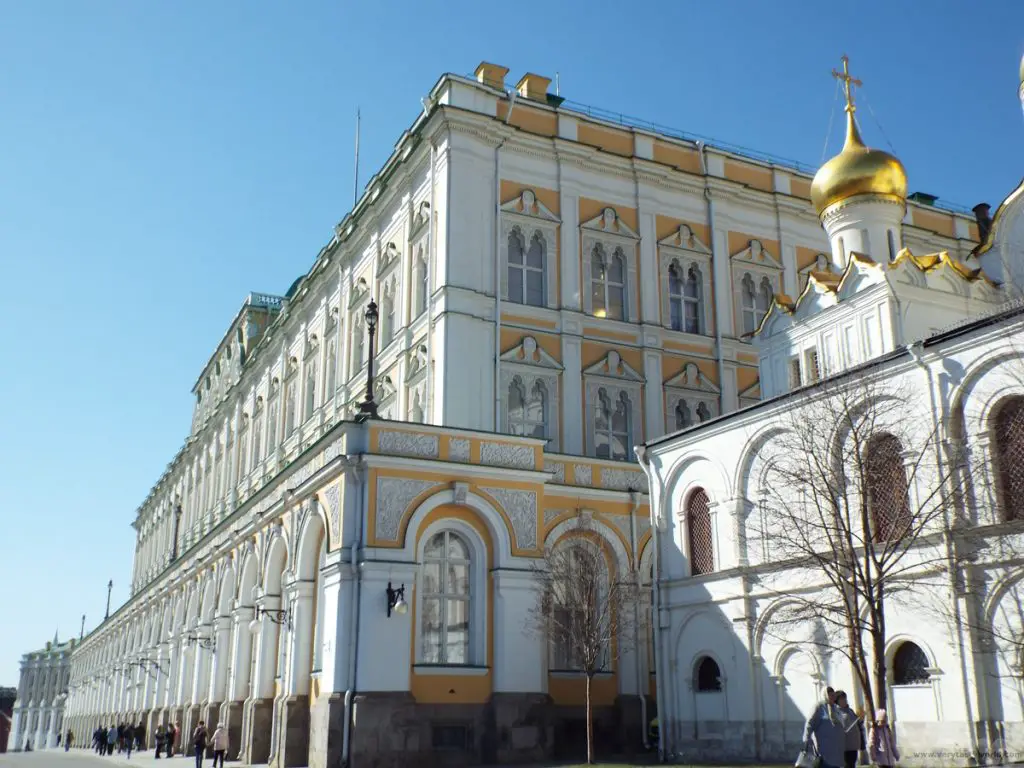
The latter is a museum which contains a plethora of objects from across Russia’s history. Of note is the collection of ten Fabergé eggs, the largest single collection of these jewelled Imperial eggs, Easter gifts from the Tsars to their wives and children. The eggs are astonishing in their design and intricacy and it was wonderful to be able to see them up close.
After our Moscow tour we went back to the hotel for a short time to relax and grab a bite to eat at a local café, before being picked up late evening to be taken to the station for our train ride.
Day Four – Return to St Petersburg
We caught the Grand Express overnight and arrived at St Petersburg the following morning.
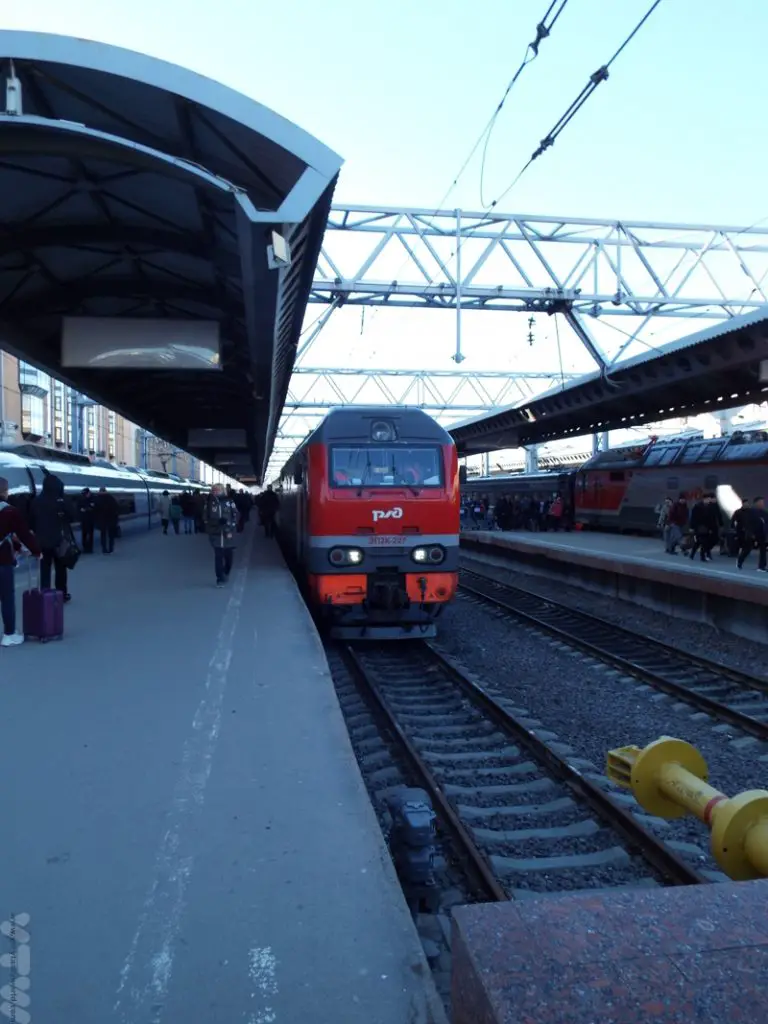
We visited the Church of the Spilled Blood, an Orthodox church, adjacent to the Griboedov Canal, which was constructed during the reign of Alexander III as a memorial to his father Alexander II, who was assassinated by anarchist conspirators on that very spot in 1881.
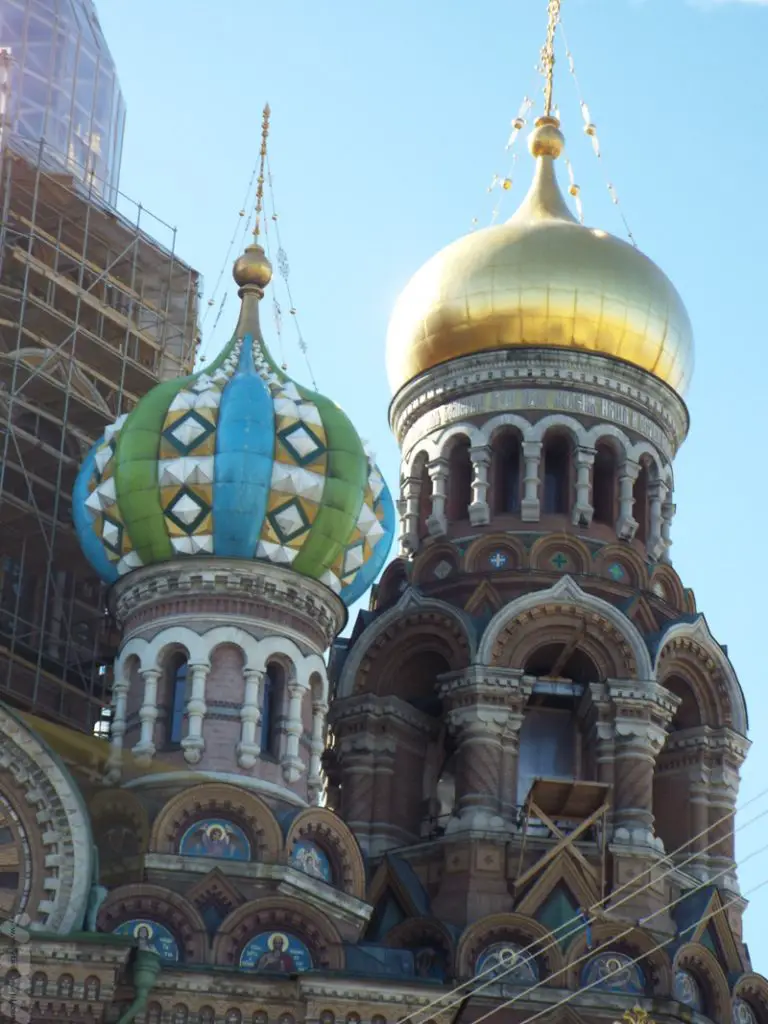
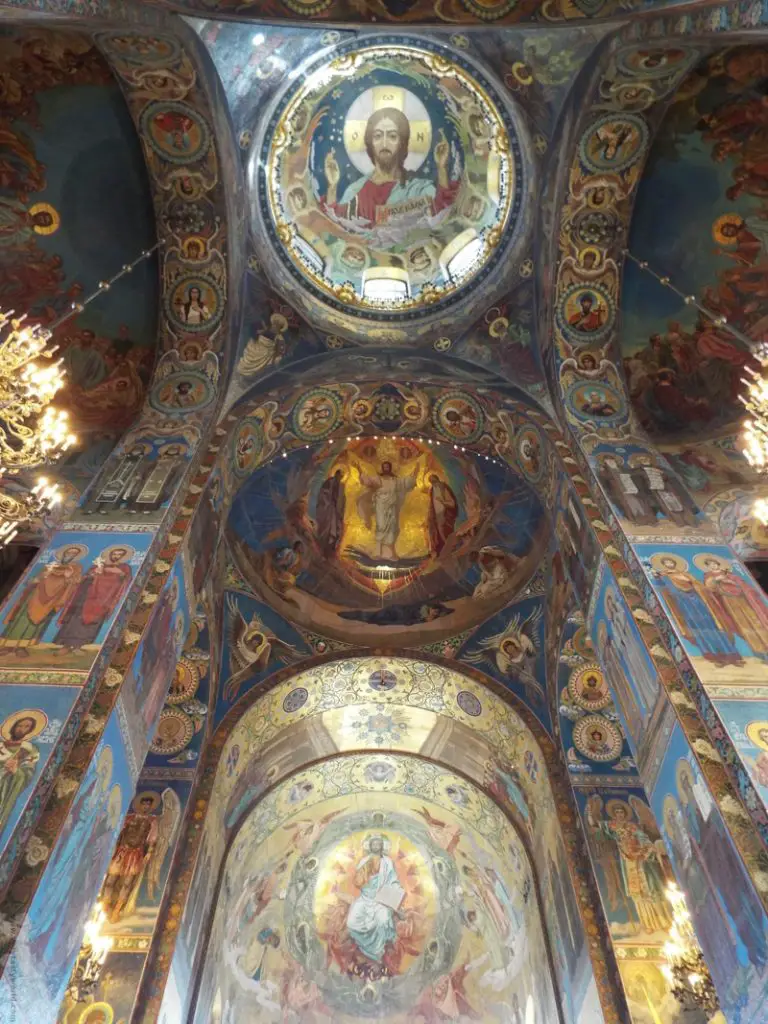
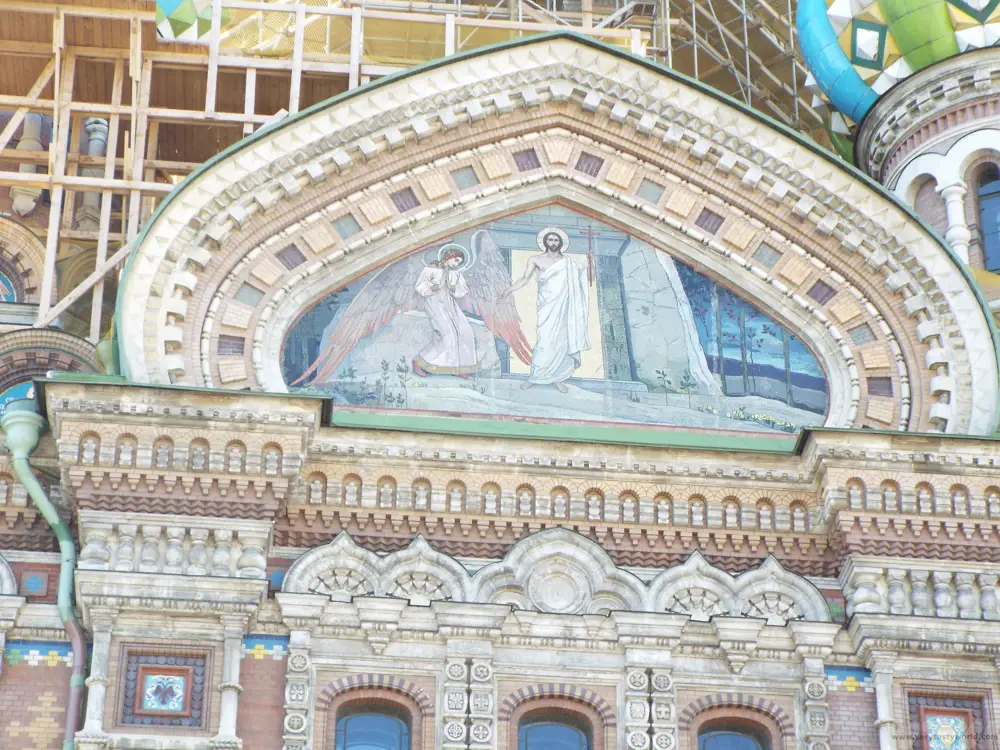
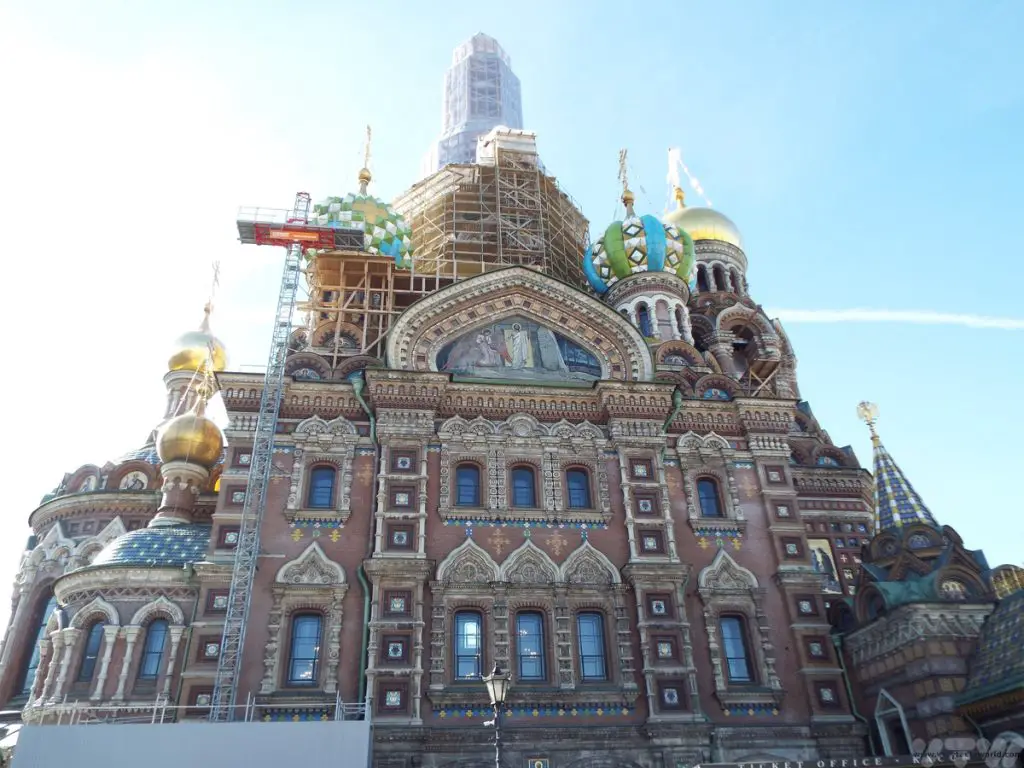
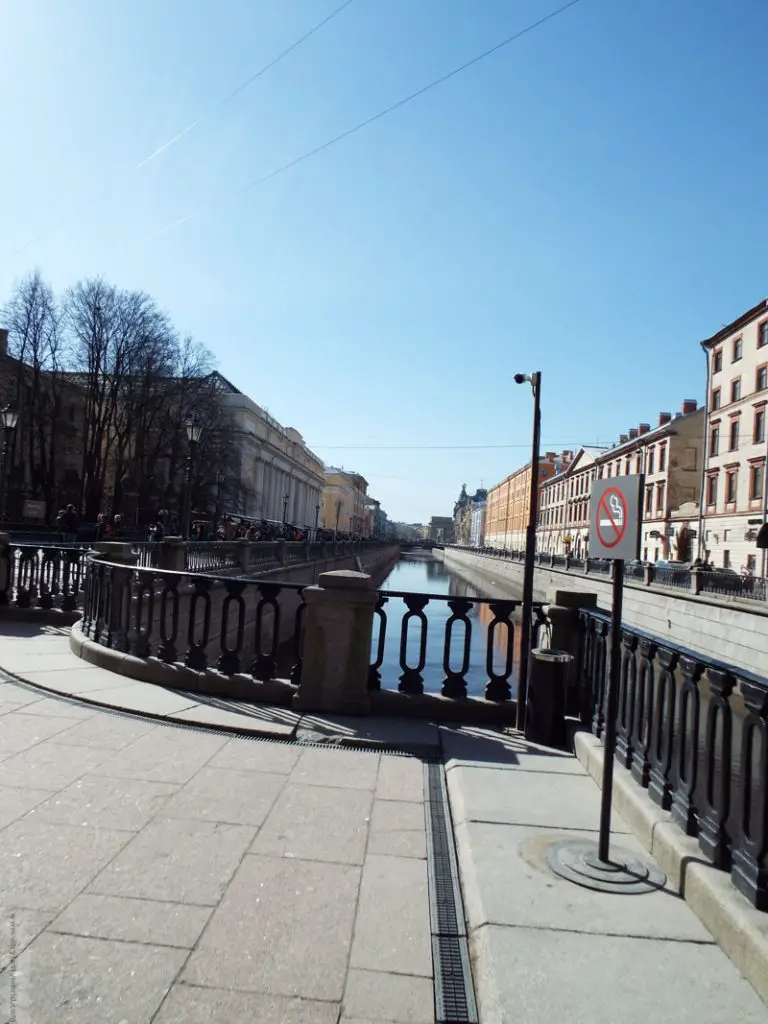
In order to construct the cathedral the canal needed to be narrowed so that the road that the Tsar had been driving on could be located inside the walls of the church.
Our final visit in St Petersburg was to the Hermitage Museum, one of the world’s most important art museums. It was a real treat to be able to spend time in this fascinating place.
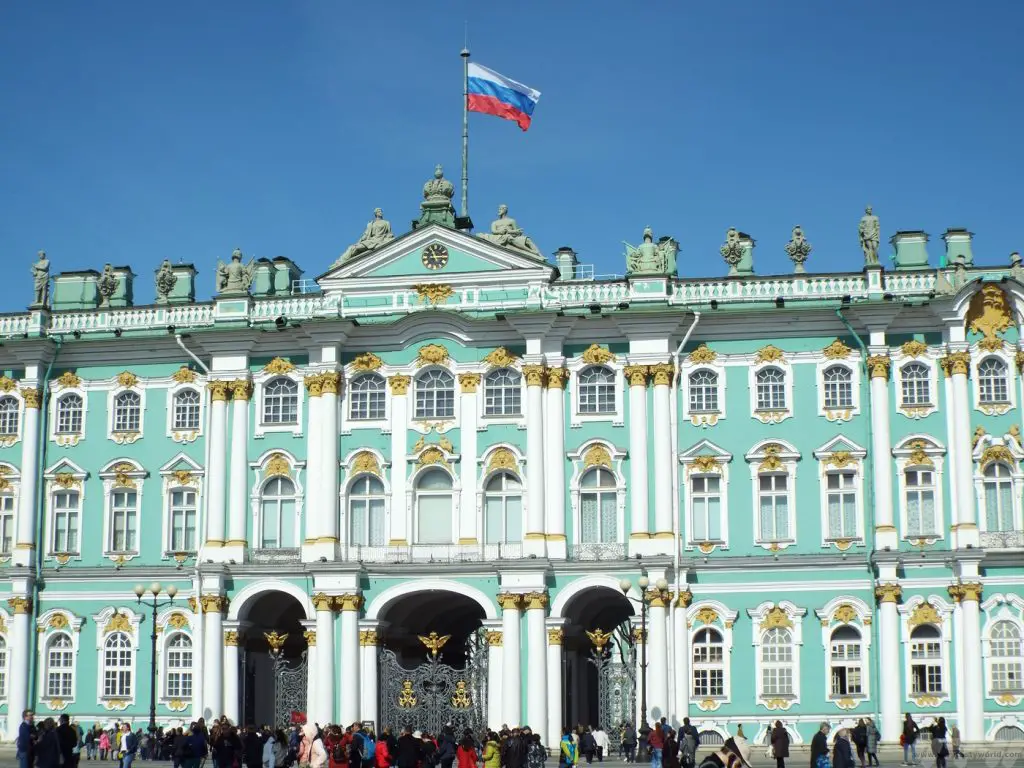
Because we had missed the boat ride a couple of days earlier, we had more time to spend inside this most magnificent of buildings. It is, apparently, the world’s largest art museum by gallery space and contains over three million works of art from some of the world’s most renowned artists. It’s not an understatement to say that you could spend days exploring it. It had occurred to us that we could do another visa-free trip and just spend the entire 72 hours inside the Hermitage.
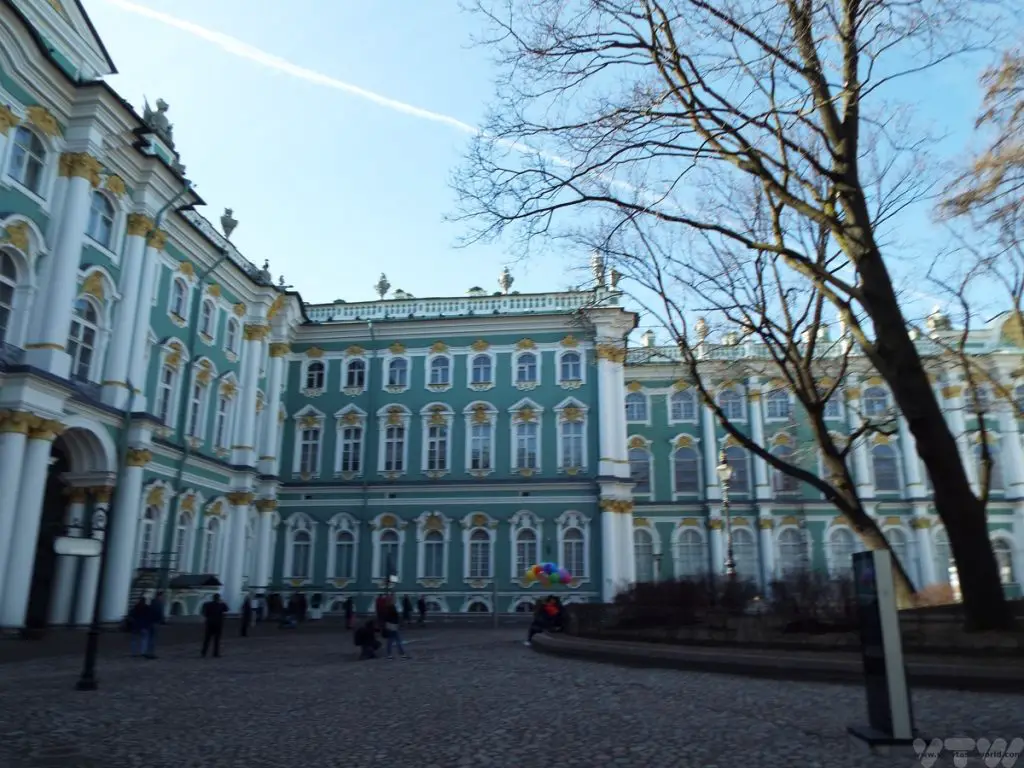
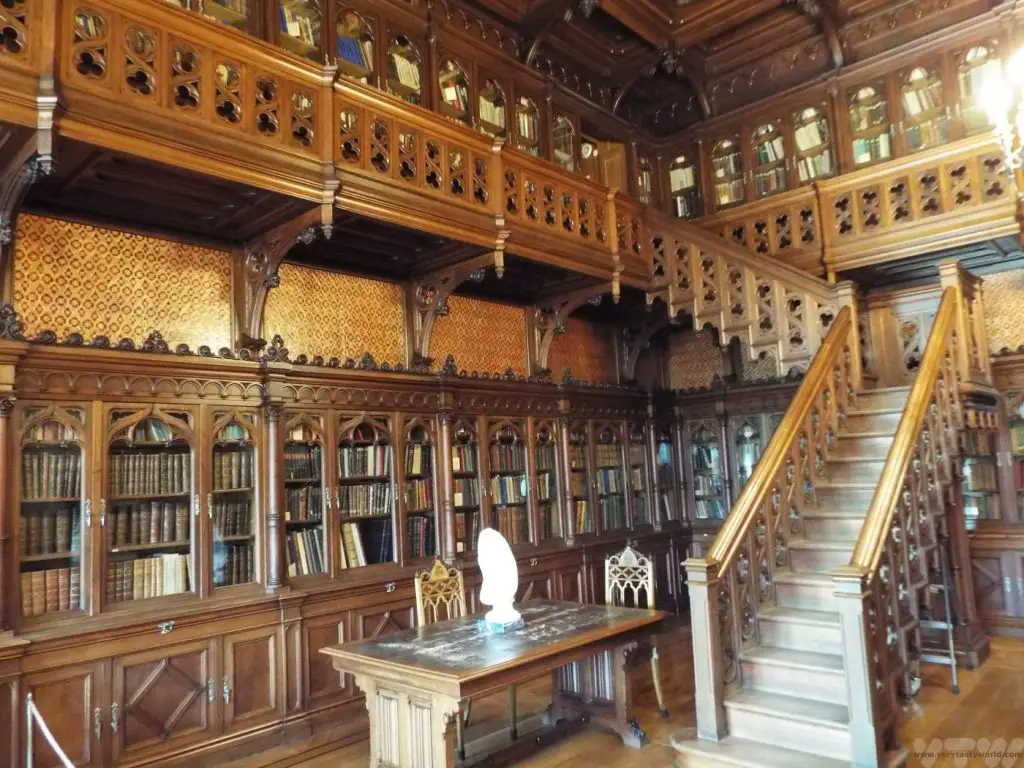
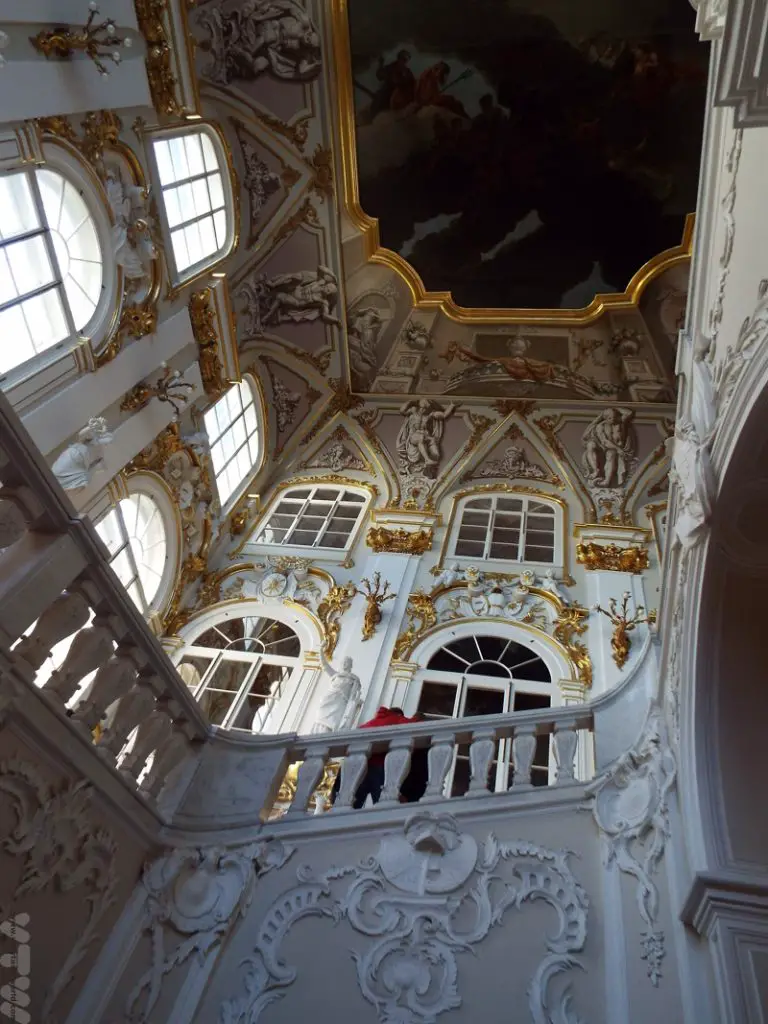
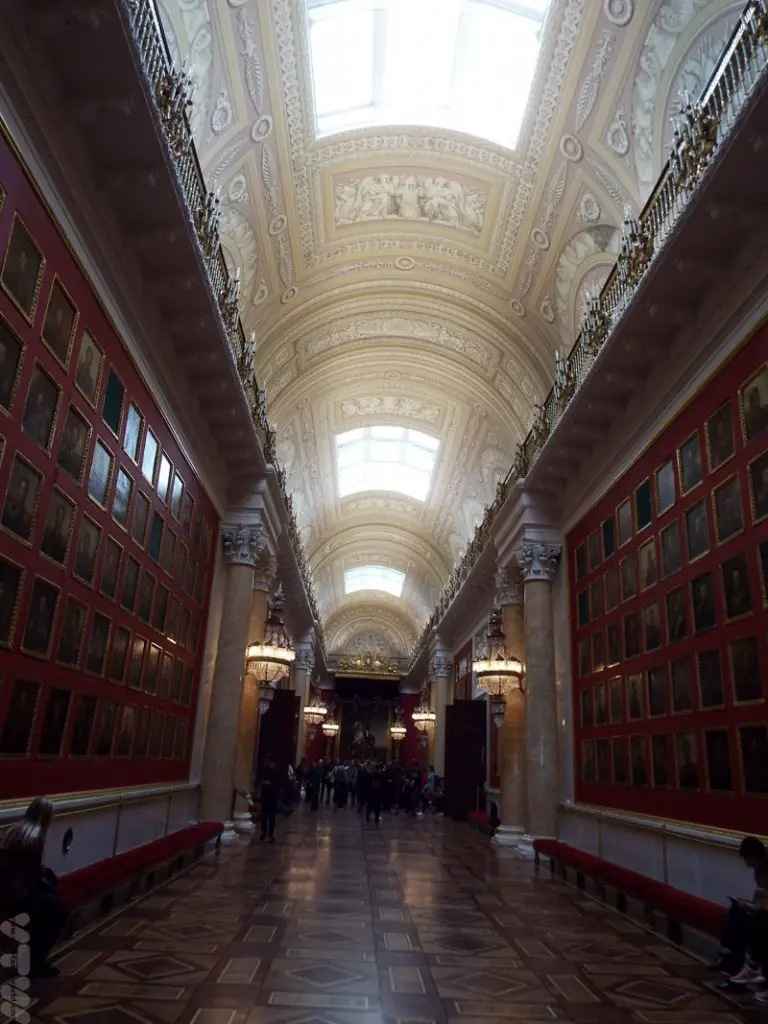
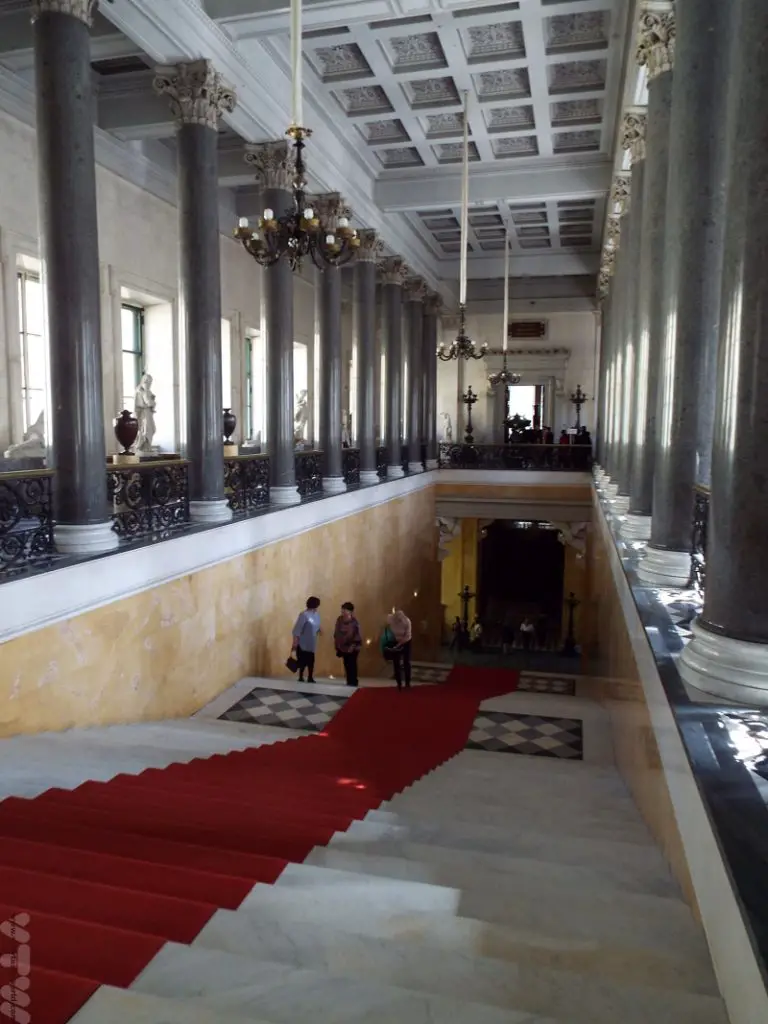
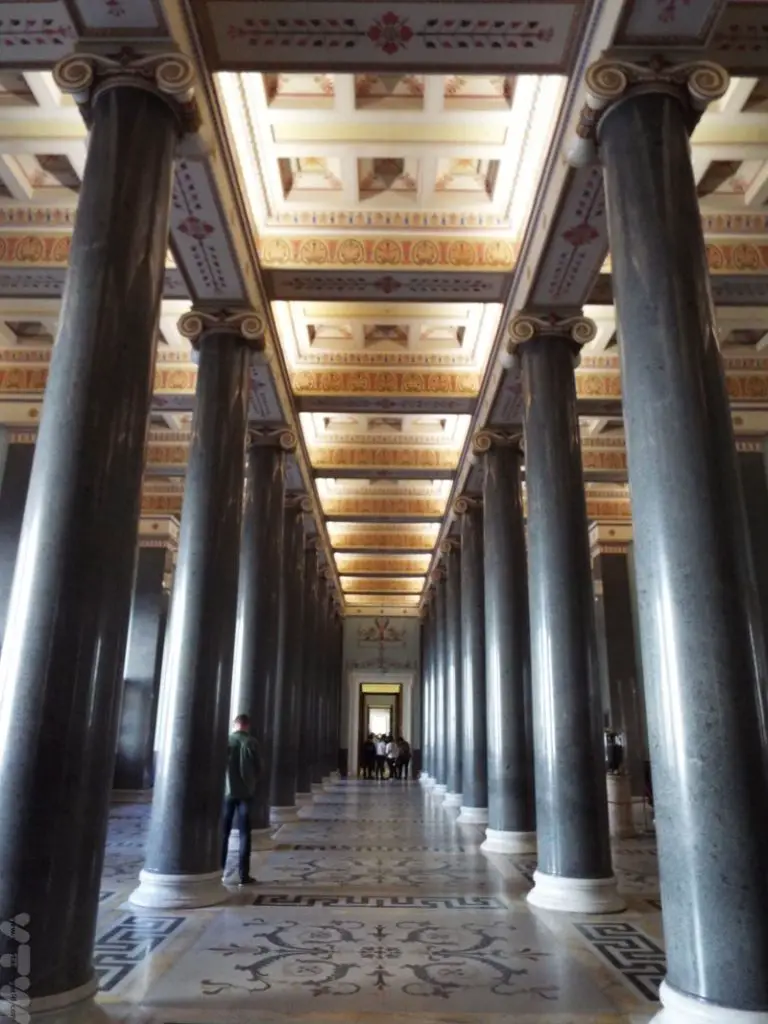
The collections occupy a large complex of six historic buildings along the embankment of the Neva river, including the Winter Palace, a former residence of Russian Tsars, commissioned by Empress Elizabeth Petrovna. It was Empress Catherine the Great who initiated an art collection in 1764 after purchasing a number of paintings from Johann Ernst Gotzkowsky. It seems as though what Catherine wanted, Catherine could purchase. The museum has been open to the public since 1852 and following the Revolution, the palace now houses works of art as well.
After a thoroughly wonderful few hours exploring the Hermitage the clock was ticking and our time in Russia was running out. We were whisked back to the port to board Princess Anastasia to return to Helsinki.
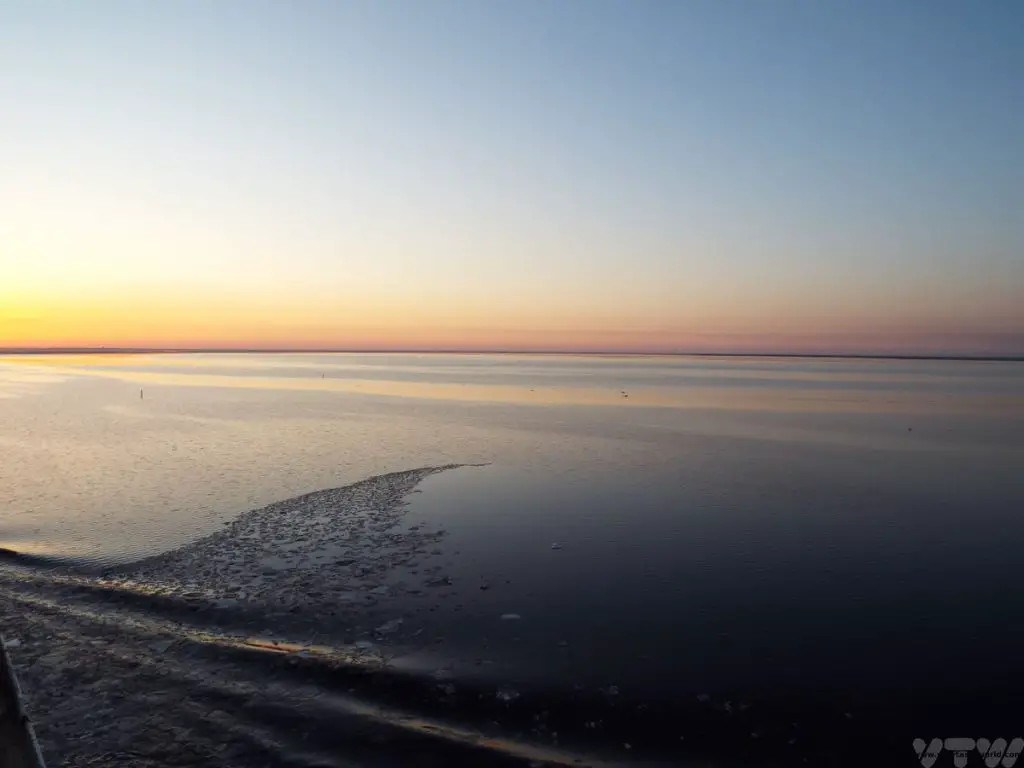
Day Five – Finnish Where We Started
We arrived in Helsinki early in the morning and found our way back into the city via the efficient tram system. There was a restaurant in town where we could grab a light bite for breakfast. Our flight timings were such that we didn’t have too much time in Helsinki so we headed back to the airport via the train link and flew home.
This trip was one of the most intensive we have ever undertaken. But travelling to Russia visa-free was a fantastic opportunity to visit this most remarkable of countries which has such a rich history and so many treasures to explore.

Visiting the Studio Ghibli Museum
A Place of Awe and Wonder
The animations of Studio Ghibli, by founders Hayao Miyazaki and Isao Takahata and their protegees, are amongst the very best in the world. If you haven’t seen a Ghibli film we can’t emphasise enough quite how magical they are. For fans of anime (Japanese animation) and films in general, the Studio Ghibli Museum is top of the list of places to see when visiting Tokyo.
A teenage witch, her hair ruffled by the wind, rides her mother’s broom through the open skies. A giant robot unleashes molten destruction on the soldiers who have awakened him from centuries of slumber. A city worker recalls her childhood growing up in the 1960s. The skies above Kōbe are filled with buzzing agents of death, raining down fire upon a terrified population. A burgeoning writer seeks inspiration from a quaint antiques shop. A travelling warrior becomes infatuated with a feral wolf-child in a land scarred by war. A group of young people discover love and loss during their turbulent high-school years. A girl’s parents are turned into slobbering pigs. A father turns superhero, if only for a moment, when he stands up to a local biker gang. Two elated girls soar through the air inside a grinning cat bus, its headlight eyes tracing yellow streaks in the sky above the forest.
Gods and monsters. Love and loss. Jubilation and despair. The horrors of war. Childhood wonder. The passion of life. Welcome to the heart-soaring, euphoric, whimsical, terrifying, compassionate and, above all else, emotional world of Studio Ghibli. The remarkable films of Studio Ghibli show, without a shadow of a doubt, that cinema can be art. Often the terms ‘art’ and ‘cinema’ result in products that distance audiences, but Ghibli makes films that touch the soul, that can enrapture and delight everyone from toddlers to pensioners. Studio Ghibli Kamera Book.
It’s not possible to visit the studio itself. That’s just basically an office building. But Miyazaki and Takahata commissioned a museum dedicated to the art and technology of the animated form in 2001 and it is one of the most delightful museums we’ve ever visited.
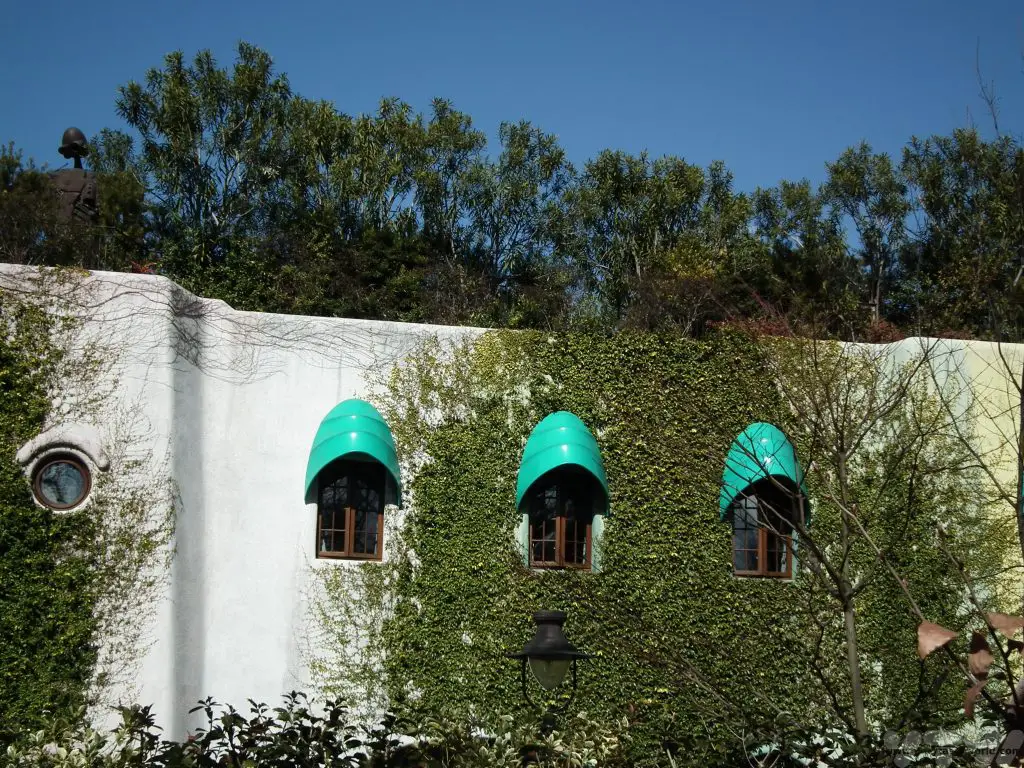
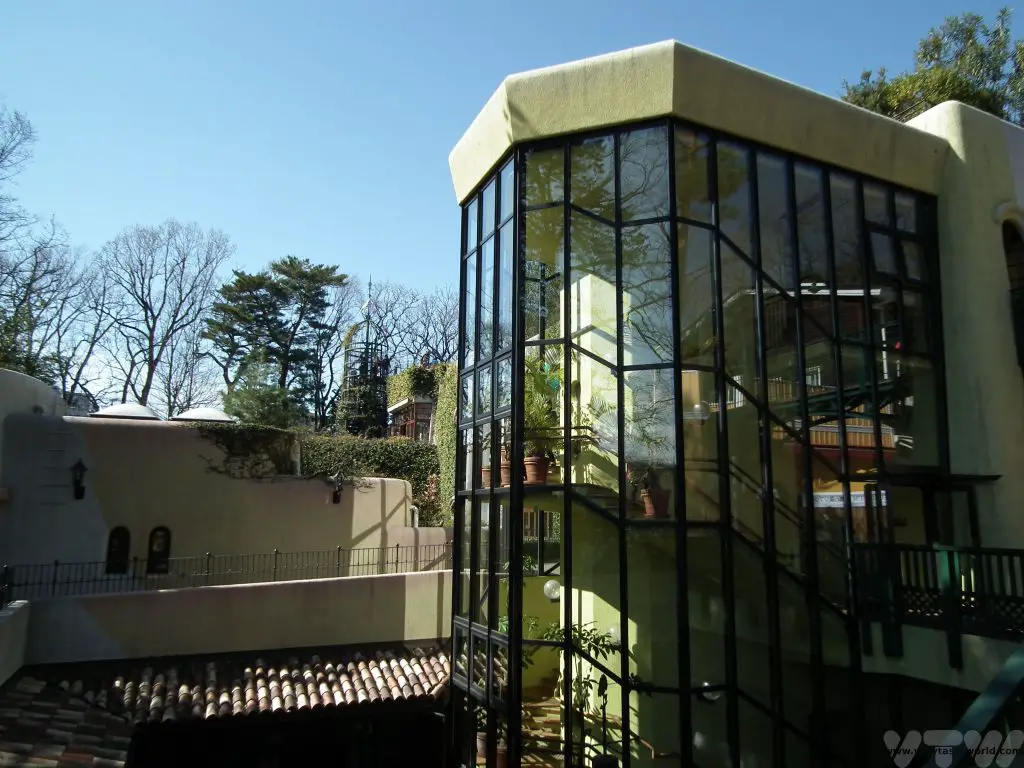
Visiting the Studio Ghibli Museum – Getting Tickets
If you’re planning on visiting the Studio Ghibli museum you can’t just turn up. The museum is so popular that you have to pre-book your tickets and also arrive at a specified time. The process for getting tickets is a bit convoluted especially if you don’t live in Japan or have contacts there. So (deep breath)…
If you are Japan you can buy tickets at Lawson konbini (convenience stores) which can be found all over the country.. The tickets go on sale from 10:00am (Japan time) on the 10th of each month for the following month. So really you have to be in Japan for several weeks to stand a chance of getting any for yourself and they will sell quickly. The museum has a page which links to an online booking system.
If you can’t get tickets via the link there are other options. A number of travel agencies can get tourist tickets which you can purchase directly from them in your home country.
Other travel agencies often have staff in Japan who may be able to go to Lawson to get tickets on your behalf. But book early! We’ve used services such as these in the past and it has worked very well. However, over the years, demand has increased and many travel agencies may also want you to buy other services, for example, they may request that you purchase your Japan Rail Pass from them, or book a couple of nights’ accommodation in Tokyo. This is frustrating, especially if you have already made your plans or can purchase these items more cheaply elsewhere. For example, we always search for the best deal for our JR Passes and usually stay in Japanese Business Hotels which are cheap and comfortable (if small), especially in Tokyo because, frankly, when you’re in Tokyo you don’t really care too much about your accommodation as there’s so much fun to be had in the city.
The tickets state a specified date and time of entry and, as a result, you will need to arrive on time. The face value of the tickets is an extremely reasonable ¥1000 for those over 19 years of age, with lower costs for children. But there is likely to be a handling fee if you purchase your ticket from an agent.
On Arrival At The Ghibli Museum
The museum is located in Mitaka, on the Chūō Line. There are direct trains from central Tokyo and you can use your Japan Rail Pass if you have one. It’s a short walk from the JR station. There is, however, a bus service which, for around ¥300 return, will take you directly to the museum. It’s easy to spot the bus stop.
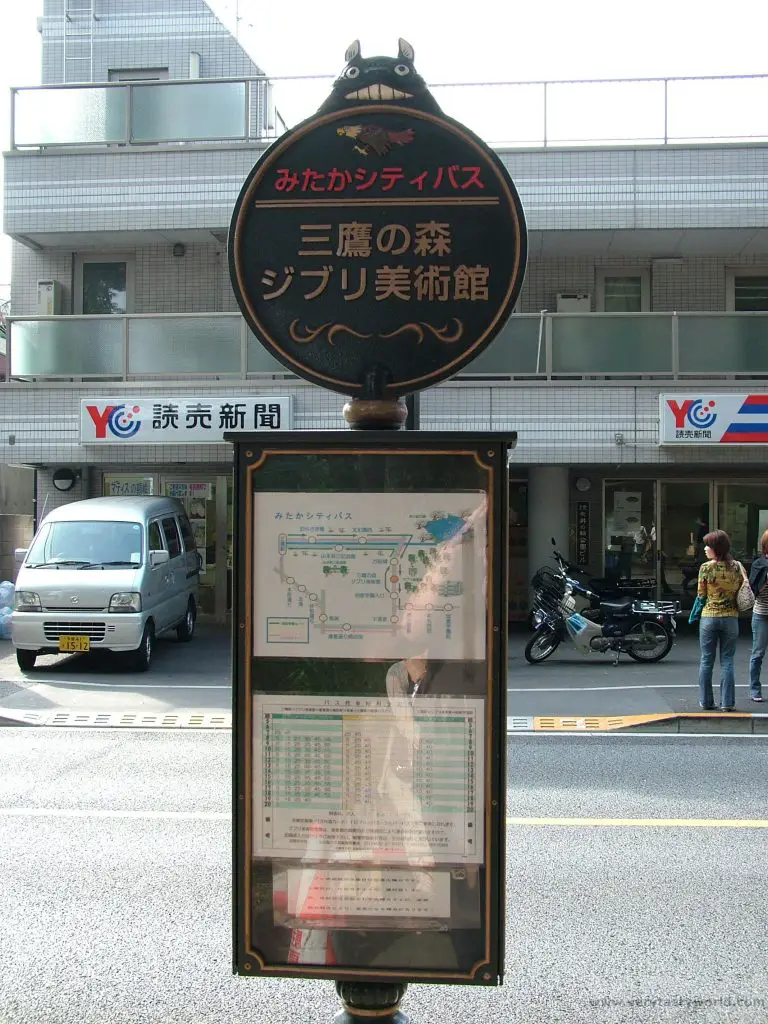
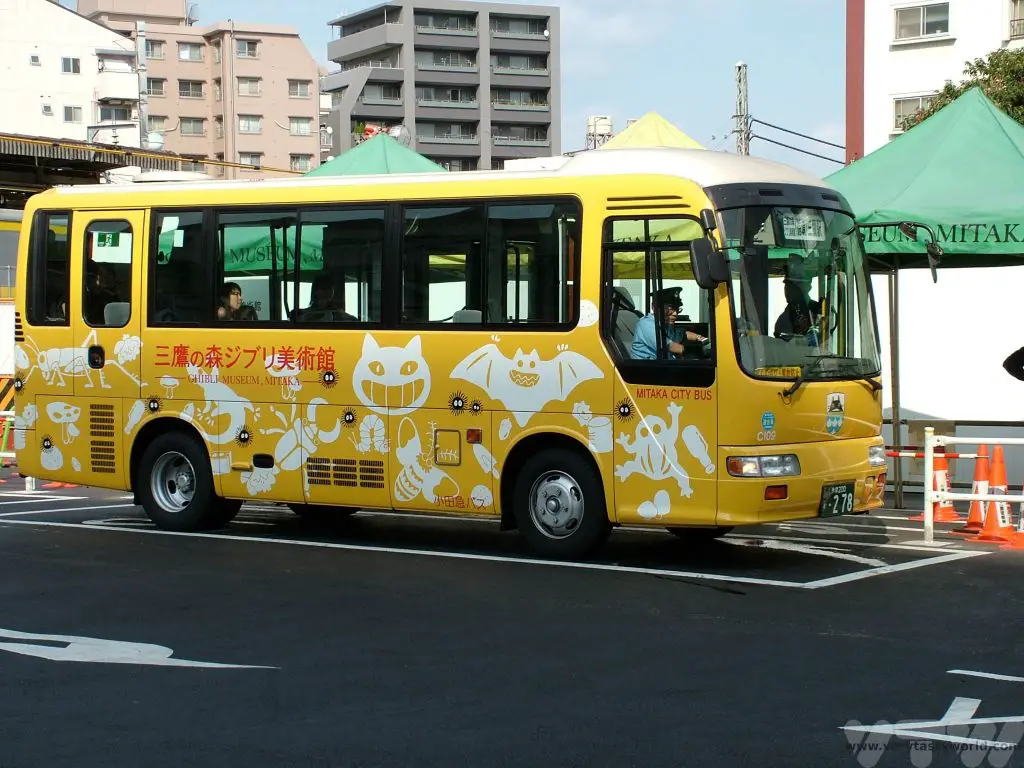
On arrival, walking along Kichijoji Avenue, which is adjacent to Inokashira Park, at the entrance of the delightfully colourful building you are greeted by a giant Totoro, which is the best possible welcome anyone could want, before you walk around the building to the real entrance.
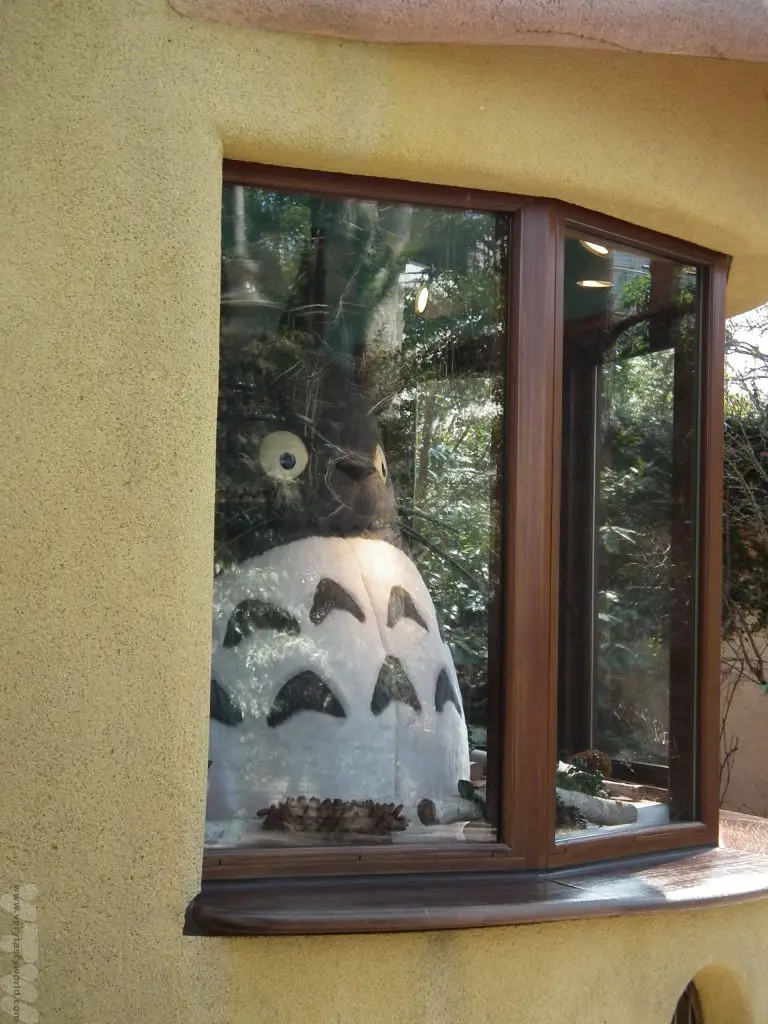
On arrival you exchange your voucher for a real ticket which has a film strip from a Ghibli animation inside. There is no time limit on your visit and the policy of limiting admissions means that the museum never feels crowded. You can wander freely through the building but you are requested not to take photos. This is actually a really good idea – it ensures that you enjoy the experience rather than try to record everything that you see. It also means that there are no (or at least minimal) spoilers from zillions of photos of the museum on the internet. If you wish, you can buy a book or a set of postcards of the museum from the shop – so that you have a memento.
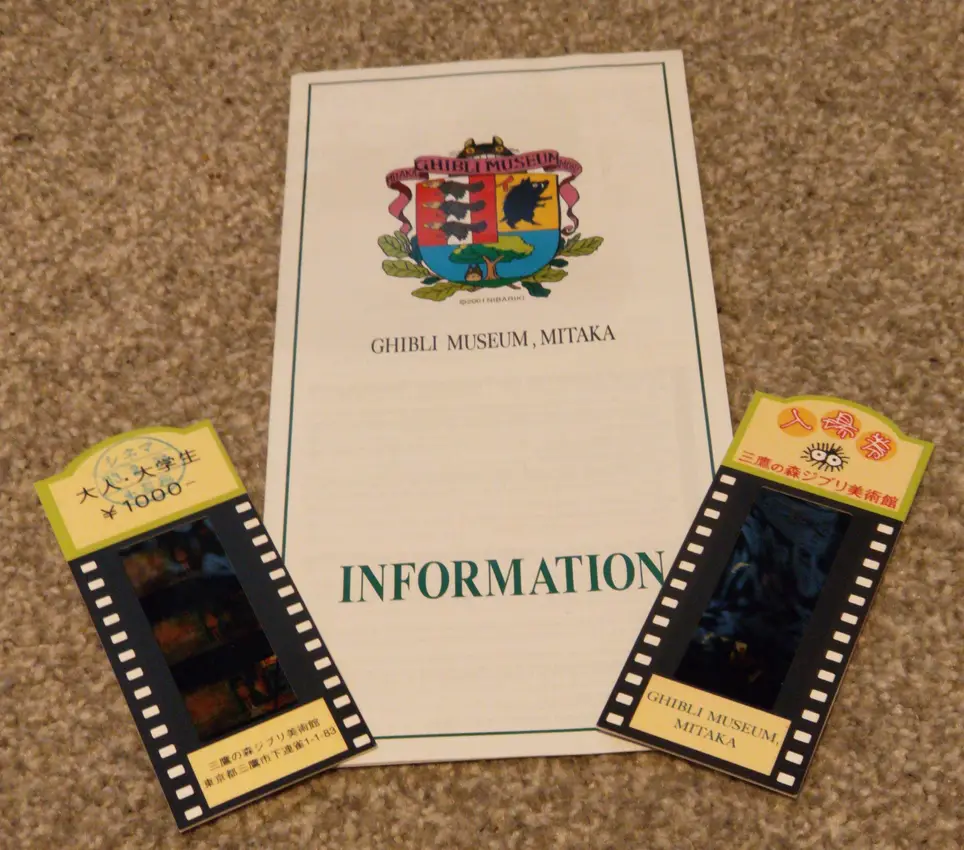
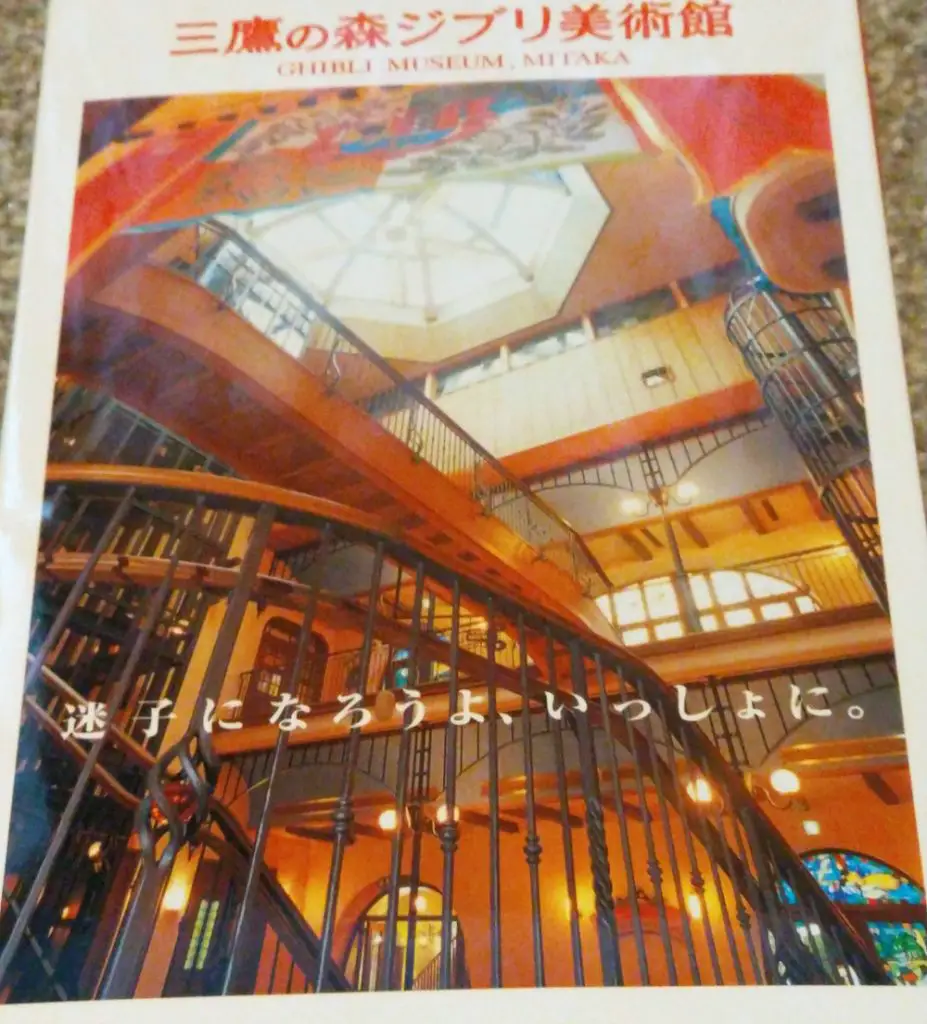
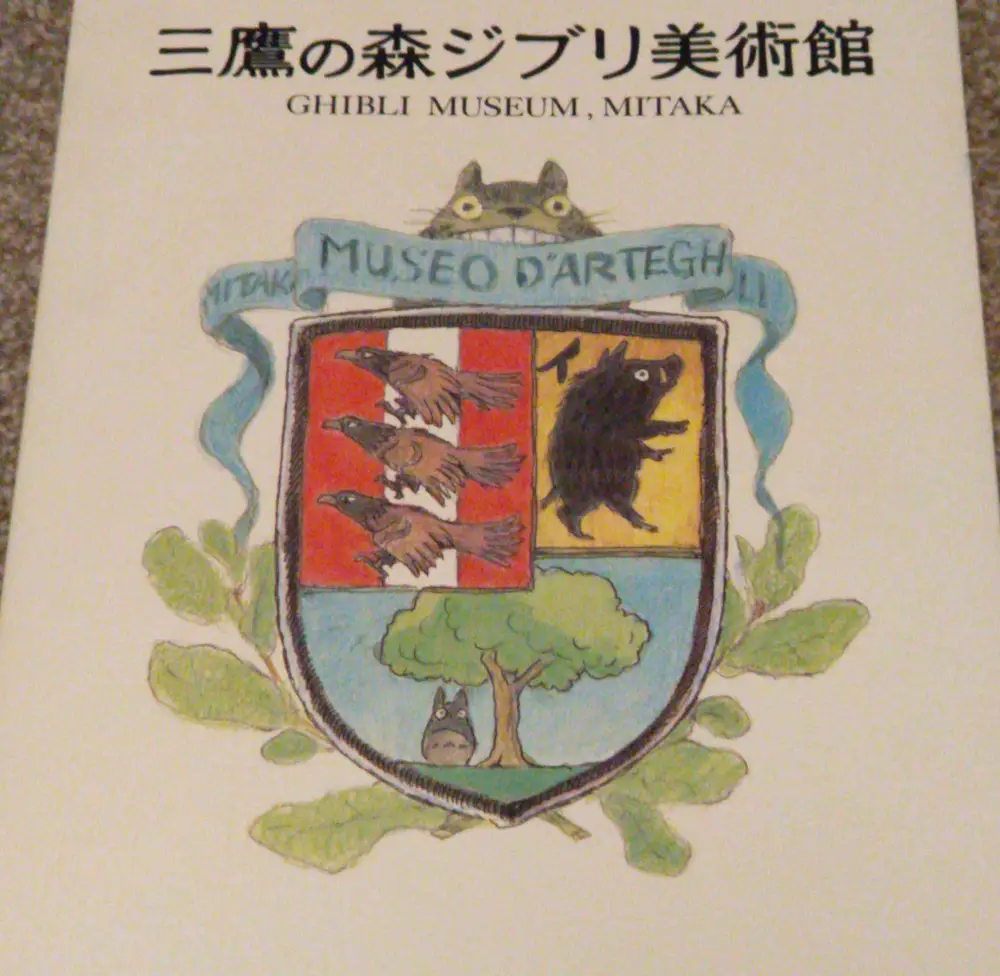
Miyazaki’s principle for designing the museum was ‘Let’s lose our way, together’. It’s a brilliant philosophy. There is no set route around the building and there are all sorts of spiral staircases, internal bridges and nooks and crannies to explore – some at a low level, suited to children… or adult sized children who are prepared to crouch and wiggle into small spaces. Just go wherever your curiosity takes you.
The first room after the entrance contains a Ghibli-inspired history of cinema technology. Periodically the lights are dimmed and a flashing Totoro zoetrope starts up – it’s a magical display as characters from the film rotate around a central point illustrating about how animation can create the illusion of movement. (Be aware that this is a stroboscope effect if you are sensitive to flashing lights.) Amongst the other exhibits in the room is a delightful display of the Laputa robot surrounded by doves. It truly is a room of wonders.
Upstairs there are further rooms to explore. Some of these have permanent exhibitions – such as the life-sized cat bus (from My Neighbour Totoro). Adults be aware that you are only allowed to play inside cat bus if you are under eight years of age, something that we feel is most unfair. There are a couple of rooms which represents an animation studio so that you can understand the technicalities and process of animation from start to finish.
The studio also has a number of temporary exhibitions which often showcase the work of animators from around the world. Isao Takahata, in particular, did a lot to promote the work of film-makers from around the world. We have enjoyed exhibitions showing the works of Pixar studios (themselves huge Ghibli fans) and Michel Ocelot’s remarkable animations.
Don’t forget to follow the steps to the roof – there you will find the gentle giant robot and mysterious control cube from Laputa, Castle in the Sky. (It’s okay to take photos outside the museum’s main building.)
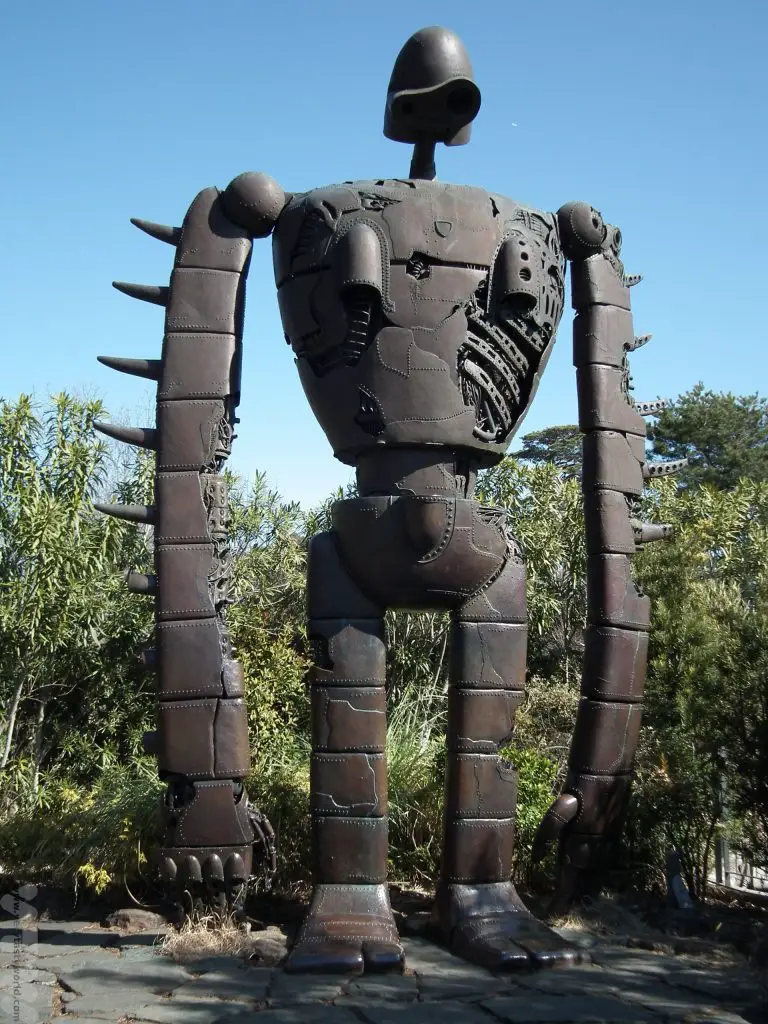
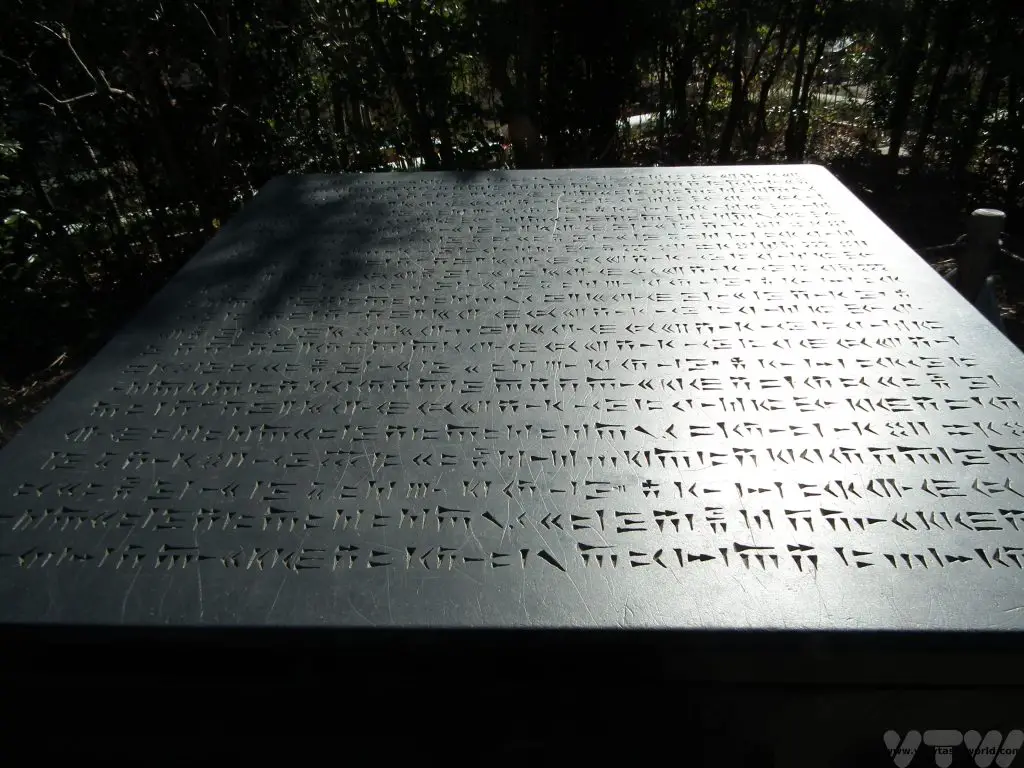
Visiting the Studio Ghibli Museum – Exclusive Ghibli Films!
One of the biggest attractions about the museum is the opportunity to attend the screening of a short Ghibli film. You cannot see these anywhere else in the world and they are not available on DVD or on streaming services, they are totally exclusive to the museum. The films are around 20 minutes in length and there is a board outside the Saturn Theatre on the ground floor, indicating screening times. It’s worth getting to the waiting area a bit earlier than the start time to make sure you can get into the screening you wish to attend. (If you miss a screening there is plenty to keep you occupied until the next one.) We have been lucky to have visited the museum five times and have never seen the same film twice. You can buy picture books of the films as a memento.
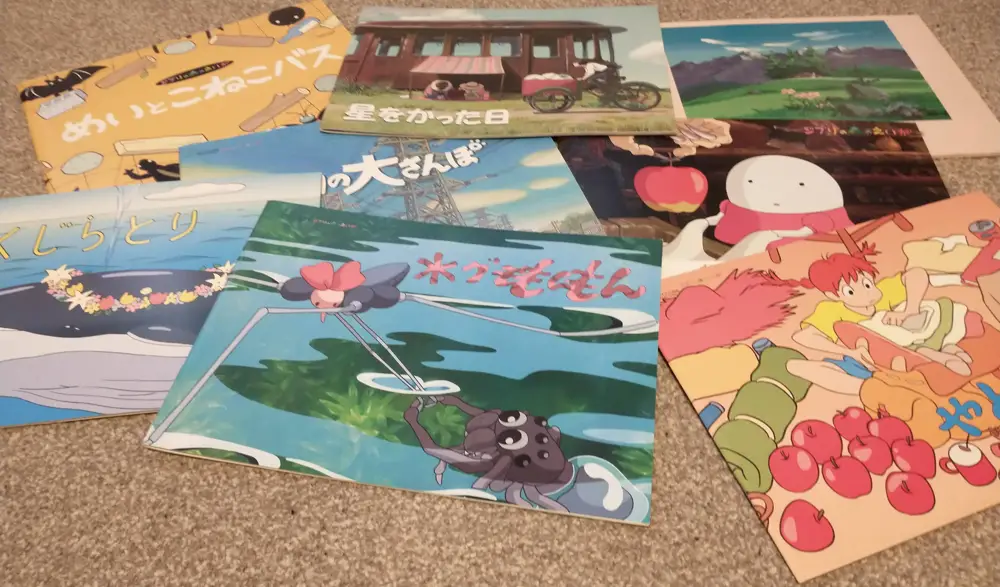
Shop Till You Drop
When you’re visiting the Studio Ghibli museum you’ll be delighted to discover that there is a bookshop where you can buy books and DVDs related to the films
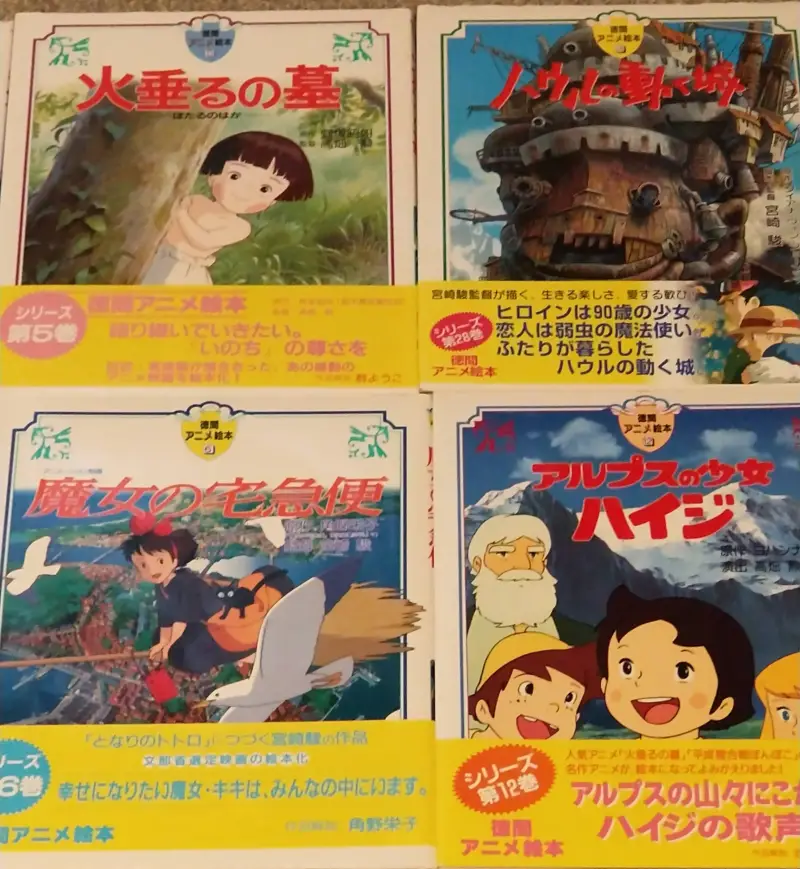
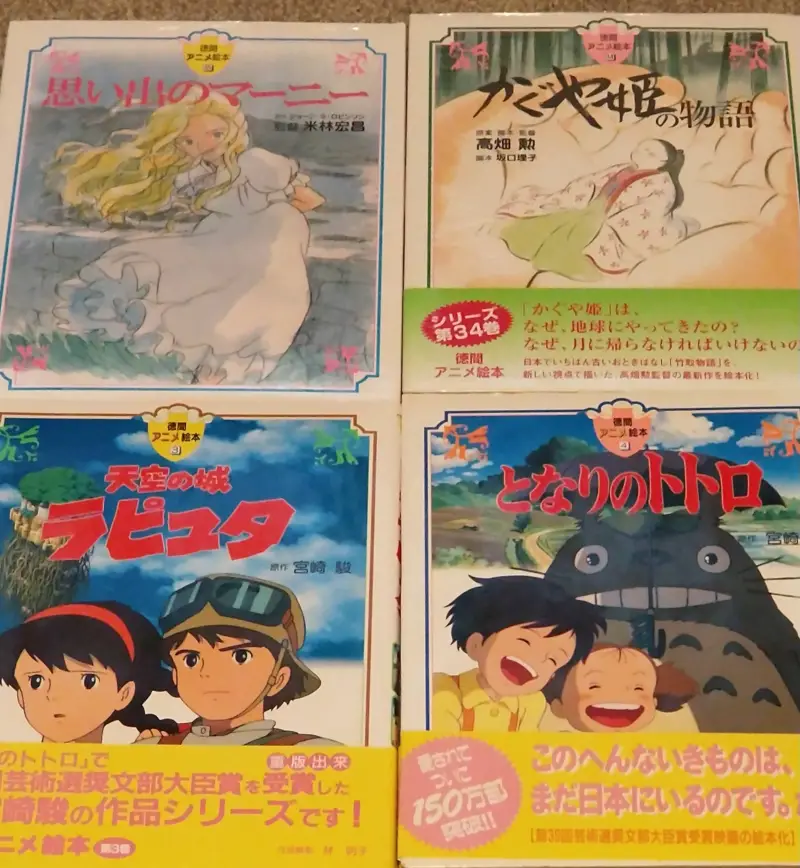
And there’s also a souvenir shop where all sorts of gorgeous and tempting merchandise can be purchased. If you are a fan of the films, pack an extra suitcase for all the goodies. Over the years we have accumulated a lot of souvenirs.
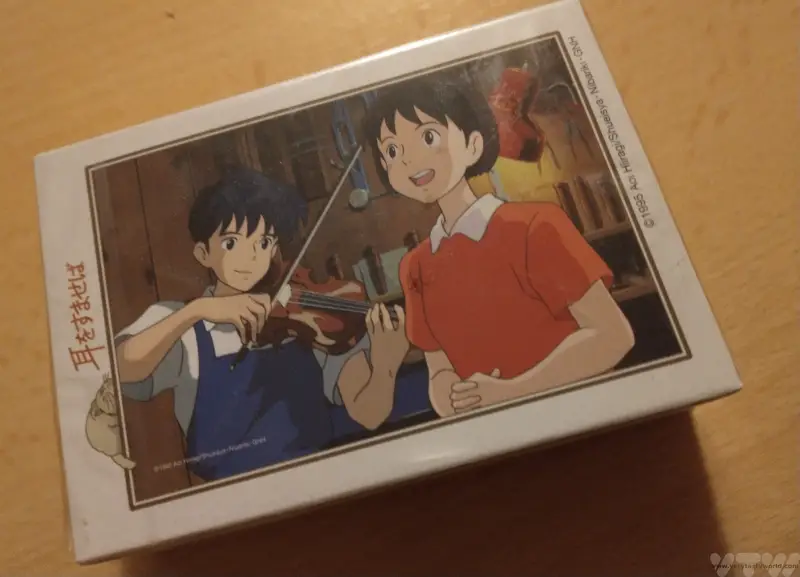
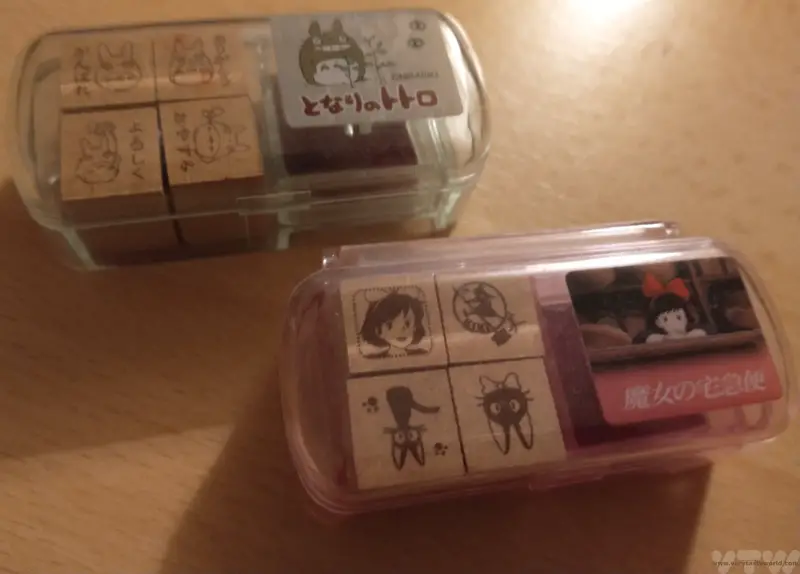
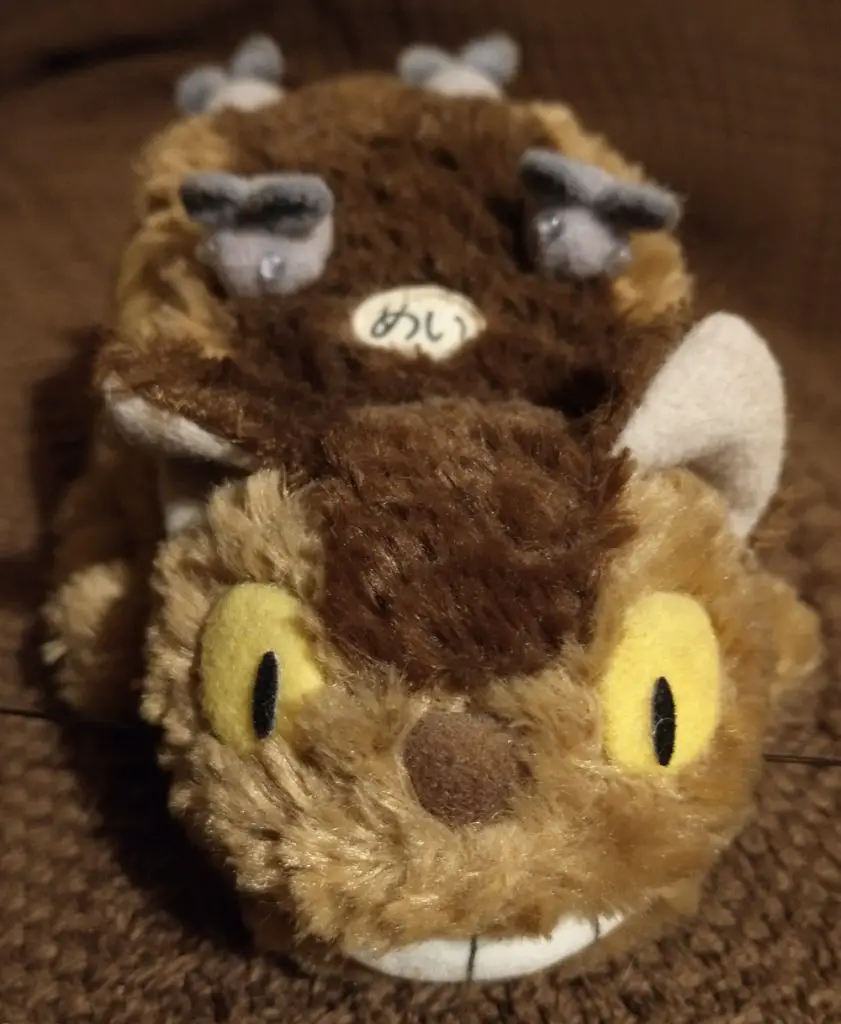

The bags are from the film Porco Rosso and are a souvenir in themselves.
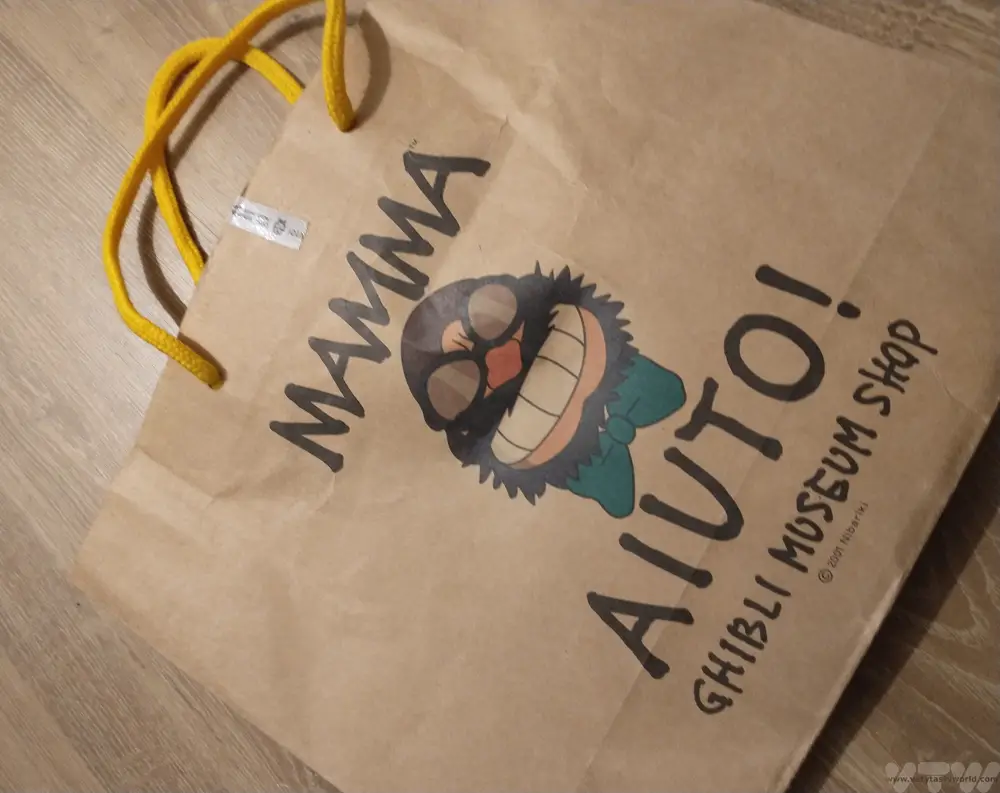
It’s worth noting that Ghibli merchandise is also available throughout Japan. We managed to buy the biggest Totoro soft toy that we felt we could get onto a plane without having to buy an extra seat – bought at the very end of a long trip (which had involved lots of travelling on the shinkansen and it really wouldn’t have been practical to transport him all over Japan, gorgeous as he is) at a department store in Tokyo just before we headed out for the airport. And yes, we did get lots of funny looks from security guards at the airport, but Totoro has pride of place in our living room.
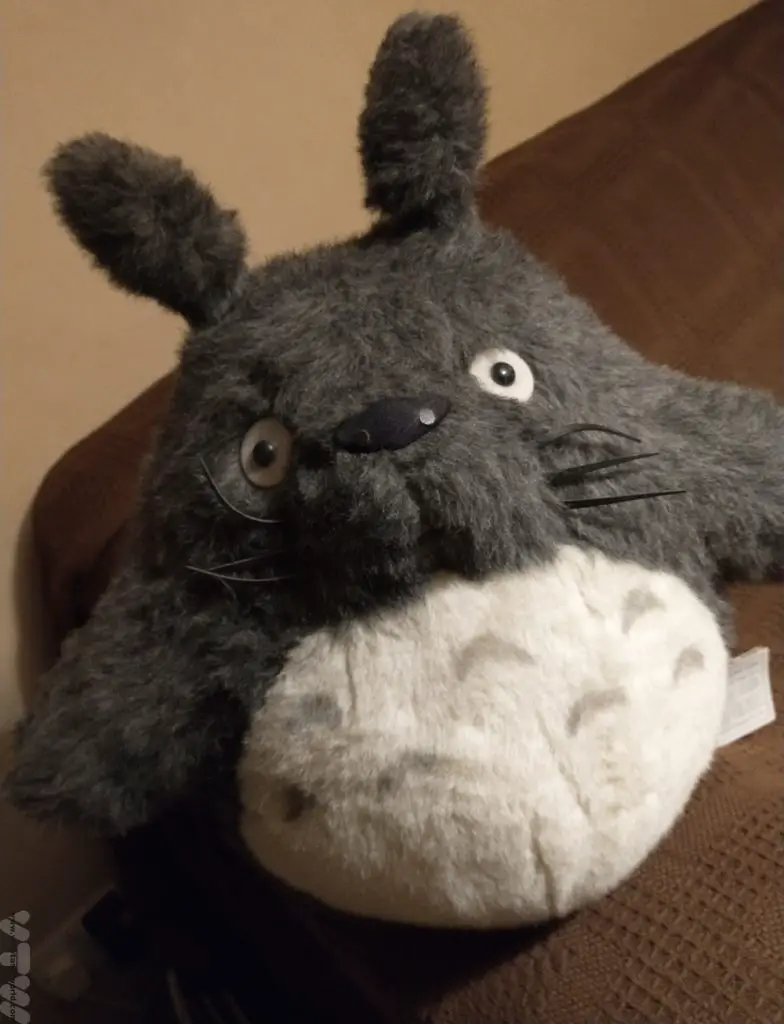
The design of the museum is so intricate and detailed, even outside the main building.
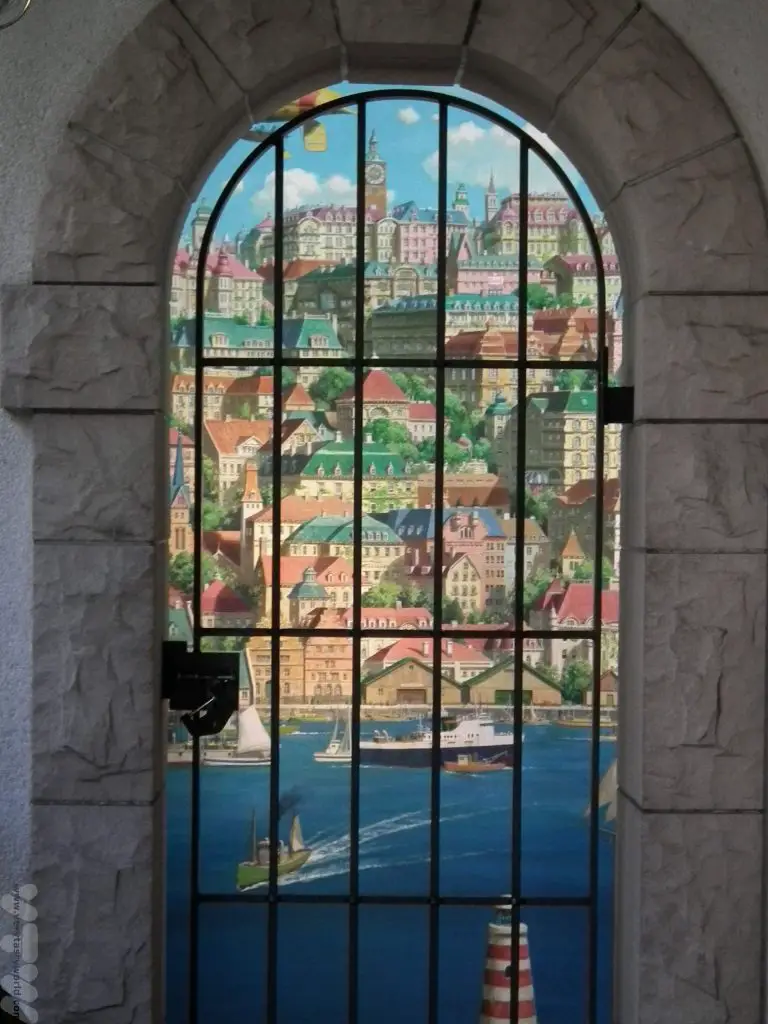
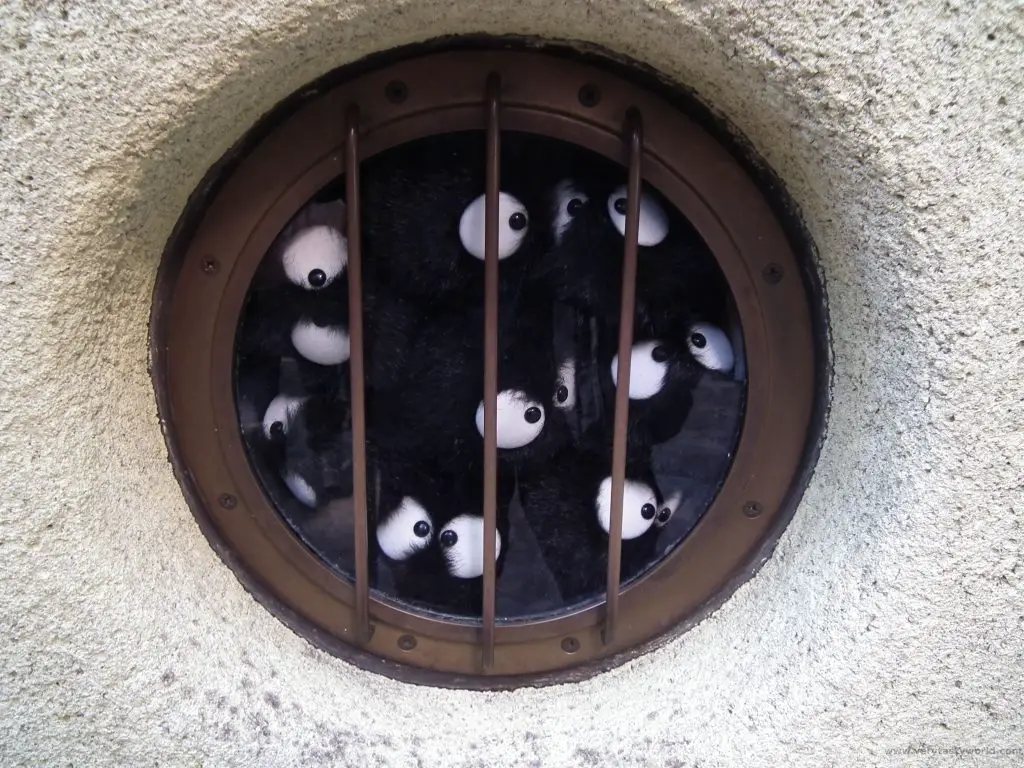
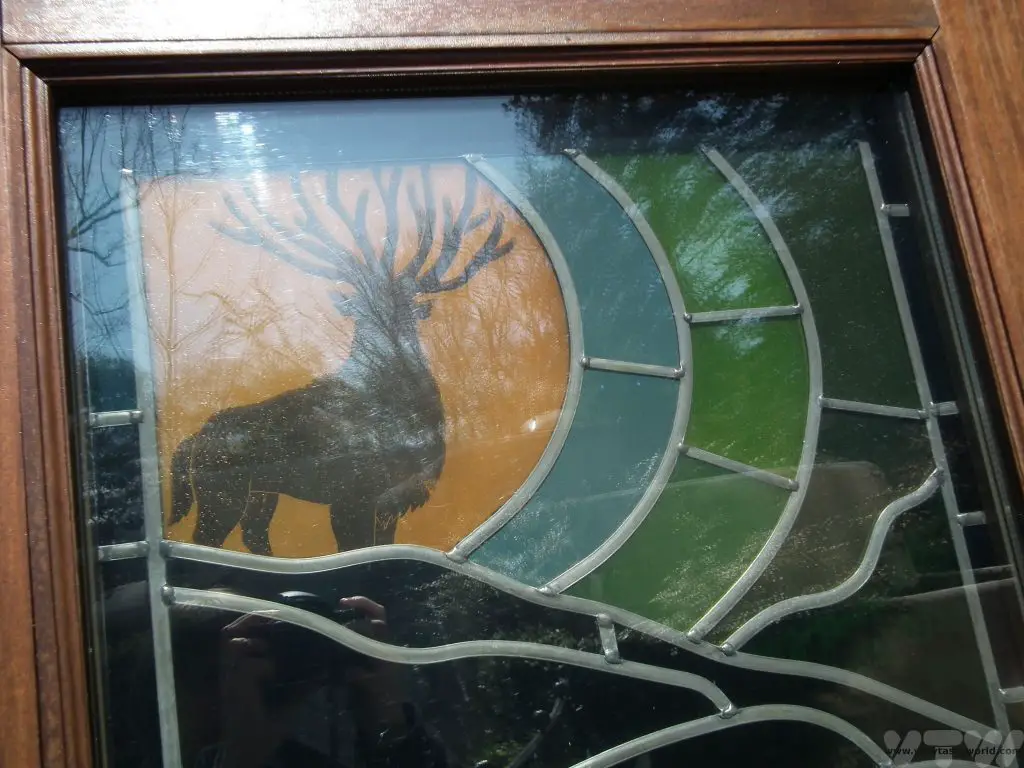
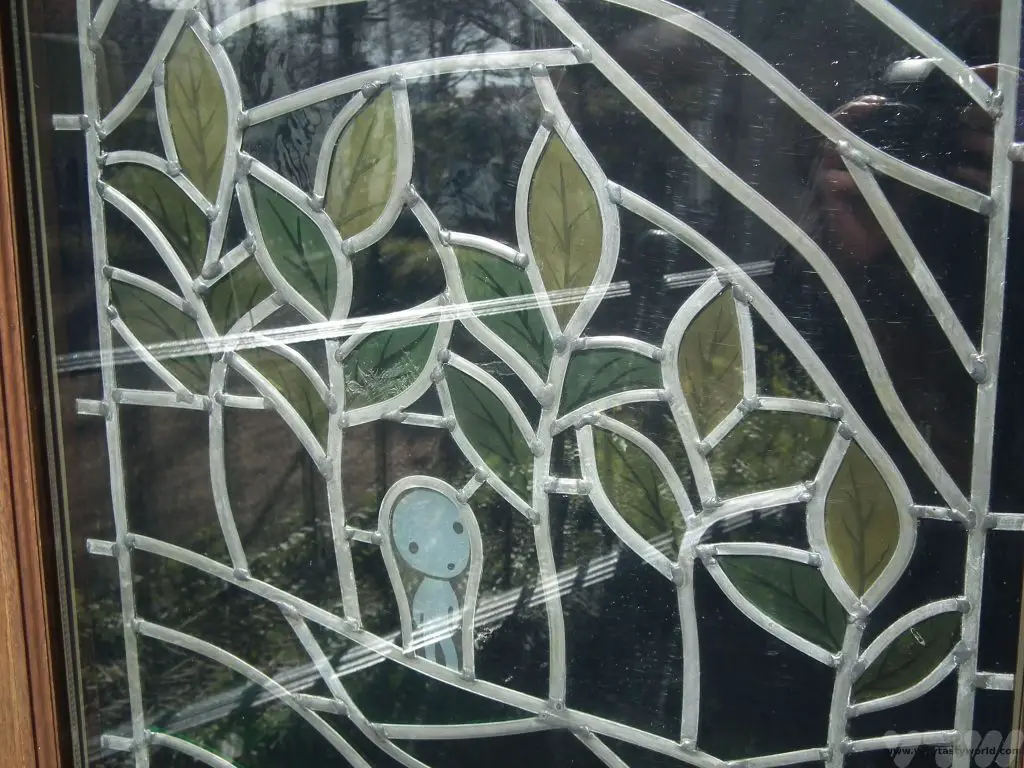
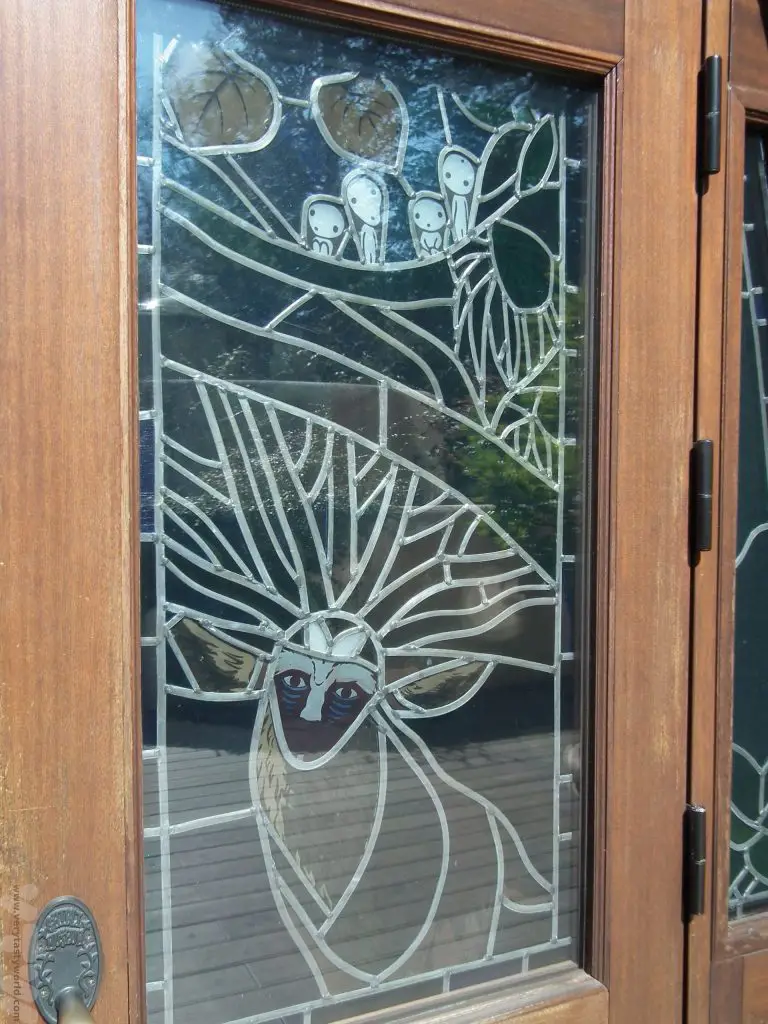
There is a café, The Straw Hat Cafe (featuring Mei’s hat from My Neighbour Totoro), adjacent to the museum which sells ice-cream, drinks and snacks.
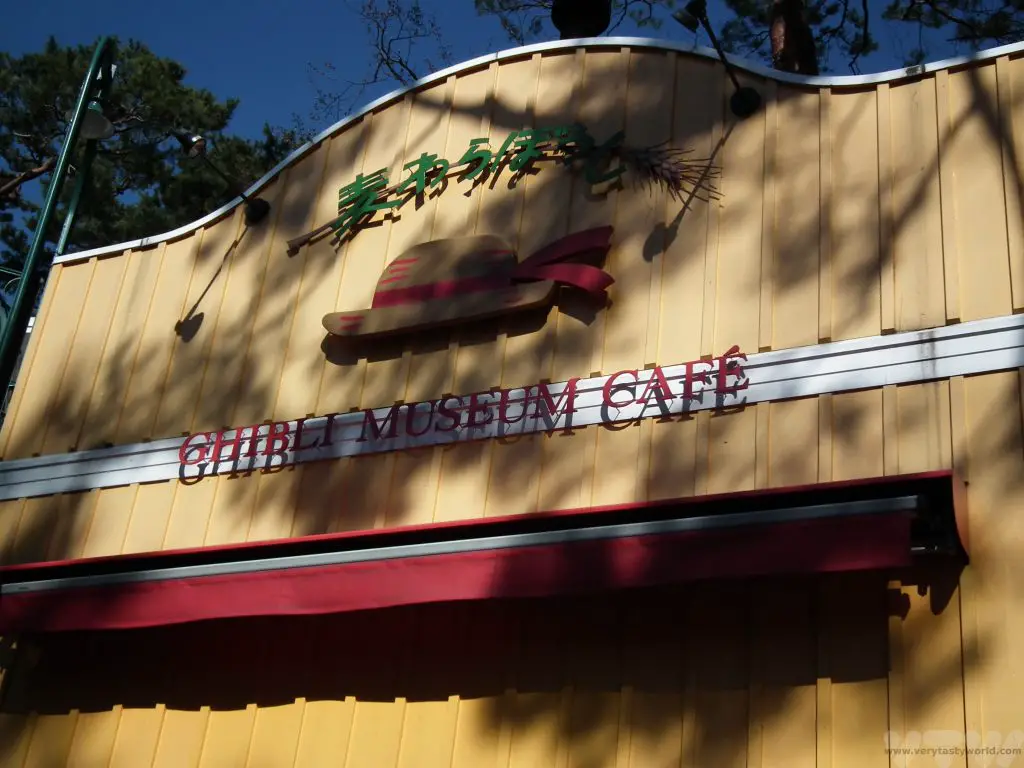
It’s become something of a tradition for us to enjoy a hot-dog and a cold beer – yes, you can even enjoy a bottle of Nausicaä beer! – at the end of the exploration.
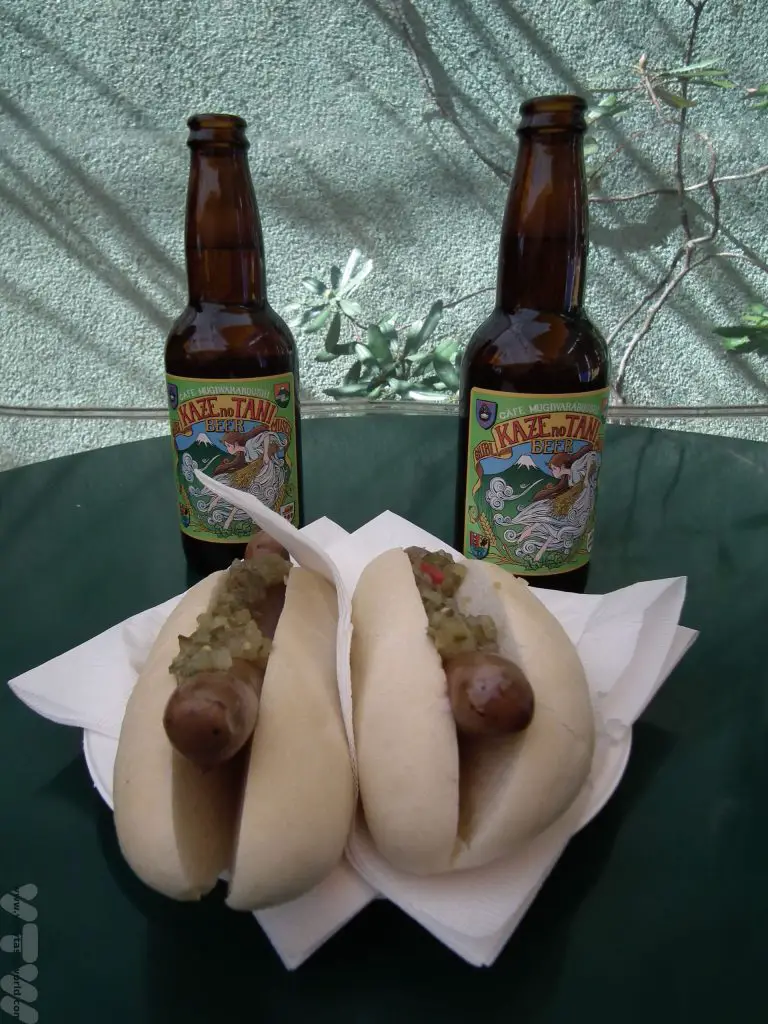
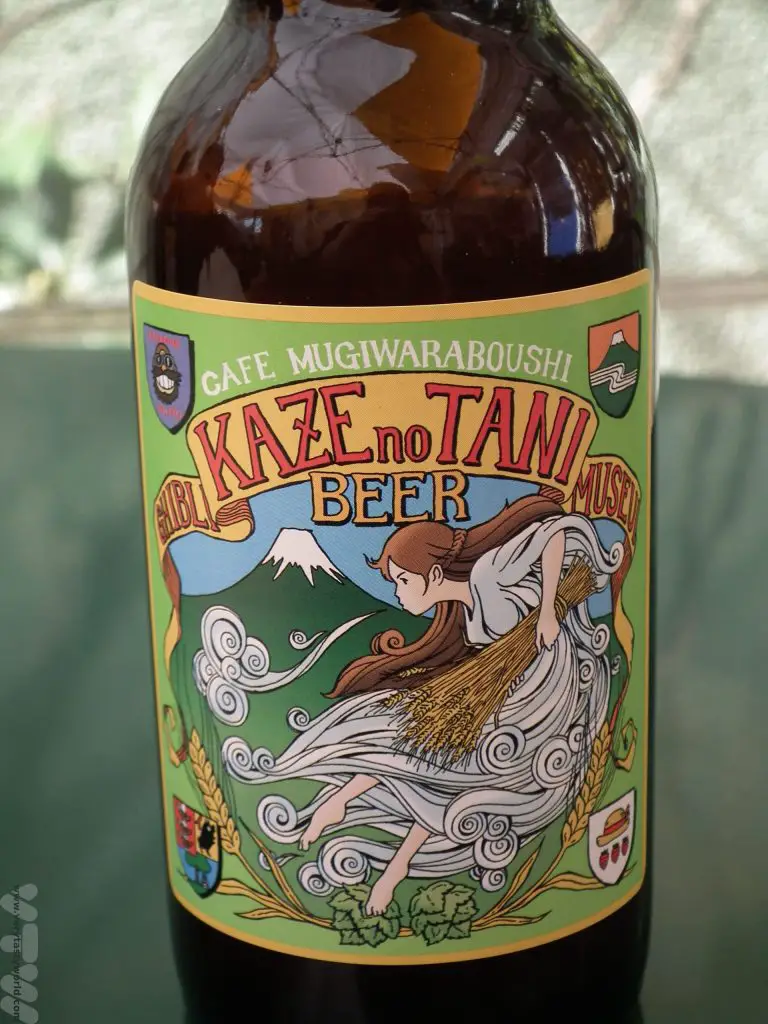
The Ghibli museum is emphatically one of the most wonderful places we have visited. It’s a triumph of imagination and design and is genuinely a place of wonders. Even if the process of obtaining tickets is somewhat convoluted, we can’t recommend this museum highly enough. We’d go again in an instant.
Related Posts You May Enjoy
Please note that this post contains affiliate links. If you click the link and decide to make a purchase we will earn a small commission, at no cost to you, which helps towards running this site.
Showers? Where We’re Going We Don’t Need Showers… Adventures in Washing in Mongolia
Mongolia is the place to have adventures: to go far, far off the beaten track, see marvellous landscapes, meet wonderful people and, in some ways, to challenge yourself. Washing and taking a shower in Mongolia is a very different experience to normal washing in our home country.
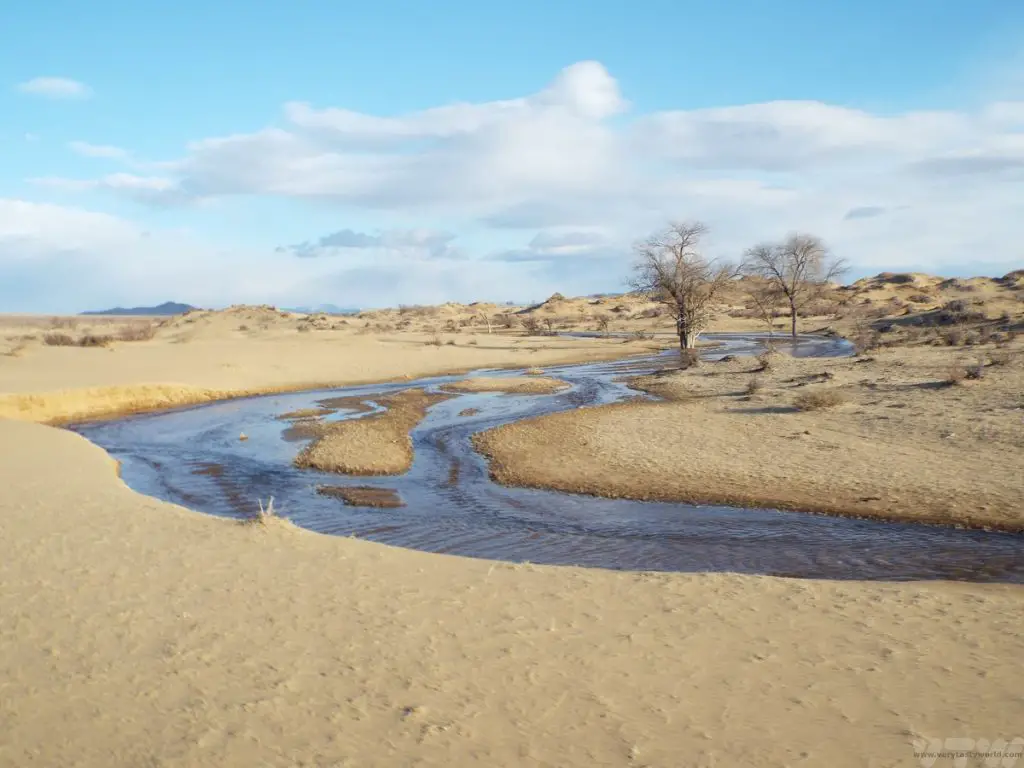
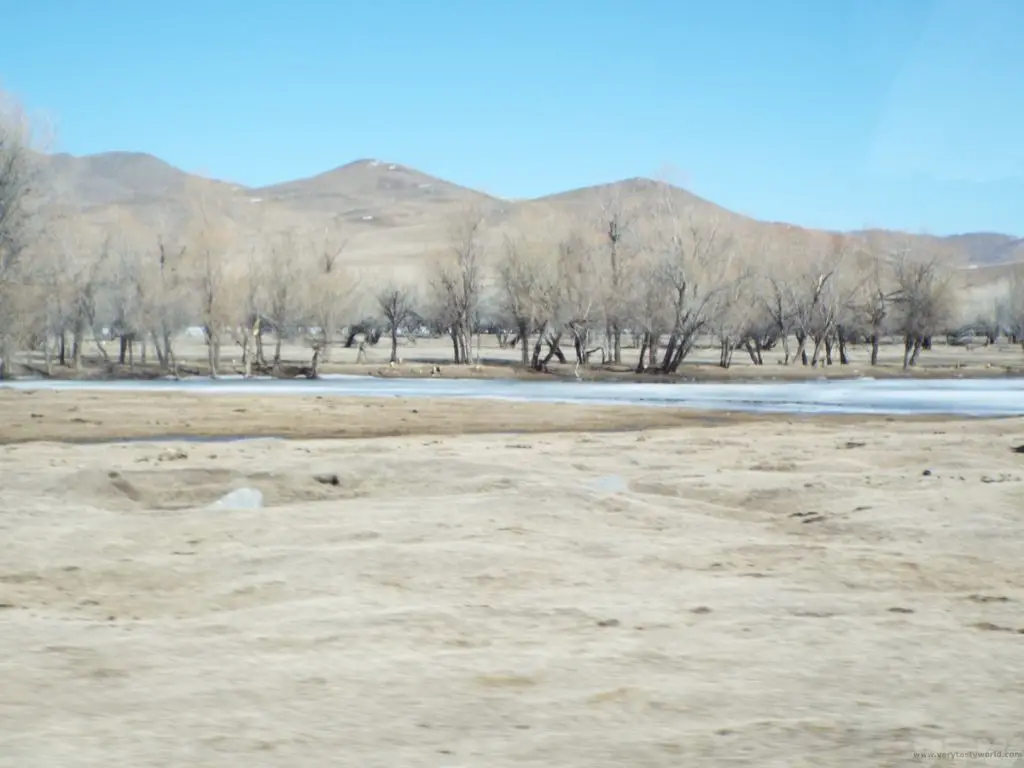
Please note that this post contains affiliate links. If you click through and decide to make a purchase we will make a small commission, at no extra cost to you, which will help towards the costs of running this site.
We’ve never particularly been interested in luxurious travel – we feel a bit uncomfortable about having our bags carried for us and we really don’t need lashings of extras in our accommodation – a bed and a bathroom will be just fine.
We were quite surprised on a recent trip where we got upgraded from a 3 star to a 4 star hotel in the UK that the difference between these levels of comfort really boiled down to a trouser press and significantly more useless cushions (which all needed to be discarded before trying to sleep) on the bed to make it appear more inviting.
We’ve been lucky to have travelled to many places all over the world. It was on a trip to Bulgaria many years ago that we first learned that some countries don’t have the drainage infrastructure to allow you to place waste toilet paper into the toilet itself so you have to use a bin instead.
This really made us think about how we live and helped us realise how lucky we are that we live in such comfort – where we can flush a toilet, or wash ourselves simply by turning on a tap.
Staying In The Gobi Desert in Mongolia
We knew that when we were staying in gers (the Mongolian name for yurts) with nomads in the middle of the Gobi desert a beautifully plumbed-in bathroom was not going to be available. In the middle of a vast desert it is obvious that there is no running water except in some of the larger towns where it would be possible to get a shower in Mongolia.
We were very aware that when we booked our trip, we were going to have to get used to not showering every day and also that the toilet arrangements would largely involve squatting over a hole in the ground. This was the loo in the Gobi.
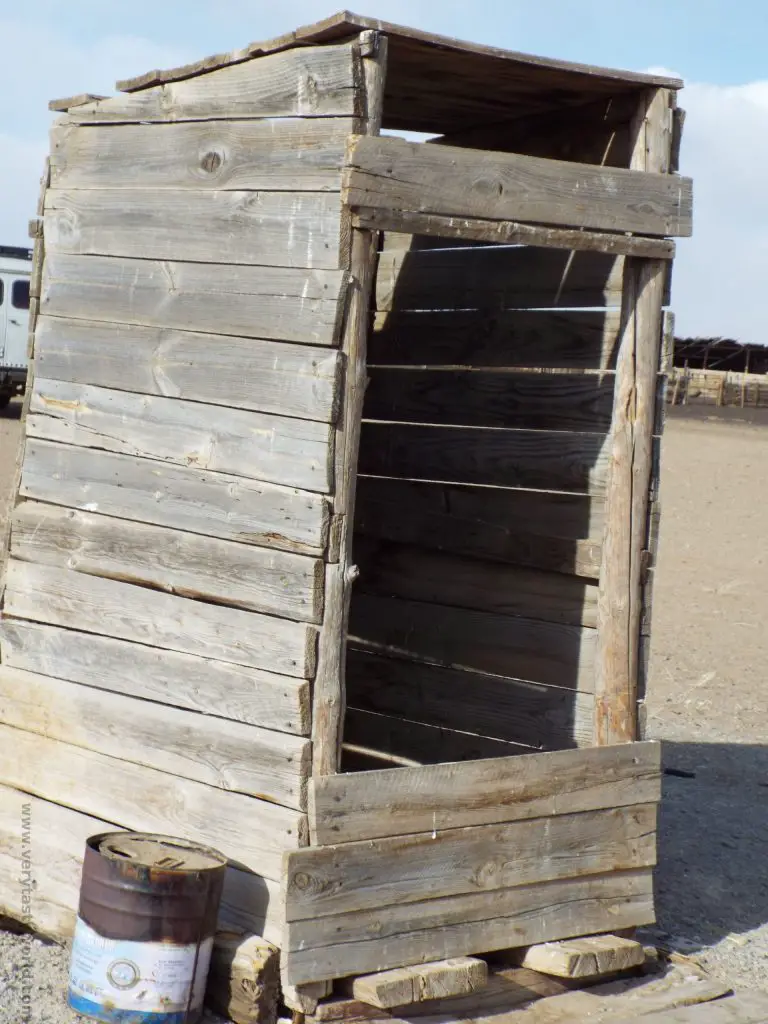
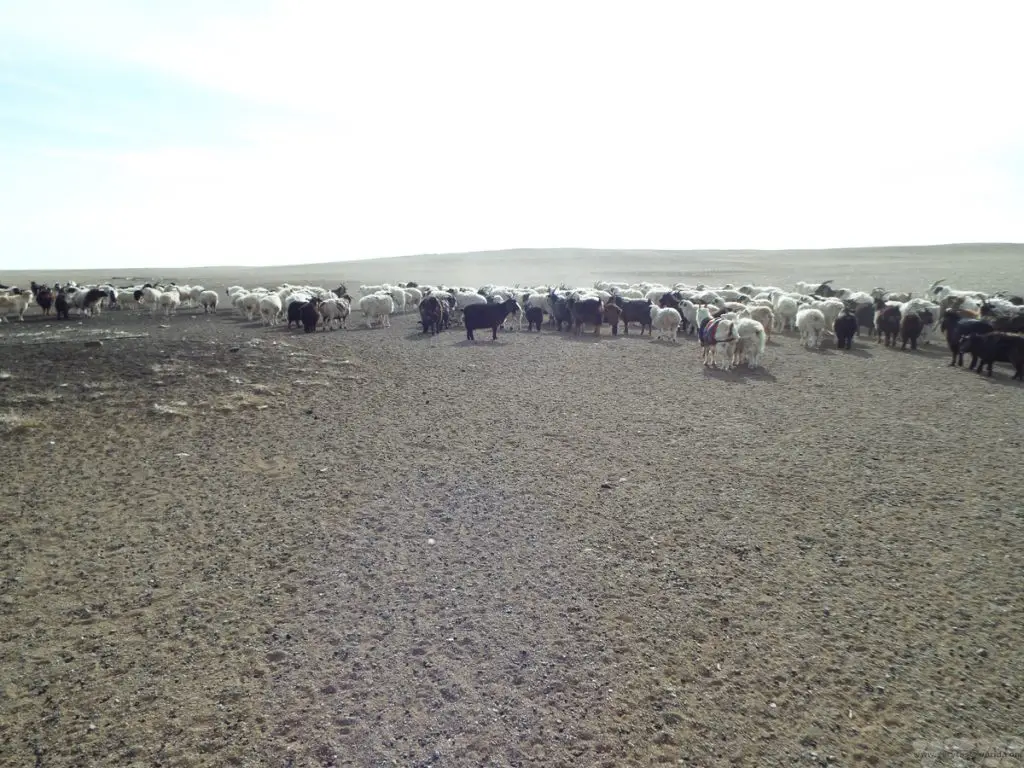
It had a good view, though.
In the Gobi people use a well to obtain water.
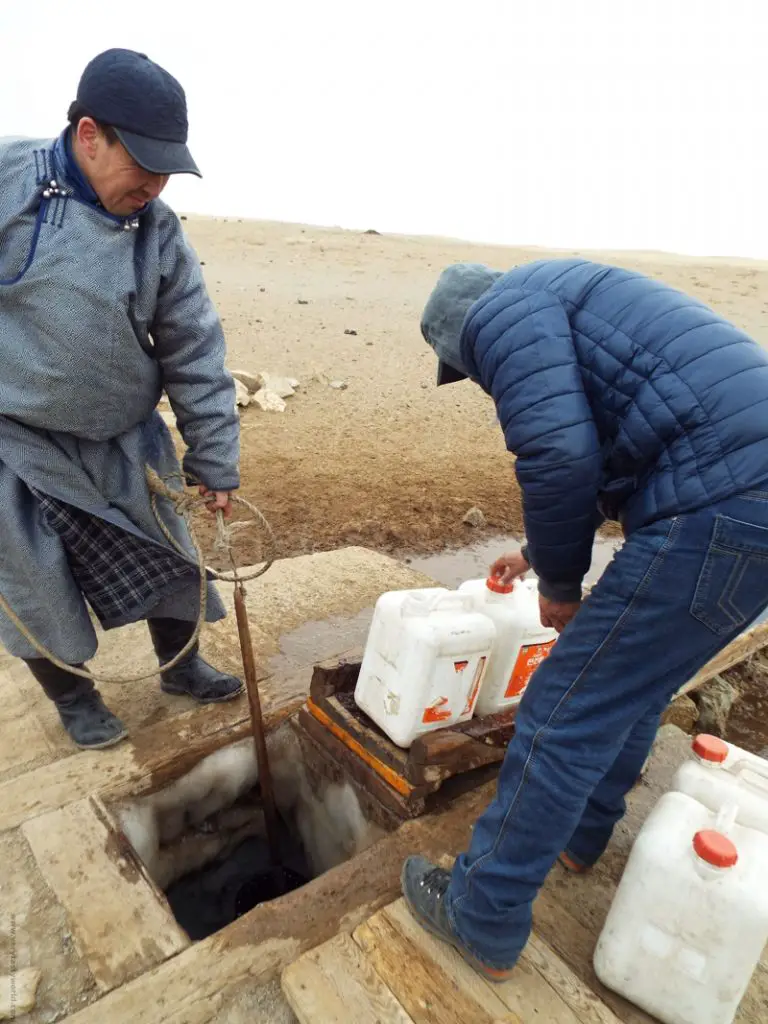
Sleeping In A Ger
You are always conscious of how precious a resource water is. You don’t waste it. Whether we were staying with families who had kindly shared their homes with us or in ger camps, water was always available, but it was finite, stored in a barrel in the kitchen area.
In family gers there is a wash area to the right side of the door and many have a little water container located above a sink area which has a tap. You run it for a minimal time to get just enough water to wash your hands or clean your teeth.
In tourist ger camps, there wasn’t always a basin inside but there was often an outside communal area where a sink had been set up between the gers where it was possible to have a quick wash/teeth clean.
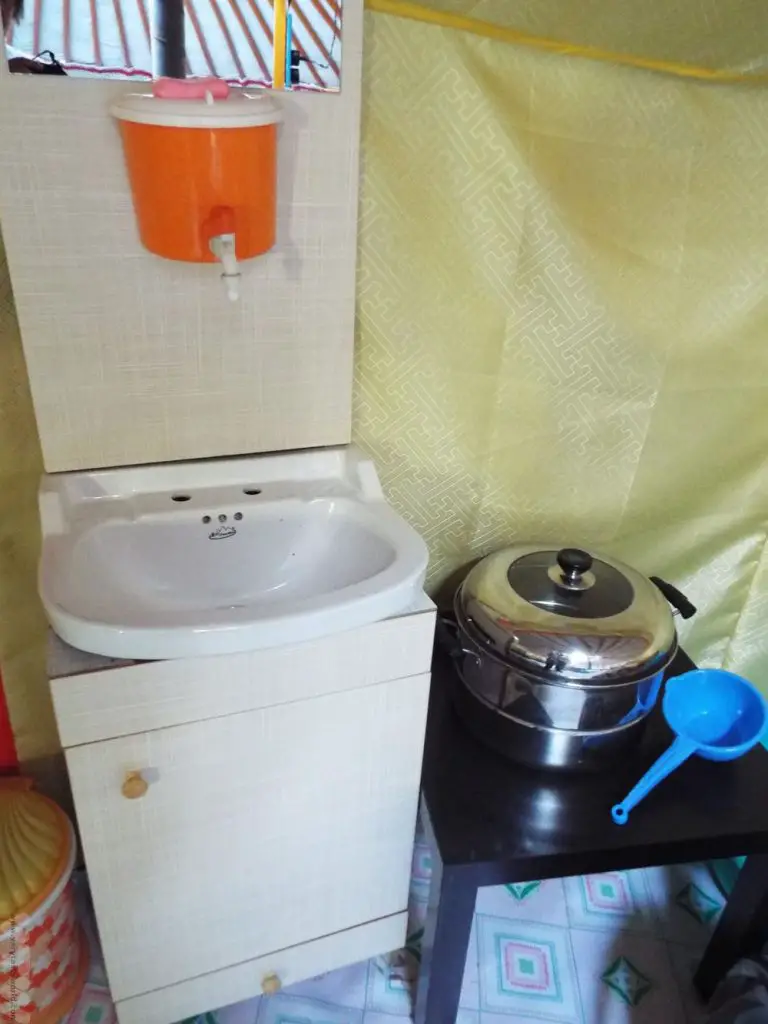
It’s not unfair to describe Mongolia’s climate as extreme with the vast temperature differences it experiences across the year. A landlocked country, with a continental climate, temperatures in the Gobi can range from -30⁰C in winter to 40⁰C in summer. It is also very dry, which helps mitigate the impact of these extreme temperatures, and usually has around 250 sunny days each year.
We visited in early spring when temperatures were still largely sub-zero – around -15⁰C at night, rising to 0⁰C during the day. Curiously, because the humidity was so low these temperatures didn’t feel as cold as they should. Likewise, the dry summer heat would be more bearable than, say, the humid climes of south east Asia or central America. But, of course, you do still need to wash.
Sanitiser gel and wet wipes (environmentally sound, non-plastic ones) were useful. But with wet wipes you do need to dispose of them properly. Indeed, waste disposal is a problem in Mongolia, so we always carried our rubbish with us until we reached a public bin where we knew it would be collected. (Not all that is ours!)
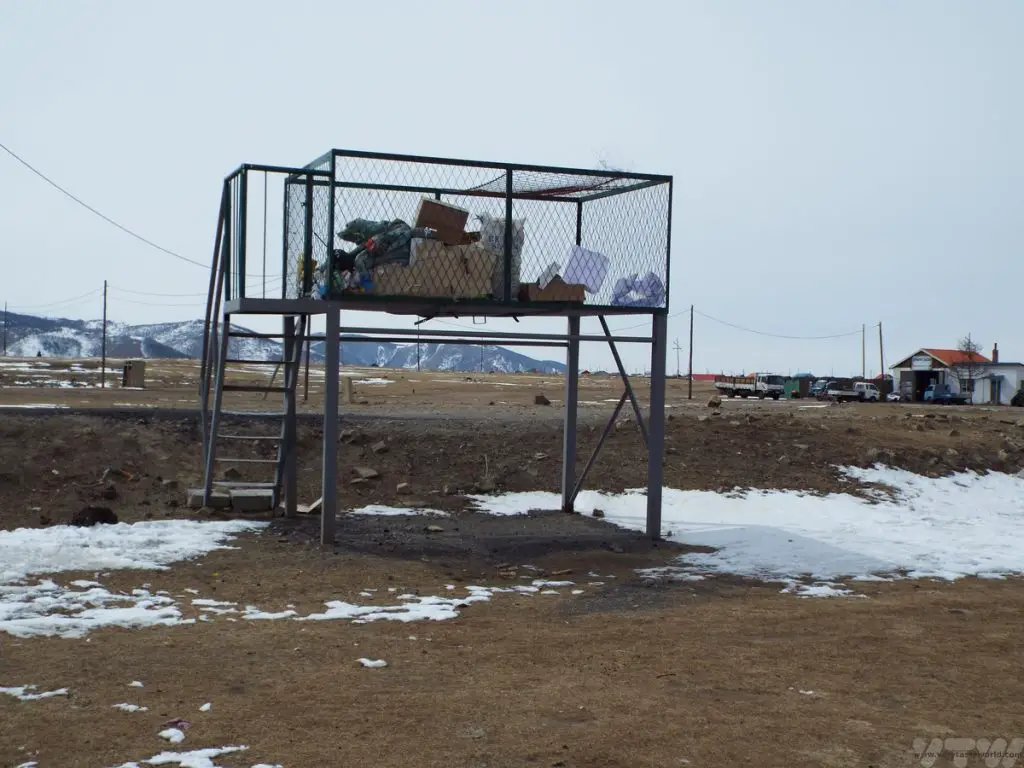
Where To Get A Shower In Mongolia
We had about three showers during our eleven day trip. Not washing and having greasy hair is surprisingly liberating – much more than we ever thought it would be. But how do you get a shower in Mongolia? You do what the locals do and go to a shower house. These are usually located in the larger towns.
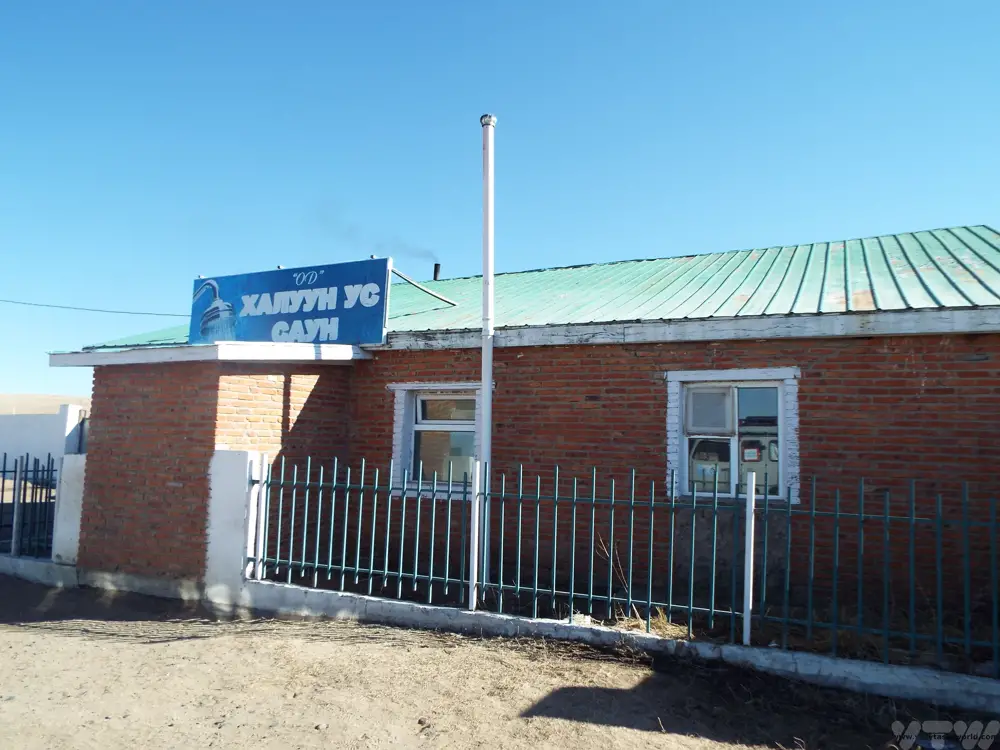
For a small fee you can use a shower room, with hot running water, either on a family/couple basis or hire an individual shower. There is a usually a changing room adjoining the shower room itself. We brought our own towels and toiletries (just soap/shampoo) with us. Because we were travelling at the end of winter we could walk straight in but during the summer months you may have to queue on a first-come, first served basis. They are basic but entirely functional.
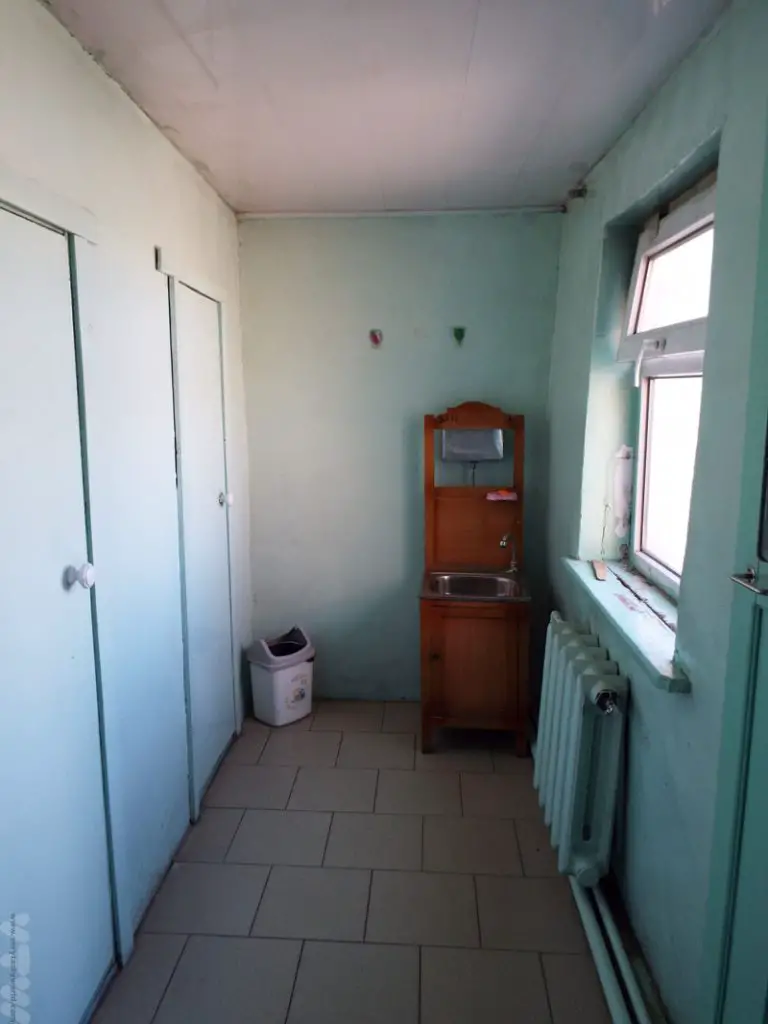
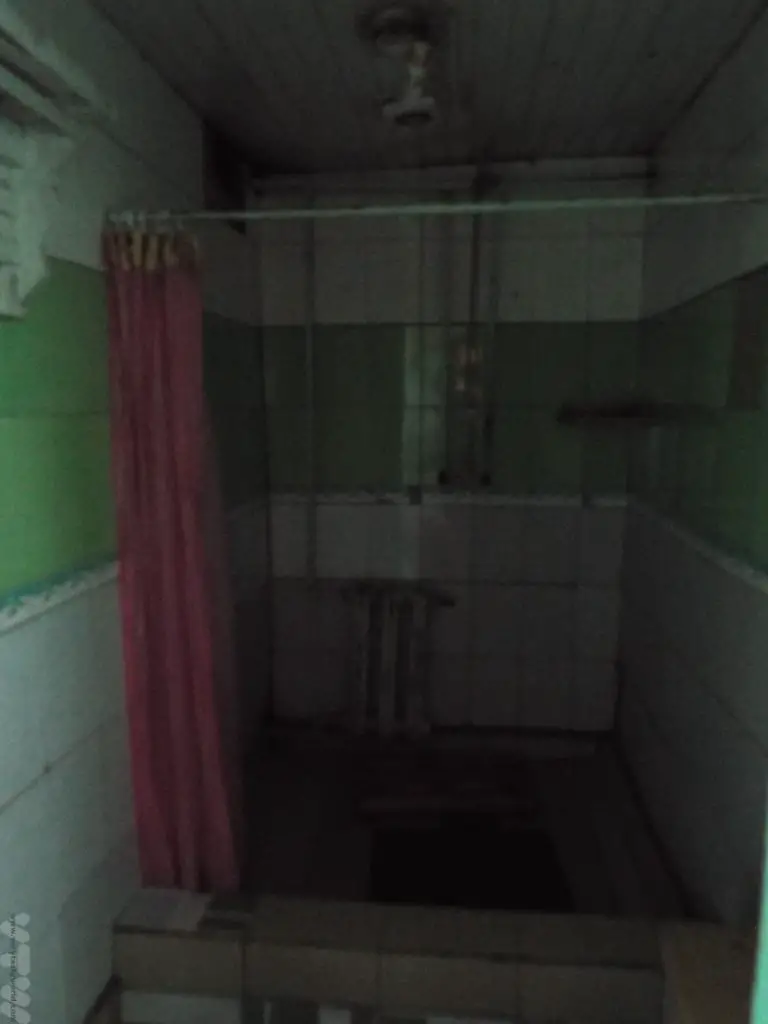
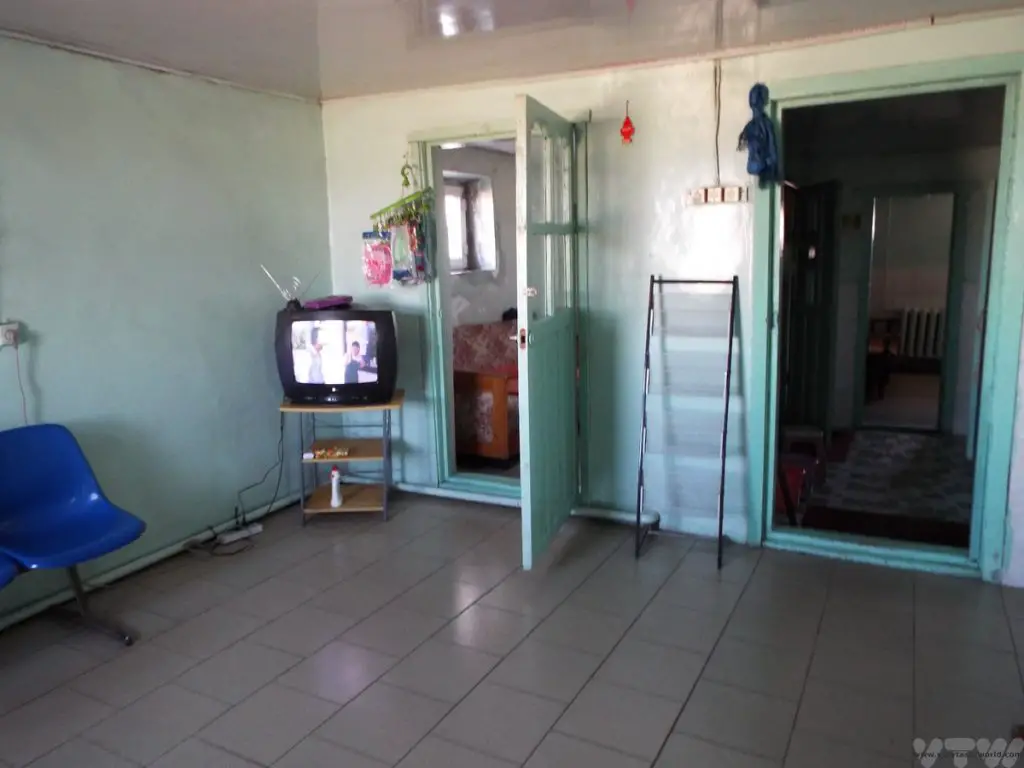
Packing Essentials For A Shower In Mongolia
For Shower Days
Travel towels – if you manage to get a shower in Mongolia microfibre towels are best. They dry you quickly and they dry quickly after they’ve dried you. If you’re staying in a ger, you can hang your towel from the rafters to let it dry. We found that our hosts often used the rafters for hanging out their washing, or as a coat stand. You can get a variety of travel towels that squish nicely into a bag.
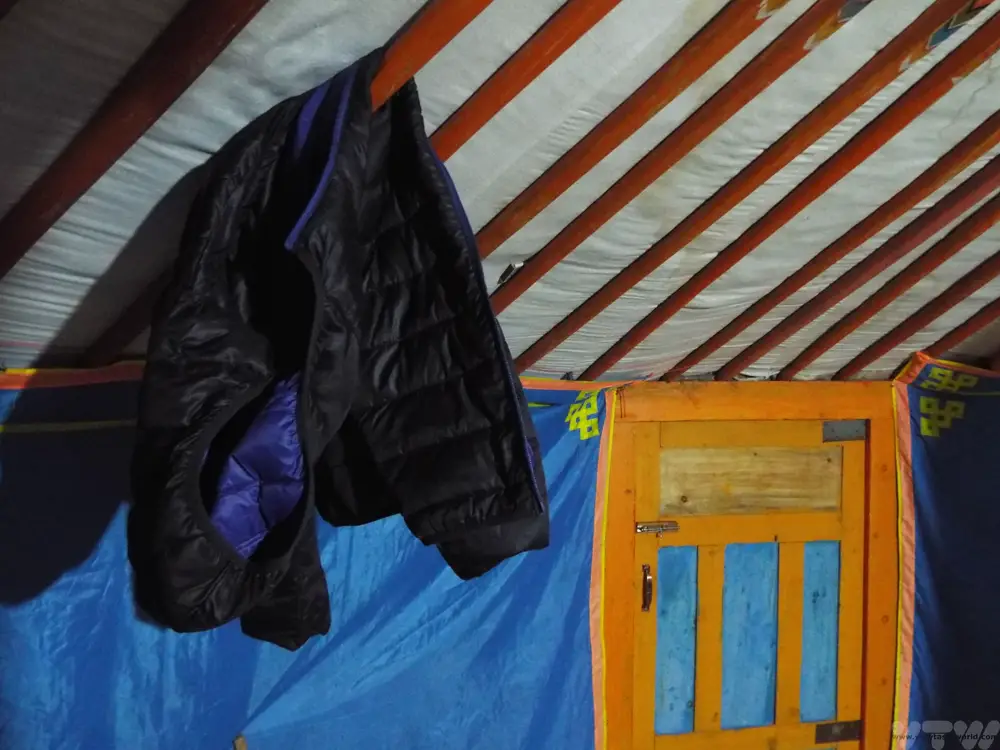
Basic toiletries – We tend to use products that combine body and hair wash. If you’re not sharing a shower room, you’ll need one for each person, or wait until your companion has finished washing.
For Non-Shower Days
Wet-wipes – useful for a ‘lick and a promise’ wipe wash. Try to get biodegradable types, if possible. If you can’t, they need to be disposed of responsibly, never to the environment.
Hand sanitiser – once an essential item for travellers, now an essential item for the world, especially helpful for cleaning your hands after answering the call of nature.
General Packing Tips for Mongolia
Deodorant/anti-perspirant – you can get some types that last for 48 hours. Moisturiser and lip salve may also be useful – the cold weather can dry the skin somewhat. Suncream is also a good idea.
Shaving kit if you need/want it. Electric would be best. Make sure you have batteries, you are unlikely to be able to charge a shaver in a ger. Most of the time the only electricity available will be for a single light bulb, often run from a car battery.
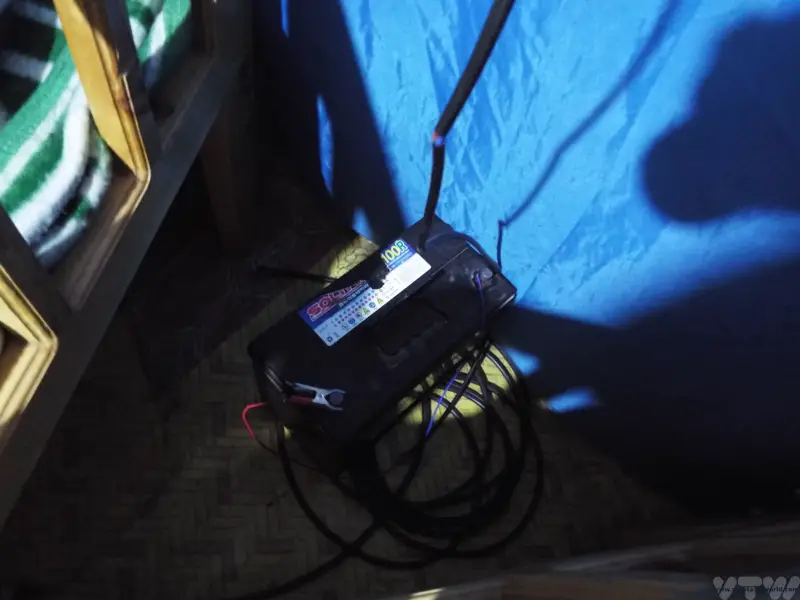
Head torches are really useful, particularly if you need to answer the call of nature during the night. The toilet is usually located a fair distance from the ger so you will need to be able to see where you are going. Using a torch that can be worn on your head means that you have both hands free. USB charged torches are cool but there won’t be a USB charging point in the desert, so you will need a battery operated one. It’s worth remembering to bring a few spare batteries as well.
And, don’t forget your toothbrush. Cleaning your teeth using the water supply in the ger is absolutely fine. The water from the wells is pure and we happily drank it without filtration.
There may be additional toiletries that you will need, in which case bring them along. We tend to bring only as much as we expect to use so rather than take a big bottle, we estimate the required amount and decanted it into smaller bottles.
There are other products, such as dry shampoos, which will wash your hair without water, that you can investigate if you really can’t go without a hair wash. We didn’t bother. Things like towels are necessary but tend to bulk out your luggage and we wanted to travel as light as possible.
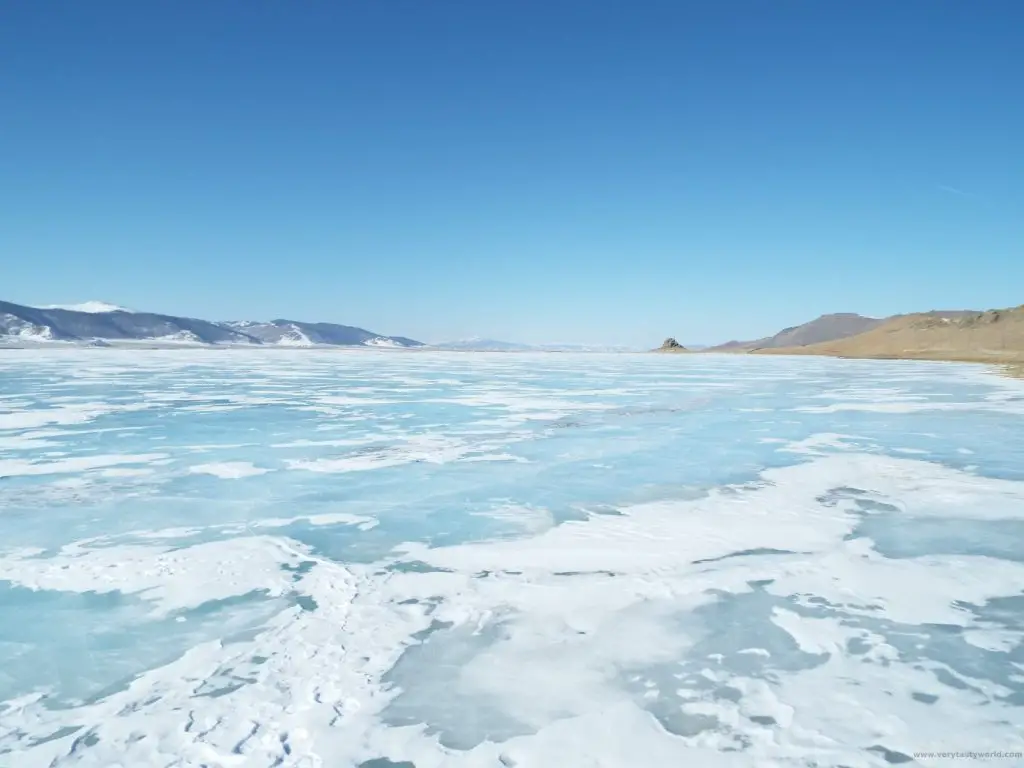
In terms of clothing to pack, we found that layering was a really good idea. You will want to wear socks in bed, along with thermal pyjamas, and as many duvets and blankets as can be squeezed into the van.
It was difficult – initially – to leave our comfort zone and get used to very basic toilets as well as go without washing, but actually we surprised ourselves at how quickly we just got stuck in. We had a remarkable – and hugely enjoyable – adventure.
Related Posts You May Enjoy

Sumo Tokyo Tickets – Big In Japan
Sumo wrestling is the national sport of Japan and is steeped in tradition. The origins of sumo are thousands of years old and it is thought to have originated in the Yayoi period in Japan (300 BCE-300 CE). There are six sumo tournaments each year and watching the sumo is a great day out. Here is a guide to what to expect at a basho and how to get sumo Tokyo tickets.
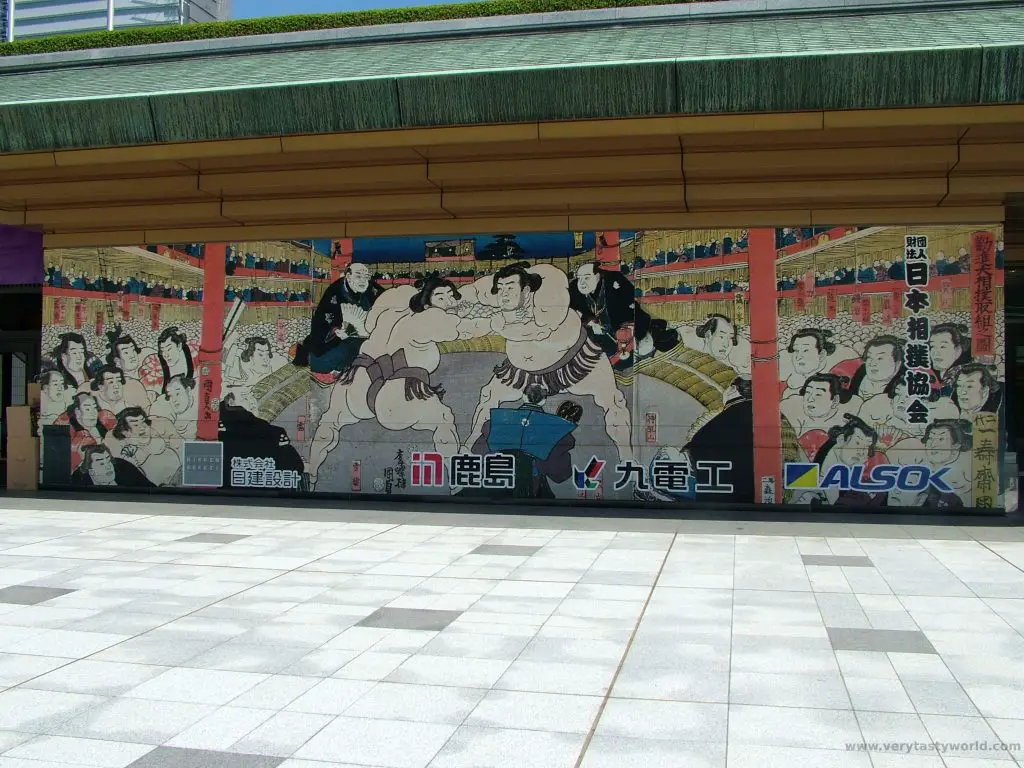
The rules are very simple: Two rikishi (wrestlers) face each other in a ring known as a dohyo, which is 4.55m in diameter. When mutual consent is given to begin, signified by each wrestler touching his fists to the floor, the bout commences. A rikishi loses when he is either forced out of the ring or touches the floor with any part of his body other than his feet. The wrestlers wear just a mawashi (belt), which can be grasped and used to push, throw or lift their opponent out of the ring or onto the floor. Some rikishi don’t use the mawashi and tend to have a push and thrust approach to taking on their opponent.
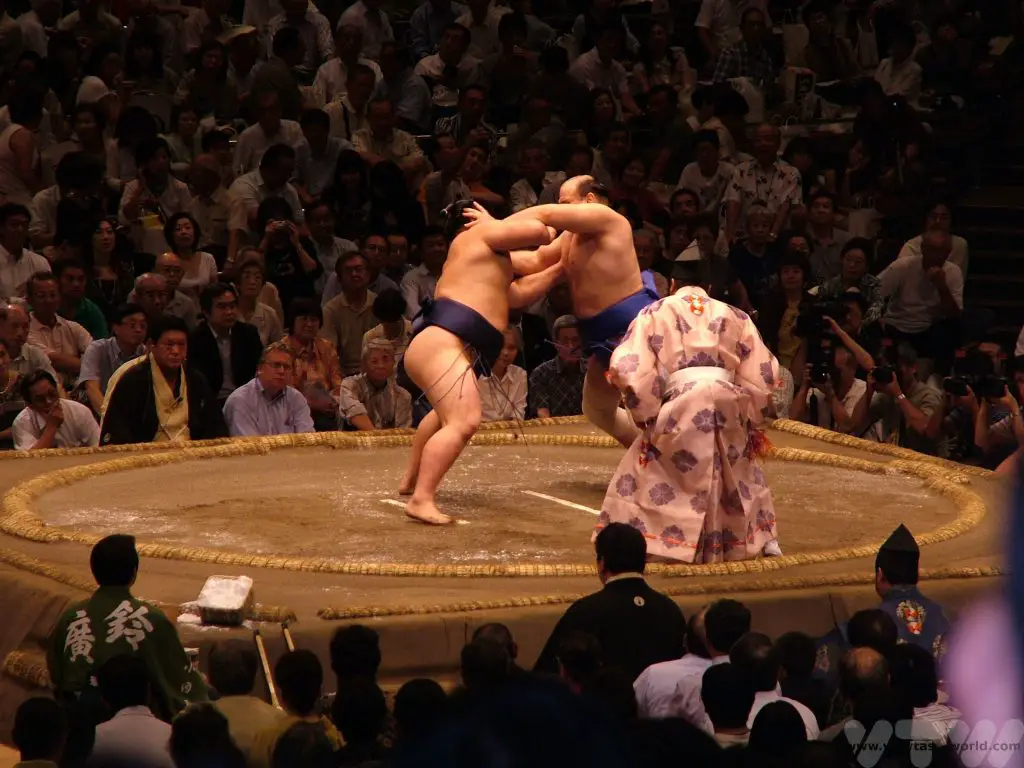
There are very few techniques that are banned, but fist punches, poking the opponent in a vulnerable area or pulling the opponent’s top knot, which is part of the chonmage (the hairstyle), are all considered to be unacceptable and any rikishi that uses these moves will automatically lose the match. A gyoji (referee), wearing robes based on medieval imperial court attire, oversees proceedings, encouraging the rikishi to spar and deciding which has won the bout. Sometimes the outcome is extremely close so additional judges sit around each edge of the dohyo in order to assess which wrestler first exited the ring or touched the floor.
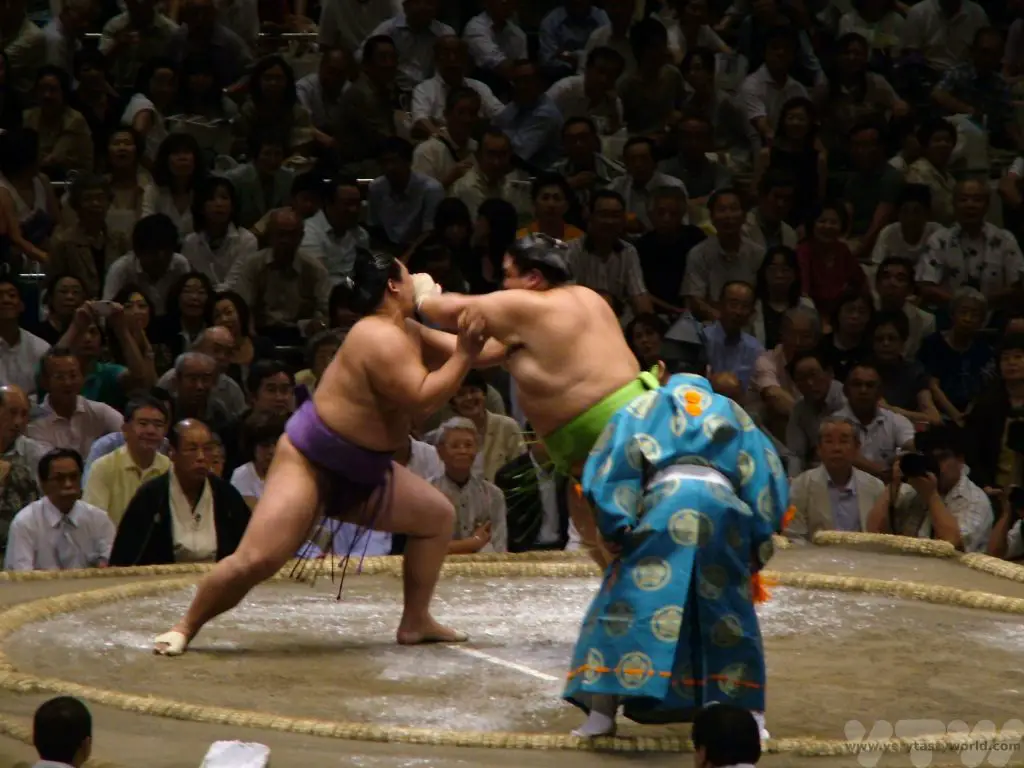
The first characteristic that most people notice about sumo wrestlers is their weight, which can be substantial. Sumo wrestlers put on weight because it is more difficult to force a heavy opponent from the ring. But they are extremely fit, flexible and agile. There are no weight categories in the sport so a 100kg wrestler could easily face an opponent twice his weight. This is also what makes sumo so exciting – weight isn’t necessarily an advantage as the smaller rikishi may be more nimble and can employ moves that outsmart their opponents.
The bout itself is often, but not always, short in duration, although there is no time limit. It is always preceded by a series of rituals that have origins both in Japan’s Shinto religion and ancient warfare. The rikishi throw salt into the ring to purify it. Other practices include wrestlers raising a leg and stamping on the ground to scare away enemies and also clapping their hands. Once ready, they take their mark and squat in a position known as shikari, facing their opponent, ready to thrust forward when the bout begins. It’s often an explosive start as two large men crash into each other and it’s hugely exciting.
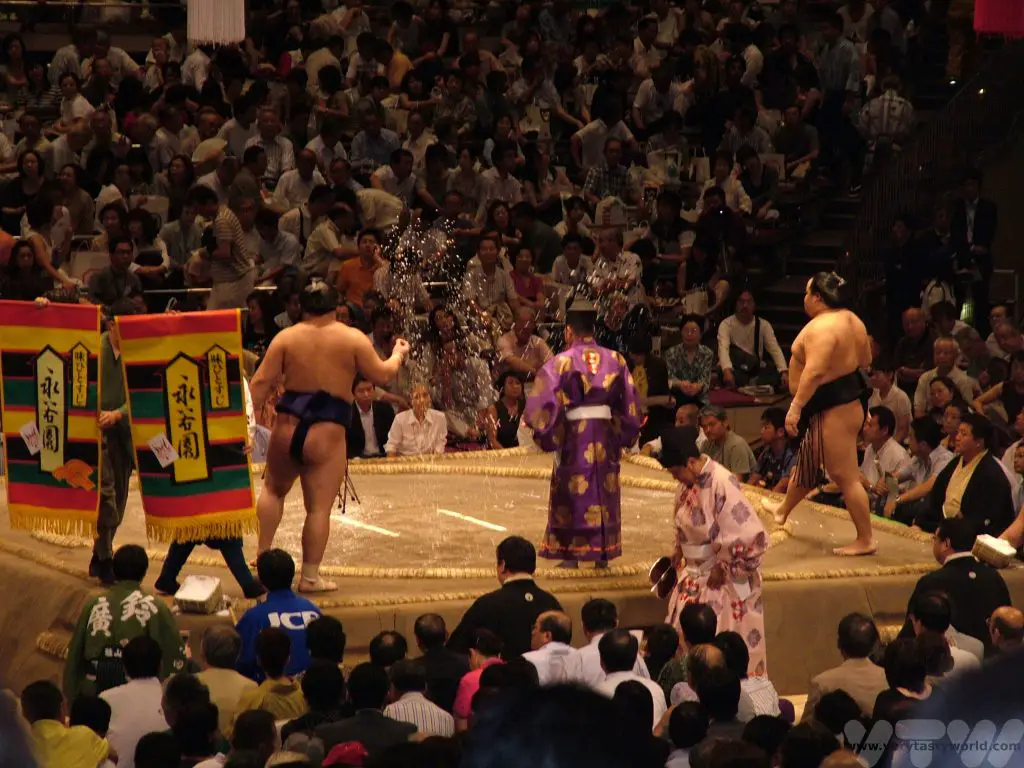
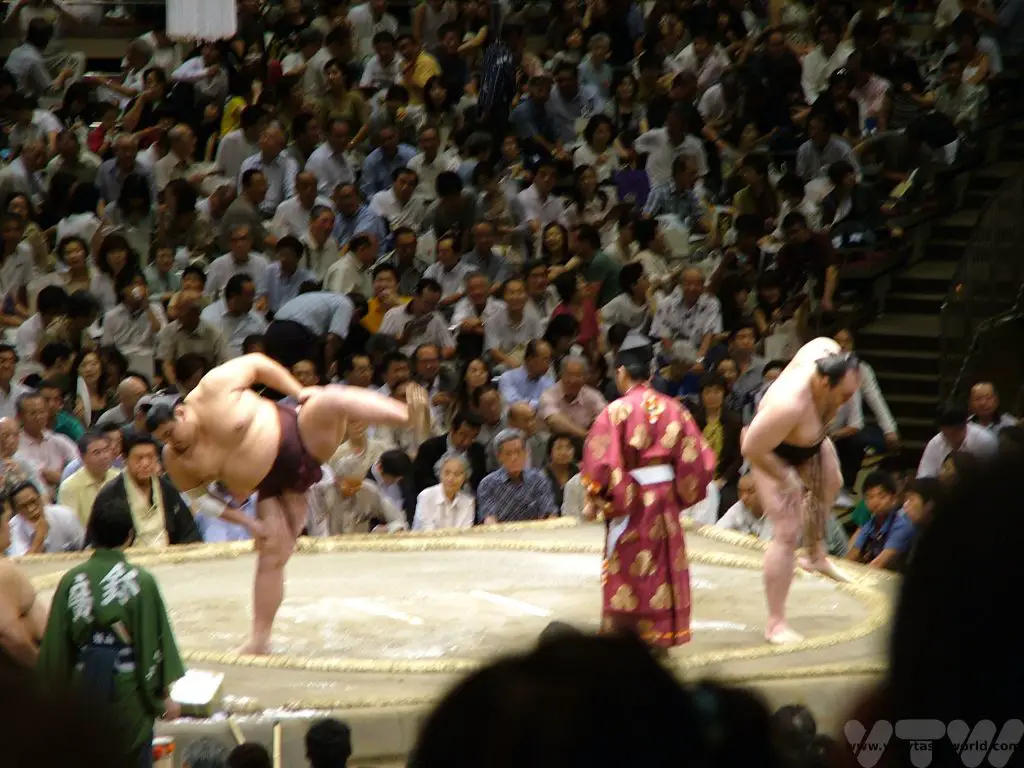
Tournament Schedule
Grand Sumo Basho, or tournaments, are held six times every year. Three are held in Toyko at the Ryogoku Kokugikan (January, May, September) and then there is one each in Osaka (March), Nagoya (July) and Fukuoka (November). (These schedules have changed a bit during the last couple of years due to Covid.) Each tournament lasts 15 days. The most popular days to attend are weekends and the final days of the basho as the excitement mounts to see who will win the Emperor’s cup. We were honoured to be invited to the sumo by a family friend a few years ago. It made for the most excellent entertainment. The tournament schedule can be found at the Japan Sumo Association website.
The Ryogoku Kokugikan dohyo in Tokyo is located just a two minute walk from the JR Sobu Line Ryogoku Station West Exit (useful if you have a JR pass), or five minutes walk from the Toei Ryogoku Station A3 exit on the Toei Subway Oedo Line. The Ryogoku Kokugikan is easy to find and outside you will see the brightly coloured flags bearing the rikishi names lining the route to the entrance.
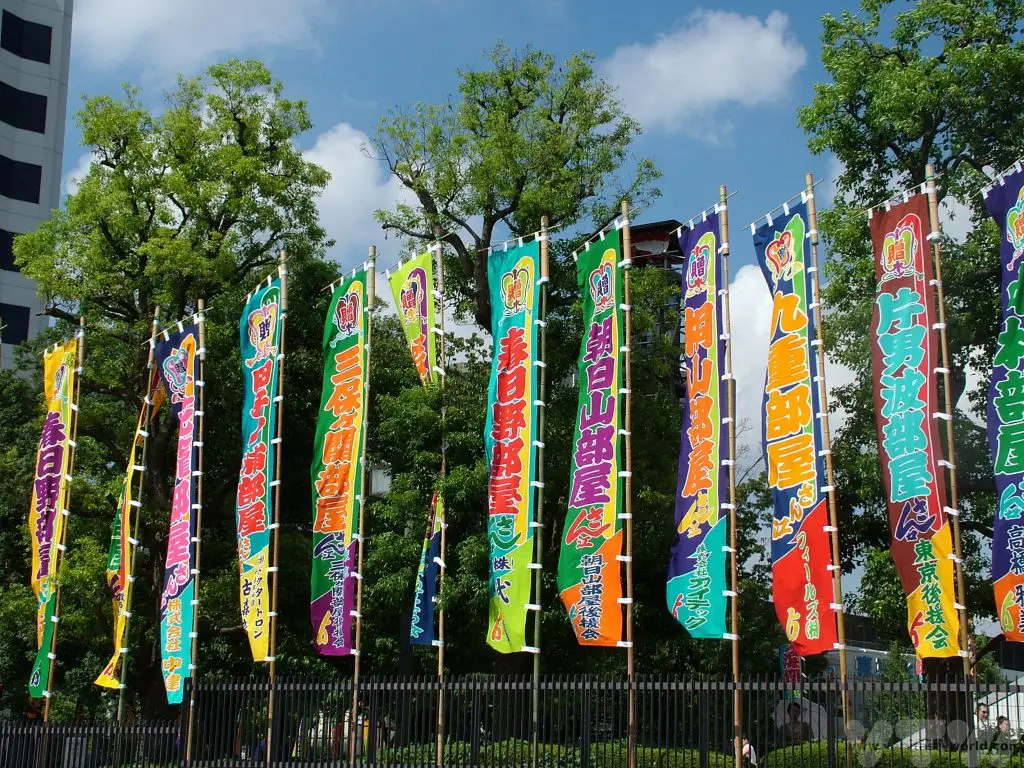
Sumo Tokyo Tickets
There are various tiers of ticket available and the most popular seats do sell out quickly. Ringside tamari seats are the most expensive. They are the closest you can get to the action and sometimes audience members can be a little too close if an energetic bout results in a wrestler falling on top of them!
Box seats are designed for either four or six people and you have to buy all the seats within the box. This suits a group of people viewing together. They have a tatami mat base and cushions. The boxes closest to the dohyo are more expensive and they become progressively cheaper the further back they are located. The box seats are very popular.
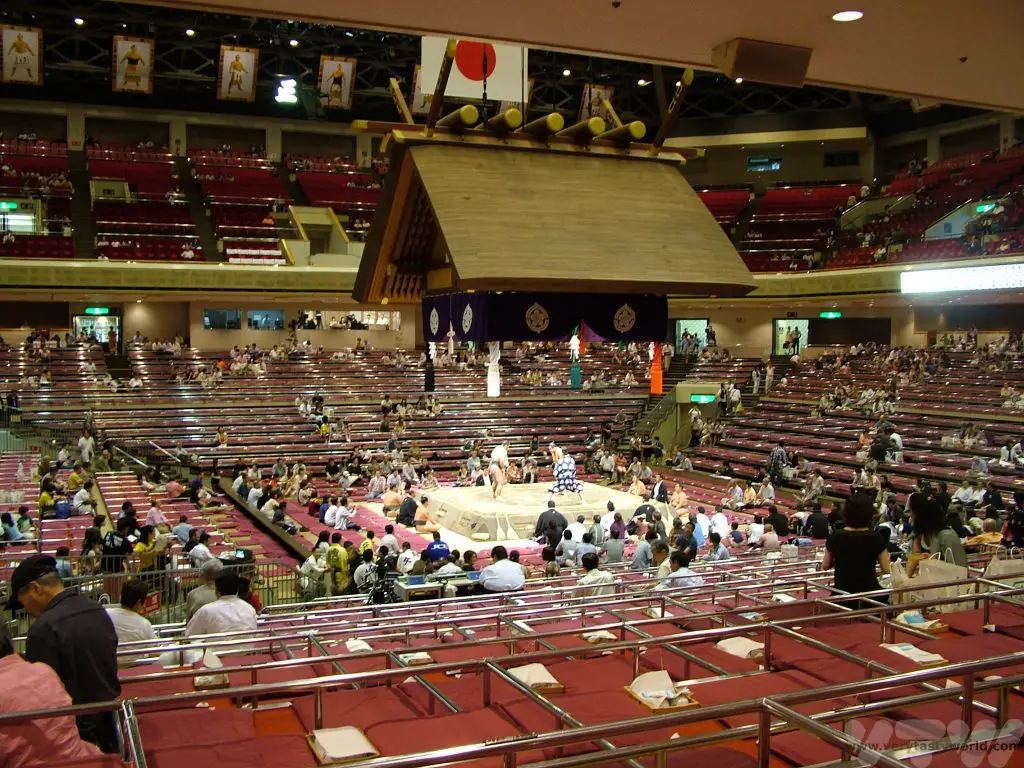
Arena seats are located on the upper floor in a standard tiered seating arrangement, further away from the action but they offer a good view at a much cheaper price. For the die-hard fan who cannot pre-order tickets, jiyu seki, (free-seating tickets), located right at the top of the building just below the rafters, can be purchased each day at the Kokugikan from 8am. These will go quickly though and if you want some, you may well need to start queuing very early in the morning.
The tickets are valid for the entire day and bouts start from around 8:30am. Sumo is divided into a number of divisions and the lowest ranked wrestlers will spar earliest in the morning. As the day progresses and the higher ranked rikishi start making an appearance the stadium will slowly fill up. By the time the Makunouchi (the highest division) commences the Kokugikan will be full and the atmosphere incredibly lively as the audience members support their favourite rikishi. You can buy banners, t-shirts and other souvenirs at the concession stands.
Watching The Sumo In Tokyo – Make A Day Of It
On arrival at the Kokugikan main entrance, if you have tickets, you will be guided to your seat. It is possible to pre-arrange a bento and drinks. (Alcohol is allowed.) The stadium even has its own kitchen in the basement. There, they make yakitori chicken, which is often eaten as part of the bento meal. There is a reason that chicken is on the menu – it is a bird that stands on two feet, something that the rikishi most definitely want to emulate. It’s also absolutely fine to bring your own food and drink if you wish.
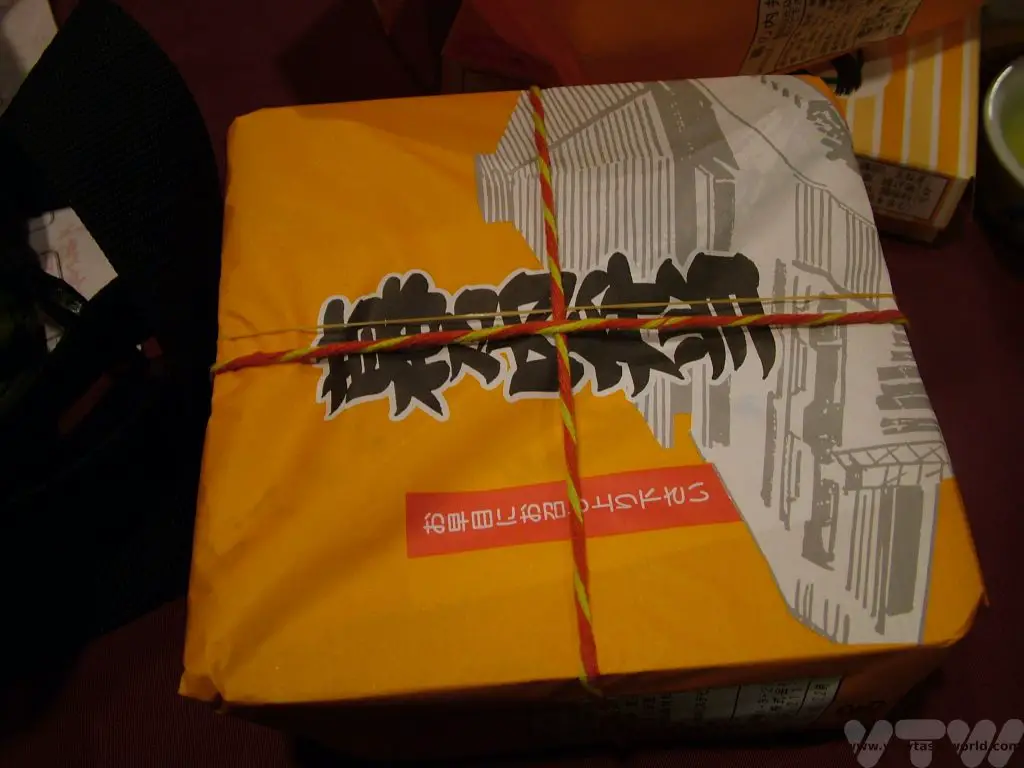
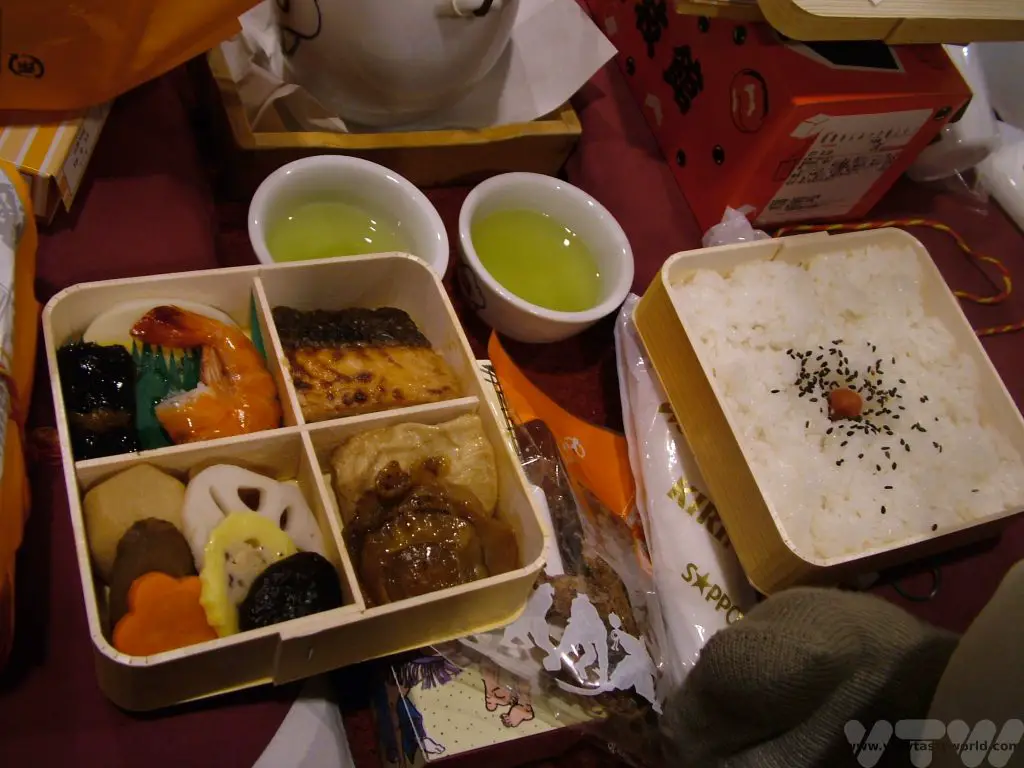
Then it’s a case of sitting back and watching the action, whilst enjoying delicious food, a cup of green tea and, later on, a few beers as well.
You will often see the banners from sponsors of a particular rikishi parade around the dohyo before the bout. These organisations put up prize money for their sponsored wrestler. If he wins, he receives cash in an envelope offered by the gyoji but if he loses, his opponent wins the prize. The higher ranked and more popular the wrestler the greater the number of envelopes. If a lower ranked rikishi beats an ozeki (second highest rank) or Yokozuna, he wins a magnificent wadge of cash.
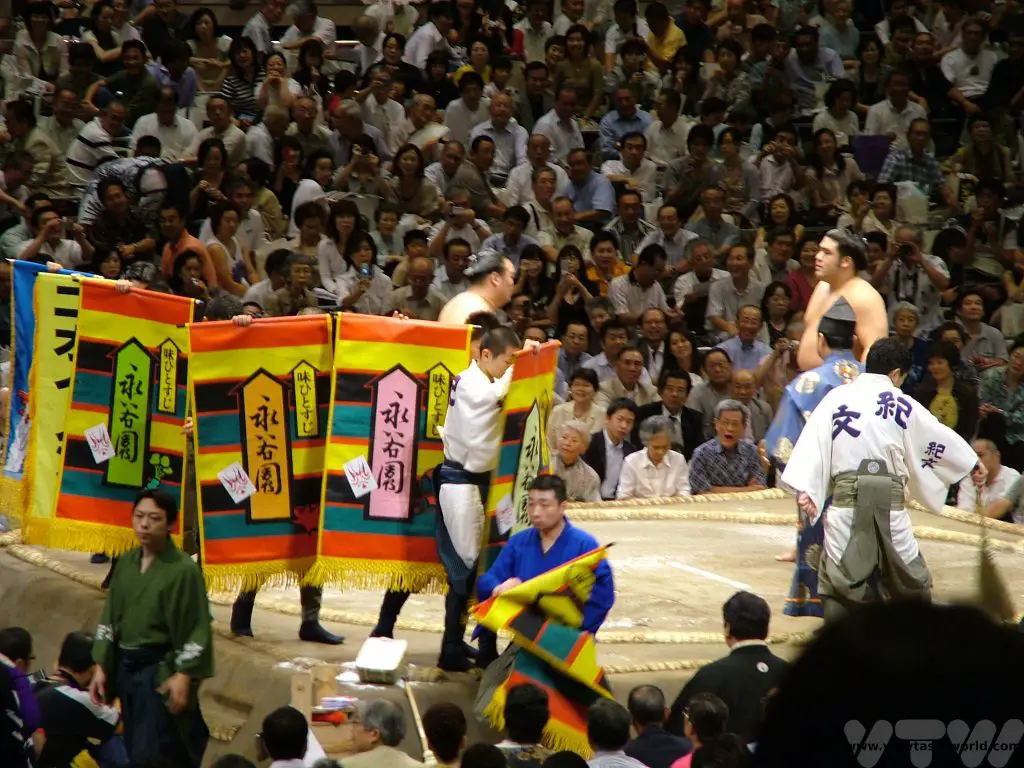
One of the wonderful things about when you watch the sumo in Tokyo is that you can wander around the arena between bouts and will often see rikishi in their yukata (light cotton kimono). More often than not, they are happy to pose for photos.
When it’s time for the Makunouchi bouts, the top tier rikishi will enter the dohyo wearing their keshō-mawashi, which are beautifully decorated ceremonial silk aprons, and form a circle. They perform a number of symbolic movements together before they leave and prepare for their bouts.
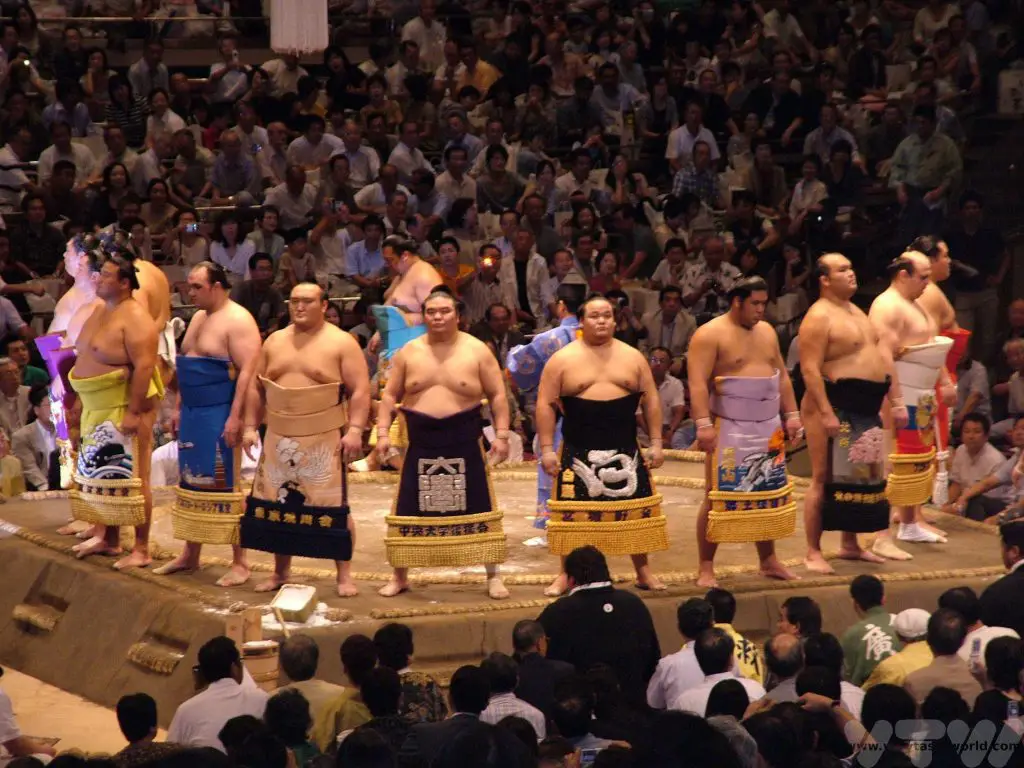
The Yokozuna, accompanied by two top division wrestler ‘assistants’ then enters the dohyo, wearing a tsuna (ceremonial rope, the word Yokozuna literally means ‘horizontal rope’) around his waist, to perform the ring entering ceremony. There are two types and the Yokozuna will choose which one he will perform soon after his promotion.
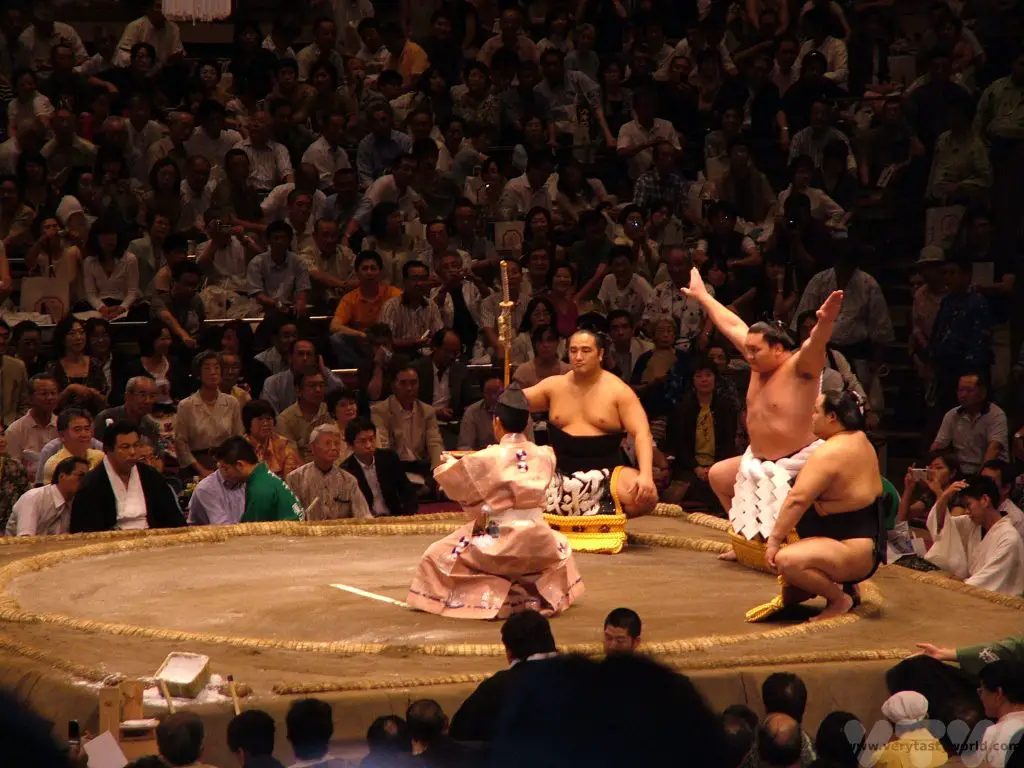
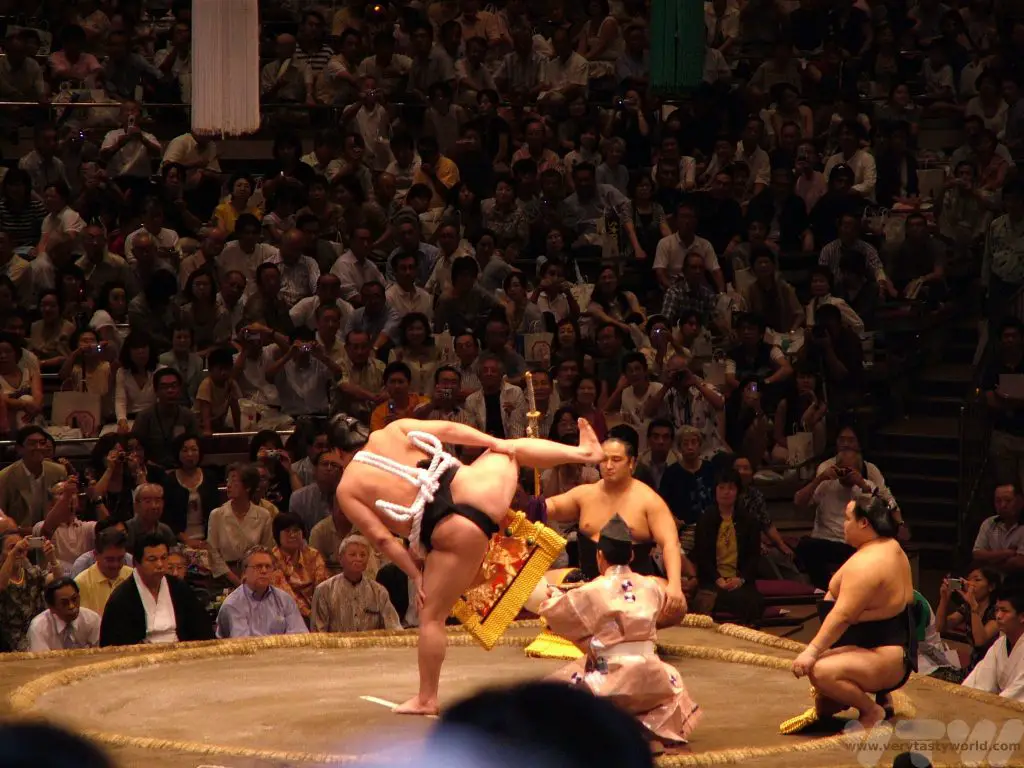
The highest ranked wrestlers fight the final bouts and the crowd become increasingly excited. When the very last bout has been fought, there is a closing bow-swirling ceremony – another ritual steeped with symbolic meaning.
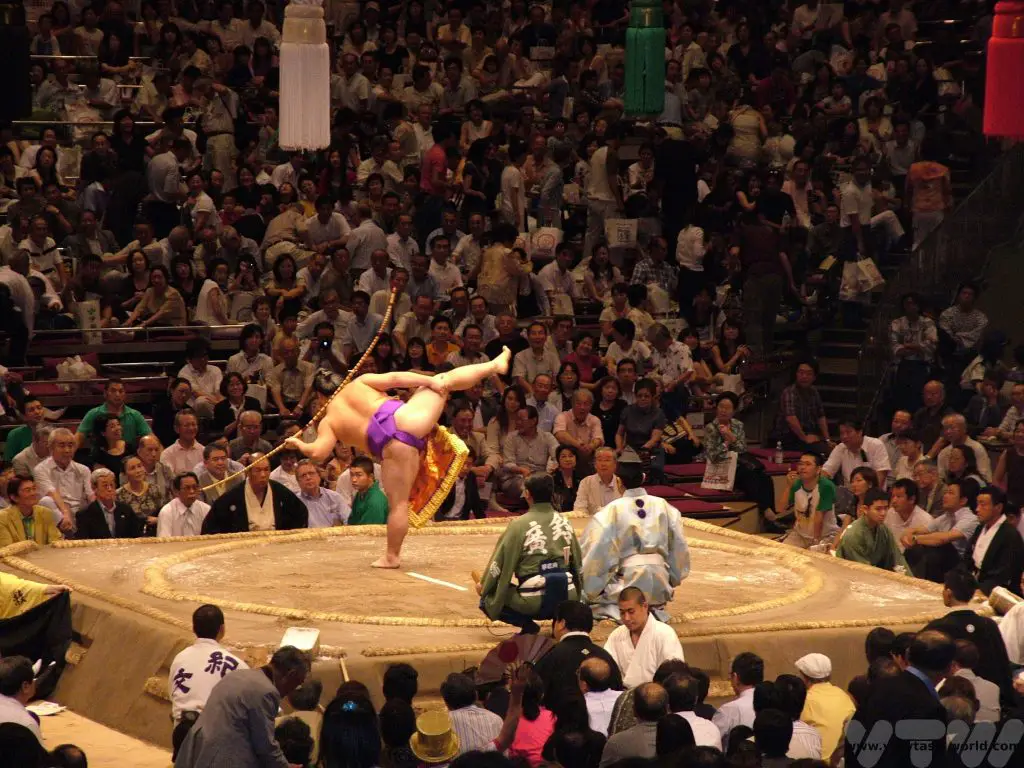
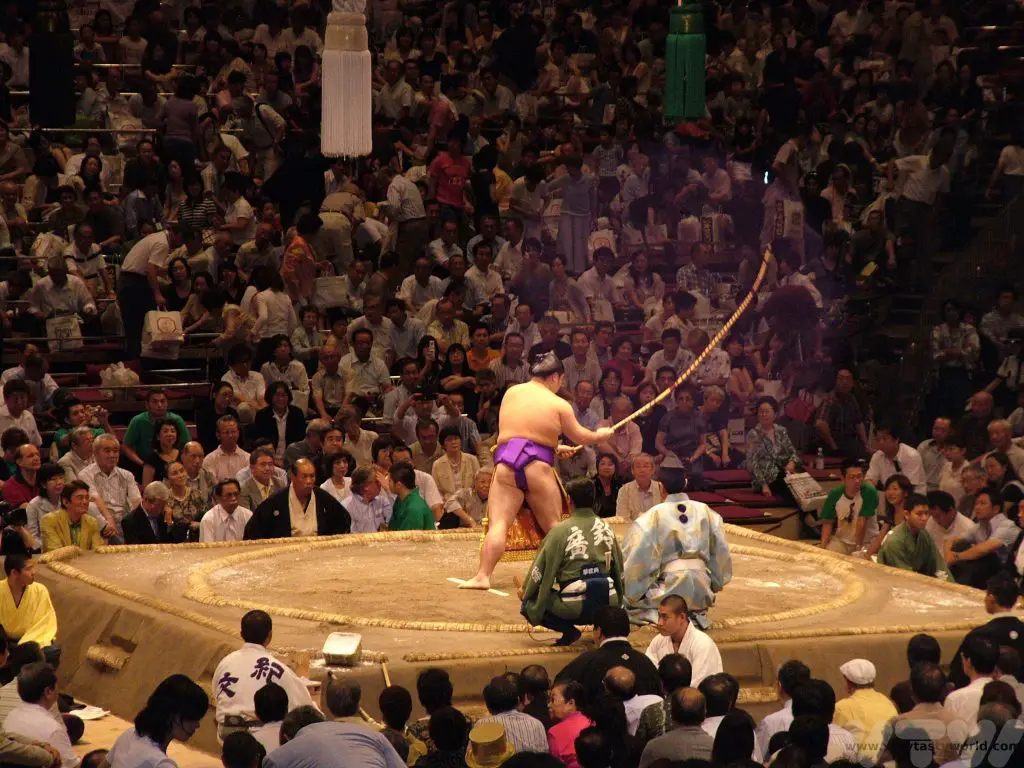
Sumo Chanko Nabe Restaurant
And what better way to round off a wonderful day’s entertainment watching the sumo than going out for dinner at a local restaurant? Of course the only meal we could have was chanko nabe – sumo stew. This is the meal that sumo wrestlers eat at their stables in large quantities after their training sessions. (They go to sleep after eating chanko nabe and this helps them gain weight.) It’s filling and nutritious and, importantly, delicious. It’s a great sharing dish – a hot pot that sits in the middle of the table and everyone helps themselves. It comprises meat and vegetables, sometimes with seafood and tofu, that simmers in a dashi broth (a recipe for dashi can be found here). Sometimes sake or mirin is added to the broth to add flavour. There is no specific recipe which means that loads of scrumptious variations are possible. Unsurprisingly, there are a cluster of chanko nabe restaurants in the Ryogoku area.
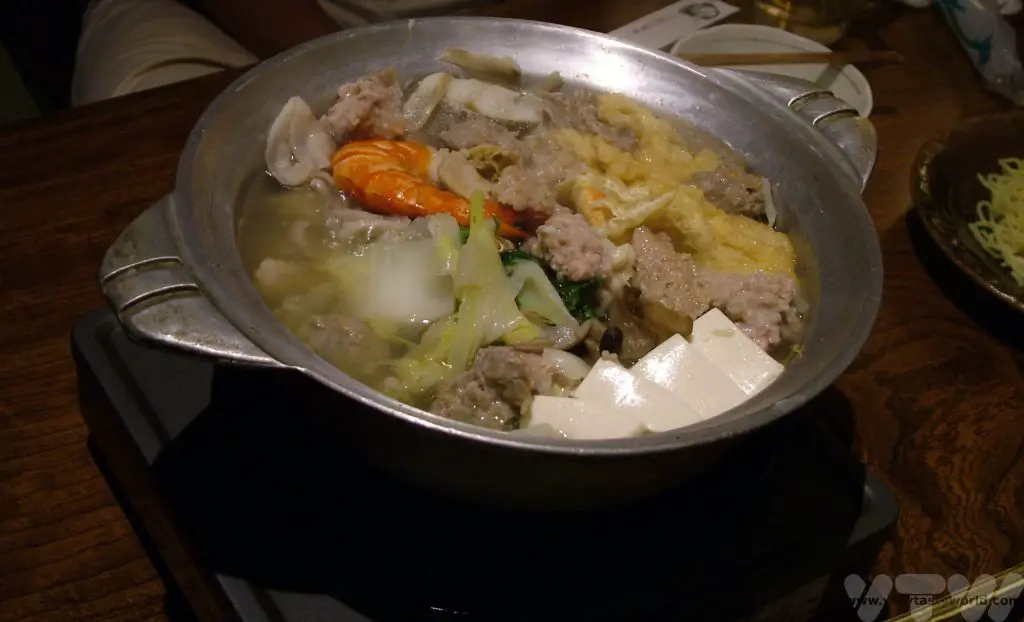
If you are visiting Tokyo at a time when there is no basho tournament, it is possible to watch sumo wrestlers training in their stables. There is no cost to this but you’ll have to get up early as they usually train between 7:30 and 10am. You generally don’t get to enter the stable itself but can watch through a large window. Alternatively there are some guided tours that will take you behind the scenes at a sumo stable.
And if you can’t get to Japan at all it is possible to watch sumo basho on TV. Japan’s national broadcaster NHK World present the highlights from each day over the entire fortnight. The first and final day’s events are also shown live.
If you are likely to be in Tokyo at the time of a basho we highly recommend trying to obtain tickets for the sumo. It really is the most lovely way to spend a thoroughly enjoyable afternoon watching this unique and fascinating sport.
Related Posts You May Enjoy

- Recipe: Simmered Shiitake Mushrooms

- How to Use Public Transport in Japan

- RECIPE Oyakodon Donburi

- Planning a Trip to Japan

- The Makanai: Cooking for the Maiko House

- Setsubun Food – Bean Throwing Day

- The Gassho Farmhouses of Rural Japan

- Recipe: Japanese Simmered Pork Belly – Buta no Kakuni

- RECIPE: How to Make Umeboshi

Etosha National Park Self Drive Safari
The Etosha national park in Namibia is located in the north of the country and is probably its most famous park and a popular tourist attraction. It’s well designed and has great wildlife viewing opportunities. The best thing about it is that you can take yourself on safari as Etosha National Park self drives are very easy.
Etosha National Park Self Drive – Take a Drive on the Wild Side
Namibia is a fantastic country for a fly-drive holiday. The distances may be long but the roads are well made and largely empty. And the scenery is spectacular. It’s worth noting that some of the roads are gravel, so it’s worth packing a spare tyre, and that the petrol stations can be quite a distance apart. We travelled on the principle of topping up the tank every time we passed a petrol station, trying never to let the tank go below half-full.
The great thing about Etosha is that it is accessible for all types of car. We had hired a two-wheel drive saloon car – perfect for the pair of us – and encountered no difficulties at all, there was no need to have hired a 4WD. (Indeed we had been absolutely fine with the two-wheel drive throughout our journey in Namibia, even on the Skeleton Coast.) The roads are clearly marked and easy to navigate. There is plenty of parking around the waterholes, which are the best places for viewing wildlife.
The park is located in the vast Etosha pan, the largest salt pan in Africa. Four of the ‘Big Five’ game animals – lions, leopards, elephants and rhino (black and white) – live in the area. Etosha became a game reserve in March 1907 and a national park in 1967.
The word ‘Etosha’ means ‘great, white place’ in the language of the Ovambo tribe, which is entirely appropriate. The pan was a lake several thousand years ago. Angola’s Kuene river used to flow into the area but changed its course over the years, eventually flowing into the Atlantic. The result was that the lake dried up completely. However, there are a number of springs in the pan and lower lying areas fill with water during the rainy season. Indeed, if the wet season is particularly rainy the lake can re-form across Etosha, although these days it is fairly shallow and dries up again swiftly. If the area is flooded the chances of seeing wildlife can be reduced as they have no need to travel to the watering holes. Hence the best time to visit is during the dry winter season, from April to October.
Entry To The Etosha National Park
On entry to the park you need to pay a fee per person and for the vehicle. and you will also need to show ID. Your passport will be fine to use for this purpose.
On entering the park, the first thing we had to do was stop… for a zebra crossing!
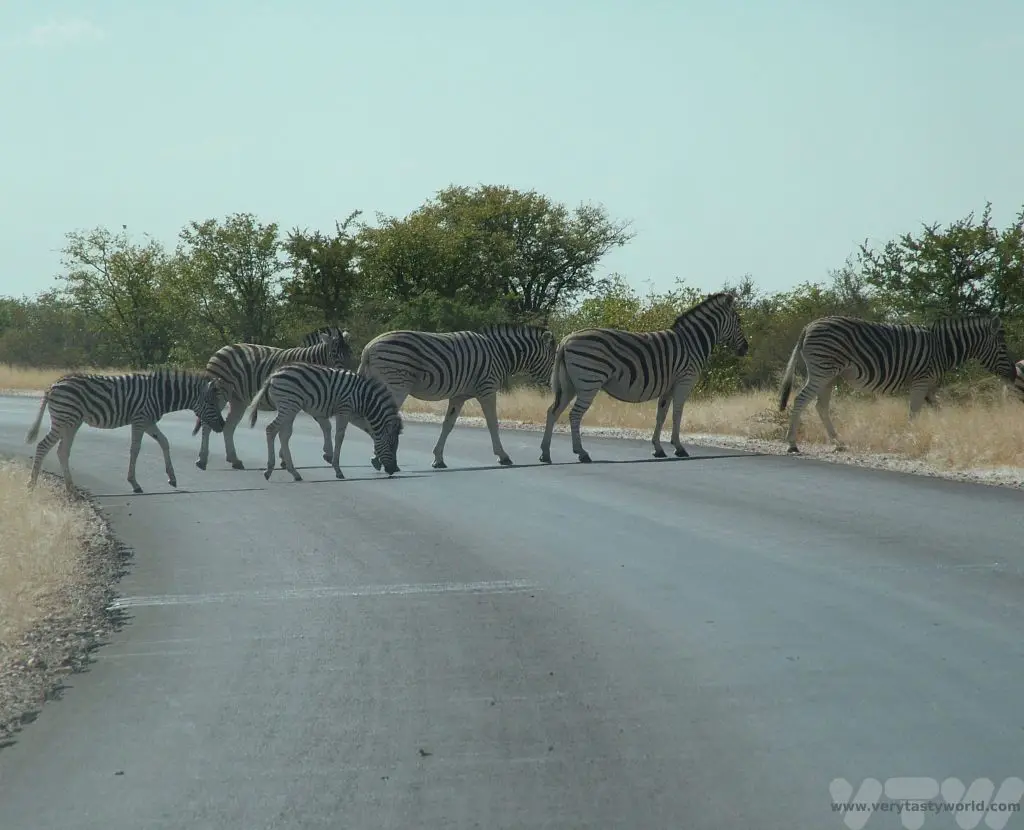
Although organised safaris are available, we thoroughly enjoyed exploring the park at our own pace. The advantage of an organised tour is that the local rangers can communicate with each other via mobile phone to let each other groups know about particular sightings.
We found that when visiting a watering hole it was actually better to wait. A number of organised safari tours turned up to the watering hole, quickly established that there was no wildlife there, and moved on. But waiting turned out to offer a much more rewarding experience. Sitting in the car, looking out across the vast, vast pan, we saw what appeared to be some angular shapes appear on the horizon. We continued to watch. Slowly, a group of giraffe sauntered across the plain. It was such a pleasure to see them as a group.
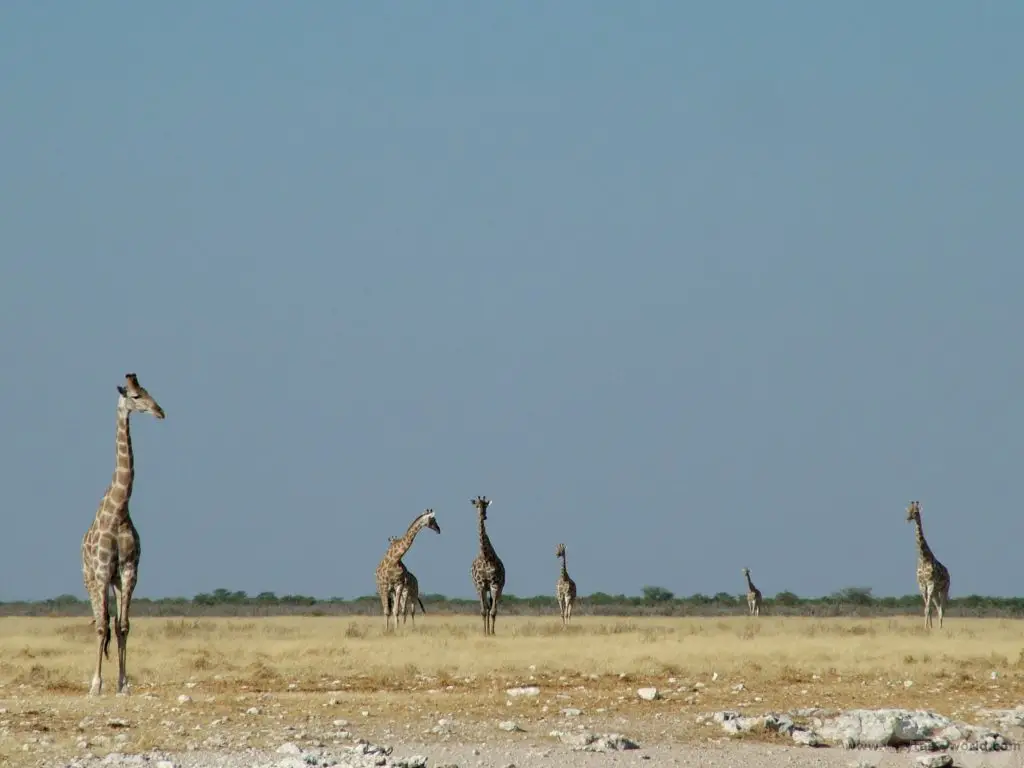
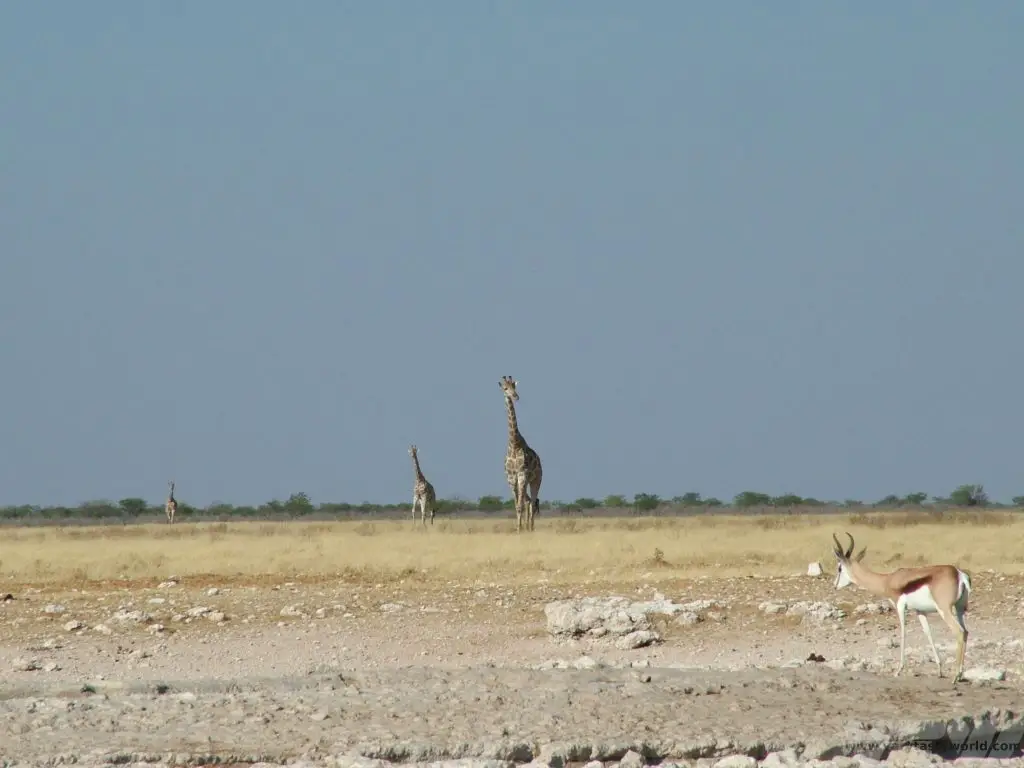
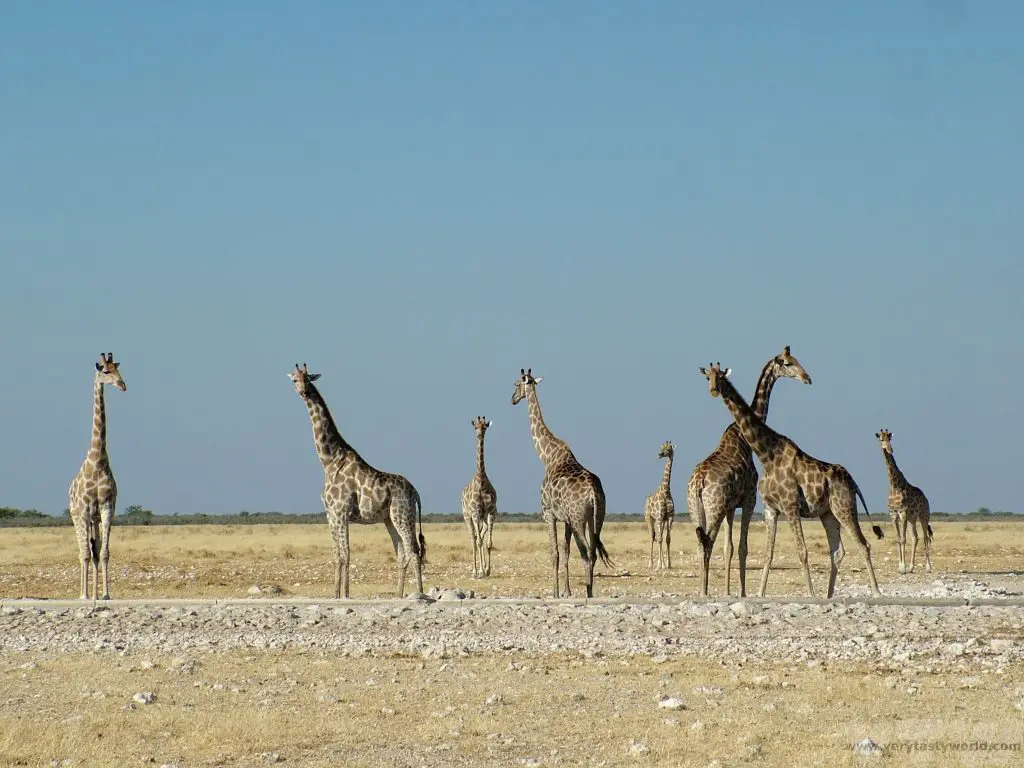
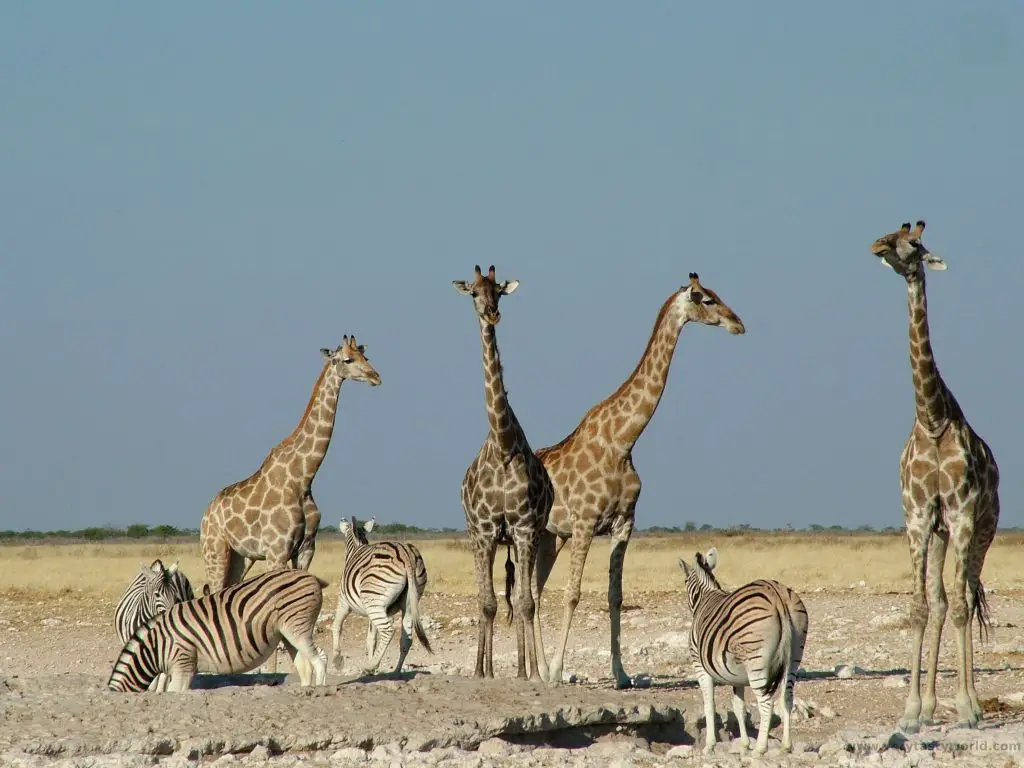
Giraffe often appear to be somewhat ungainly but actually they were very graceful creatures. It was fascinating to see them part their legs, despite their long necks, in order to reach the water and have a long, cool drink.
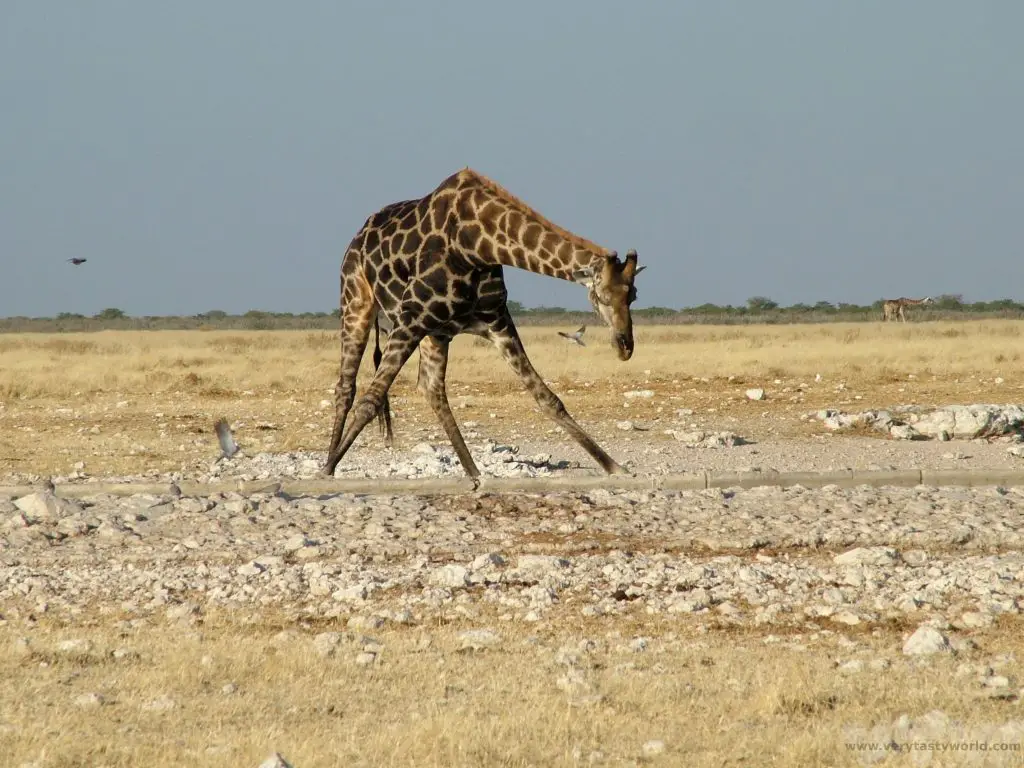
We saw wildebeest having a rut.
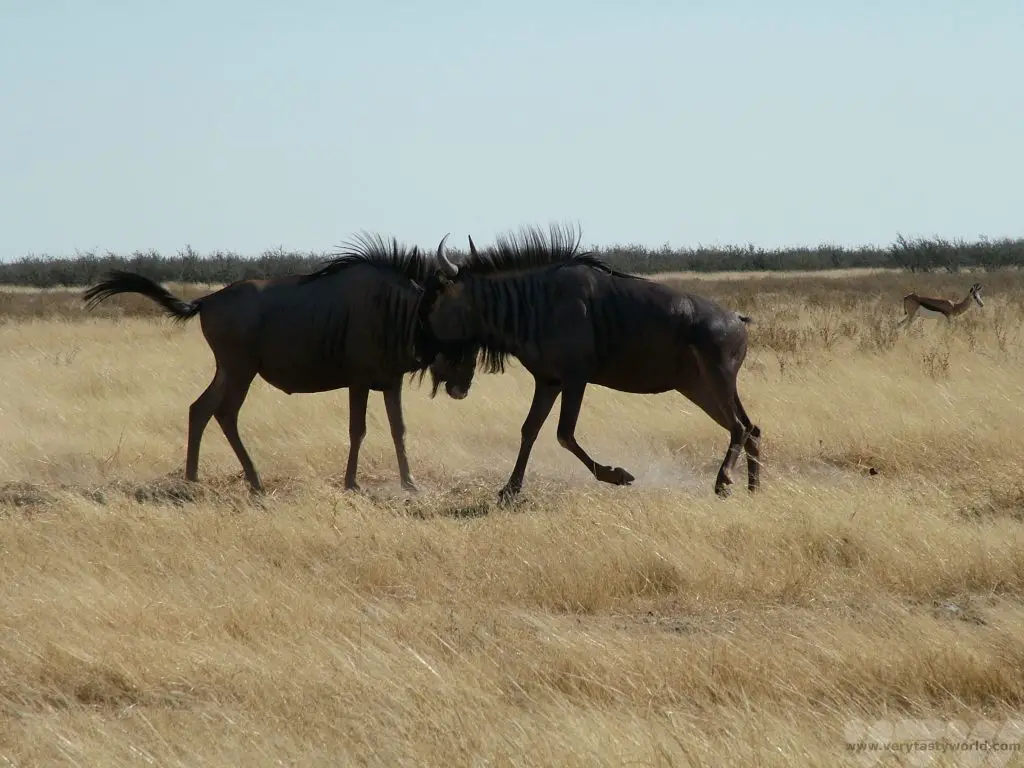
An encounter between a young lion, an elephant and an impala. (The lion is in the background.)
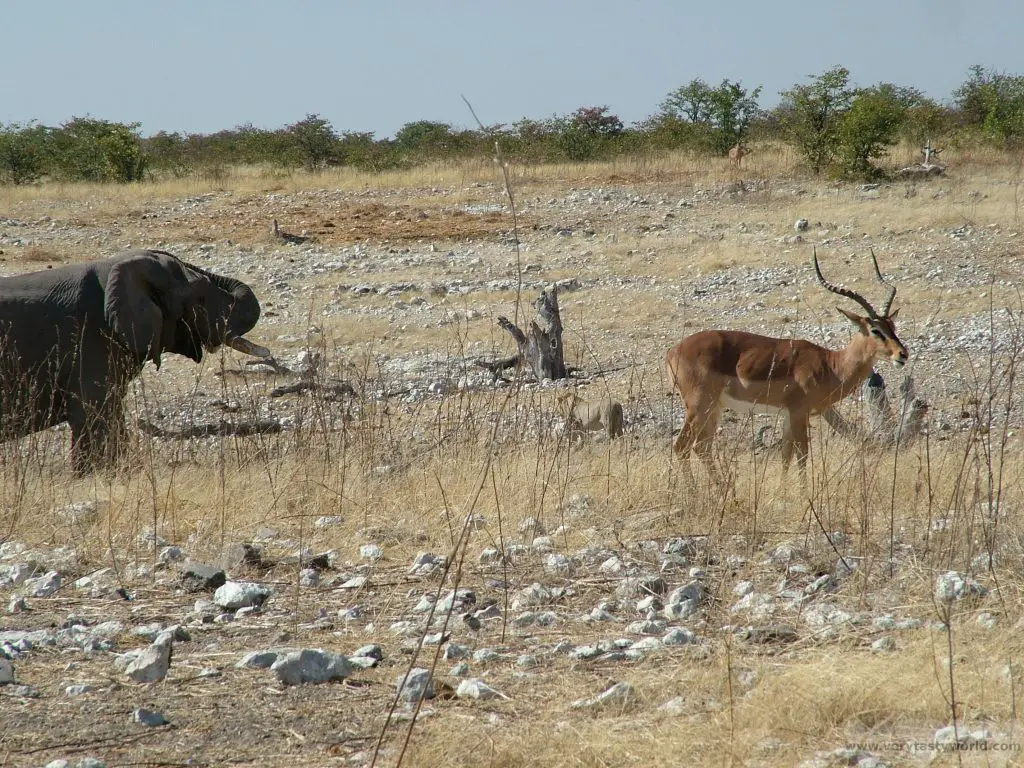
The impala was very aware of the lion’s presence…
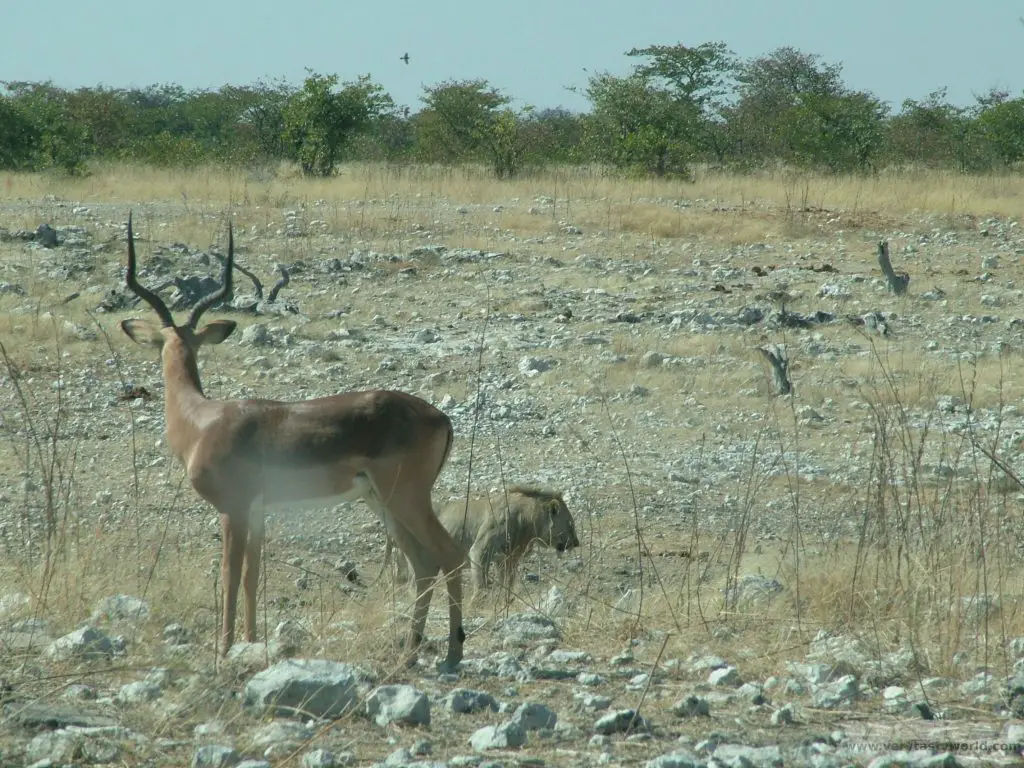
…but he made the best decision to saunter away.
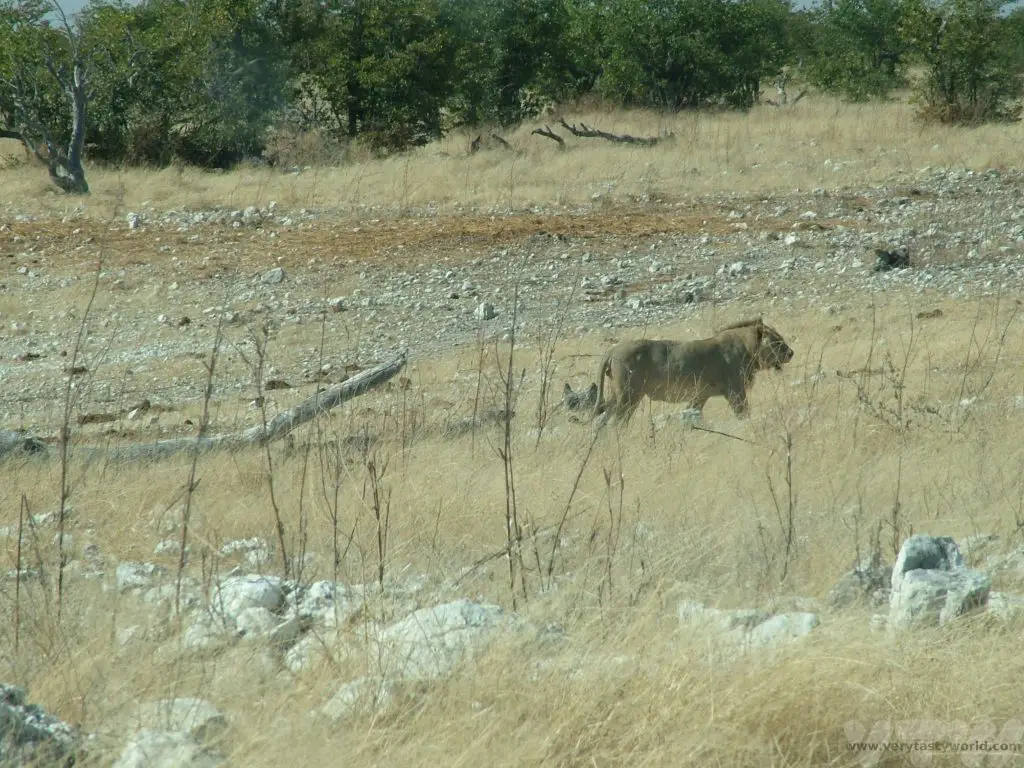
Although the large mammals are the obvious attraction, it’s also great to discover some of the smaller animals, birds and flora.

Moringa ovalifolia is a succulent tree which looks very otherworldly, almost like it has been planted upside down.
And the park is abundant with zebra…
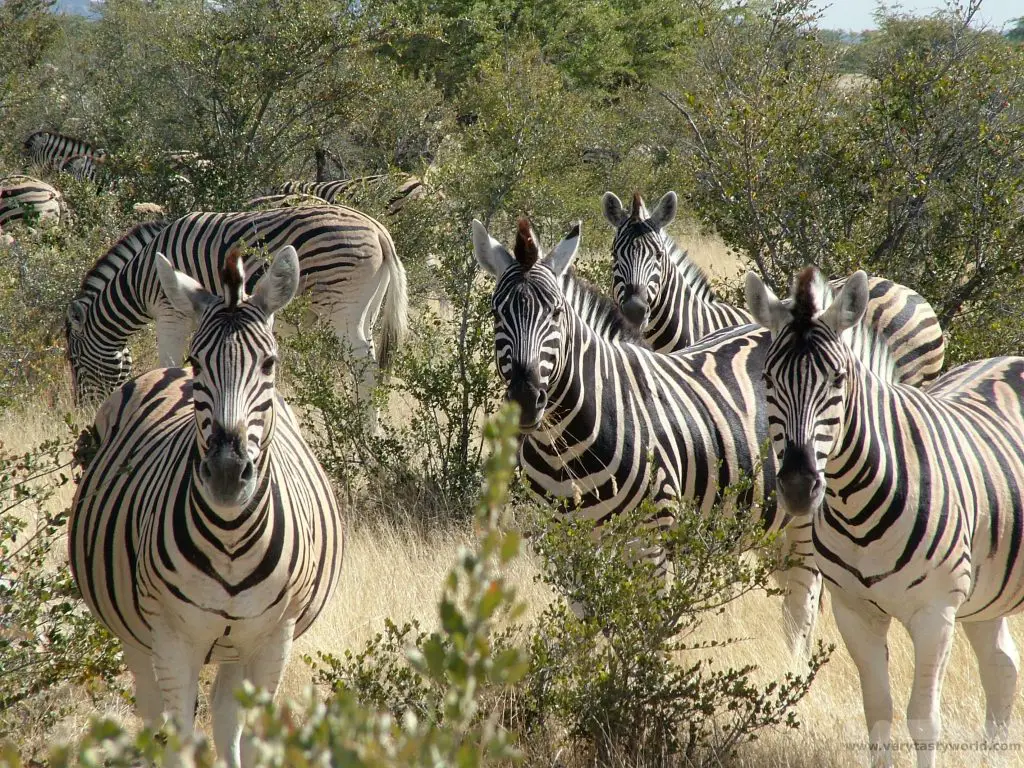
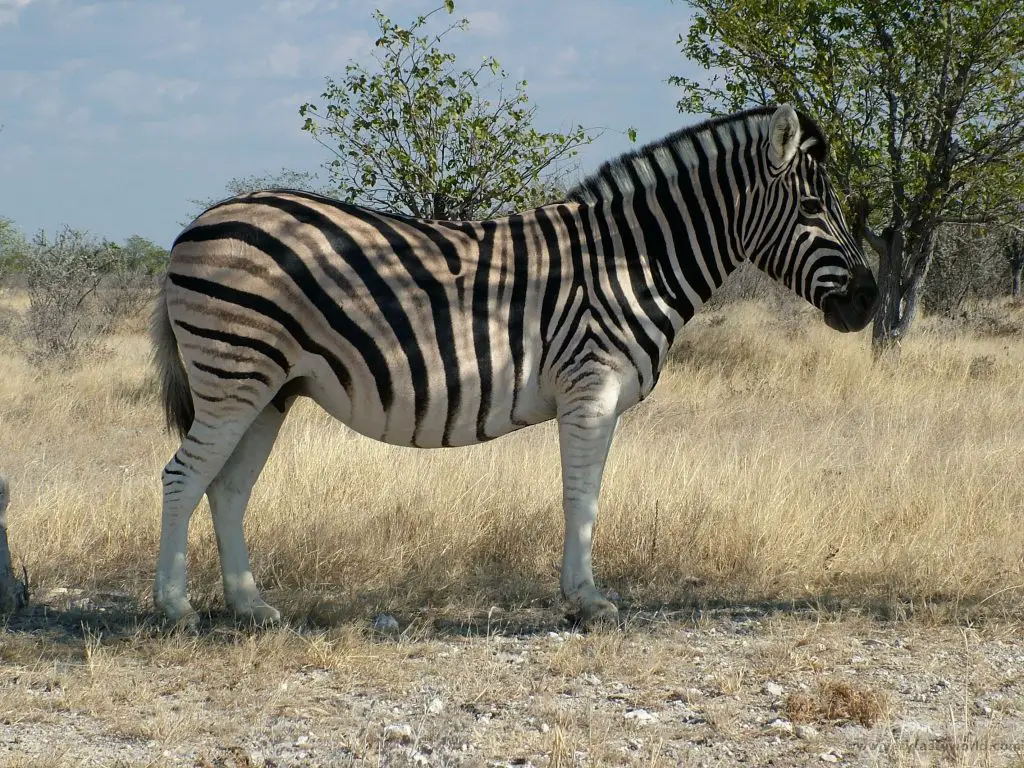
…impala

and gemsbok and springbok.


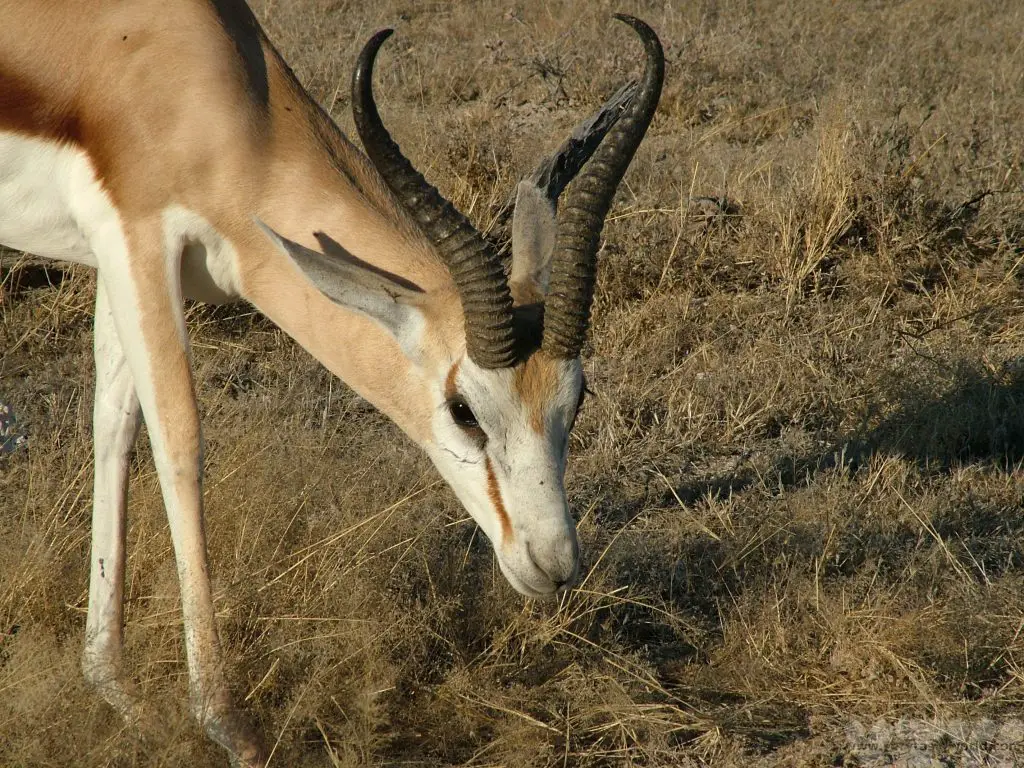
We also saw a ground squirrel, a marabou stork and a jackal.

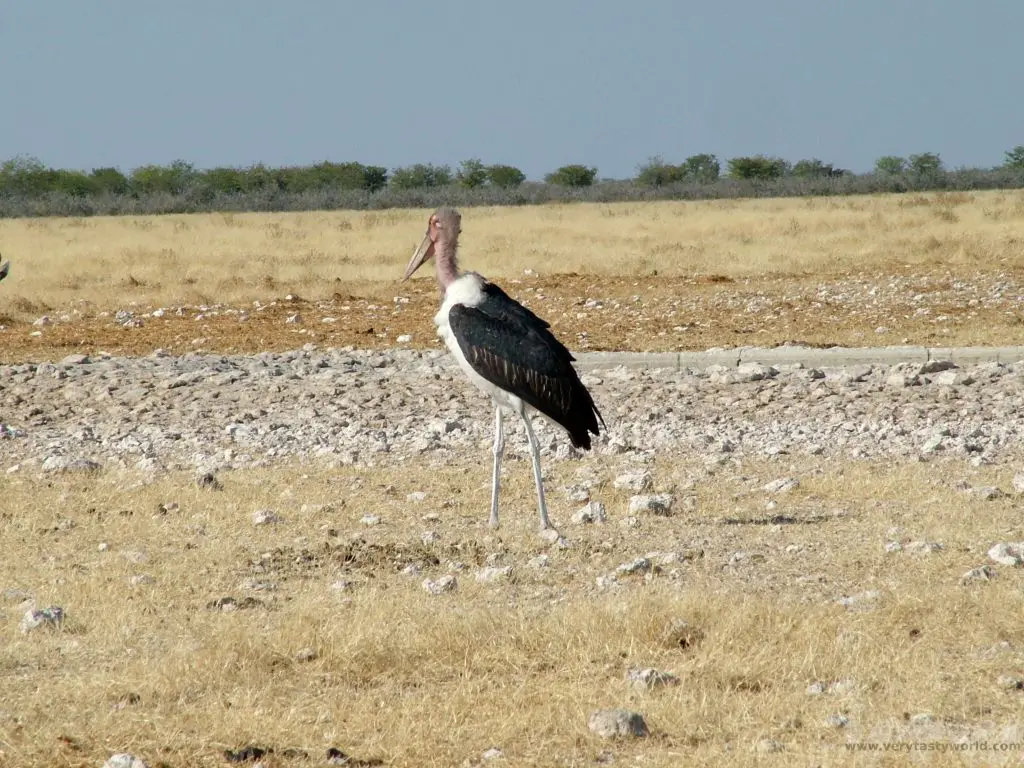

There are a number of safety rules at the Etosha national park in Namibia. Obviously stay in your vehicle and it’s advisable keep the windows closed when you’re out in the park. You are not allowed to drive at night, so make sure you leave enough time to get back to your rest camp. The speed limit is 60 km/h but it’s far better to drive at a leisurely pace – you have a greater chance of spotting wildlife if you’re not zooming around. Look for other vehicles that have stopped – there’s a good chance that someone has spotted some wildlife worth viewing.
Staying At Etosha
The area has a number of rest camps with all the facilities you might need. There are various levels of luxury in terms of accommodation. We were in self-catering accommodation in Okaukuejo Rest Camp.
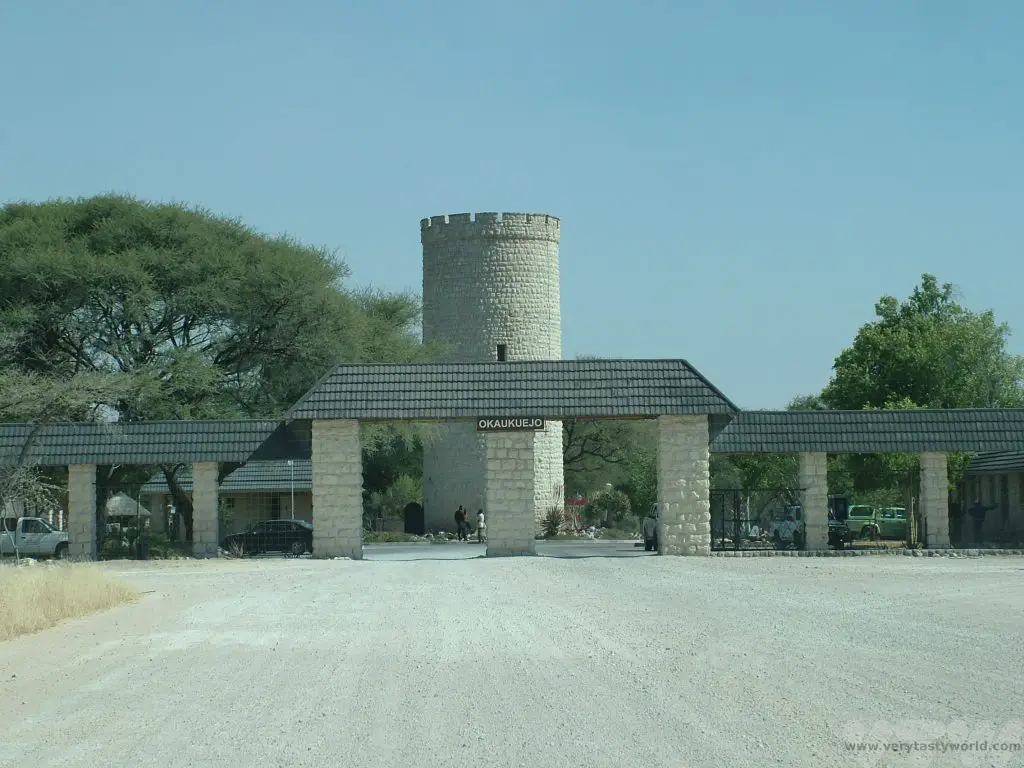
It has a restaurant as well as shops where you can pick up food and other items. And, of course, the all-important petrol station. Our cabin was clean and comfortable with a couple of bedrooms, a bathroom, kitchen area and it also had a braai, an African barbecue. You can buy meat and charcoal in the local shops and it’s rather nice to relax with a few beers and a barbecue as the sun goes down.
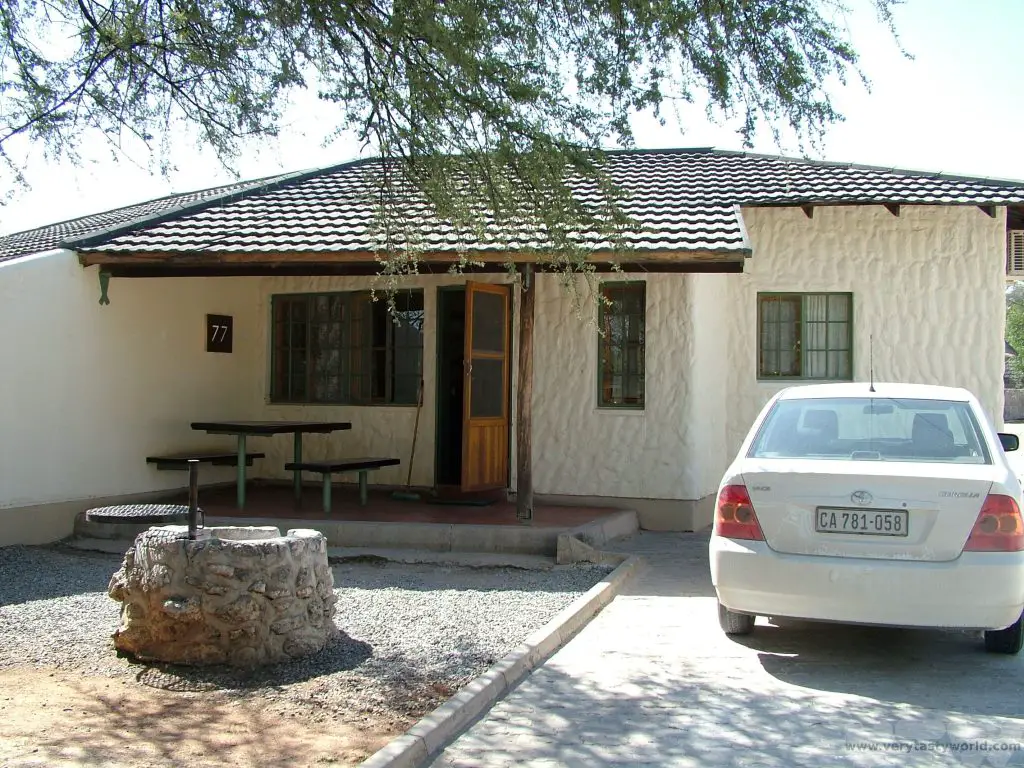
The safari experience doesn’t end in the evening. The rest camps are located very close to (fenced off) watering holes that are floodlit at night so it is possible to wander out to the fence and watch the wildlife as they come to drink in the cooler evening. It was fantastic to be able to see endangered rhino enjoying both a drink and a bathe.
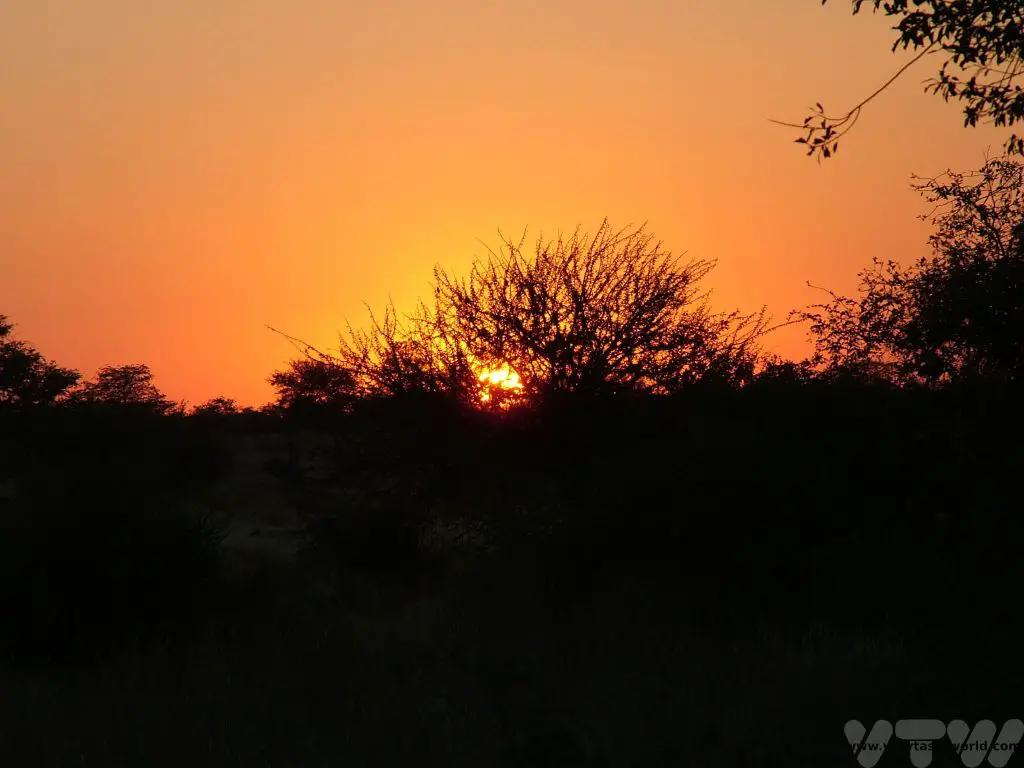
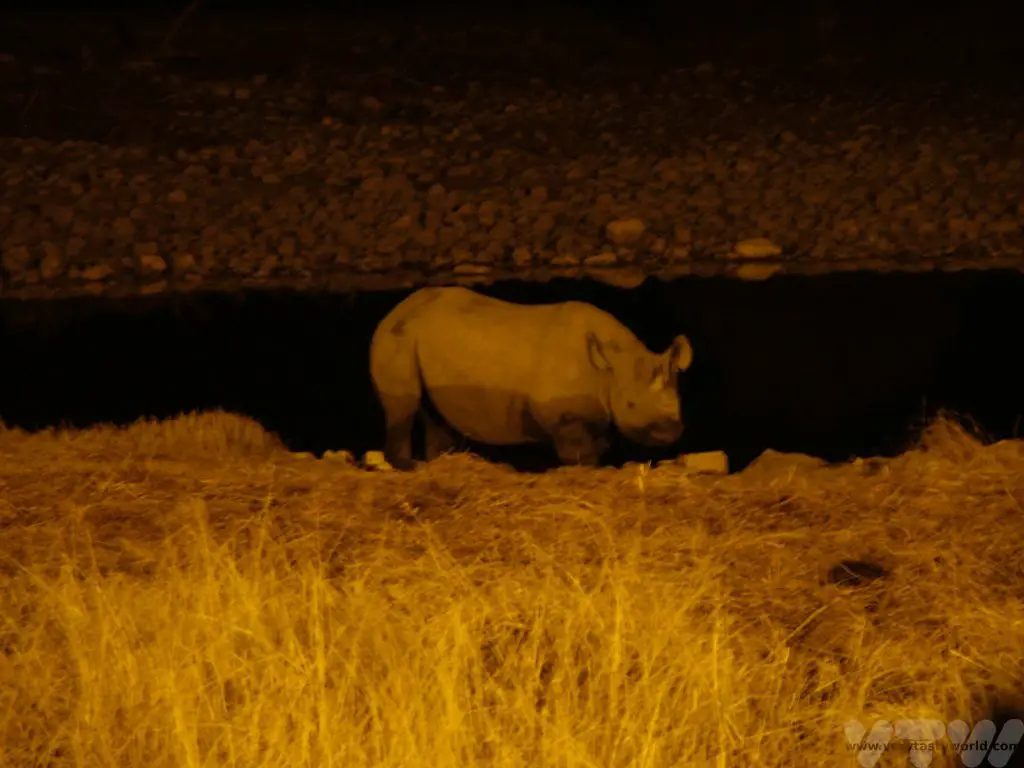
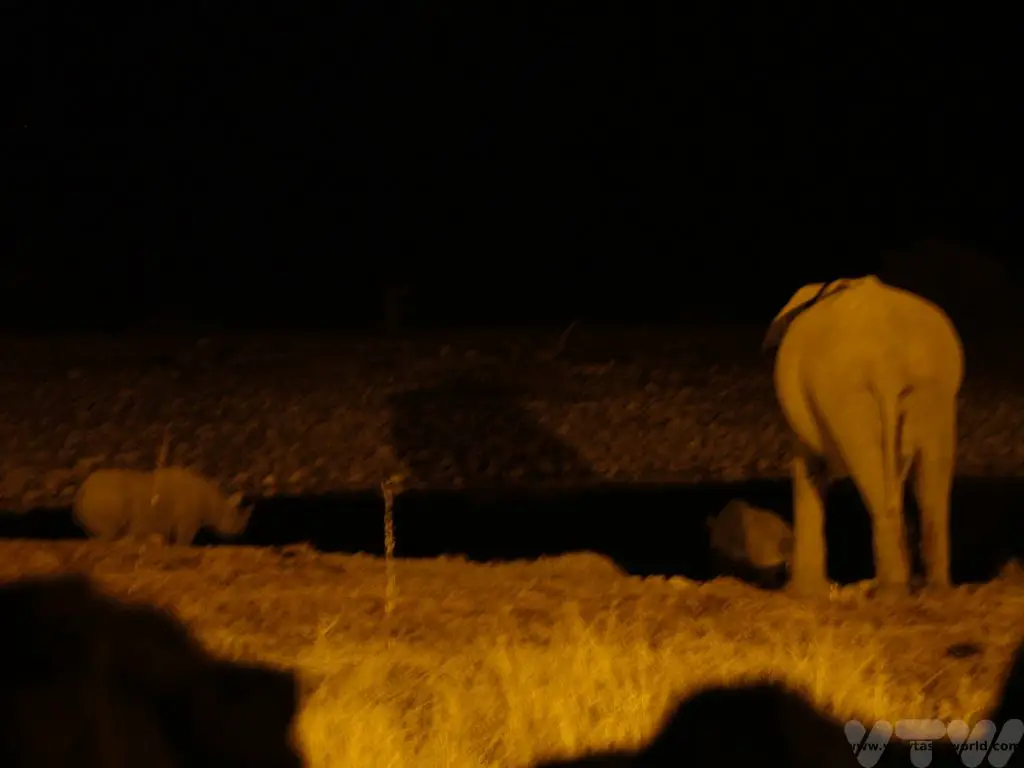
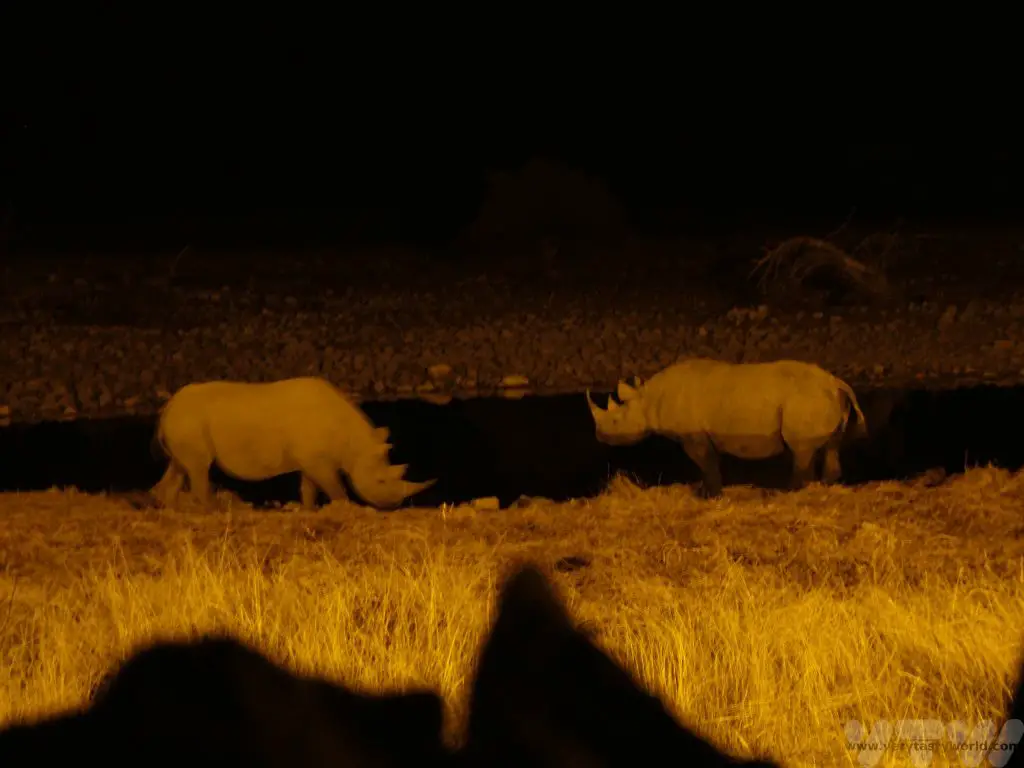
One thing that rounded off our experience happened on leaving the park just as we were checking out. Throughout our journey in Namibia, a number of people approached us, at park gates or local attractions, to ask whether we would be prepared to give their friends or colleagues a lift to the next town. We were happy to do this – it was a fantastic opportunity to chat with local people on a long drive.
At Etosha we were asked whether we could give one of the park rangers a ride to Otjiwarongo. We were delighted to be able to help. We had a brilliant chat with him and learned loads about the park. He was very interested to hear about the wildlife in our country. We don’t have anything nearly as exotic or large as elephants – we reckoned the largest animal in the UK is probably a red deer. And we had a laugh comparing Namibia’s enormous termite mounds with England’s teeny-tiny ant hills. The Etosha National Park, Namibia is an ideal place to take yourself on safari and view amazing wildlife.
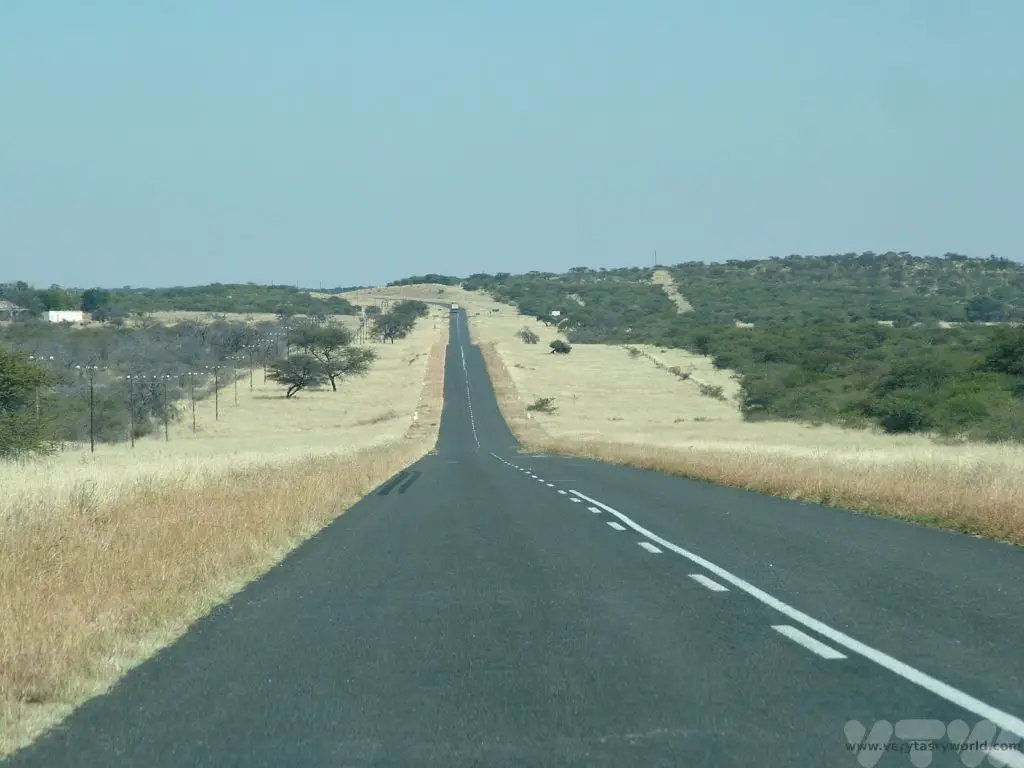
Related Posts You May Enjoy

Japanese Business Hotels – Cheap Accommodation
Developing a Business Plan:
Japan has a reputation for being an expensive country to visit. And while it is possible to spend a lot of money on wonderful accommodation (as it is pretty much anywhere), there are plenty of cheaper options, such as Japanese business hotels.

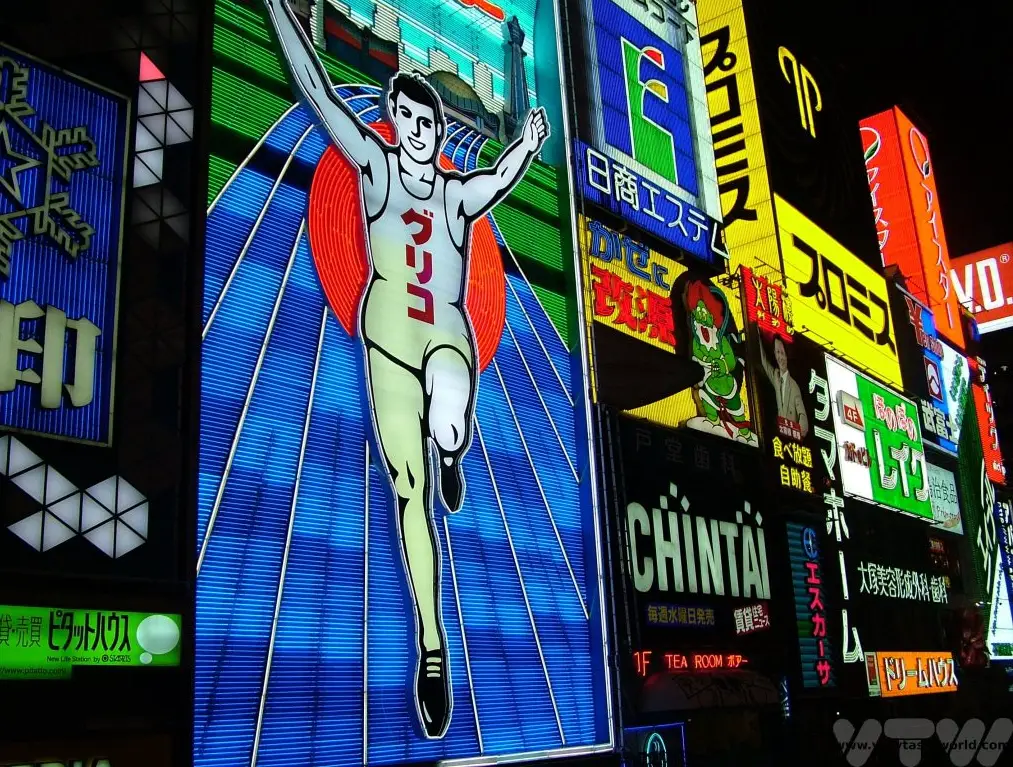
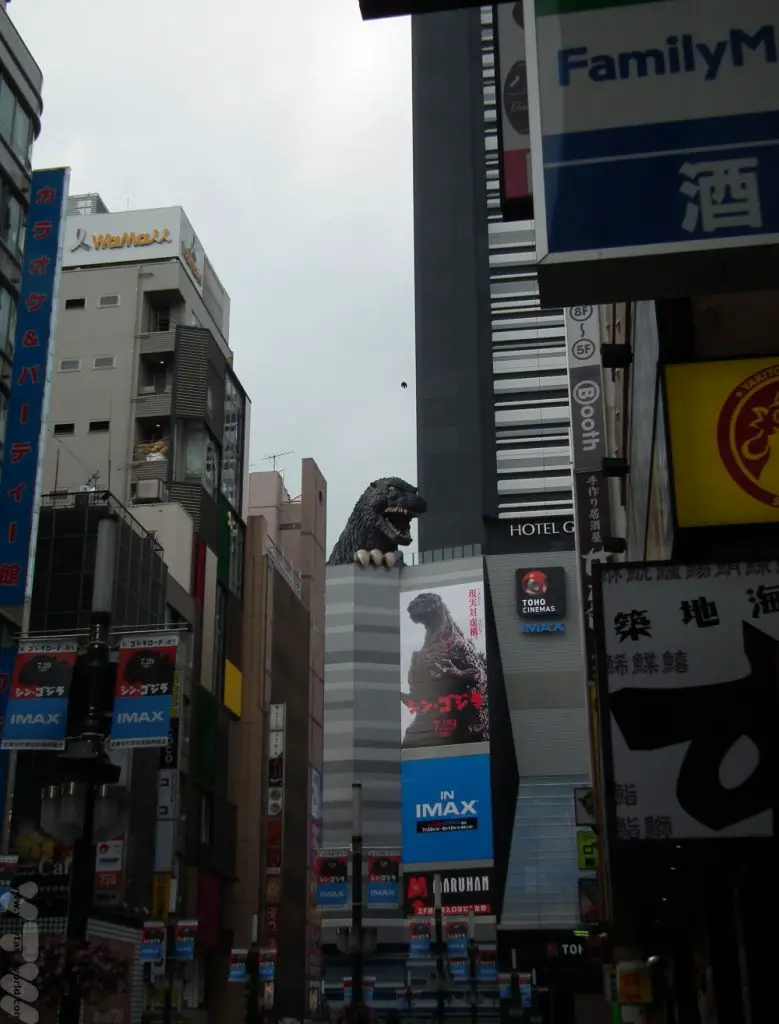
Business hotels are a great way of finding good value accommodation in Japan, especially in cities. Many are located close to railway stations, so you don’t have to drag your luggage too far if you are travelling by public transport (easily the best way to tour around Japan, especially if you have a Japan Rail Pass ). They are primarily designed for salarymen on business trips but are great for tourists too. There are loads of affordable hotels right in the centre of Tokyo; business hotels in other cities can be significantly cheaper.
You can reserve accommodation via the usual hotel booking sites but these days most hotels have an English language website where you can book direct. It’s worth noting that some hotels don’t release dates until quite close to the time of stay (between one and three months) so if you are super-organised and want to ensure you have your accommodation booked early the booking sites still offer a pretty good deal – and a guarantee that you can stay there. Indeed, some may offer free cancellation up to a few days before your stay so you could book up early and change your plans if you need to.
Japanese Business Hotels – What To Expect
Business hotel rooms are small. There’s no escaping that fact. Think of all the estate agent euphemisms about describing tiny spaces: “small but perfectly formed”, “compact and bijou”, “cosy”… We’ve stayed in some rooms where you could barely swing a kitten, let alone a cat.
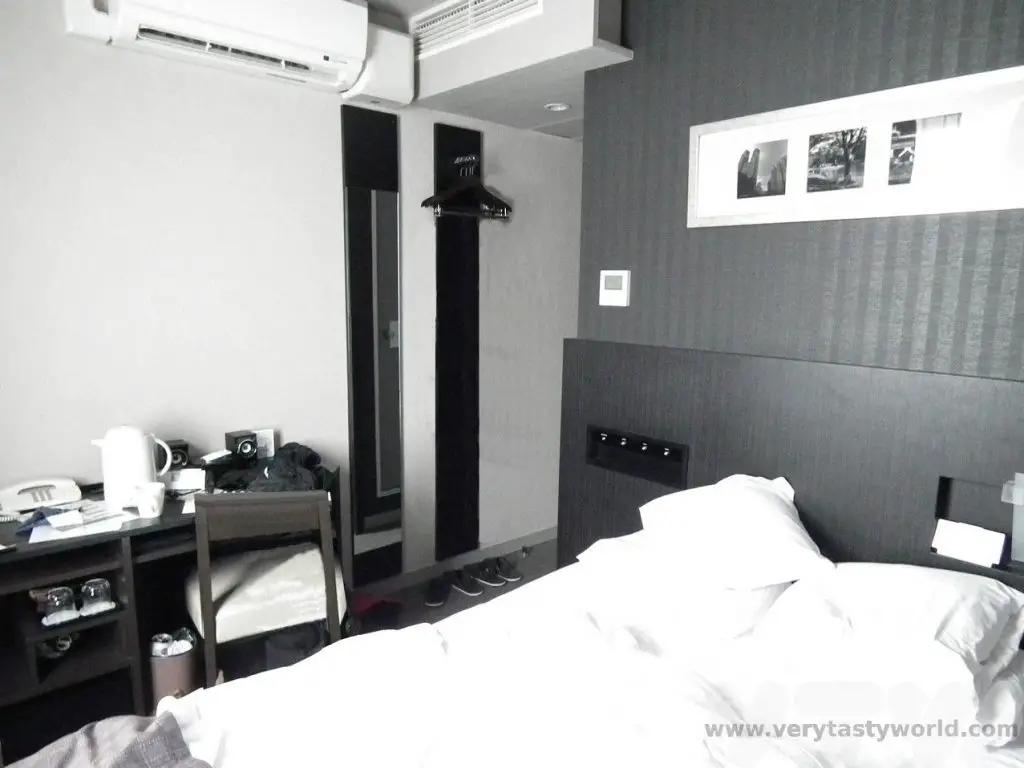
Sometimes the hotels themselves are tiny. You might walk into a compact lobby that has just a front desk and an elevator to the floors above. But, the thing is, you’re in Japan! Why would you want to spend time in your hotel when there are amazing vibrant neon cities or charming towns to explore?
If the room is small then the bathroom is minuscule. It’s a pre-fabricated plastic shell. But everything you need is in there. Bath/shower, basin and… the toilet.
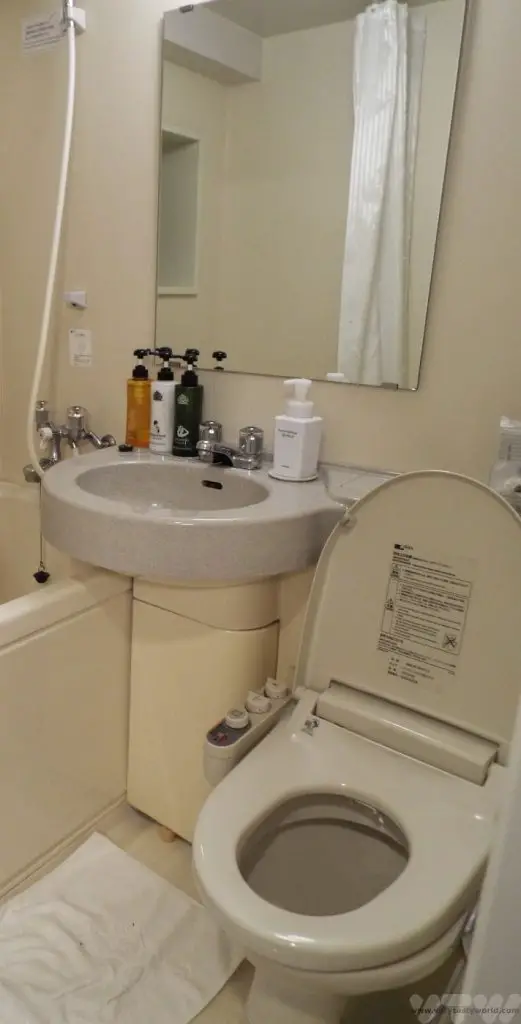
Japanese toilets are an experience in themselves. When you discover that your toilet has a control panel you know that your bathroom experience is going to be… interesting. Don’t worry, it’s fine, you can get away with answering the call of nature then simply pressing a button (look out for the kanji 大 (big) or 小 (small) to get the required level of flush) but if you’re feeling more adventurous bidet options are very common, so be prepared for a jet of warm water if you select the right option. Of course, the instructions may be in Japanese, in which case you might be taking pot luck. This kanji means stop: 止. Some toilets are sophisticated enough to have seat warmers or even make a sound of tinkling water to disguise those undesirable body sounds emitted while using the loo.
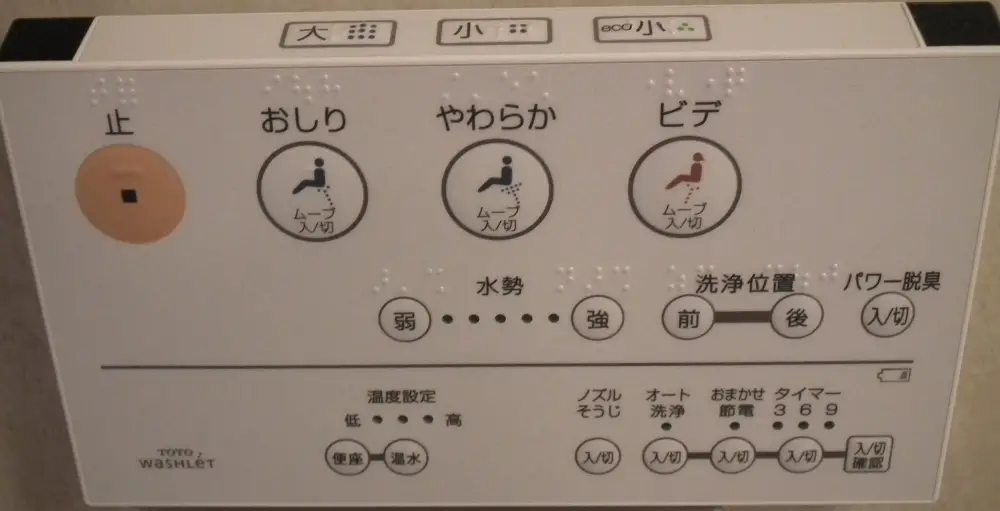
The bathroom will also contain a basket of useful toiletries which are free for your use. These include a toothbrush/toothpaste set, razor and shaving foam, a comb and other little items. So you really don’t have to worry if you forgot to pack your toothbrush!
Indeed Japanese business hotels manage to pack a huge amount of facilities into such a compact space. And they genuinely supply everything you need.
Most rooms will have a fridge. They are small but great for storing a beer or sake (or two) and, also, you might want to pick up a breakfast bento at the local konbini convenience store.
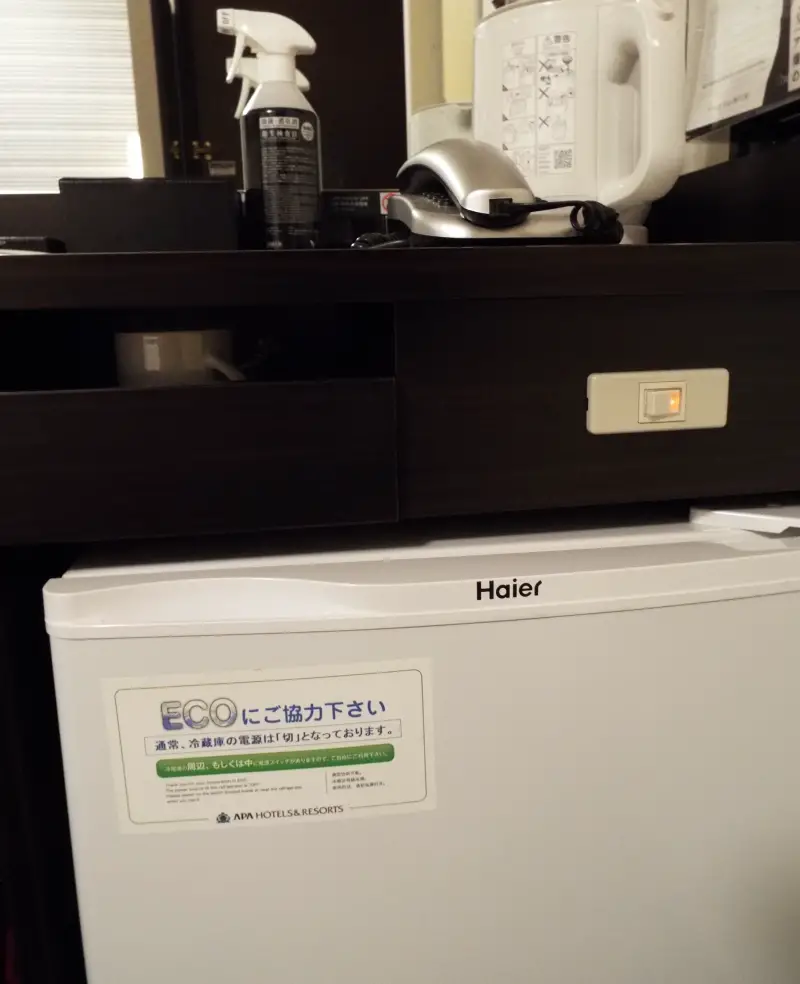
Most business hotels will supply disposable slippers (using outdoor shoes inside is usually a no-no in Japan) and sometimes there will be a yukata (light cotton kimono) for relaxing in.
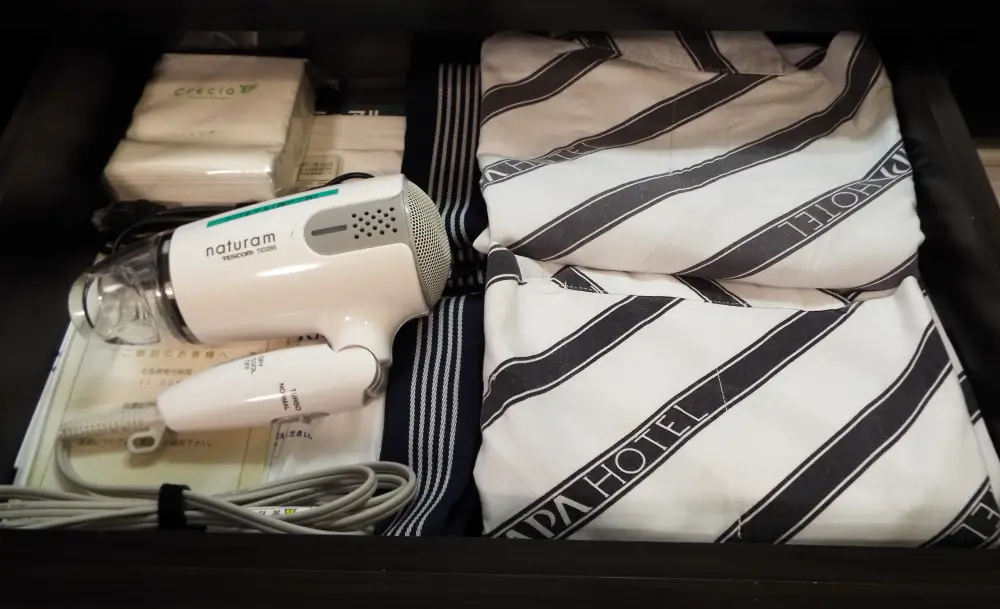
There’s always a TV as well as a kettle and cups along with sachets of tea so that you can enjoy a hot beverage, if you can work out how to use the kettle (fill with water and press the buttons bearing in mind that one will probably dispense very hot water, if indeed you’ve managed to heat it).
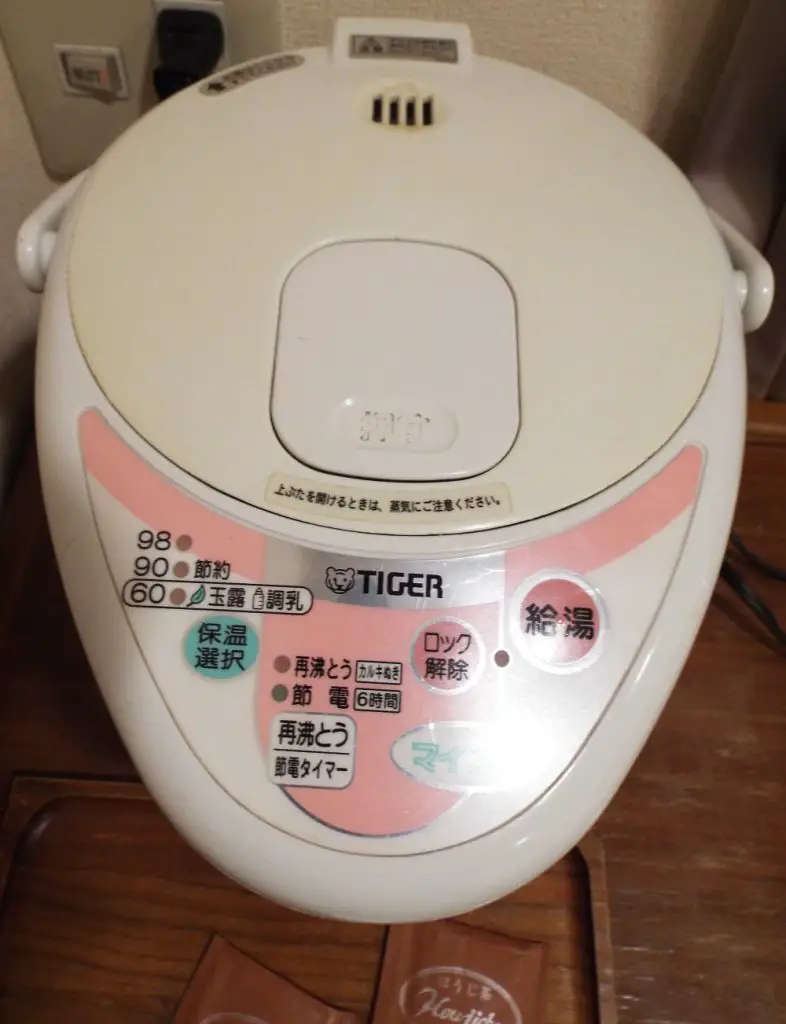
One problem we have found is that it can be tricky to store your luggage. Some beds have enough space to push your luggage underneath and this works particularly well if you have squishable soft bags. Big, hard cases are not ideal, but there is a solution if you don’t need to have all your luggage with you all the time. You can forward luggage to another hotel via Takkyubin (described here) which is an amazingly efficient and great value service. We often found that keeping one ‘big bag’ (we always ensure that we have a mix of our clothes/undies for each of us in both bags rather than packing a separate bag per person – just in case luggage gets lost on the flight out) and forwarding the other onto another hotel means that you only need to worry about storing one bag in the room.
It’s not common for Japanese business hotels to offer a substantial breakfast and many won’t offer food at all. Some may have a small café area where you can pick up a tea or coffee, others may offer a basic breakfast – such as rice balls (onigiri) and a cup of green tea. There will almost certainly be vending machines so that you can purchase food (snacks or cup noodles) and drinks (soft drinks, canned coffee or beer). And you usually won’t be far from a convenience store (konbini) where you can buy pretty much anything you might need! We often pick up a bento (boxed meal) for breakfast – at a few hundred yen they are cheap and filling and can be stored in the room’s fridge. There’s usually a great variety to choose from.
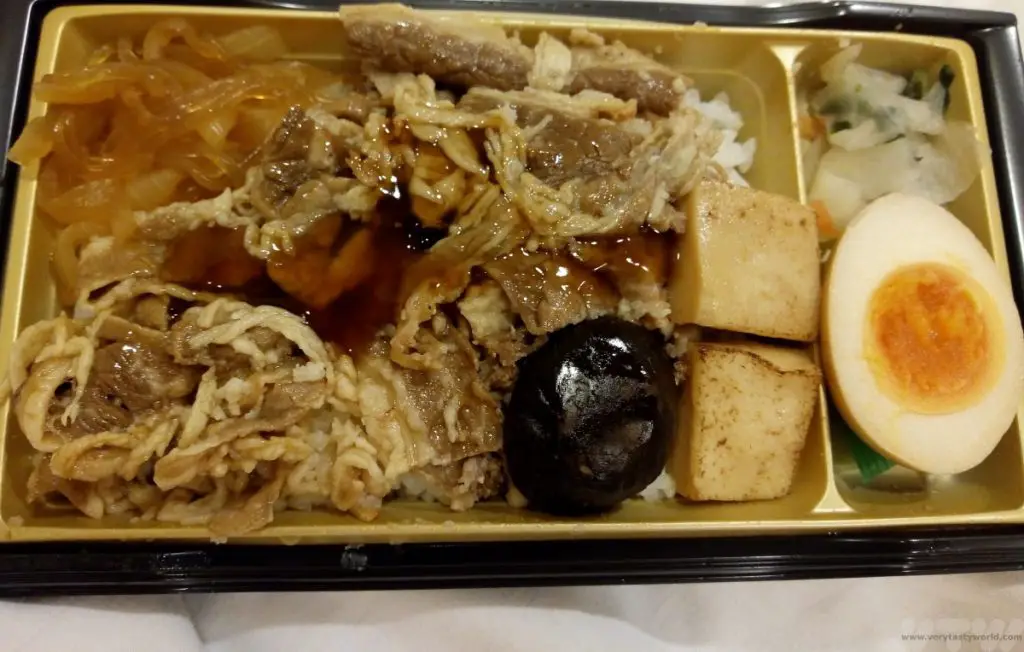
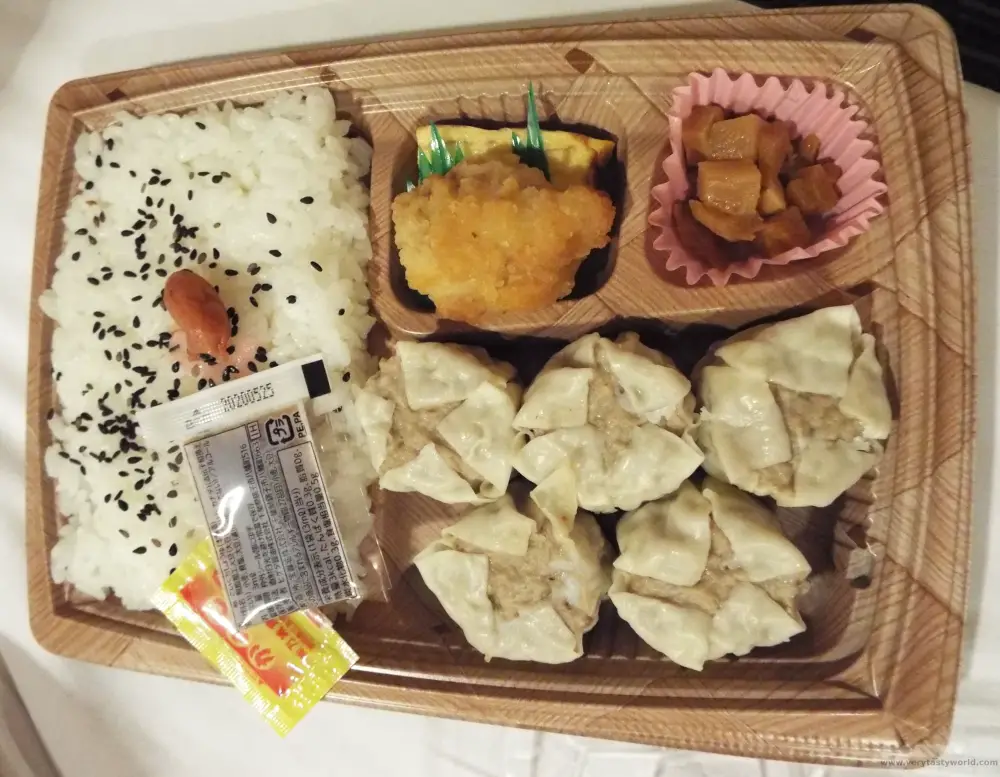
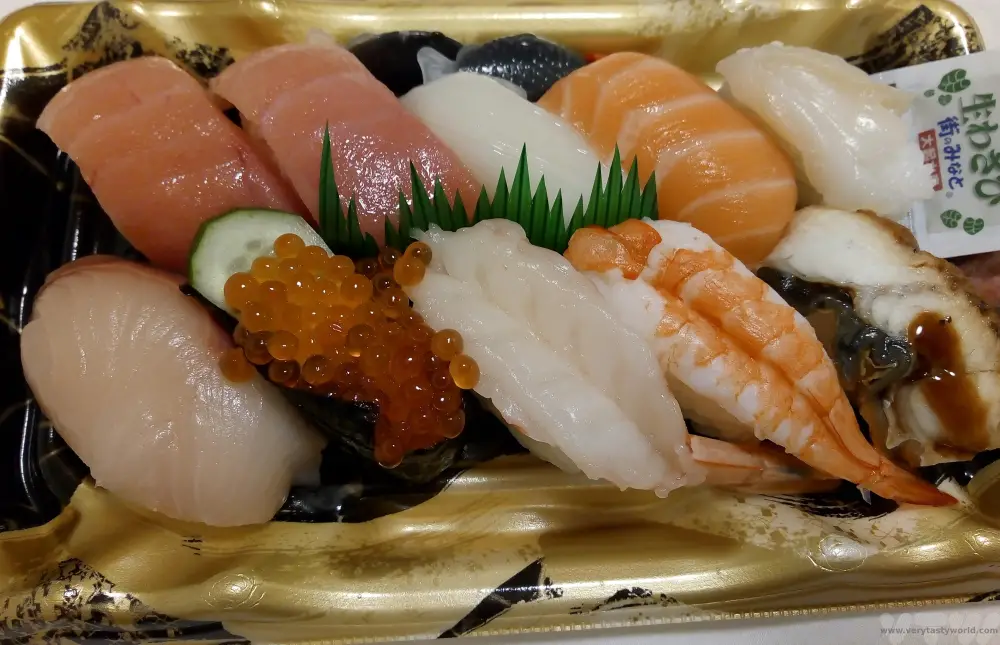
Japanese business hotels are undoubtedly great value but it is also nice to experience other types of accommodation. Ryokan are traditional inns which often offer a suite of rooms with a tatami (reed) mat floor, futon and amazing breakfasts and dinners – it’s a real experience although, of course, they are usually more expensive.
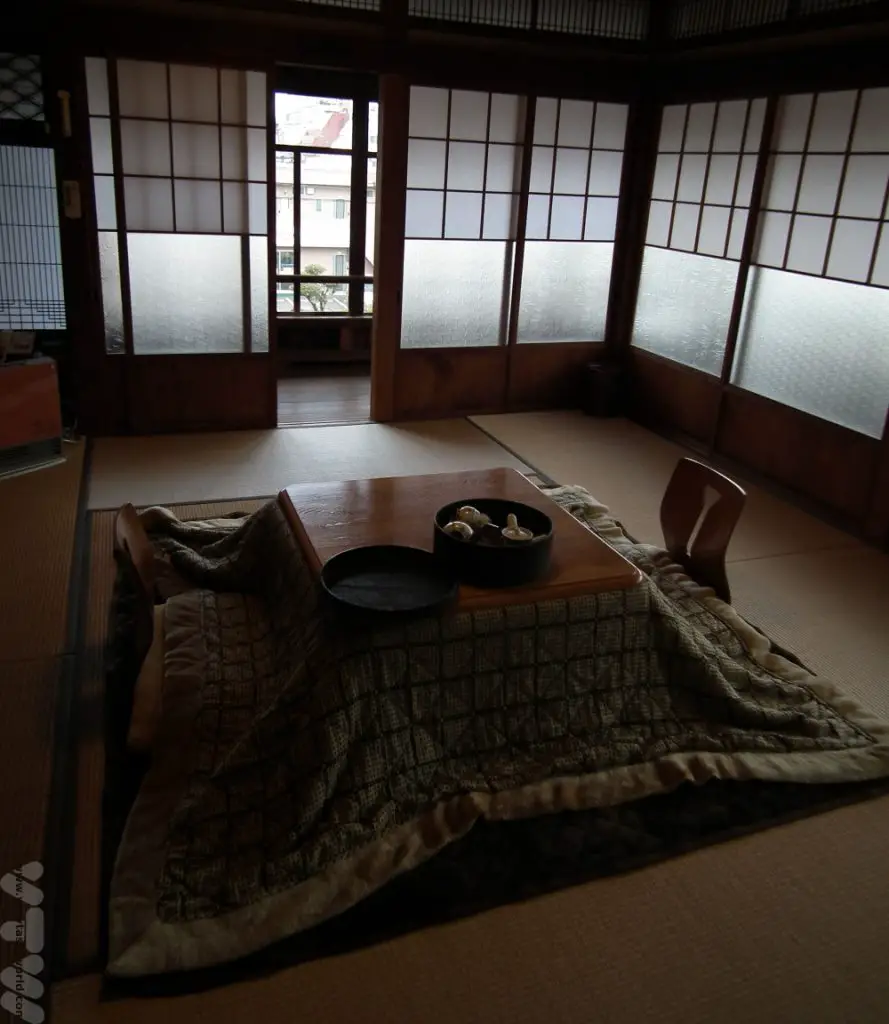
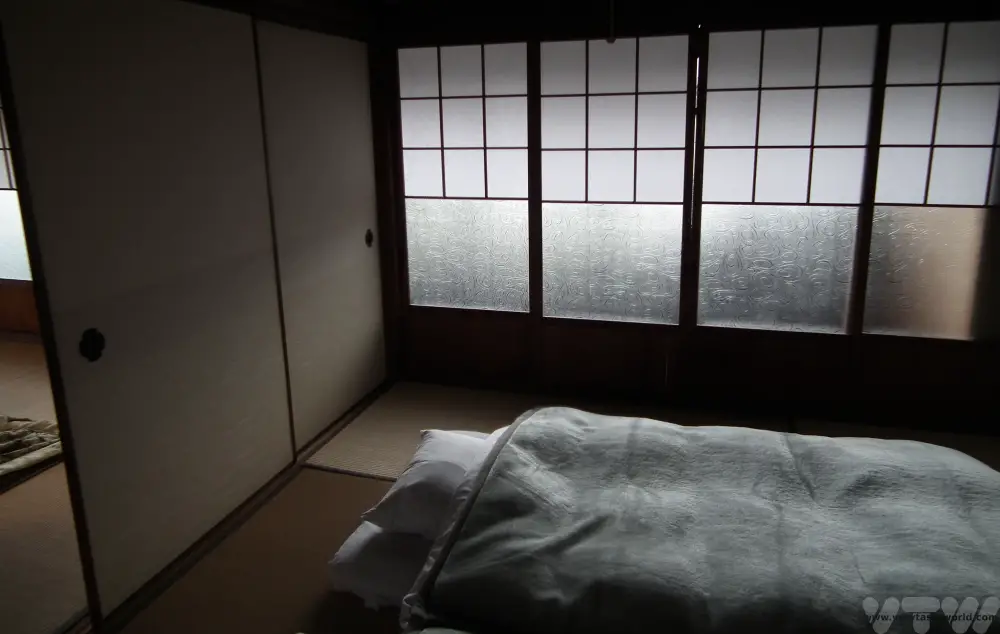
Minshuku are Japanese B&Bs – usually family run, they also offer Japanese style accommodation. They are fun, friendly and often cheaper than ryokan. It is also possible to visit family homes in some areas. AirBnB has been increasingly popular as a choice of accommodation in Japan too. There are also cheap dorm rooms for backpackers and the famous capsule hotels, whereby you can sleep inside a tube for the night, all mod-cons provided, albeit within an incredibly compact space. It’s worth noting that the budget accommodation options are often sex-segregated. When we travel around Japan we tend to choose business hotels for the majority of our stays, in order to keep the budget low, and then treat ourselves to a few nights’ splurge at a ryokan.
Related Posts You May Enjoy

- Recipe: Simmered Shiitake Mushrooms

- How to Use Public Transport in Japan

- RECIPE Oyakodon Donburi

- Planning a Trip to Japan

- The Makanai: Cooking for the Maiko House

- Setsubun Food – Bean Throwing Day

- The Gassho Farmhouses of Rural Japan

- Recipe: Japanese Simmered Pork Belly – Buta no Kakuni

- RECIPE: How to Make Umeboshi

1 Day Gorilla Trekking Uganda
Although it has its fair share of excellent safari locations where you can see the so-called Big Five game animals, Uganda is also well known as a top destination to see primates. We had the opportunity to track chimpanzees in Kibale and mountain gorillas in Bwindi Impenetrable in the south-west region of the country. 1 day gorilla trekking in Uganda is one of the country’s top attractions.
Gorillas in the Mist… And Pouring Rain
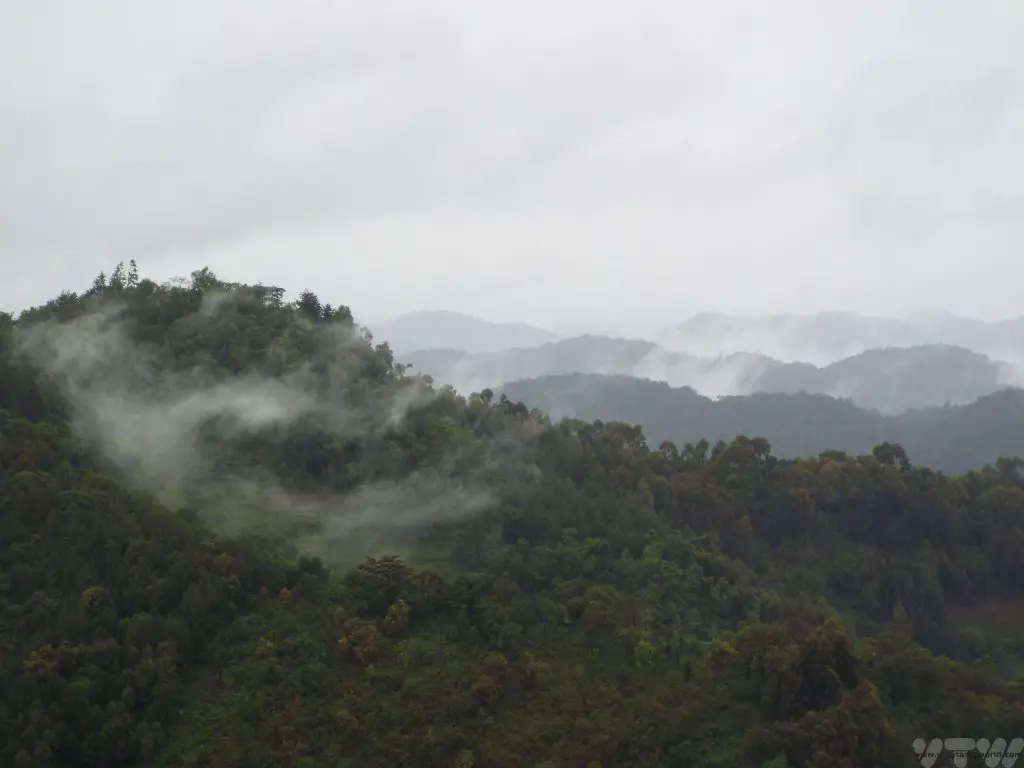
The mountain gorillas are critically endangered – there are only about 900 left in the wild and they can be found in Uganda, Rwanda and the Democratic Republic of Congo. Uganda and Rwanda offer a limited number of gorilla tracking permits each day. We chose to travel in the low season when it is more likely to be rainy, because the cost of the permits is reduced significantly during certain months of the year. It’s worth booking the permits in advance. They are really expensive, even out of season, but the money goes directly towards the conservation of these marvellous creatures. And it is really a once in a lifetime experience.
The Ugandan conservation programme has ensured that half of the gorilla population has been habituated – wild, but comfortable in the presence of humans – and the other half remain completely wild. This is a good strategy. The conservationists’ greatest fear is that the gorillas, which share about 98% DNA with humans, could catch a human disease for which they have no immunity. You are requested not to track the gorillas if you have a cold. Following the start of the pandemic, the area was closed off for a while, Covid presenting risks both from the disease but also an increase in illegal poaching activities, but it has now opened up with extra precautions in place that trekkers need to adhere to in order to protect these magnificent creatures.
Bwindi Gorilla Trekking – The Briefing
The trip starts with a briefing at headquarters. Then you are allocated to a gorilla group – a maximum of eight people join each trek. It can take any time between 30 minutes and 6 hours to reach the gorillas – some parties have returned after nightfall in the past. Additionally, we were tracking at altitude, around 2300m above sea level, which enough to knock the breath out of you going up some of the steeper slopes! We were assigned the Bitakura group in the Ruhija area. One member of our party had mobility issues and was carried on a sedan by a team of four porters (who rotated shift with an additional four porters at regular intervals) who did an amazing job and ensured that she had full access to the gorillas. Our guide called it “the helicopter”. This system can be used if any trekker becomes unwell during their hike.
You wouldn’t have known it was the rainy season for most of our trip – virtually every day was bright and sunny and it had rained for a maximum of 15 minutes on just a couple of the days throughout our trip. Of course, on the day we really wanted it to stay dry the rain absolutely chucked it down. That’s why we packed good walking boots and raincoats.
We were advised to borrow walking sticks and also to employ porters to accompany us on the trek. This was a really good idea. Not only do they carry your backpack (you are advised to take three litres of water and a box lunch because you just don’t know how long it will take to reach the gorillas and you will need the energy) they will also hold your hand to steady you if things get slippery and push/pull you over obstacles if necessary. Importantly, they are local people who can earn a decent living from tourists, so hiring a porter also contributes directly to the community. The porters are available at the starting location and will be allocated if you ask for one.
1 Day Gorilla Trekking Uganda – The Trek
The Uganda Wildlife Authority (UWA – apparently pronounced Oo-er!) have an excellent system in place which ensures that you have practically 100% chance of seeing the gorillas: each morning two trackers head out into the forest to find the troop based on their location the previous day. They then radio to the guide, who will lead the tourists via the best route to see the gorillas. The trackers do an amazing job – they spend all day with the gorillas, even after the tourists have left, so that they know where to trace them to on the following day. We were advised that they would appreciate a personal tip as most tourists don’t recognise the brilliant job they do and we were delighted to do this.
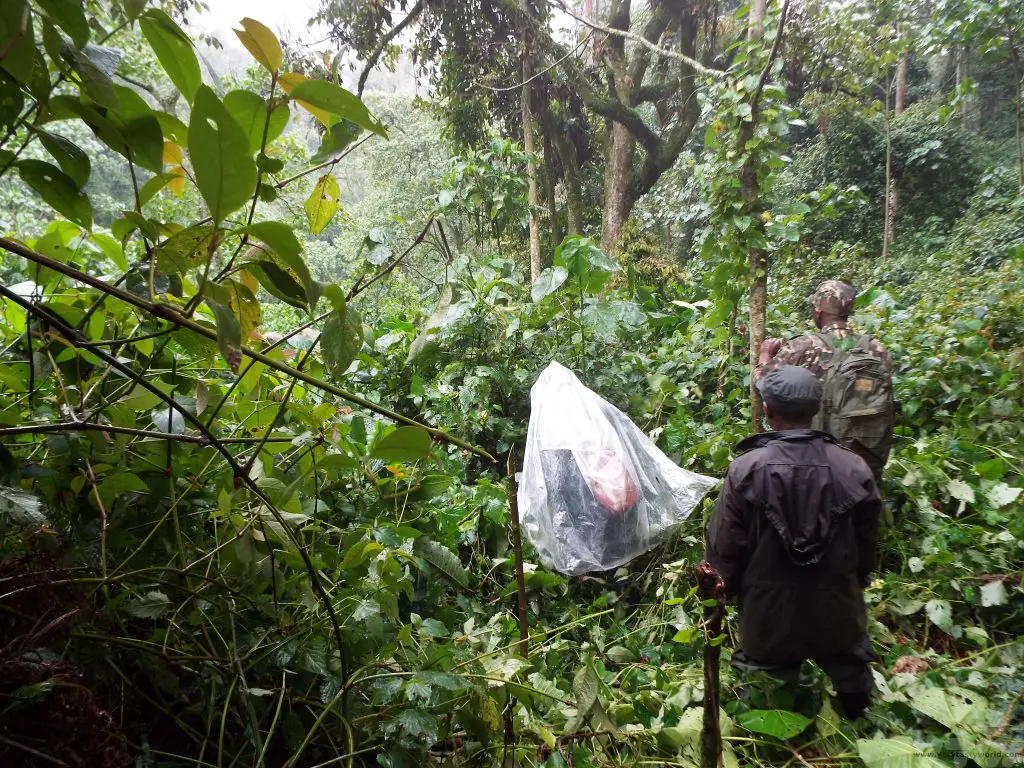
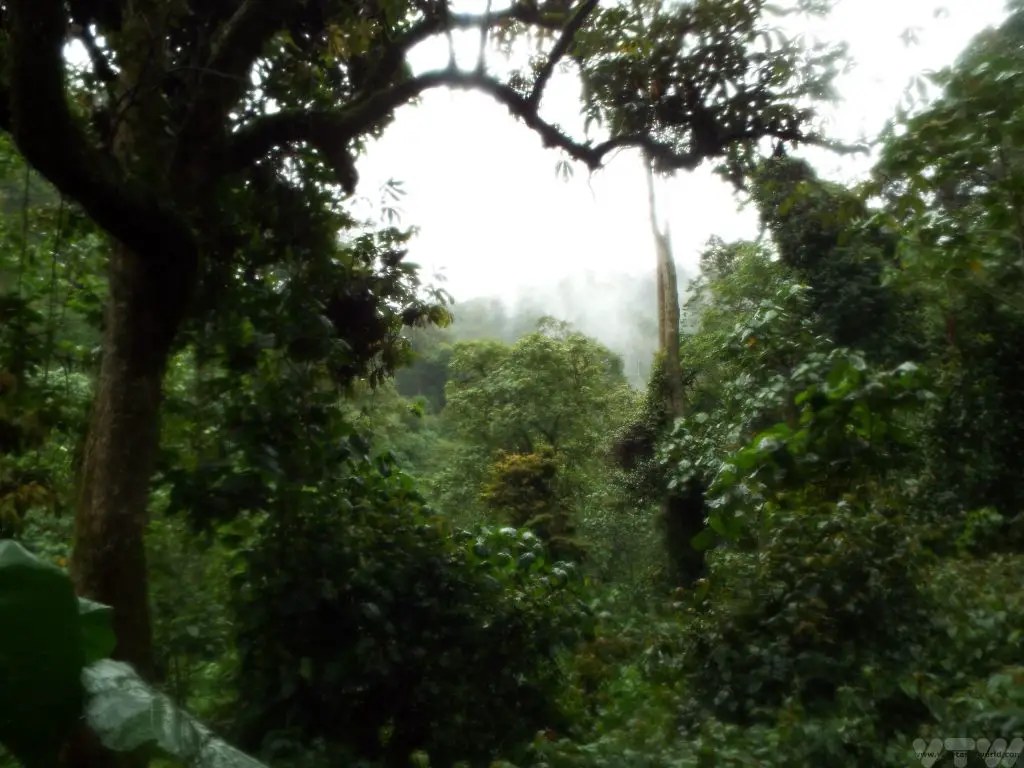
There’s a reason the region is named “Bwindi Impenetrable”. We trekked along a main path – up and down some very steep, muddy and slippery slopes, for a couple of hours. Then our guide indicated that he was close to the trackers. The rangers/trackers cut through the forest with machetes and we followed a newly made path, through dense forest to where the gorillas were located.
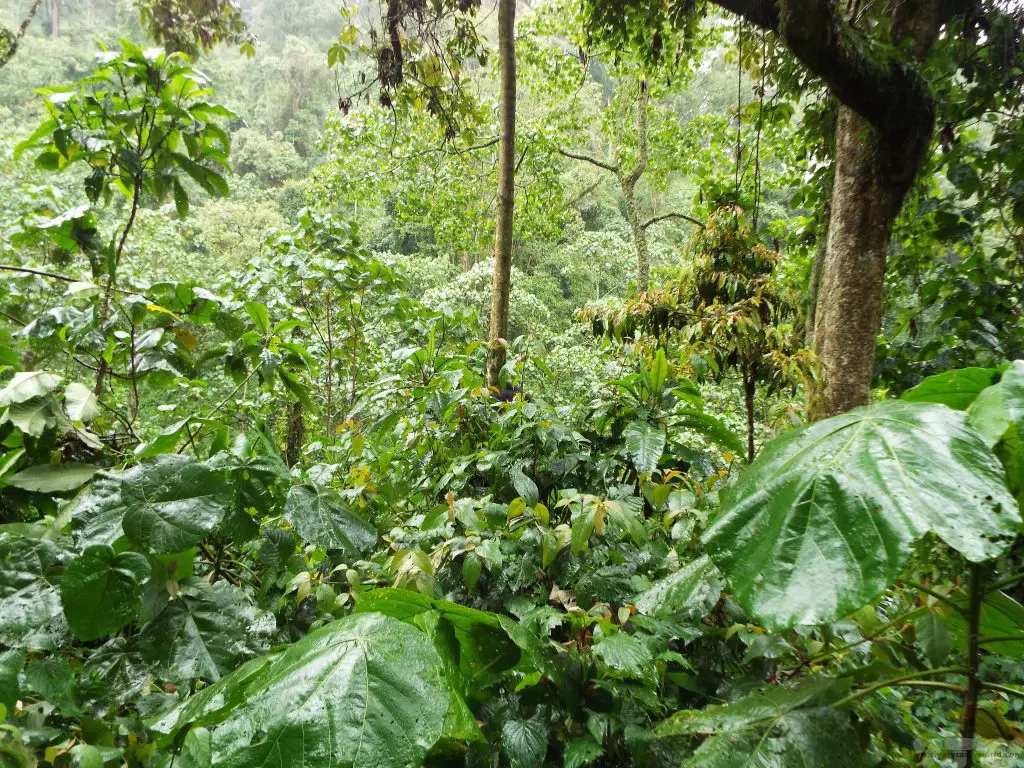
We were soaked through to the skin, muddied, shattered and utterly bedraggled. But nothing beats the sight of wild gorillas just a few metres away from you.
We saw one of the group’s silverbacks…
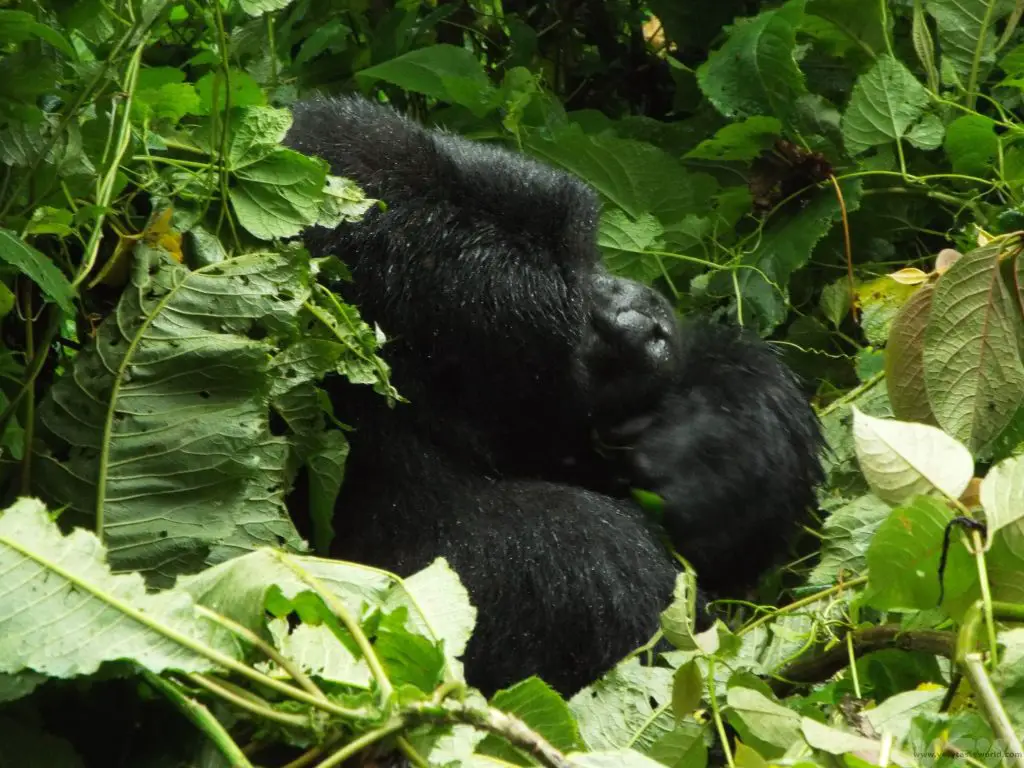
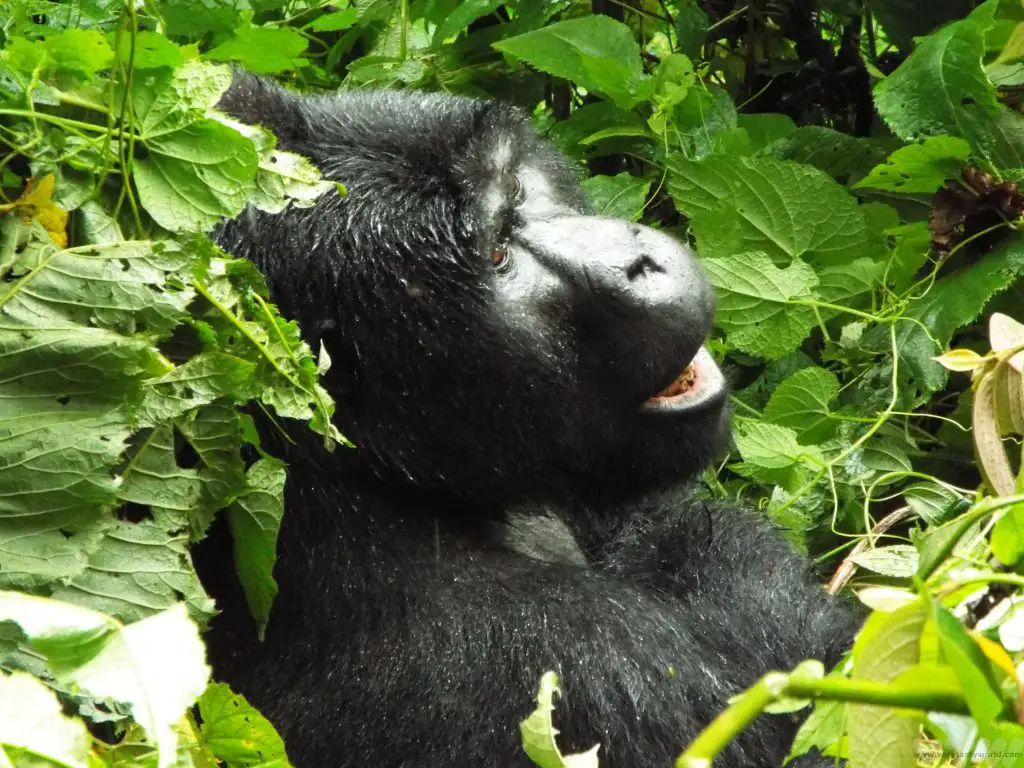
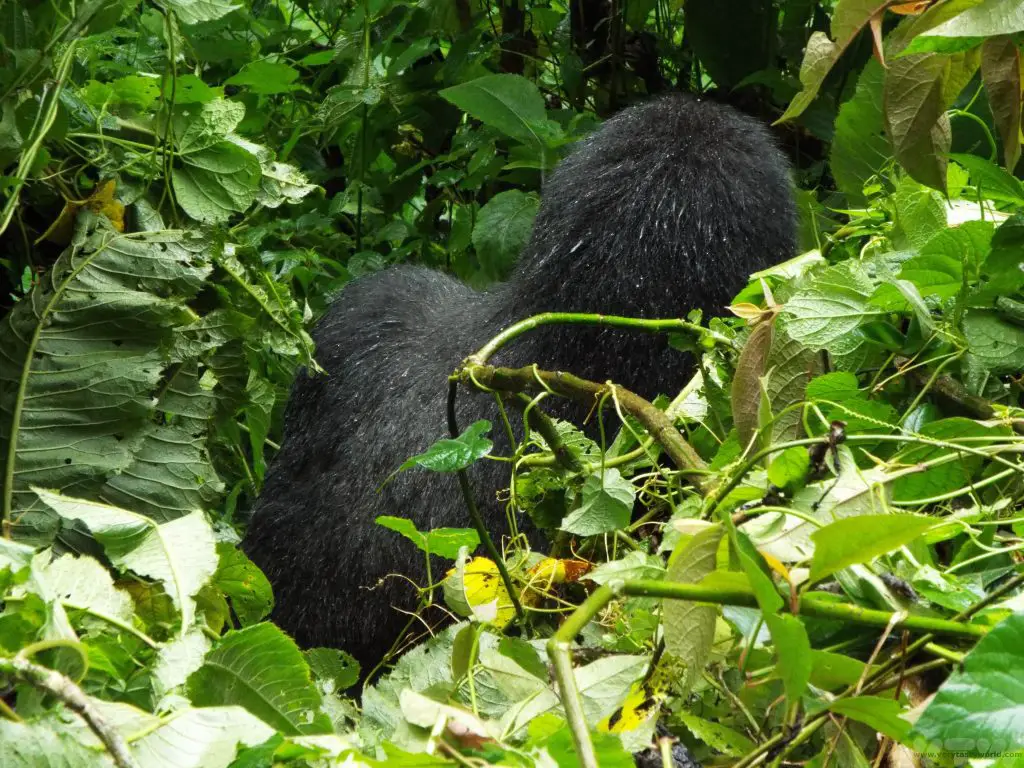
…some younger males…
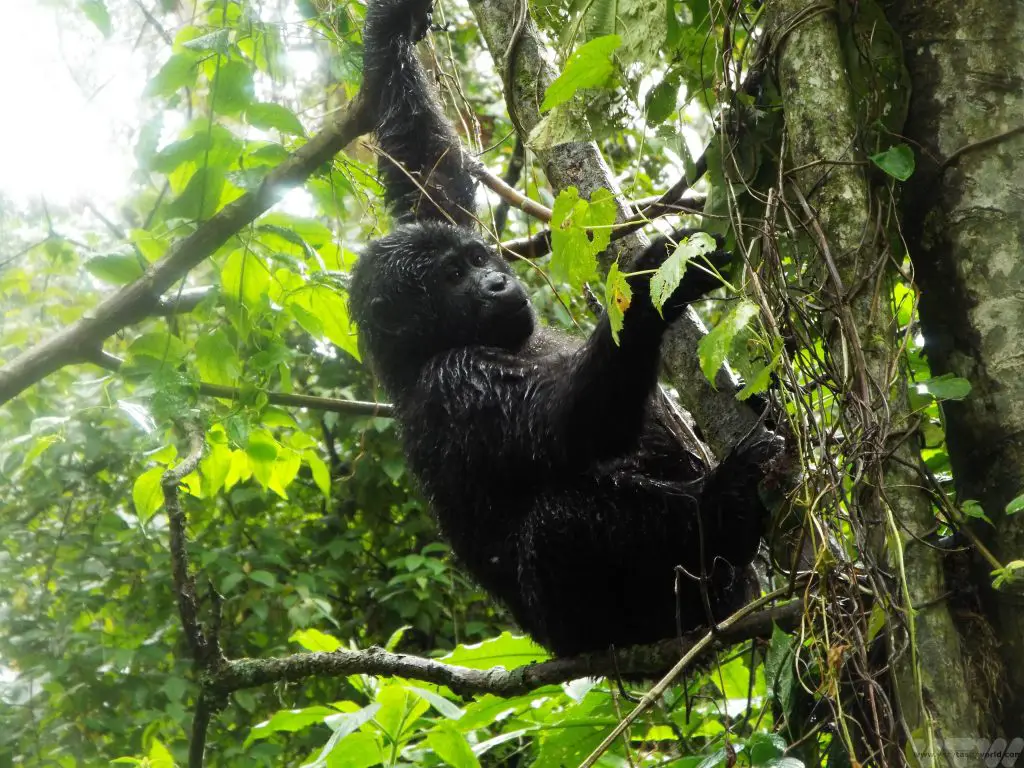
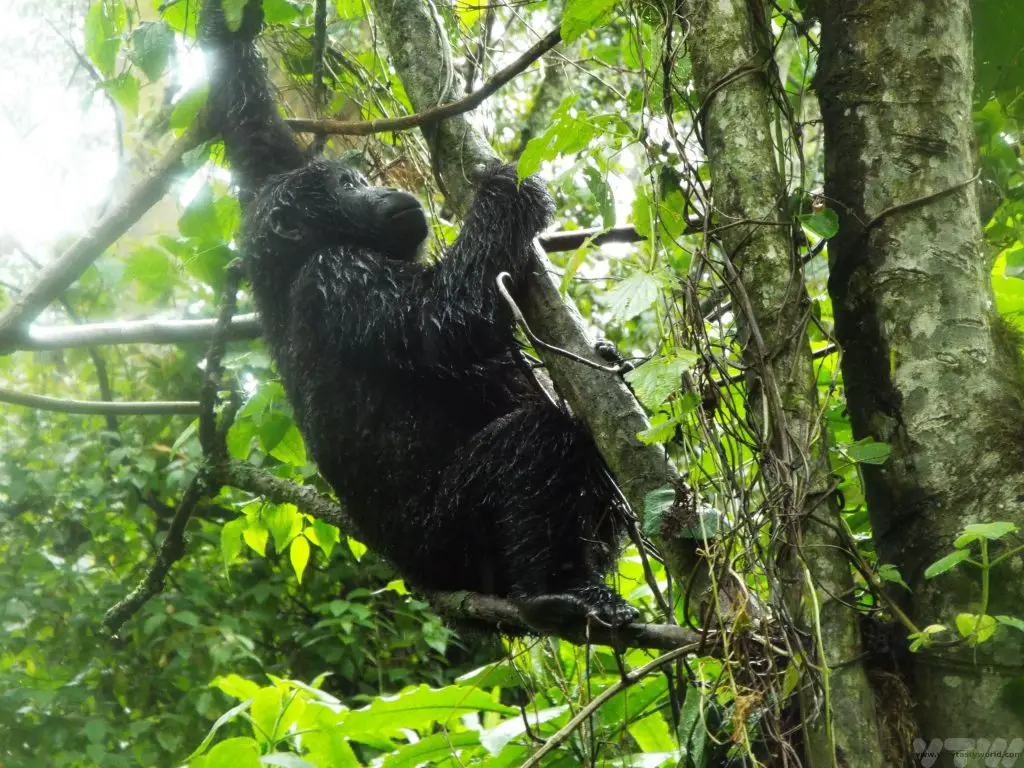
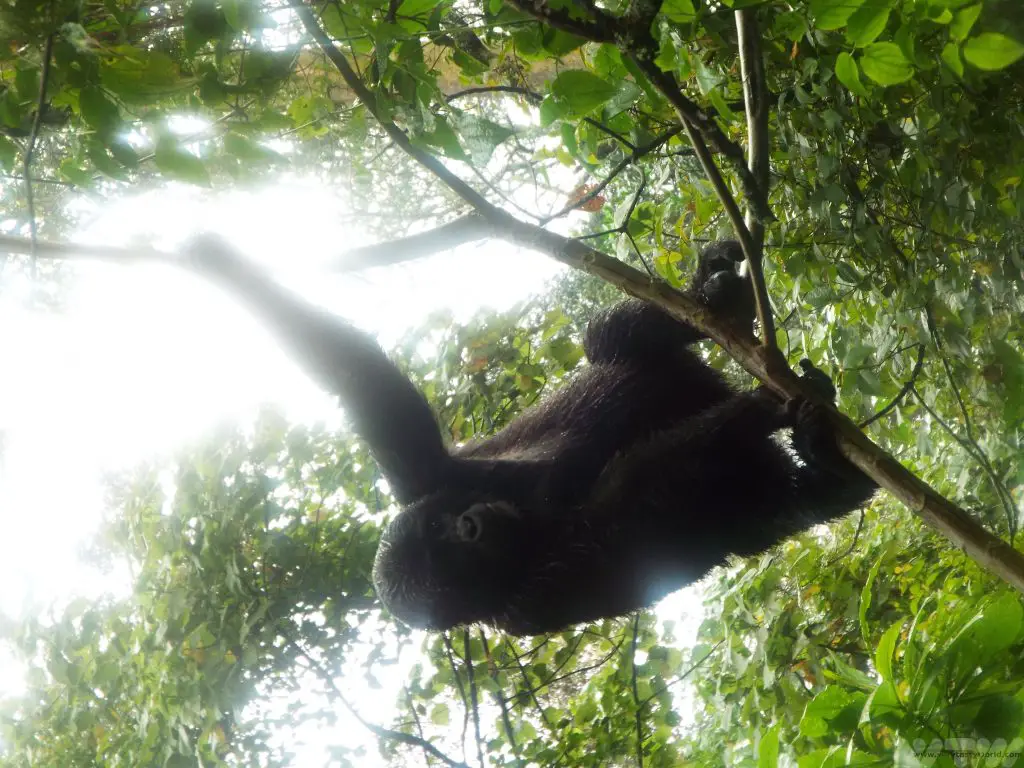
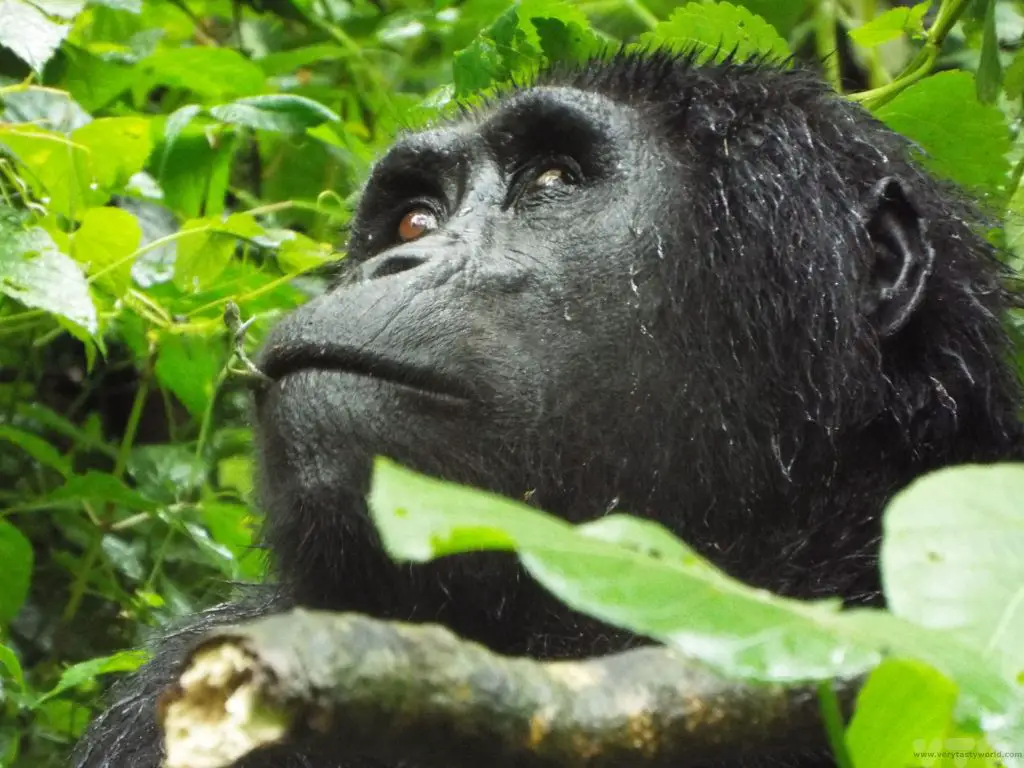
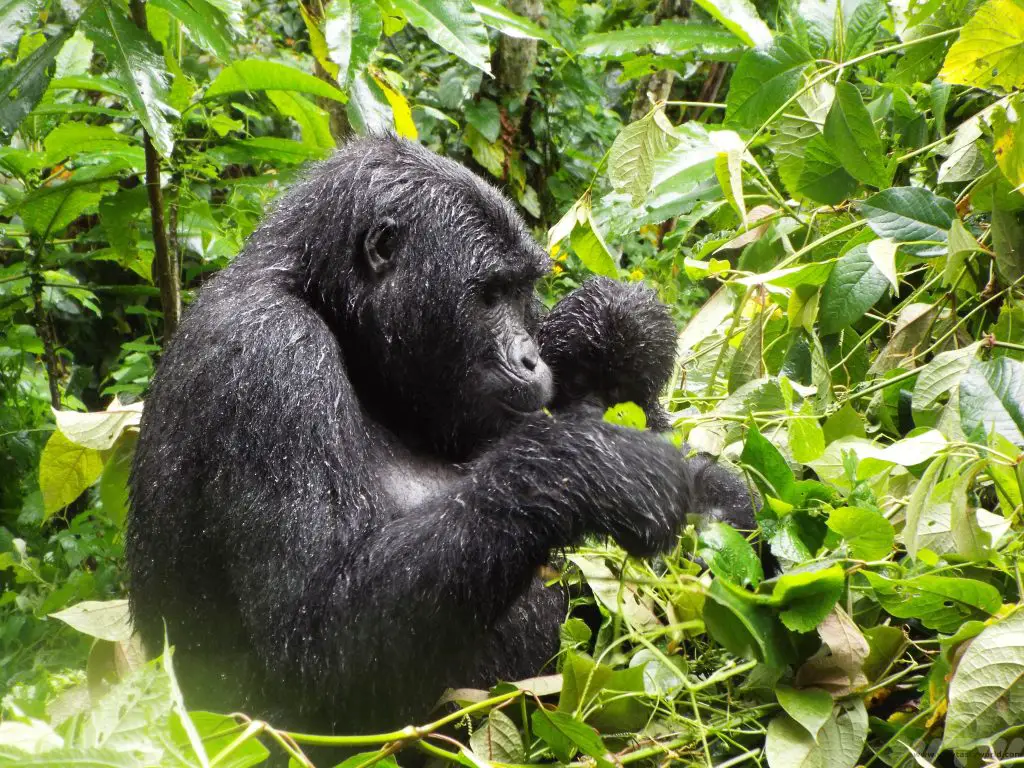
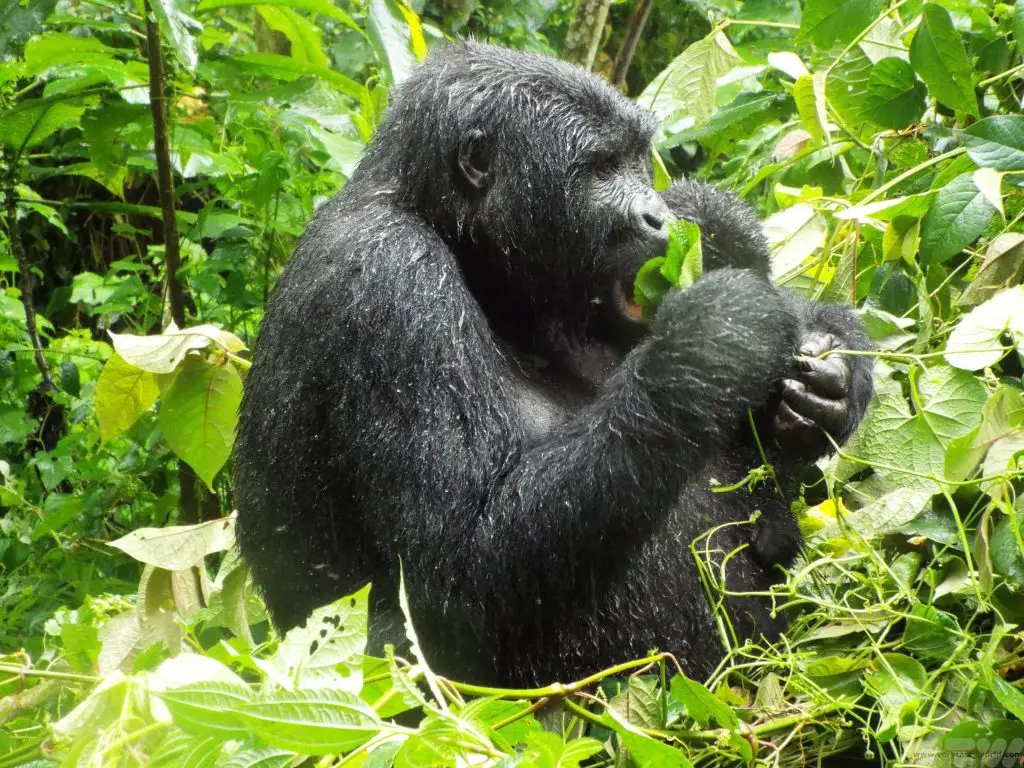
…and a mother and child.
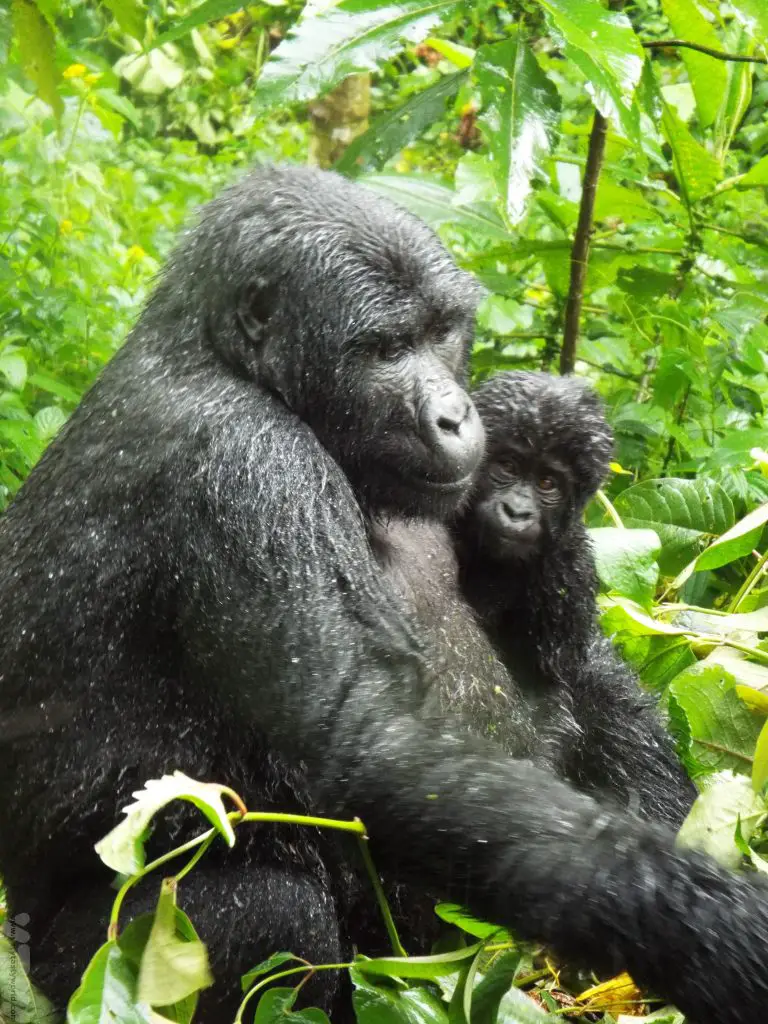
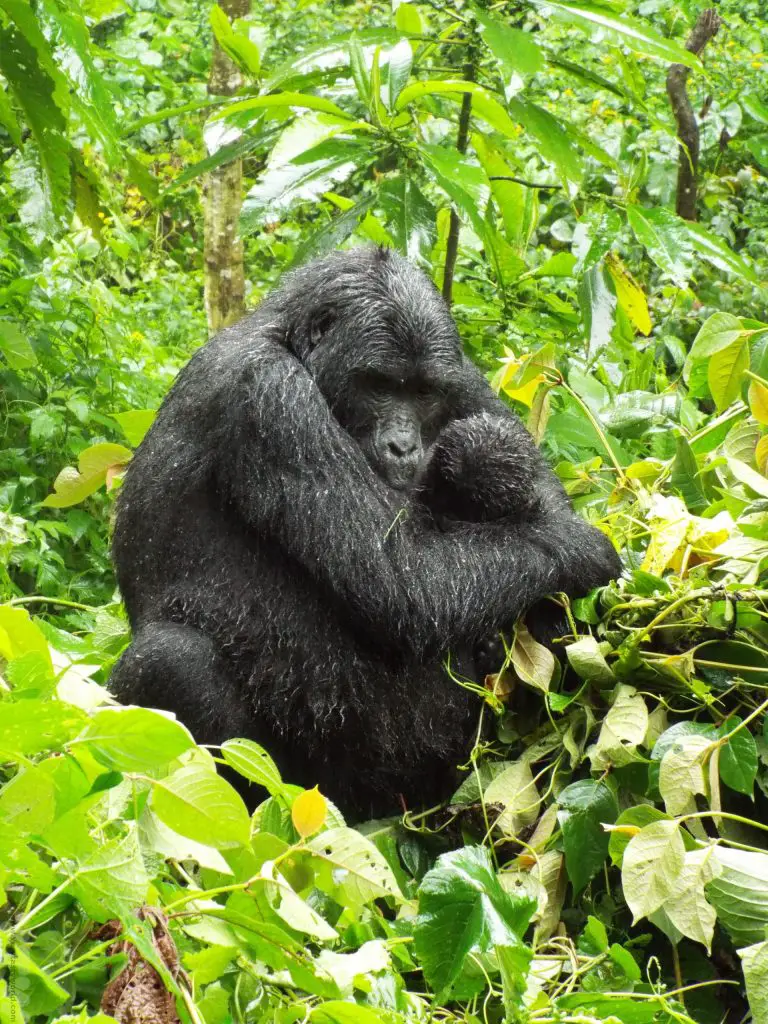
It’s difficult to find the words to describe how magical it was just being in their presence. The rules say that you are allowed one hour with these amazing creatures. It flew by. Then there was the slippery, steep trek back to base. It was a tough climb but we made it without difficulty. Gorilla trekking in Uganda was one of the most amazing things we have done. We were exhausted but elated.
The gorillas were feeling a bit sleepy too.
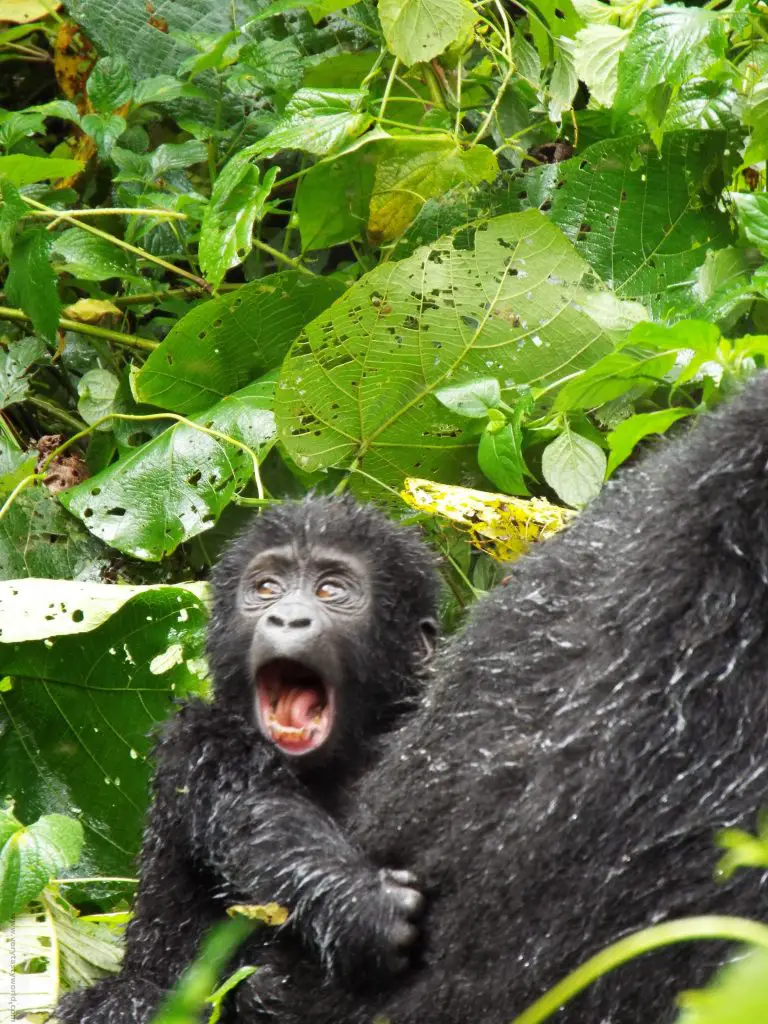
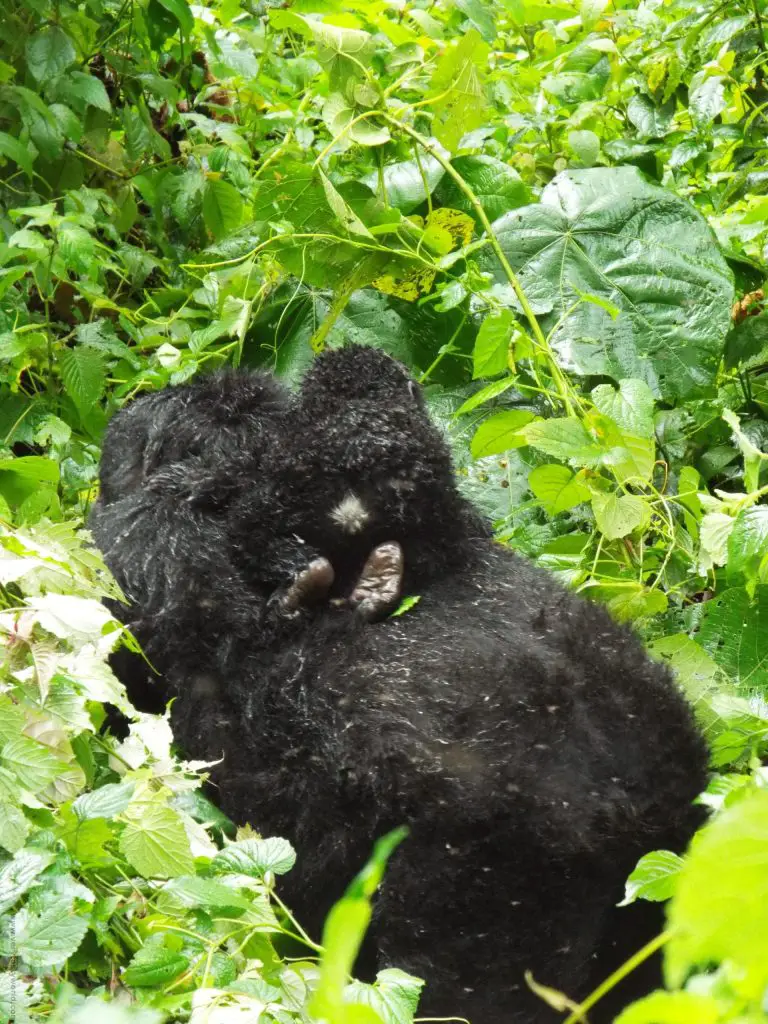
At the Elizabeth National Park we managed to purchase some Gorilla Coffee. Made from arabica beans it is grown, processed and roasted in Uganda, and is delicious. It has a lovely aroma – it smells of sweet, buttery caramel and has a smooth taste with just a touch of distinctive coffee bitterness. Even better, some of the profits from its sales go towards conservation efforts to help the marvellous mountain gorillas.
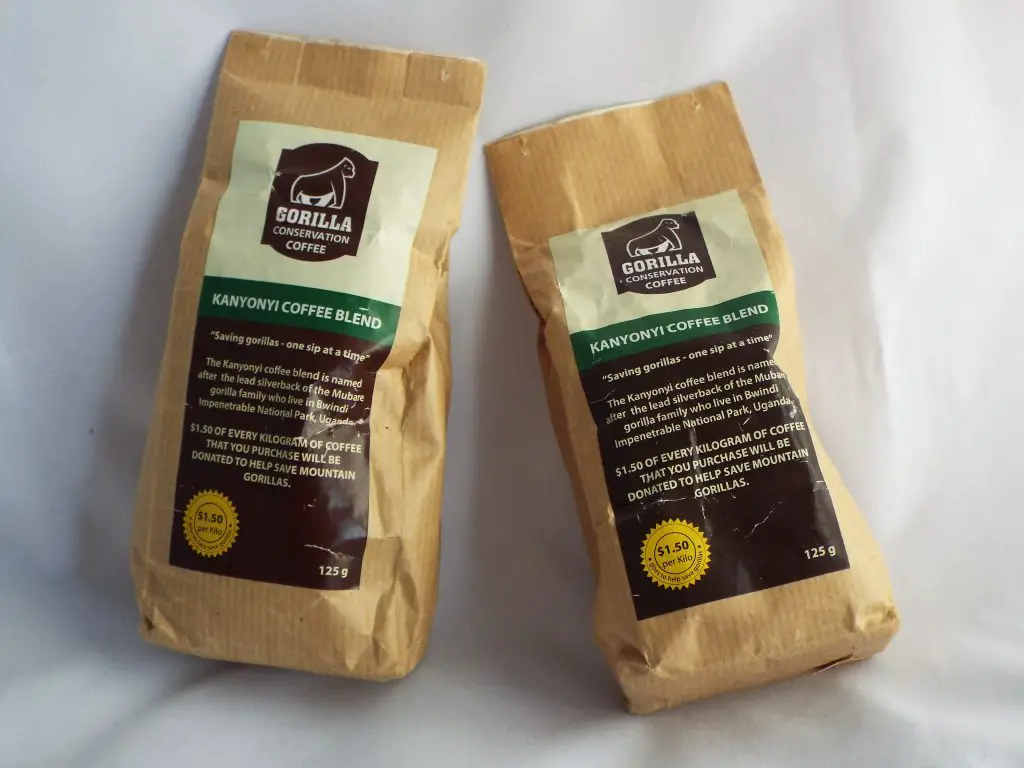
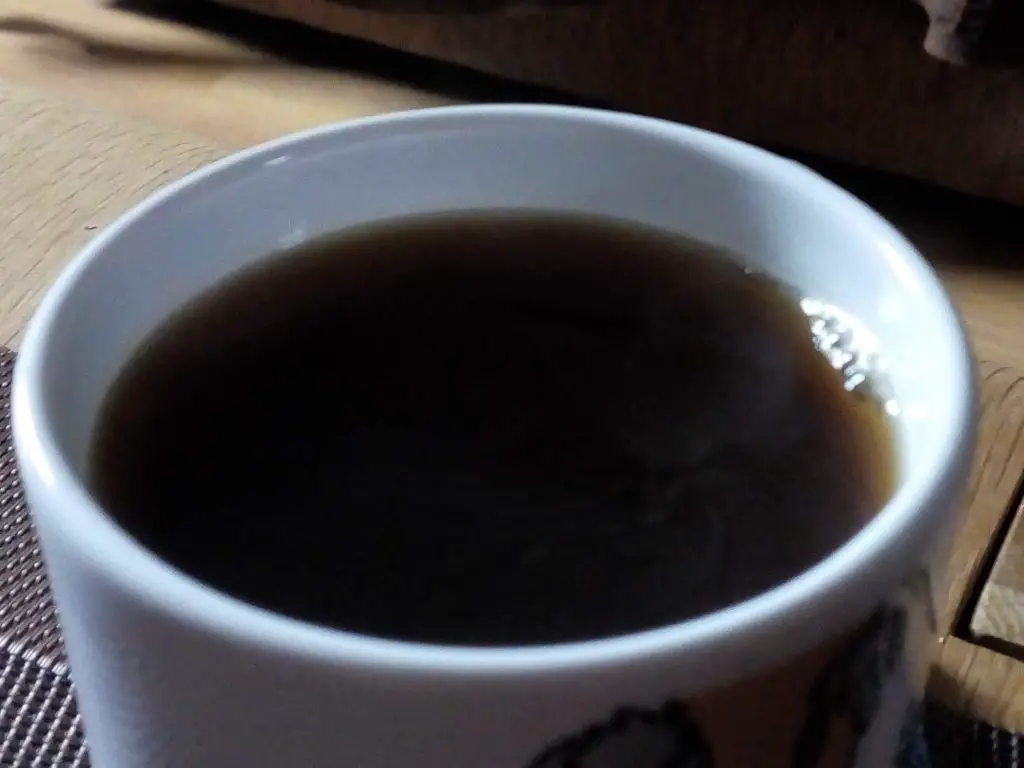
Related Posts You May Enjoy

Temple of Heaven, Beijing
The Temple of Heaven, along with the Forbidden City, is a must-see attraction in Beijing. Both of these amazing building complexes were constructed in the 15th century by the Yongle Emperor, the third emperor of the Ming Dynasty.
The Temple of Heaven comprises a complex of beautiful buildings set inside a lovely and extensive park. Its purpose was for the Emperor to pray for good harvests.
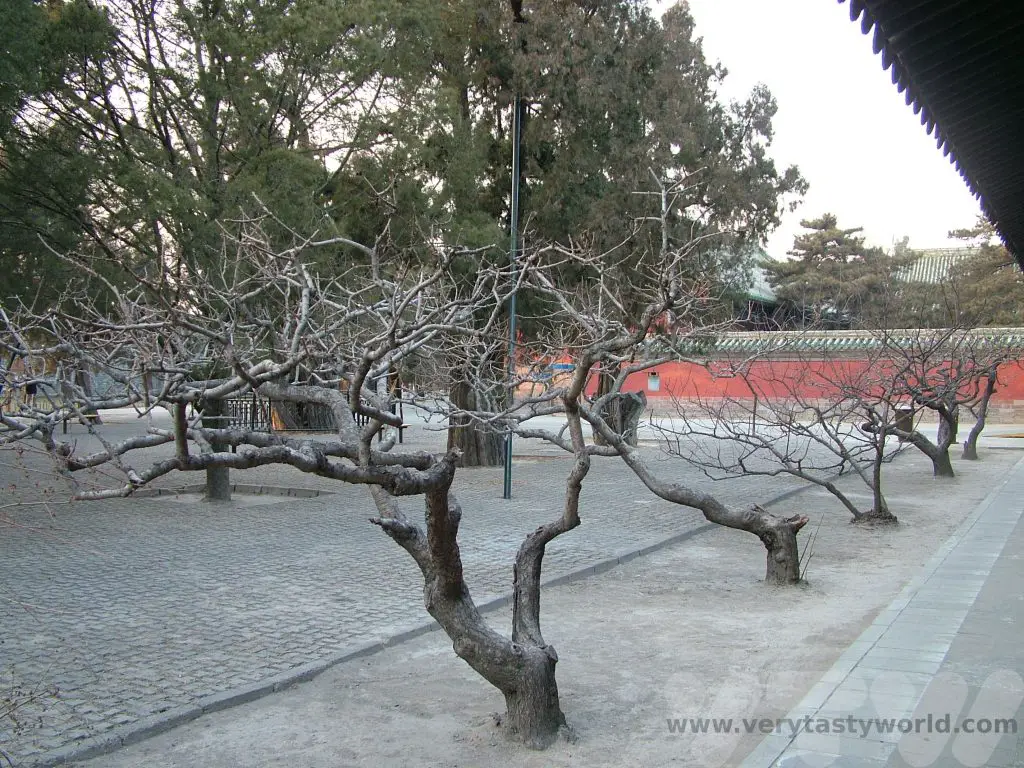
The Circular Mound Altar was constructed in the 16th century in the time of the Ming Dynasty. Its purpose was for the Emperor to pray for favourable weather, particularly in times of drought. It has three circular terraces, each of which has four entrances with precisely nine steps. The number nine plays a significant part of the architectural design with many of the numbers of pillars and slates being multiples of nine. It is surrounded by gorgeous marble carvings. The design also allows sound to resonate throughout the construction creating an echo that amplifies a voice – useful for the Emperor to make certain that the gods would hear his prayers.
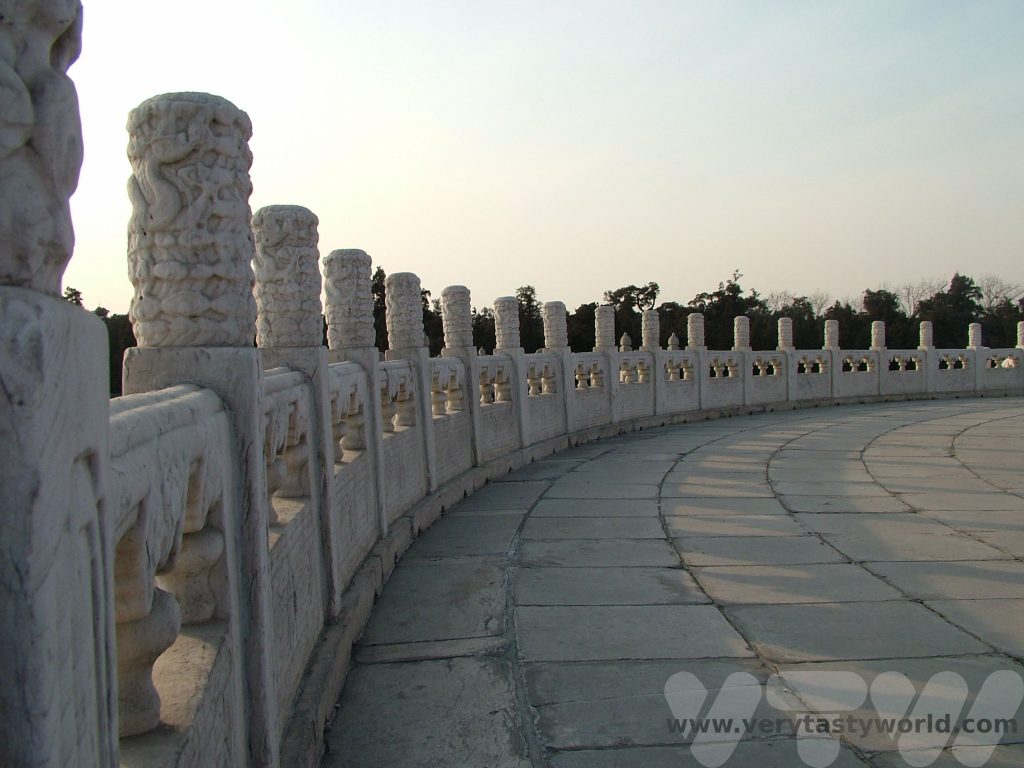
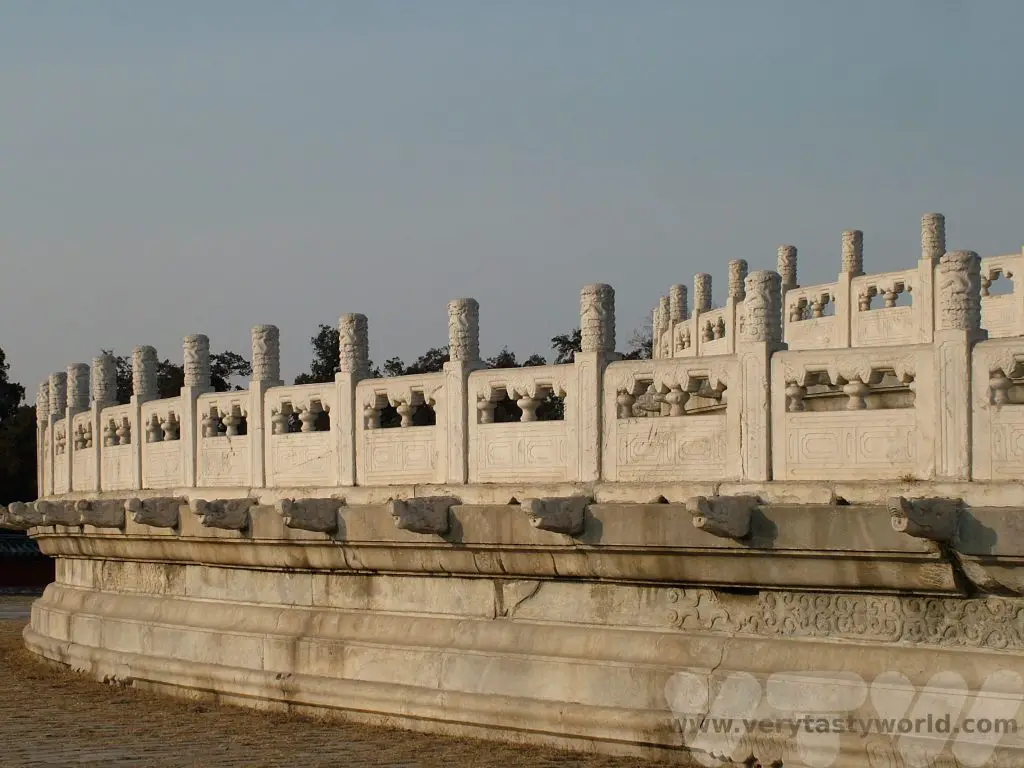
The Imperial Vault of Heaven is circular building, one storey tall.
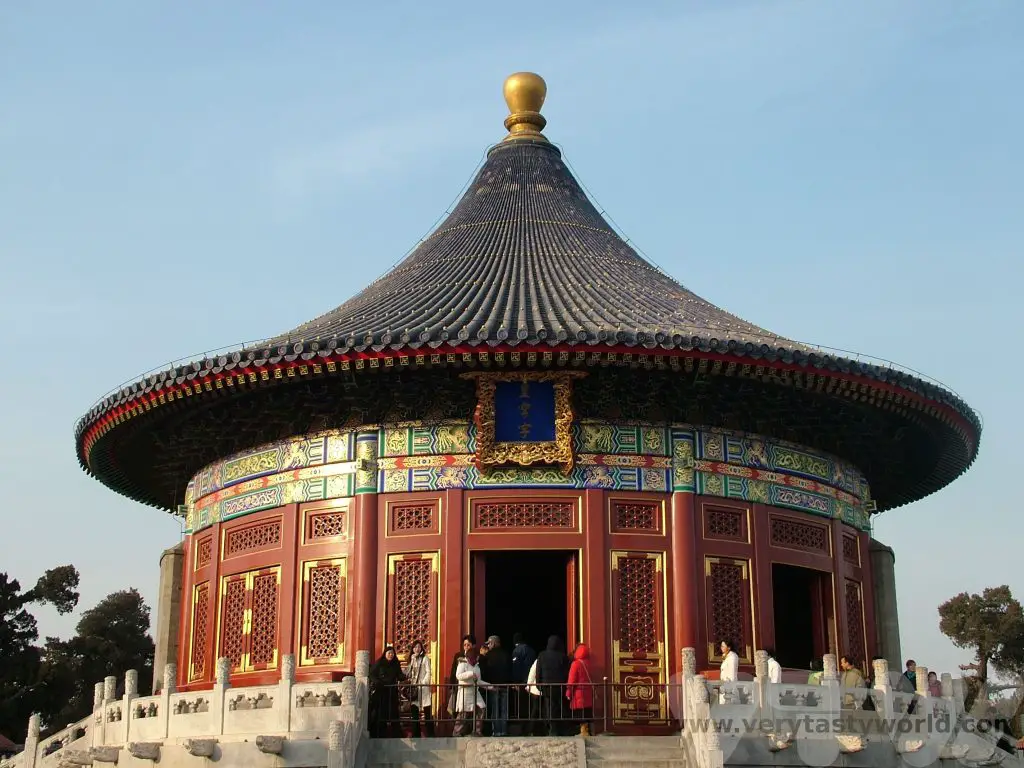
From this, a walkway leads to the Hall of Prayer for Good Harvests. Like the Imperial Vault, it is a gorgeous circular construction, and large too, at 36 m across and 38m high. As its name suggests, it was here that the Emperor prayed for good harvests. A wooden construction, apparently built without using nails. The decoration is marvellous – highly detailed and intricate. The detailed decoration contains images of mythical creatures and birds and radiates with a wonderful glow as the light of the setting sun casts its rays upon the building.
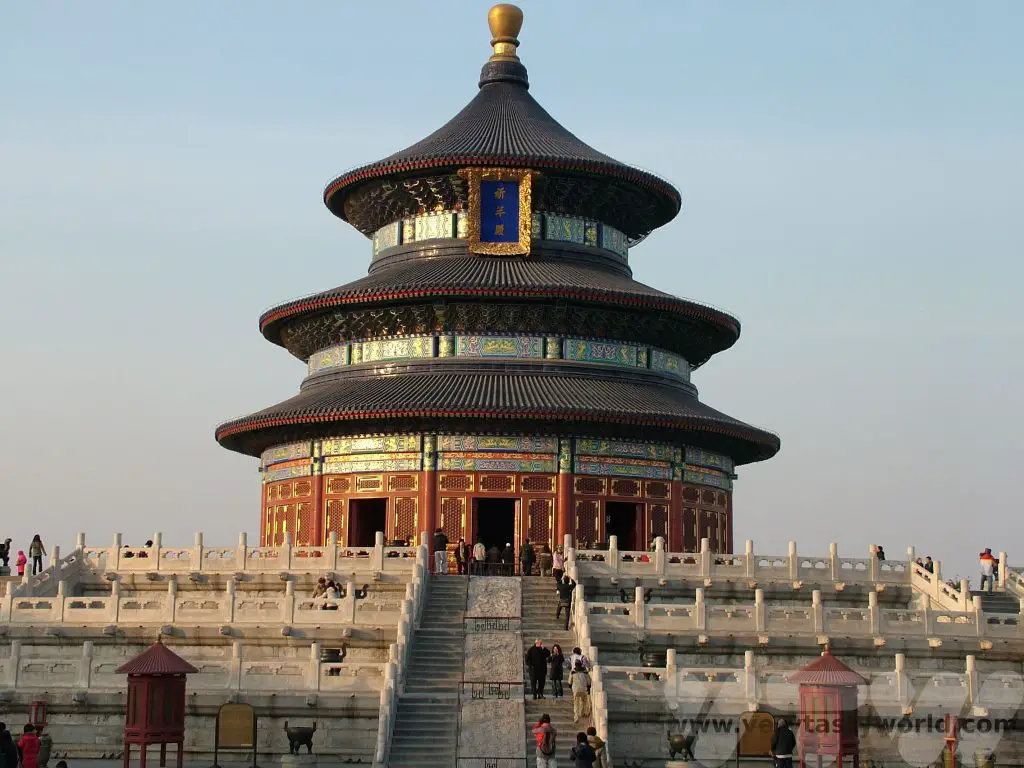
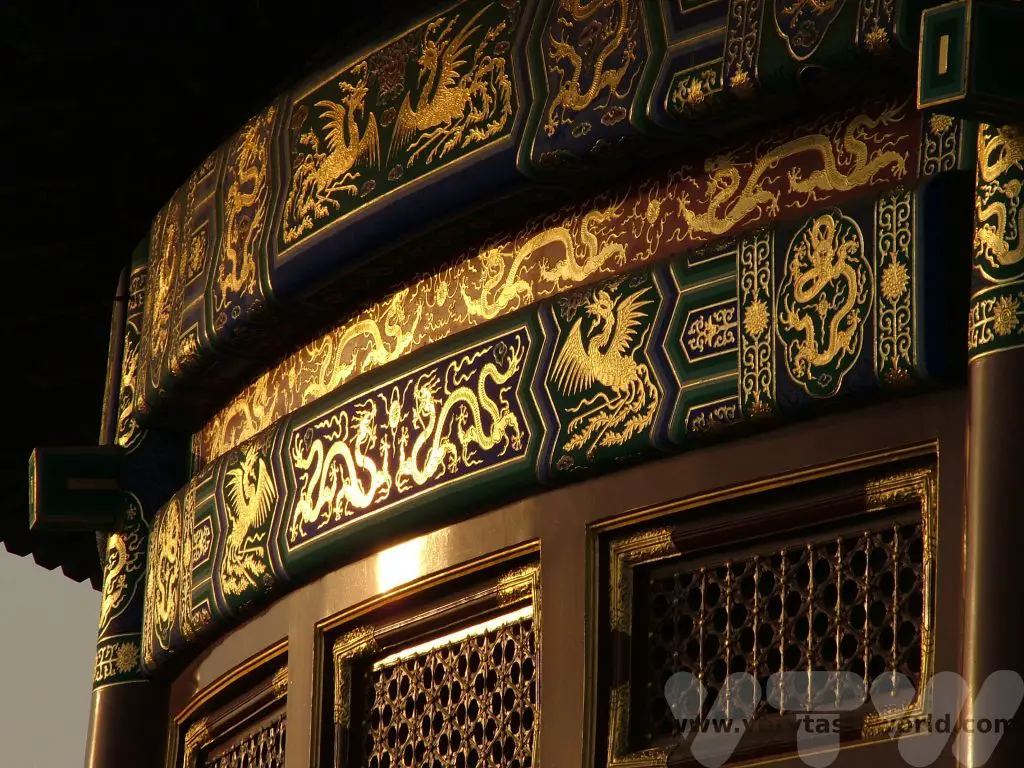
Tea Houses Outside the Temple of Heaven Beijing
There are a number of tea houses just outside the Temple of Heaven. They provide an opportunity to taste a variety of Chinese teas.
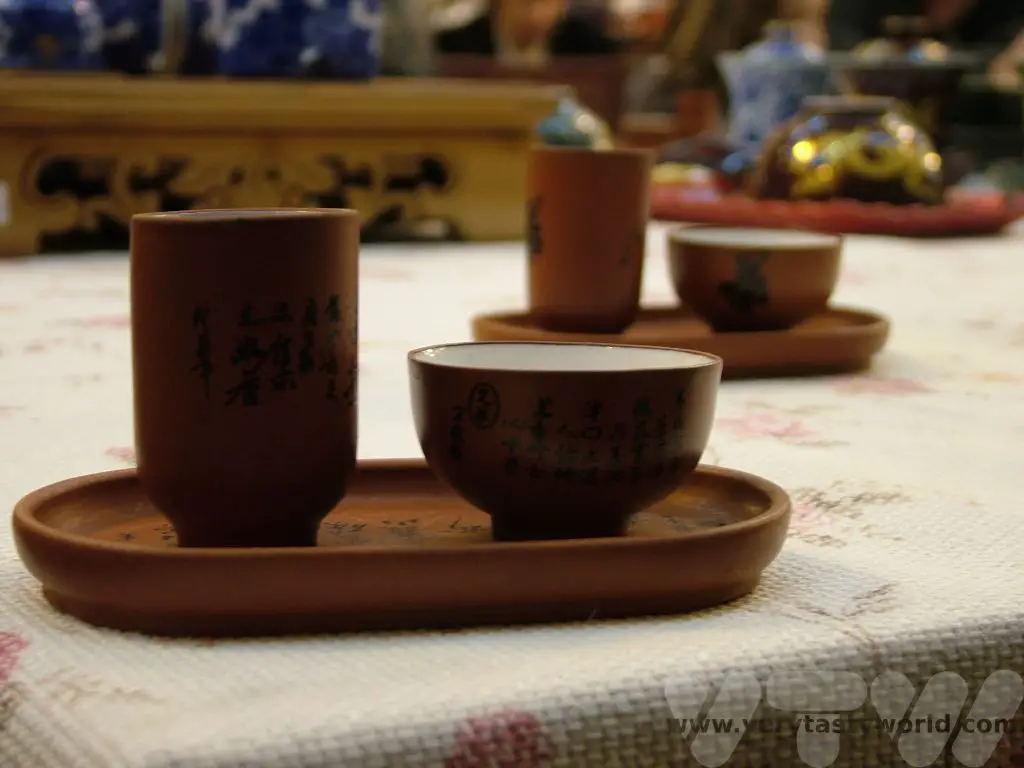
It was in one of these that we discovered blooming teas. These are neatly crafted hand-bundled into a small ball, a little smaller than a ping pong ball. They look rather nondescript folded up.
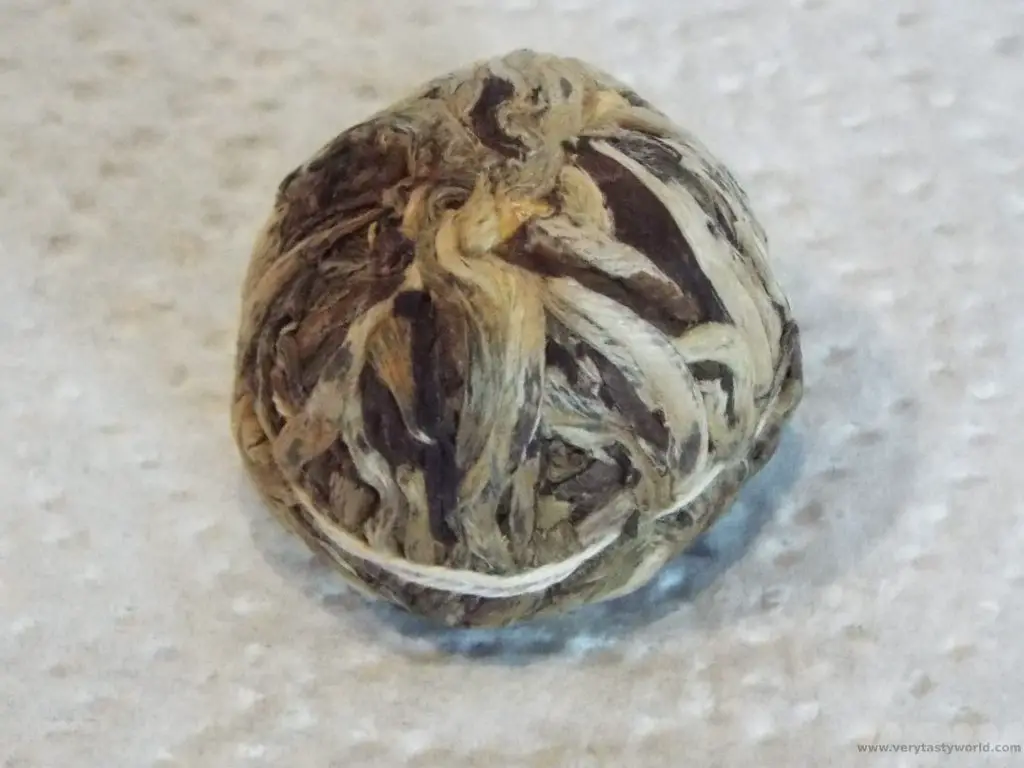
But pop them into some boiling water and they bloom into a flower whilst infusing the water to create tea. They are usually comprised of white tea or green tea leaves. Sometimes jasmine or similar flowers are used.
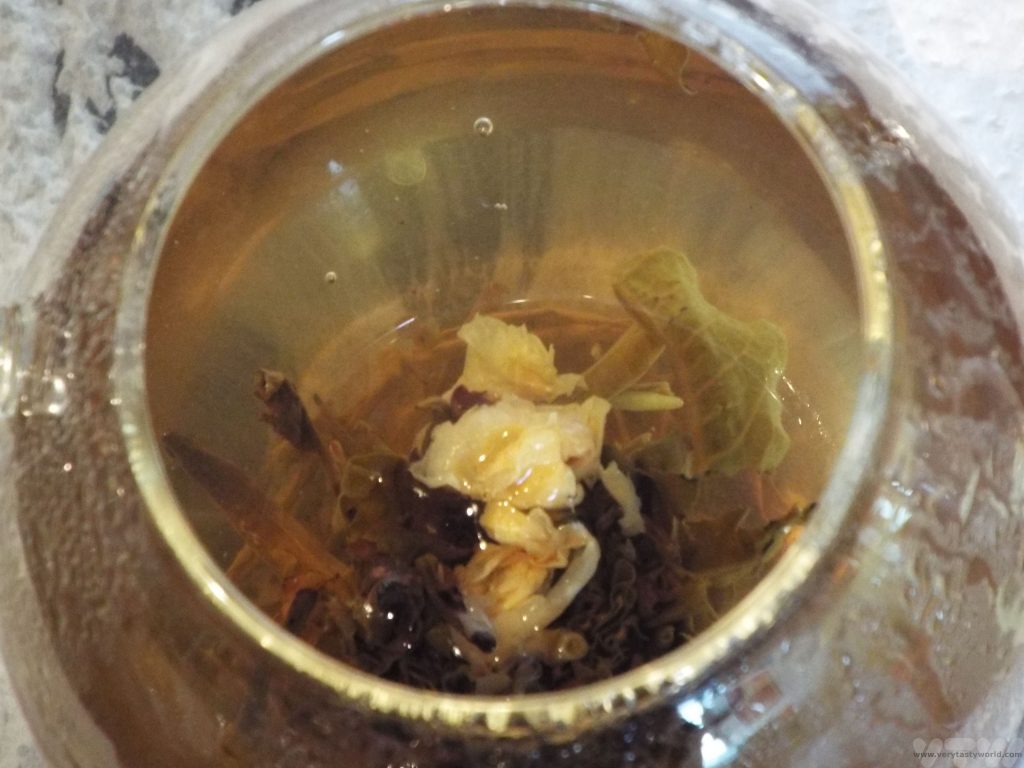
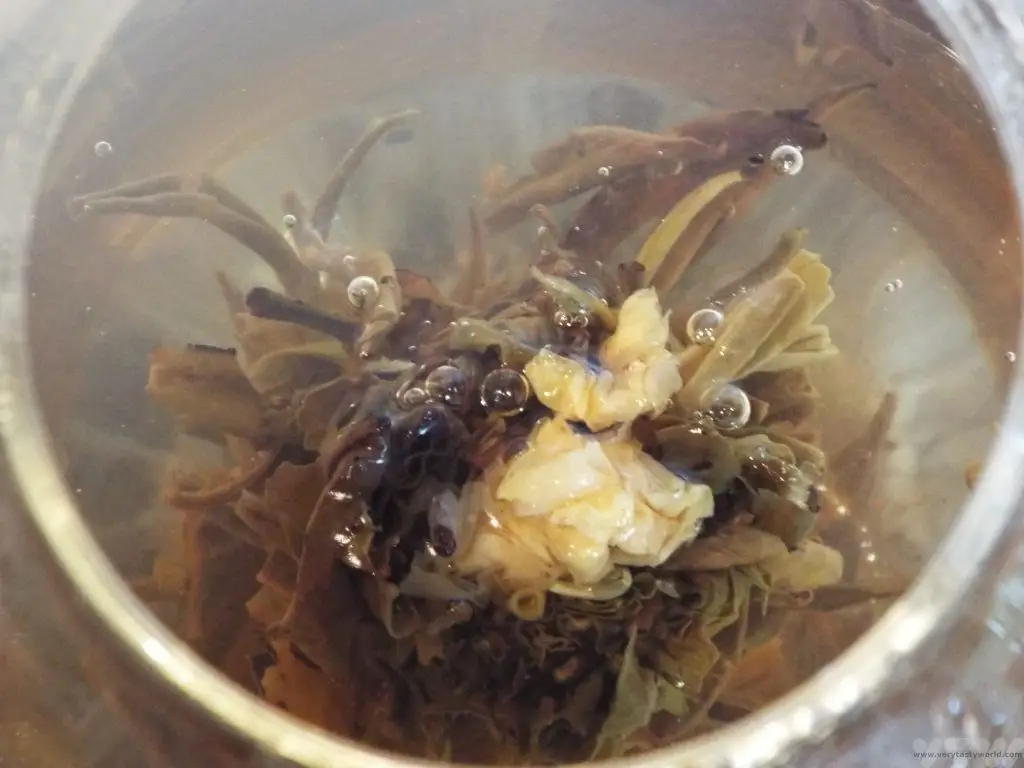
The flavour is mild but some have a touch of tannin.
Delicious and beautiful. You can buy these online. We also treated ourselves to a splendid glass teapot so that we could enjoy watching the flower bloom.
Couple of things worth noting. If you are on a tour you are likely be invited to purchase products in the inevitable shop that can be found alongside museums, factories, tourist attractions and tea shops. Our experience was that we weren’t pressured to buy anything. We also found that in some factory outlets prices were regulated by the government which meant that we didn’t have to haggle, much to our relief, because we’re rubbish at it. Although we did somehow come home bearing a vaccuum-packed silk duvet from one emporium because it was genuinely good value.
There are some scams whereby friendly people approach you and invite you to drink tea with them at a local tea house. It may be perfectly legitimate and genuine but there have been situations where you are taken to what appears to be a charming, authentic tea house and when the bill arrives it is considerably higher than you might expect for a pot of tea.
Related Posts You May Enjoy
Kumarakom Houseboats on the Kerala Backwaters
Kerala, the state in South-west India, is one of the most popular tourist destinations in the country. Blessed with gorgeous landscapes, beaches and hill stations, it also has a rich cultural heritage and an amazing food scene, and it is easy to understand why the local people have named it ‘God’s Own Country’. One of the most pleasurable ways to explore the area is on Kumarakom Houseboats, known locally as a kettuvallam on Kerala’s backwaters. These enormous boats, some of which can be multi-storey, were originally used to transport rice and spices to the port of Cochin, the regional capital.
The backwaters of Kerala are a network of channels, rivers and lagoons that are located just inland from and running parallel to the Arabian Sea. Some of the lakes are connected naturally by rivers or by canals that have been constructed for that purpose. The water is brackish – freshwater meets the salty brine of the sea – and this gives the backwaters a very particular ecosystem.
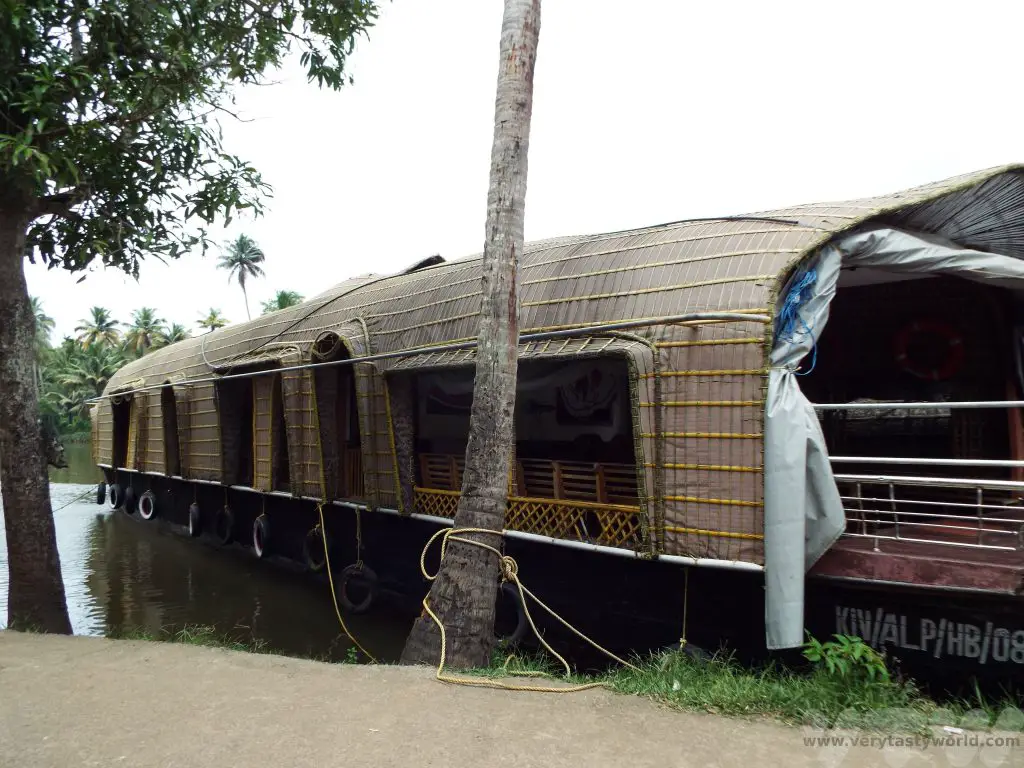
The boats have wooden hulls and a thatched roof. ‘Kettu’ means ‘tied’ and ‘vallam’ is a boat. These boats are constructed from long planks of wood tied with knots of coir and then coated in a resin derived from cashew nut kernels. No nails are used at any stage.
Hiring One Of The Kumarakom Houseboats
Although they were originally designed to be cargo ships they have been adapted for tourism and converted to proper houseboats complete with a living area, kitchen, bedrooms and bathrooms. The boats are available for hire for tourists to reside on, or they can be hired for a few hours at a time. It’s worth noting that boat hire isn’t cheap, especially compared with other prices in the region, but if you can afford it, it is definitely an experience worth undertaking.
Many houseboats are booked months in advance during the busy season and will follow a tour through the backwaters. If you aren’t visiting in the high season you might get lucky and find a boat that’s available to hire. We had been travelling down from Thekkady, arriving at Kumarakom at around 1pm. We managed to find a houseboat that was willing to take us on a four hour boat trip on the local lake and this price included lunch. The prices are for the hire of the boat and crew (normally a couple of people) so if you have a larger party the cost per person naturally reduces. You may find that if the boat is still available and hasn’t already found customers, it may be possible to negotiate a price.
A Tour Of The Houseboat
The thing that is most striking about the houseboats is how spacious they are.
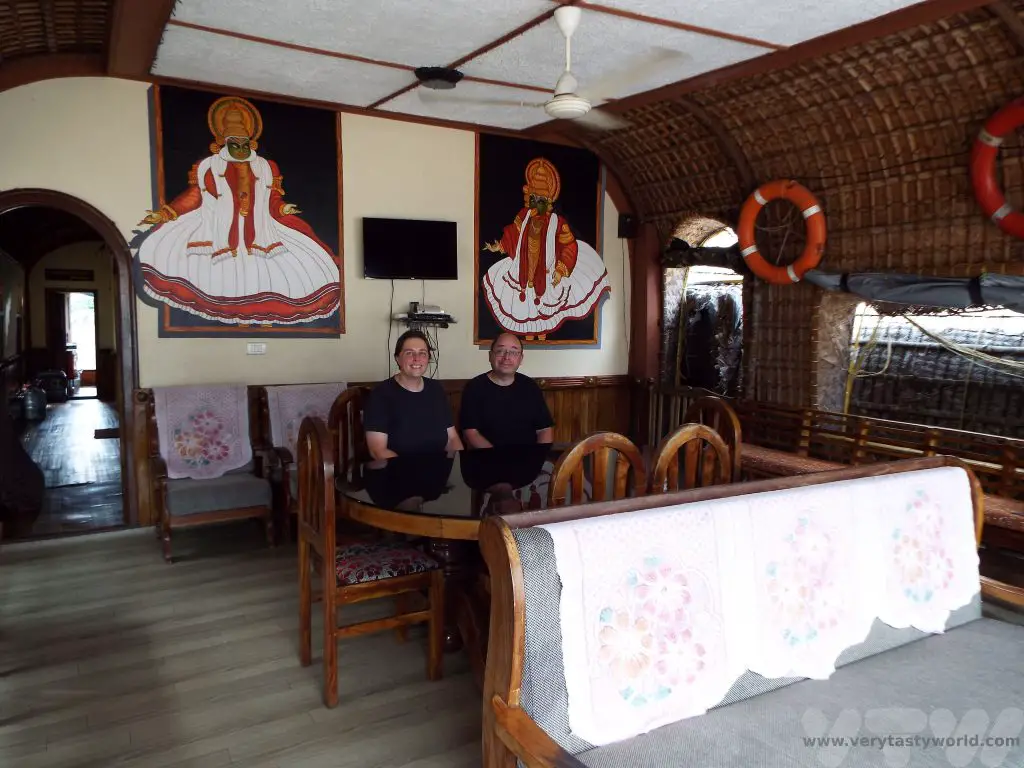
The living/dining area at the front has room for a dining table and plenty of seating space
The houseboat is steered from the front.
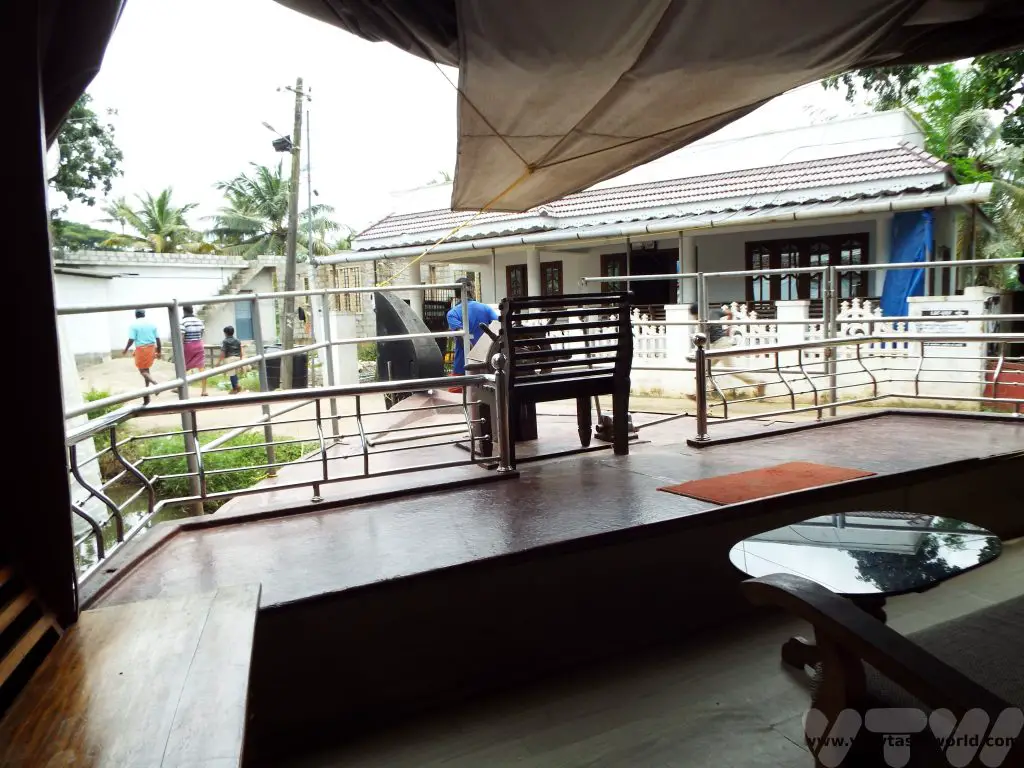
Then there is a long corridor from which there are large double bedrooms. Each bedroom has its own en-suite bathroom.
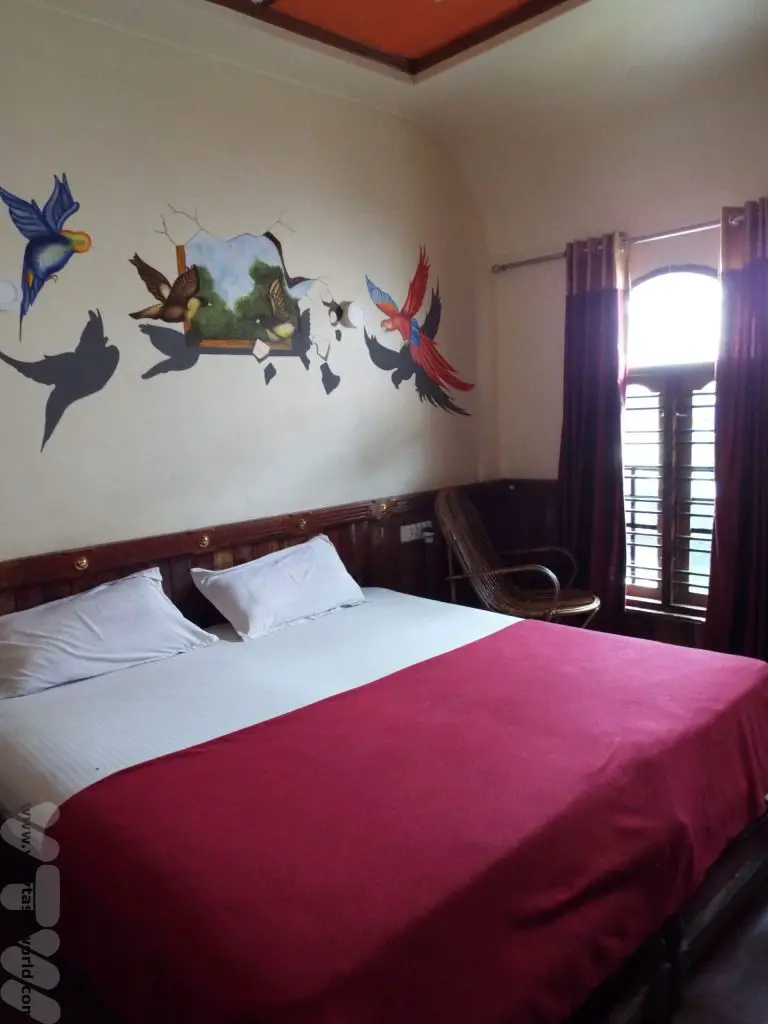
As with all areas in South India where food is served, there is a hand-washing area in the corridor.
Finally, the kitchen is located at the rear of the boat. Again, it is very spacious and has plenty of cooking facilities and storage space. Gas is provided by portable cannisters.
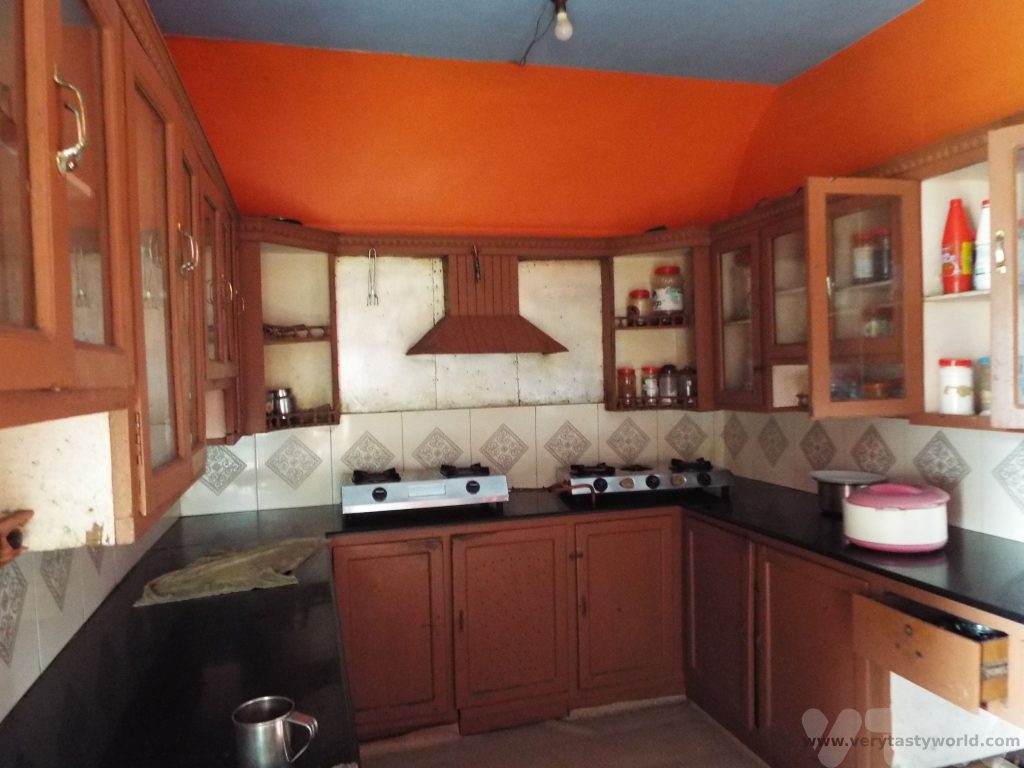
Lunch was already in the process of being prepared…
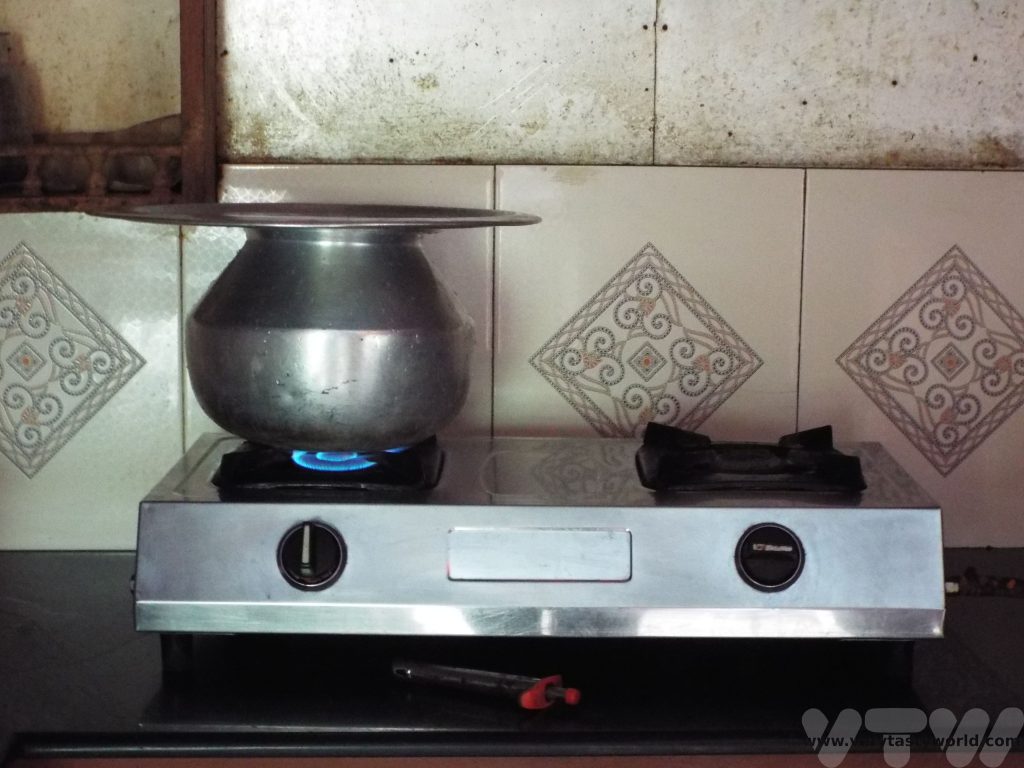
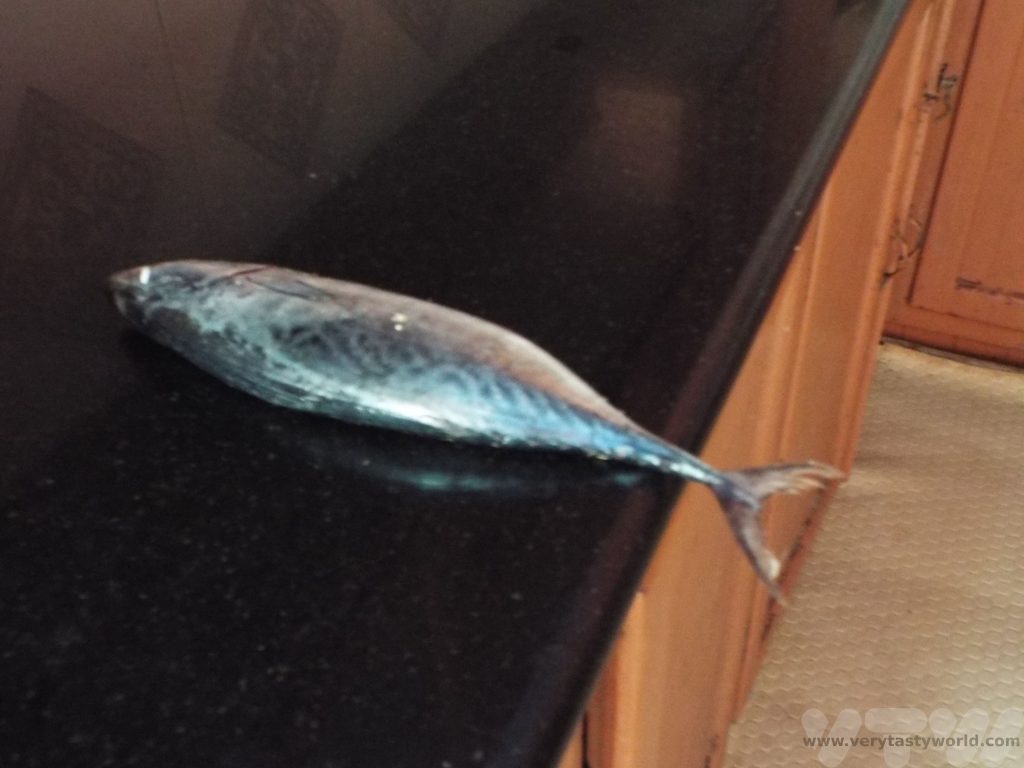
A Laidback Cruise on the Lake
The journey on the Kerala houseboat took us from the boat’s mooring along the river and onto the wide Vembanad lake. The boats are motor driven but move at a slow pace which makes for a leisurely experience. It very much reflects the way of life in Kerala.
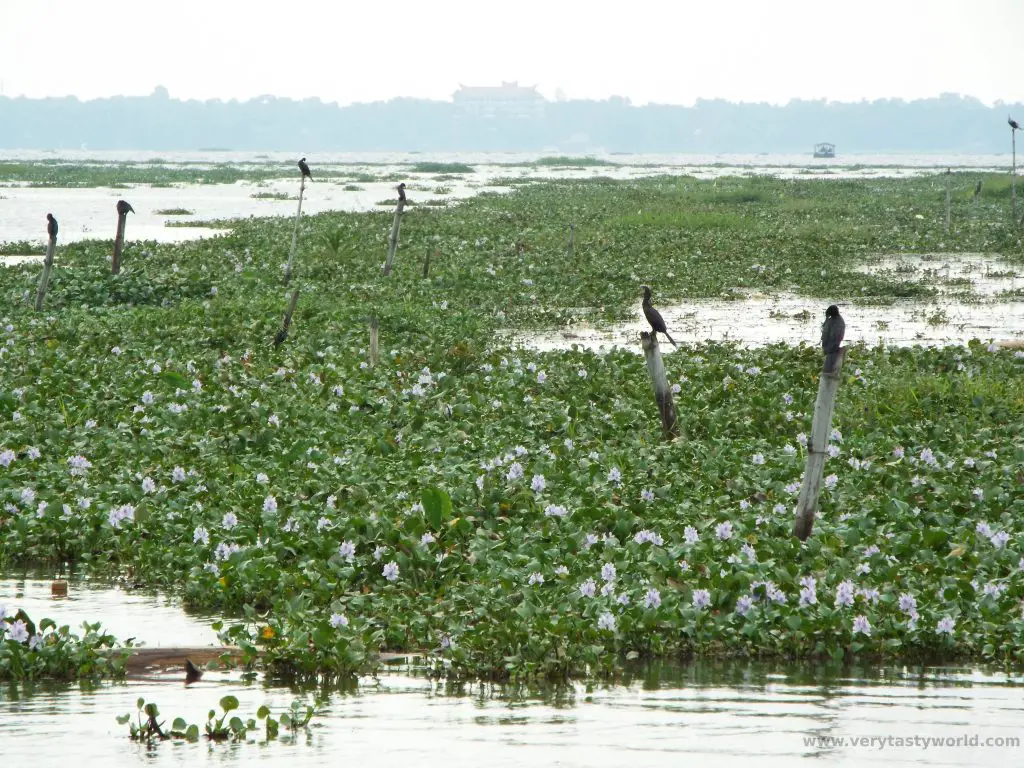
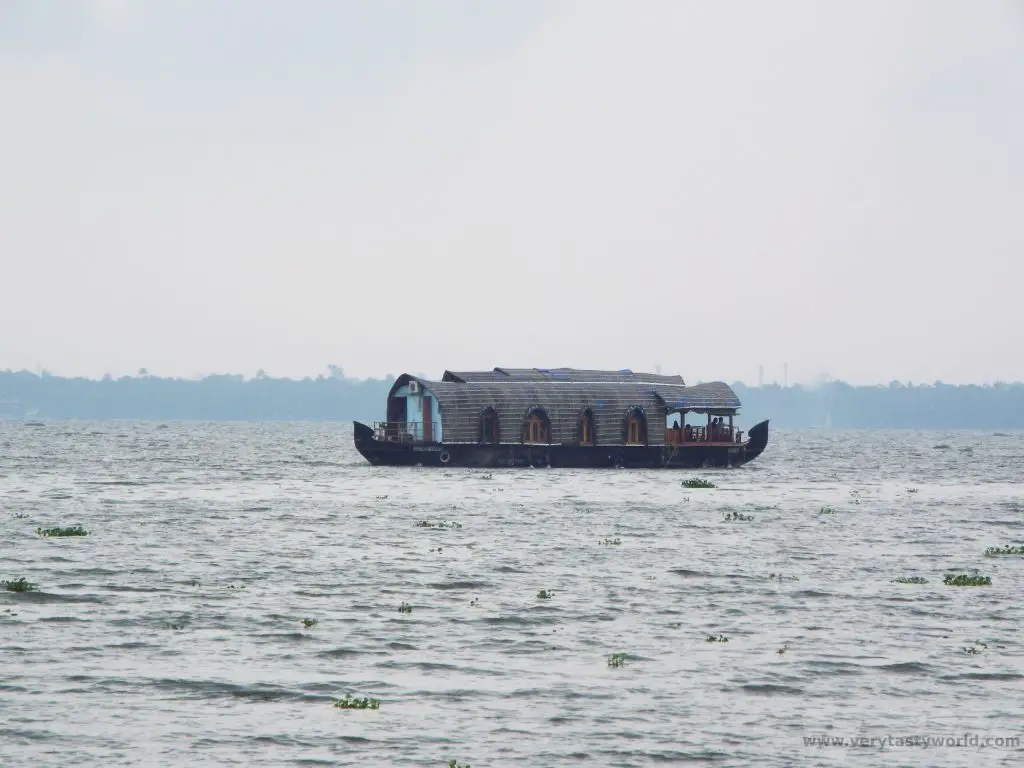
All along the shoreline it is possible to see fishing contraptions. They are formally known as shore operated lift nets, which doesn’t sound nearly as romantic as they look. These are used at night to catch prawns and other small fish. They are designed on a cantilever which ensures that the net descends into the sea when someone walks along the main beam. The catch is then raised by the use of ropes. Some have lights which are used to attract the fish.
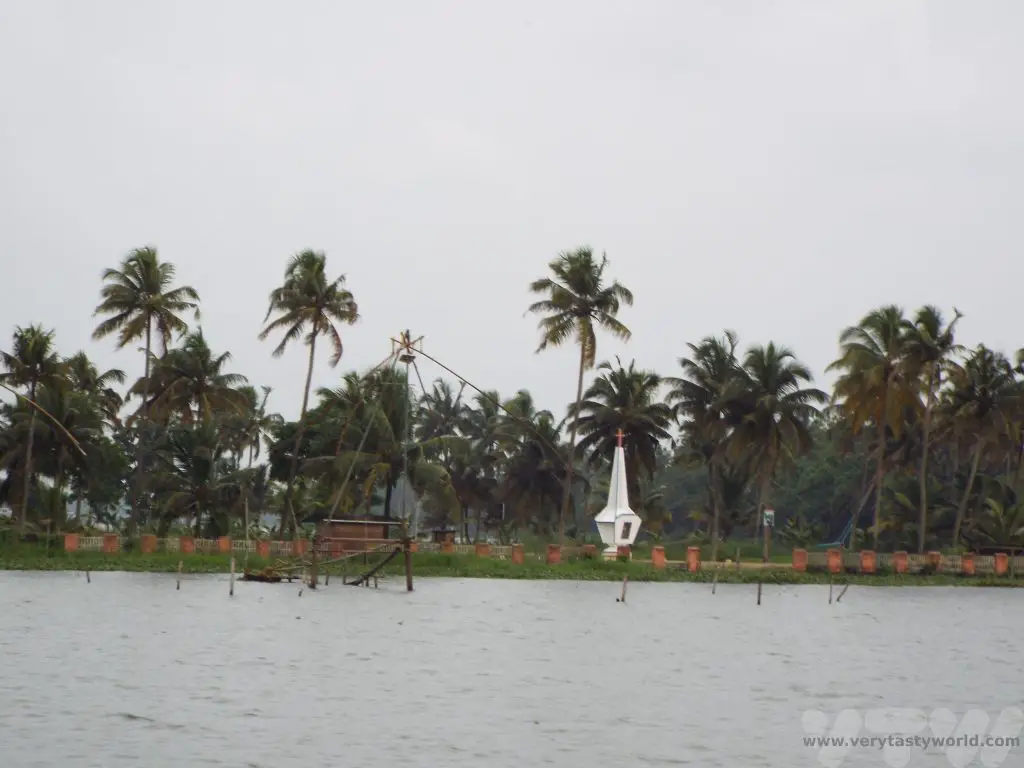
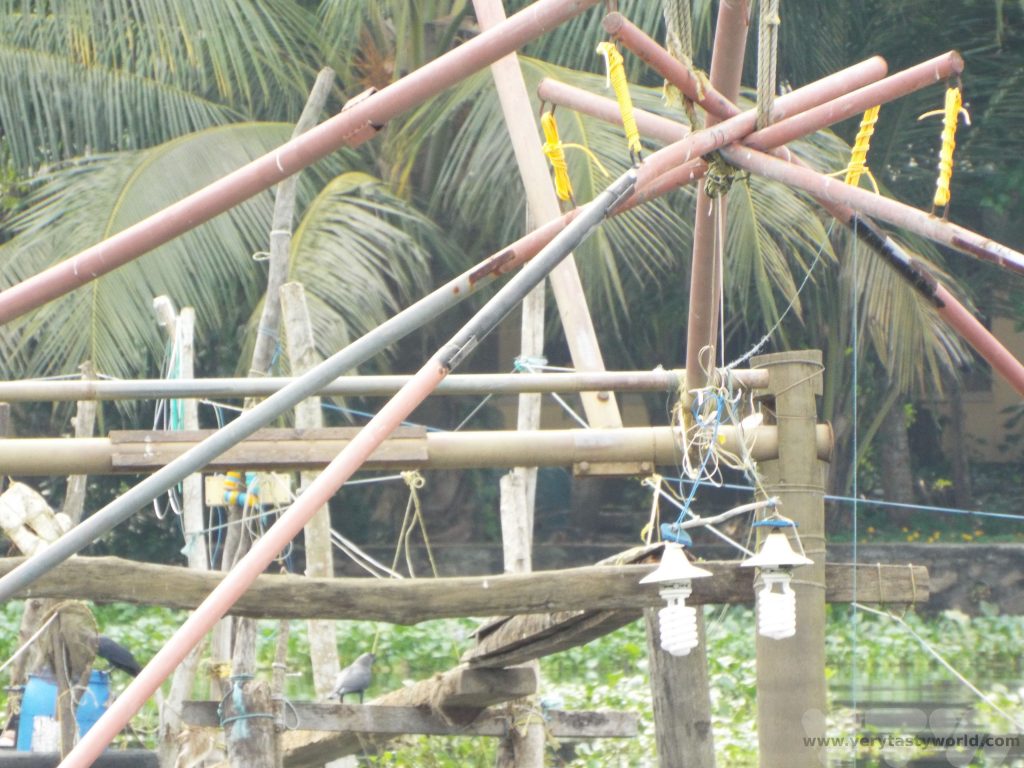
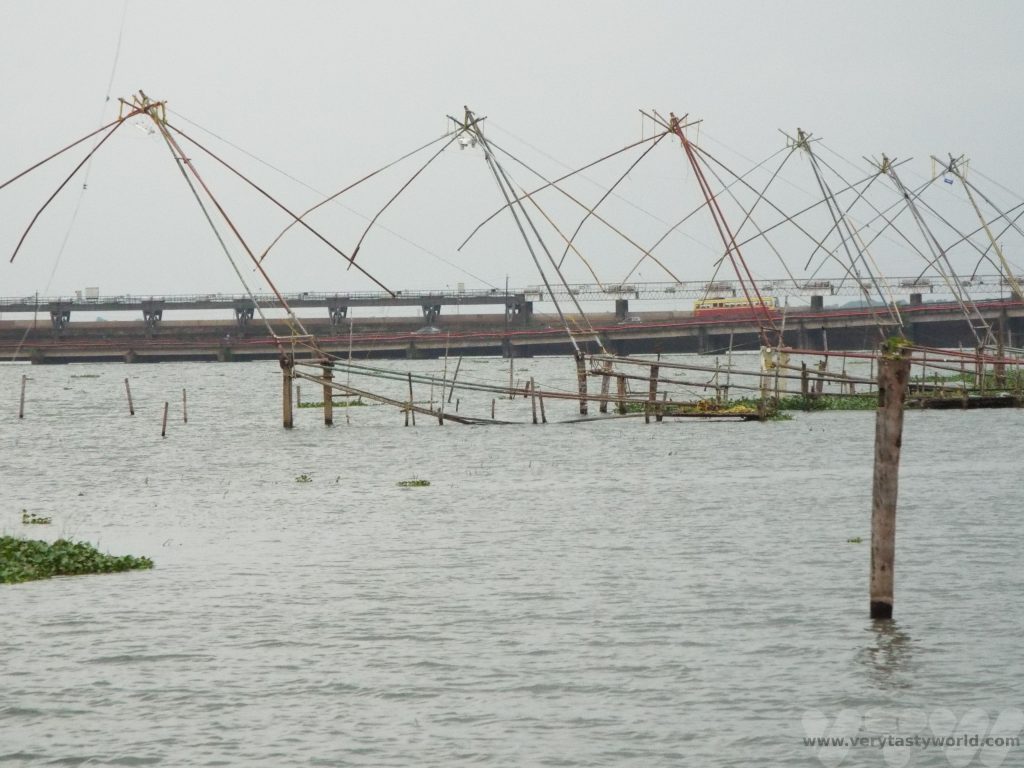
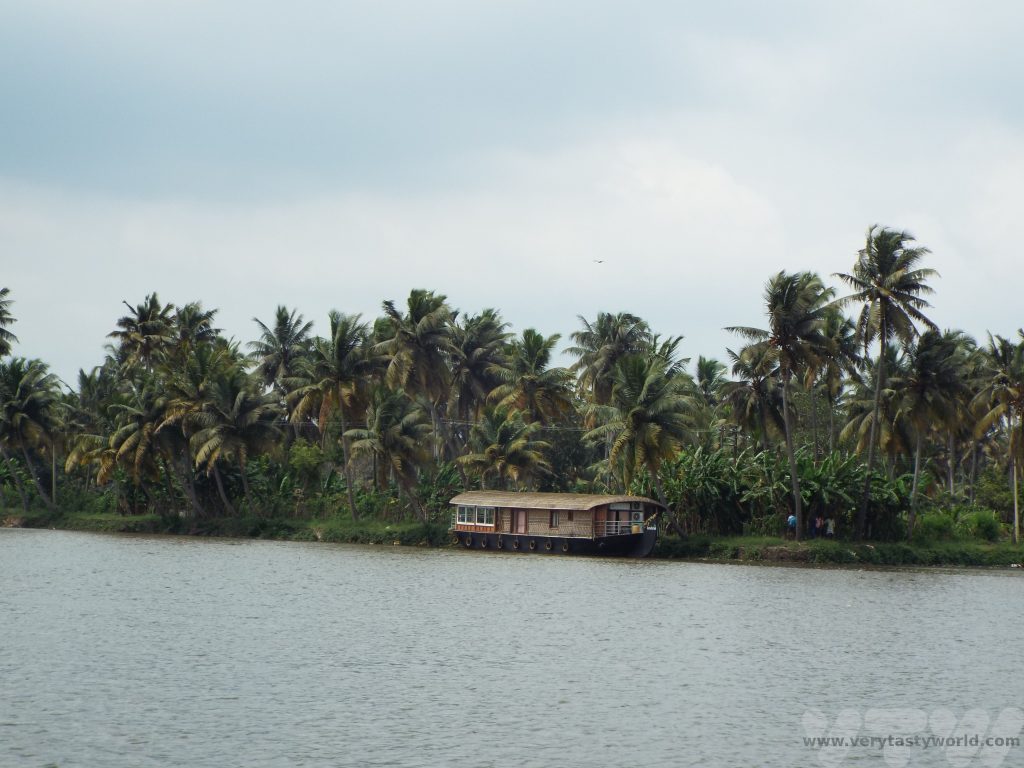
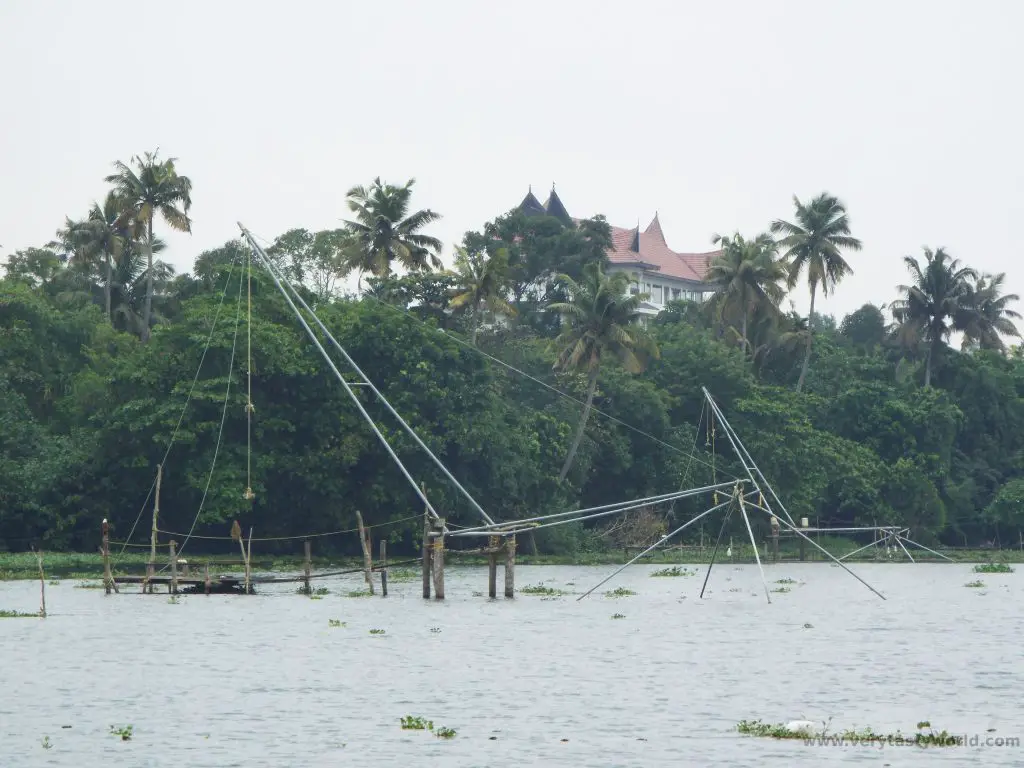
Dining on the Houseboat
Lunch on the Kumarakom houseboat comprised typical dishes from the region – a spicy fish curry with fish fry accompanied by vegetable side dishes and rice. We were asked how spicy we liked our food and we asked for it to be spiced as local people liked it. Like many dishes in Kerala we found that the spices were used for flavour rather than heat. And, of course, it was utterly delicious.
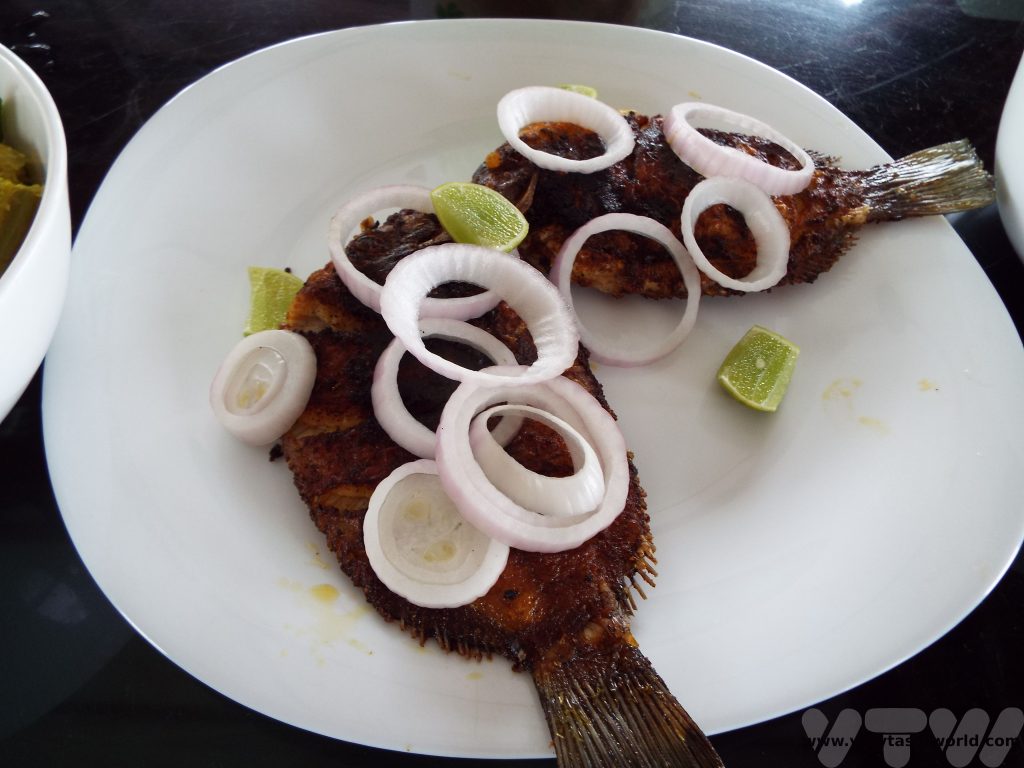
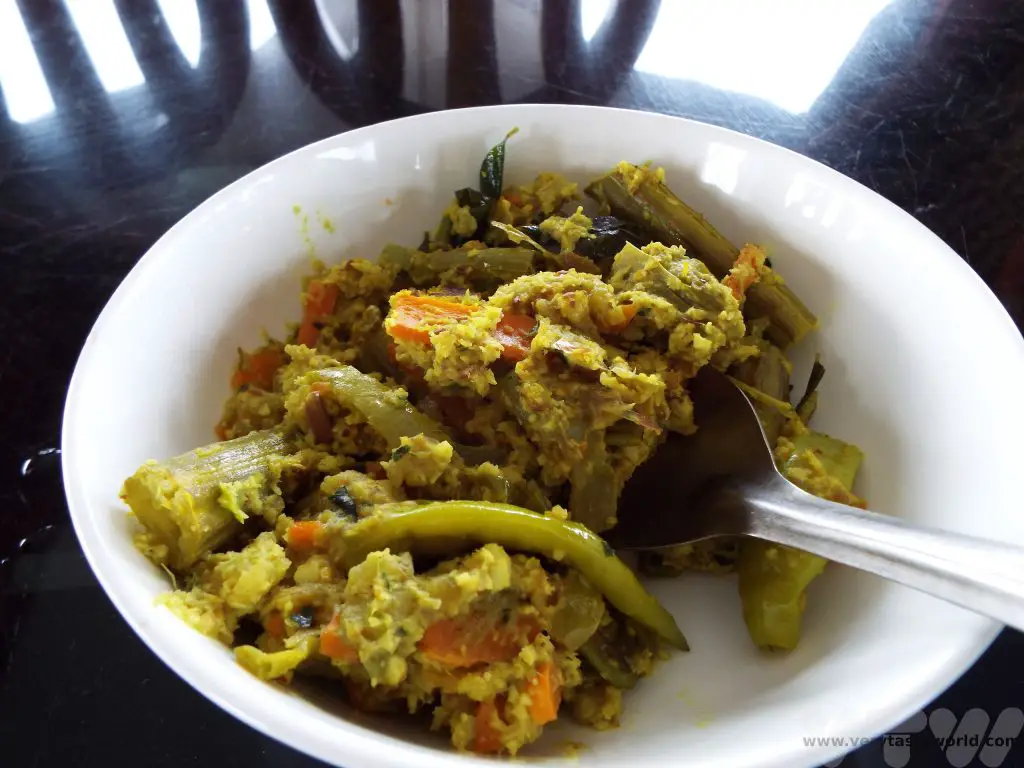
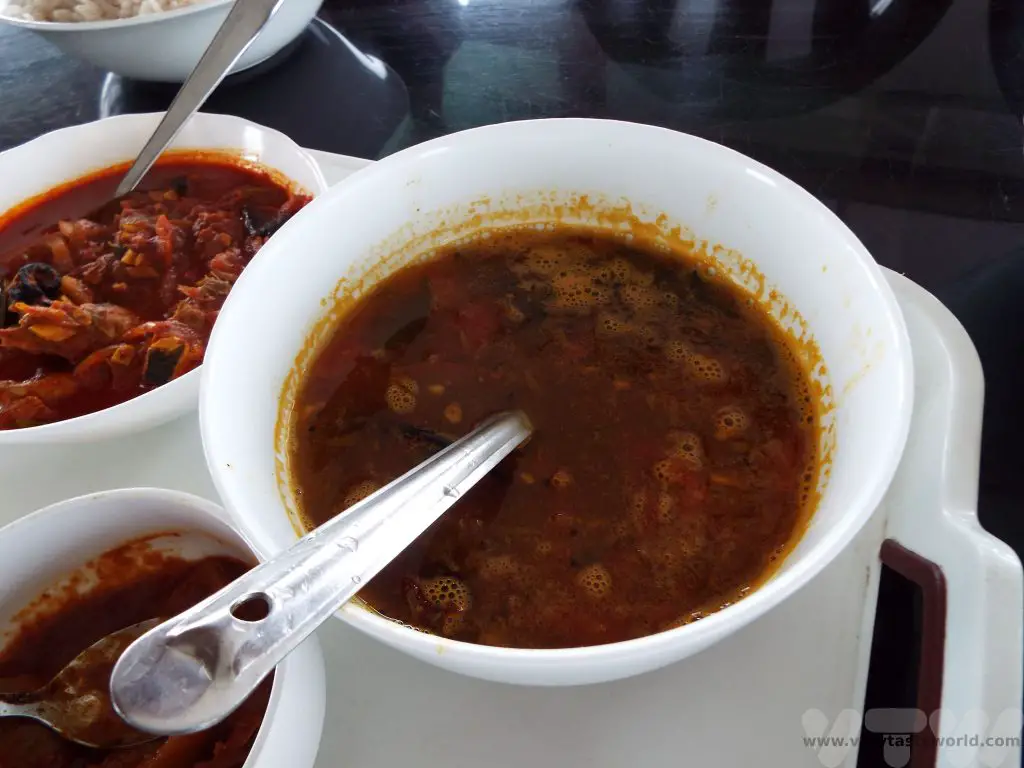
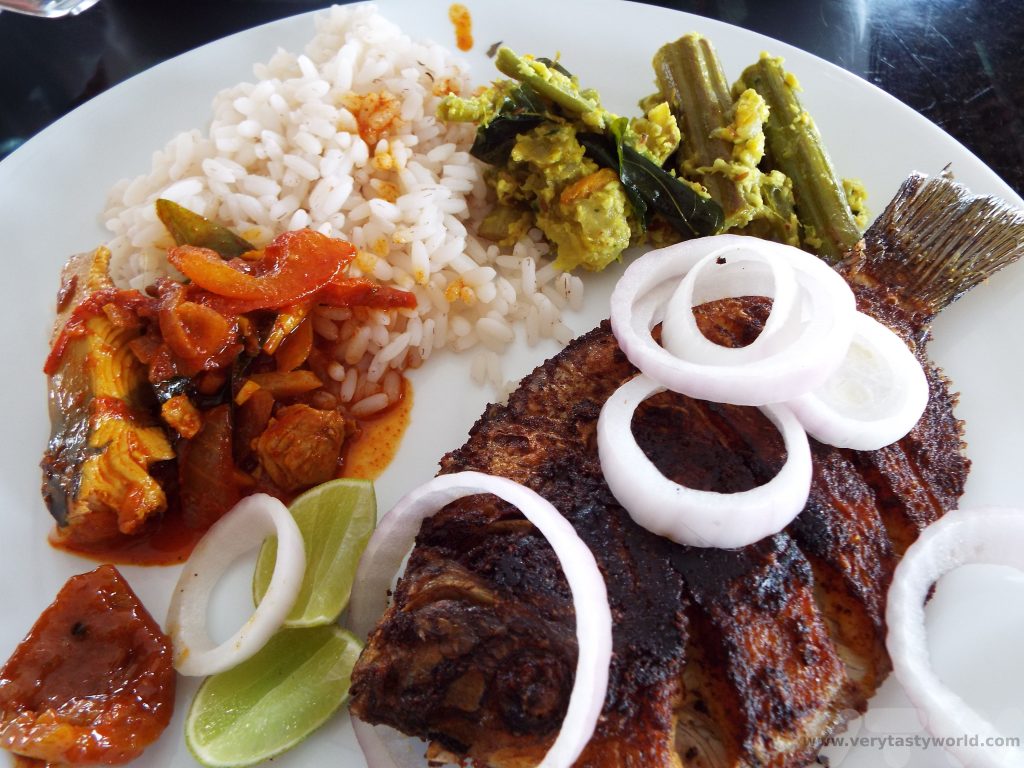
Munnar tea and a banana fritter were served for dessert.
We were visiting at the end of the Monsoon season so some rain was probably inevitable. But even a downpour couldn’t dampen spirits.
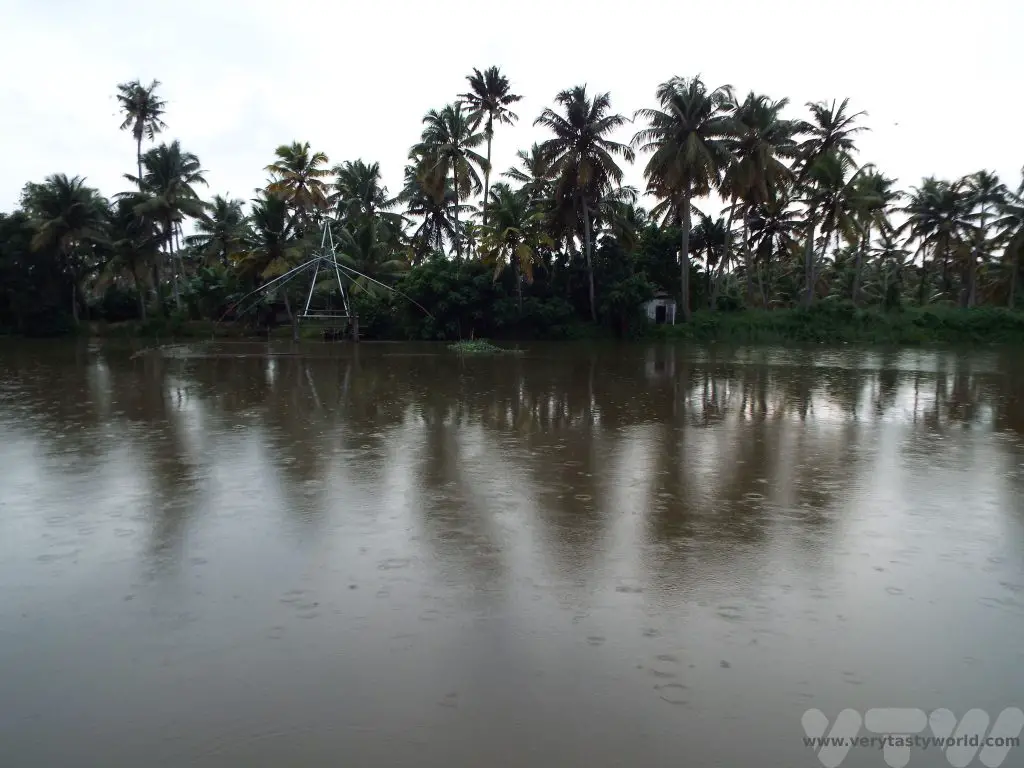
A lazy afternoon cruising the beautiful backwaters on a Kerala houseboat, with the addition of a delicious lunch, was a most refined way of spending an afternoon.
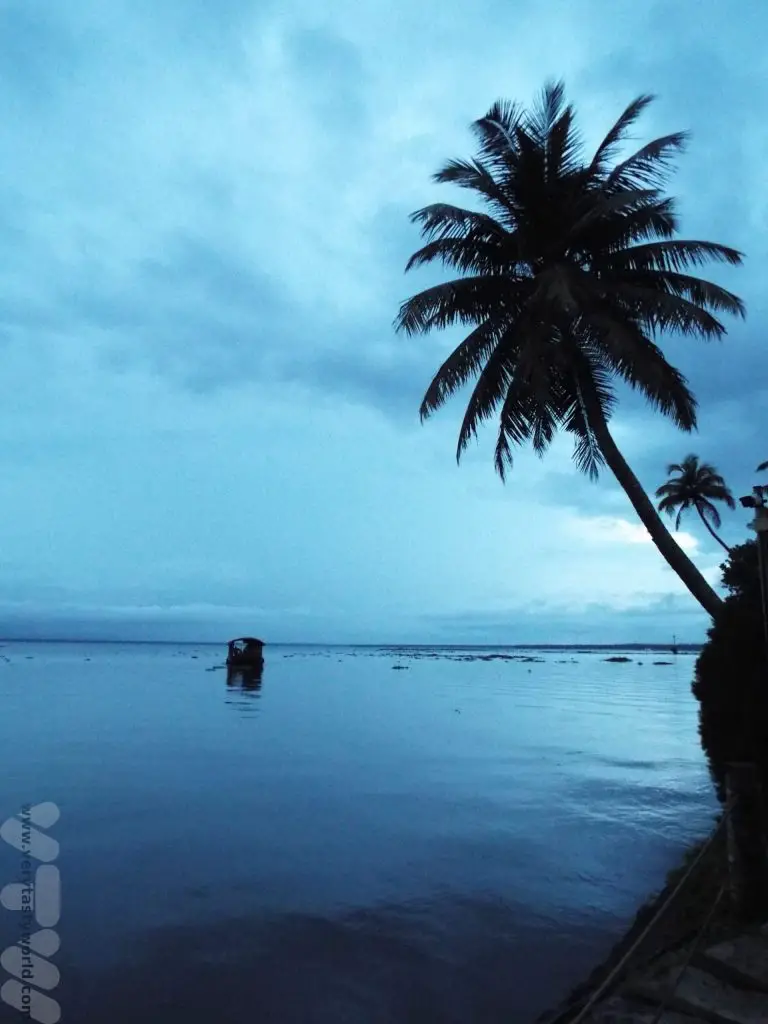
Related Posts You May Enjoy

